

The Ultimate 7 to 10 Days in the South of France Itinerary
Disclaimer: This article contains affiliate links. That means if you click a link and make a purchase, we may make a small commission. As an Amazon Associate we earn from qualifying purchases. For more information, see our privacy policy.

France is one of the most popular tourist destinations in Europe and, although many visitors will stay in Paris, plenty head down to to plan an itinerary for the south of France to soak up the sun on the pristine beaches, visit the stunning mountain ranges or learn about French culture on a city break.
There is a lot of diversity to see in the south of France, taking you to all of the above, or allowing you to pick and mix as you please.
Whichever stops you end up choosing, you’re sure to have a fantastic holiday surrounded by lush natural areas, historic locations or beautiful city centres, whetthr you have a week to spend, 10 days or more.
Table of Contents
How Many Days in the South of France?
To explore the whole of the south of France, from the Atlantic coast of Bayonne to the Mediterranean principality of Monaco , you would need at least two weeks to freely explore each wonderful town and city en route without rushing.
However, to enjoy the Mediterranean coastline and its neighbouring cities, towns and quaint villages, 10 days are ideal.
Although, if you want to concentrate your stops in one area, such as Languedoc-Roussillon or Provence-Alpes-Côte d’Azur, you can spend a very pleasant week in the region, without spending too much time on the road.
Part of the fun of a road trip is seeing the sights from a car window and stopping when your interest is piqued by a looming château or spectacular view.
So it can be a great idea to plan a few days of activities but leave yourselves a day or at least an afternoon here and there for travelling and taking in the scenery.
Equally, if you prefer not to drive and would rather take trains or buses, you can pack picnics for your journeys and enjoy the views; you may still be on the move rather than on your feet or a sun lounger, but it’s a great way to make the most of every moment of your holiday.
The itinerary outlined below covers a range of highlights to be found in the area. However, if you’re keen to dig deeper into various regions, make sure to check out our Provence itinerary or our French Riviera itinerary if you’ve already decided where you want to go.

Getting To & Around the South of France
Driving tends to be the best mode of transport to get around the south of France, as you’re then free to move around according to your own schedule, and there are many free (or at least cheap) places to park to be found in most cities and towns across the country.
All of the airports and city centres will have rental car companies where you can find various vehicles for reasonable prices, although it’s advisable to book in advance to guarantee you get the car of your choice.
The French have an expression that roughly translates to “there may not be work, but there are always roadworks”, so if you’re planning a south of France road trip itinerary outside of the summer months, it’s useful to have Google Maps open to have live traffic information for your journey so you can take alternative routes where necessary.
However, from June to September, as both French and foreign tourists travel around the country, there tend to be very few problems on the road, and you can almost guarantee excellent road surfaces to make your car journeys significantly more comfortable.
What’s more, the south of France has an excellent reputation for hitchhiking, so if you’re feeling adventurous and have a loose schedule for your trip to the south of France, this can be a great way of travelling around and getting some insider information about the hidden gems. Just make sure to follow safety precautions.
Getting to the south of France in the first place is also very simple as there are many airports located all along the south.
There are major airports in Toulouse, Montpellier, Marseille and Nice, so you can start your journey easily from any of these cities, although you can also arrive from the UK and other neighbouring European countries in the smaller cities of Carcassonne, Nîmes, Avignon, Aix-en-Provence and Toulon. You can book airport pickups here.
Each of these cities also has excellent public transportation, so you can visit much of the south of France by train. However, if you’d like to spend time in more rural villages and historic sites, there may not be trains and only a few buses each day, so having your own car is definitely advisable.
Most of the stops on our southern France itinerary will be well-known towns and cities that can easily be accessed by train or bus, but there are a couple of more out-of-the-way destinations that will be harder to reach without a car. So try to choose the best stops for your own route accordingly. You can view train and bus schedules here.

7 to 10 Day South of France Itinerary
From cities and towns to lakes and villages, this route will show you the best that France has to offer, without spending too long on the road so you can make the most of the bright sunshine, bustling streets and beautiful landscape.
Day 1 – Toulouse
Toulouse is a great place to start, as the airport has excellent connections to major European cities like London , Paris , Amsterdam and Munich , without being so busy that you spend your whole first day waiting at border control.
You can rent a car from the airport to start your road trip, or take the tram into the city for just a few euros and arrive in the centre ready to explore.
The centre of Toulouse has a wonderful large square lined on one side by the beautiful pink and white building Le Capitole that houses the town hall and the theatre of Toulouse.
This square is a great welcome into the city, leading off into winding streets full of boutiques and restaurants showing off the famous red brick of the region and the amazing cuisine.
You can wander around the city and discover the other incredible red brick structures like the Saint-Sernin Basilica and the Jacobins Convent with its enormous stained glass windows and occasional evening light show on the exterior façade. You can also organise a walking tour or a food tour if you want to learn more about the area from a guide.
The Canal du Midi also flows through Toulouse, as does the River Garonne, which provides a lovely place for an afternoon stroll, admiring the Occitan architecture, sunbathing on the steps leading to the river and sipping a cocktail on one of the floating bars. Plus, if you look closely under the Pont Neuf, you can spot one of James Colomina’s curious little red statues…
As a city, you can find plenty of places to stay within Toulouse from budget hotels and B&Bs to luxury apartments. Or, for a more rural gîte, you can head slightly further out of the city to enjoy nature, which is particularly beautiful around the Tarn and Garonne Rivers.

Where to Stay in Toulouse
Hôtel Héliot – Mid-range visitors to Toulouse will love this cool, 3-star hotel. Located in the centre of the city, they have a range of lovely rooms along with a great breakfast on offer in the morning.
Boutique Hotel SOCLO – This boutique hotel is an excellent option for those after a luxury stay in Toulouse. They have a range of plush rooms to choose from along with an excellent location for exploring all the city has to offer.
Appartements Design Hypercentre – If you’d prefer to have your own flat while in the South of France, then these apartments in Toulouse are a great choice. They come fully furnished and have a great, central location.
Not quite what you’re looking for? Click here to browse more Toulouse hotels!
Day 2 – Carcassonne
Moving further south from Toulouse, you come across the amazing walled city of Carcassonne – the perfect place for a day trip. You can visit independently or go on an organised trip such as this full-day tour or this full-day tour.
Having been occupied since 500 BCE, this land was transformed by the Romans into a walled city which was further enhanced in the 12th century to create the incredible 3 km of ramparts we see today.
You can see the 52 towers rising in the distance as you approach by car, train or plane and the inside of the city takes you back in time with its traditional French shops selling everything from sweets to swords.
In the summer, the city comes to life with jousting tournaments, battle reenactments, opportunities to learn how to write with a quill and ink and people dressed in traditional mediaeval clothing wandering around the city. It’s a great place to visit with the family, but equally interesting for anyone with an interest in history, architecture or French culture.
The highlight of Carcassonne is the mediaeval city, however, there is a more modern town on the other side of the river which has hotels, restaurants and some apartments to rent, so if you haven’t brought your campervan, this is an excellent place to stay.

Day 3 – Montpellier
Moving further south still, we get to the real entrance of the south of France: Montpellier . Located on the Mediterranean coast, the amazing city has everything, from Roman ruins and neoclassical architecture to beaches, parks and exquisite gastronomy.
Visitors can happily stroll around the streets of the city centre, coming across the main square La Comedie, named after the huge theatre on one end, where the locals gather for entertainment, or simply to pass through on their way to work.
A short walk will take you to the magnificent 17th-century Triumphal Arch and stunning 18th-century tiered aqueduct that’s still working to supply the city’s fountains with water.
If that’s not enough to entice you, Montpellier has a fantastic botanical garden, which is the oldest in France, as well as plenty of murals and trompe d’œils dotted around the city streets, making for a wonderful walking tour. You can also easily take the tram around the city if you don’t feel like walking too far, as well as to the enormous beach with wild flamingos nearby.
Montpellier is a large city and has a very popular university so you can find activities for young people around every corner, as well as cheap hotels and apartments so everyone can have the chance to explore this amazing coastal city. Even if you can only stay for a week, make sure you stop by Montpellier – you won’t be disappointed!

Where to Stay in Montpellier
Hôtel Royal – This 3-star hotel in the centre of Montpellier is a fantastic choice for those looking for a central place to stay in this French city. They have a range of chic rooms to choose from along with breakfast on offer each morning.
Hôtel Oceania Le Métropole – This chic hotel is an excellent choice for those after a luxury option while staying in Montpellier. They have an excellent, central location along with an array of plush rooms plus many other amenities available.
Appart’City Confort Montpellier Saint Roch – If you’re keen for a self-catering option while exploring the south of France, then these apartments are a great choice. They have an array of fully-furnished flats all within easy access of all Montpellier has to offer.
Not quite what you’re looking for? Click here to browse more Montpellier hotels!
Day 4 – Arles
Carcassonne and Montpellier were simply appetisers for history buffs, who can now rub their hands in glee at our next destination, the fabulous city of Arles . Arles is a perfectly sized town to wander around the streets and get a glimpse of the Provençal architecture and Roman ruins, namely the spectacular amphitheatre, Arènes d’Arles.
This 20,000 seater, two-tiered arena was built in 90 CE for gladiator fights and chariot races to entertain the locals and had towers added during the mediaeval era and looks unbelievably incredible today.
You can easily spend a few hours learning about the history of the structure or even watching a performance as it now hosts live music, bullfighting and other events in Summer, before heading off to experience the city’s other claim to fame: van Gogh’s house.
Having lived in the city for just a year, Vincent van Gogh created hundreds of artworks during his stay, having been greatly inspired by the natural beauty and pastel colours of the houses. Unfortunately, the house where he resided (and cut off his ear) was destroyed during the Second World War, however, you can visit a museum dedicated to the artist nearby.
Don’t miss out on the amazing and spooky Alyscamps either, with its incredible Gothic sarcophagi on either side of the ancient road leading down to a 12th-century church.
There aren’t lots of hotels within Arles city centre, however, with the Rhône River flowing through the landscape, there are some wonderful campsites and gîtes surrounded by countryside just five minutes driving out of the city. It is also very feasible to continue onto Marseille for the next few nights.

Where to Stay in Marseille
Hôtel Life Marseille VP – This 3-star hotel in the centre of Marseille is a great option for mid-range visitors. There are several bright and modern rooms on offer, a fab breakfast each morning and room service available.
La Residence Du Vieux Port – Located in the old port area of Marseille, this high-end hotel is great for luxury travellers. There are lots of room types for both couples and families, a fitness centre and a restaurant on site.
Vertigo Vieux-Port – This cool, centrally located hostel is great for backpackers looking for a budget-friendly and social option. There are dorms and privates available and good common areas to enjoy.
Not quite what you’re looking for? Click here to browse more Marseille hotels!
Day 5 – Marseille
There’s not much to be said about the oldest and third-largest city in France that hasn’t already been said, and all of the great things you’ve heard about Marseille are true. Founded by the Greeks over 2600 years ago, the port city has seen a great deal of migration from all across the world making it a spectacularly diverse melting pot of architecture, cuisine, culture and religion.
The Basilique Notre-Dame de la Garde is a must-see place within the city, and fortunately, you can see it from all around Marseille as it towers high above the otherwise quite flat city.
On the opposite side of Marseille, close to the train station is the equally spectacular but less well-known black and white striped Cathedrale La Major, which looks particularly magnificent at sunrise when the daylight causes the domed roof to glow orange.
A short distance away is the famous fish market and port of Marseille where you can see the fishermen selling their catches, as they’ve done for centuries, and take amazing photographs with the beautiful boats in the fore and the basilica in the background.
It’s possible to spend a few days in Marseille and not get the chance to see everything, so it’s a great destination for a weekend break, but even if you’ve got 10 days in the area, you’ve got to spare one for Marseille – even if it’s just to eat seafood (or take a food tour ) and enjoy the views.
Similar to other cities in France, you can find many hotels across the city for all kinds of budgets, as well as smaller B&Bs in the suburbs.
But there’s great transportation in the city, so rather than driving in, it’s a good idea to leave your car parked by your accommodation and just take a bus in and out of the city when you need to.

Day 6 – Gorges du Verdon
So far each destination has been easily reachable by public transport, however, it’s more difficult to reach our next stop if you’re seeing the south of France by train. But, the Gorges du Verdon is one of the most breathtaking locations in the whole of France, so if possible, you have to include it on your itinerary.
This 25 km long canyon has been cut out of limestone by the brilliant turquoise Verdon River that reaches down 700 metres at its deepest and is a popular place to take a pedalo or kayak, or go hiking and even rock climbing.
You can travel through the gorge into the Sainte-Croix Lake which was created in the 1970s by flooding the small village of Les Salles-sur-Verdon, later rebuilt on the banks of the lake. You can stop here for lunch in any number of delightful restaurants with mesmerising lakeside views, or bring a picnic with you to enjoy a full day out exploring the canyon and surrounding lakes.
There are several hotels in the village of Les Salles-sur-Verdon and near the small village of Boulogne, on the south side of the gorges, and you can find plenty of campsites surrounding the Sainte-Croix Lake, some with cabins that you can rent if you haven’t got your own tent.
But be wary that the Gorges du Verdon is a very popular place to stay in Summer, so you’ll need to book your accommodation well in advance. Alternatively, continue onto Cannes for the evening, where you can be based for the next few days of this itinerary. There are also a number of other places to stay on the French Riviera that are great choices.
For those who don’t want to make the drive out to the gorge, there are other great options available for this day. You could, for instance, spend another day exploring Marseille. You could also opt to take a day trip to the lavender fields and take in a hilltop village in Provence.
Another great option would be to visit the Calanques du Marseille and the village of Cassis for a gorgeous area very close to the city.

Where to Stay in Cannes
Villa Claudia Hotel Cannes – If you’re on a mid-range budget while in Cannes, then this hotel is a good choice. It has a good location for exploring the city, breakfast is available in the mornings and there is a great garden to enjoy.
Hotel Splendid – This hotel is a fantastic luxury option for those looking to live the high life while on the French Riviera. They have a myriad of incredible rooms to choose from along with a great location for exploring the city and area.
La Bastide de l’Oliveraie – Those after a bit of an alternative accommodation option will love these plush suites in Cannes. They have an excellent, central location and there are plenty of rooms and suites available to choose from.
Not quite what you’re looking for? Click here to browse more Cannes hotels!
Day 7 – Saint-Raphaël
Back down to the Mediterranean coast, between the picturesque but incredibly busy town of St Tropez and the large and equally popular city of Cannes , is the small yet delightful town of Saint-Raphaël.
With a small harbour, a huge cathedral and beautiful beaches, this lovely little town is a great place to spend a relaxing final day of a south of France itinerary if you’re on a week-long holiday.
The charming town is a wonderful place to wander around, perusing the little shops and soaking up the sun, but during the Summer, the town really comes to life after 7.30 pm with its famous night market! This is much different than market day in other Provençal towns.
Stalls line the boardwalk all evening, selling local products from traditional Provençal soaps and perfumes to sweet treats and jewellery, so after you’ve had your traditional fish soup, anchovy paste, stuffed peppers or Bouillabaisse, you can’t miss out on a wander around the market to bring your 7 days in the south of France to a close.
If you’ve got time, you’ve also got to check out the superb amphitheatre of Fréjus, just a ten-minute drive from Saint-Raphaël centre.
Saint-Raphaël doesn’t have its own airport, however, it’s just a 45-minute drive from Cannes Airport, or 1 hour along the coastal road so you can say your farewells to the Côte d’Azur as you head home.
If you’re staying on, you can find many different hotels and apartments to stay in for the night all along the coast, although as we head into the more glamorous coastline, you’ll notice the prices can jump up quite a bit from other properties on our itinerary.

Day 8 – Valbonne
For your eighth day in the south of France, it’s time to head away from the coastal towns and cities to experience life in a small village, and there’s none better than Valbonne.
Just north of Cannes and Antibes, you can easily reach Valbonne by car from Saint-Raphaël, or if you’re travelling on public transport you can take a bus from Cannes to Valbonne for just a few euros.
This little village may lack big landmarks and resorts, but it’s bursting with character, with charming cobbled streets leading you around the village, from quaint squares to historic churches.
This style of architecture and tiny community nestled into a valley surrounded by wilderness is archetypal of the area, so a must-visit place for anyone looking to get away from the busy cities and tourist-filled beaches to get a glimpse into the real south of France.
There are a number of wonderful places to eat, including Auberges, serving traditional dishes using produce sourced directly from the surrounding countryside to heighten your experience of rural French life. You can stay in the village, but there are only two hotels, so you’ll want to book well in advance if you want to stay overnight.
However, the large city of Cannes is not far away so there will be much more choice of hotels, as well as gîtes and B&Bs dotted around the countryside if you prefer to stay in a more rural location.

Day 9 – Nice
After a day in the countryside, it’s time to get back into the city, and one of the French Riviera’s most unmissable cities has to be Nice .
With its bustling city centre full of designer shops, boutiques, restaurants, bars and nightclubs, you won’t be short of things to do as you walk from street to street, under the intriguing street lamps. But Nice isn’t your average city.
As you head out of the modern centre, you can come across the delightful old town, with more traditional boutiques and eateries, and you can even visit one of the first Russian Orthodox Cathedrals built in France, the beautiful Cathédrale Saint-Nicolas de Nice.
With its intriguing shape, red brick exterior, turquoise domed roofs and pointed turrets, it may be small but it’s well worth visiting while you’re in Nice – just remember to wear long sleeves and trousers to be allowed entry.
You can also walk up the Colline du Château to see the ruins of an old castle and a beautiful waterfall as well as have incredible views over the whole of Nice.
There’s plenty to do in the city for all ages and interests, as well as accommodation for all budgets in the city centre and further out in the suburbs. You can also organise a walking tour or food tour if you prefer to explore with a guide.

Where to Stay in Nice
Nice Garden Hotel – This is a great mid-range hotel in Nice to round out your south of France trip. They have a number of lovely rooms to choose from along with a great location within easy reach of the Promenade des Anglais.
Palais Saleya Boutique hôtel – If you’re looking for a luxury hotel while in Nice, then you can’t go wrong with this lovely place. They have a number of delightful rooms to choose from along with plenty of amenities to ensure you have a great stay.
Aparthotel AMMI Vieux Nice – Located in Old Nice, these apartments are a wonderful choice for those keen for their own space in this coastal metropolis. They have a number of great flats, all equipped with everything you may need for your stay.
Not quite what you’re looking for? Click here to browse more Nice hotels!
Day 10 – Èze
Nice Airport is the best place to fly out of the south of France if you’ve come along the south coast from west to east, and fortunately, it’s not far from the wonderful village of Èze, which makes for a remarkably relaxing final day of your holiday.
Simply wander around the picturesque village with cobbled streets and stone houses, stunning views over the Mediterranean and the nearby millionaire’s playground that is Monaco.
Or, take a free tour of the renowned Fragonard perfume factory before heading to a cliffside restaurant to enjoy your final plat du jour and a crisp local vin blanc before heading home.

Have More Time?
If you have more than 10 days , there are plenty of other highlights to stop in en route.
Stop in one of the only papal seats outside the Vatican in Avignon to explore the Pope’s Palace, the famous destroyed bridge Le Pont d’Avignon and the nearby Pont du Gard for a day before visiting Arles, or continue your journey along the French Riviera to the flash principality of Monaco to see how the other half live or try your luck in the famous casino.
Or if Roman history piques your interest, stop by the incredible city of Nîmes near Arles to see a 2,000-year-old Roman amphitheatre that gives Arles a run for its money, as well as its perfectly preserved white Roman temple La Maison Carrée.
En route from Carcassonne to Montpellier, you can also stop for a day of hiking and art in the community of Mayronnes to walk along the impressive 6 km long sculpture trail – but bring plenty of water with you as it can get very hot, especially in the height of summer.

Whether you take a road trip or see the south of France by train, there is plenty to do across the whole region for all interests. Over a week or 10 days in the south of France, you’ll get to experience some amazing food, architecture and natural areas that will surely have you aching to get back as soon as your feet are off French soil.
Are you visiting the south of France? Have any questions about this itinerary? Let us know in the comments!

Related Posts:

The Perfect 2 to 3 Days in Nice Itinerary

10 Best Places to Stay in the French Riviera

The Perfect 2 to 3 Days in Champagne Itinerary

About Brittany Scott-Gunfield
Brittany is a writer for The World Was Here First. Originally from Colchester, England, she is slowly but surely travelling the world as a digital nomad. She loves to hike around different landscapes and has a deep love for travelling around France (and elsewhere in Europe).
Leave a Comment Cancel reply

Only South of France Road Trip Itinerary in 7 Days You’ll Ever Need
Some posts on this site contain affiliate links, meaning if you book or buy something through one of these links, I may earn a small commission (at no additional cost to you!). Read the full disclosure policy here .
Share it here!
The South of France is simply perfection. It is a destination that truly entices your senses. Hints of lavender and handmade soap fill the air, tastes of cheeses and jams at the market delight the tastebuds, and even the views of hilltop villages and sun-drenched beaches will leave you breathless. And the best way to experience it is with a South of France road trip itinerary!
If you’re currently planning a trip to the South of France, you’ve probably realized by now that this area of the world has SO much to offer. This definitely makes creating a plan for 7 days in Provence tricky.
However, after countless hours of research and dreaming, I have created a perfect 7-day South of France itinerary including stops in Avignon, the villages of the Luberon, Aix-en-Provence, Cassis, Cannes, and Nice that you’re 100% going to love. How do I know that?
Well, I was just there and enjoyed the heck out of it. And yes, it is all super doable in just 7 days. So sit back, relax, dream of sunny days and rosé, and let’s get into it.
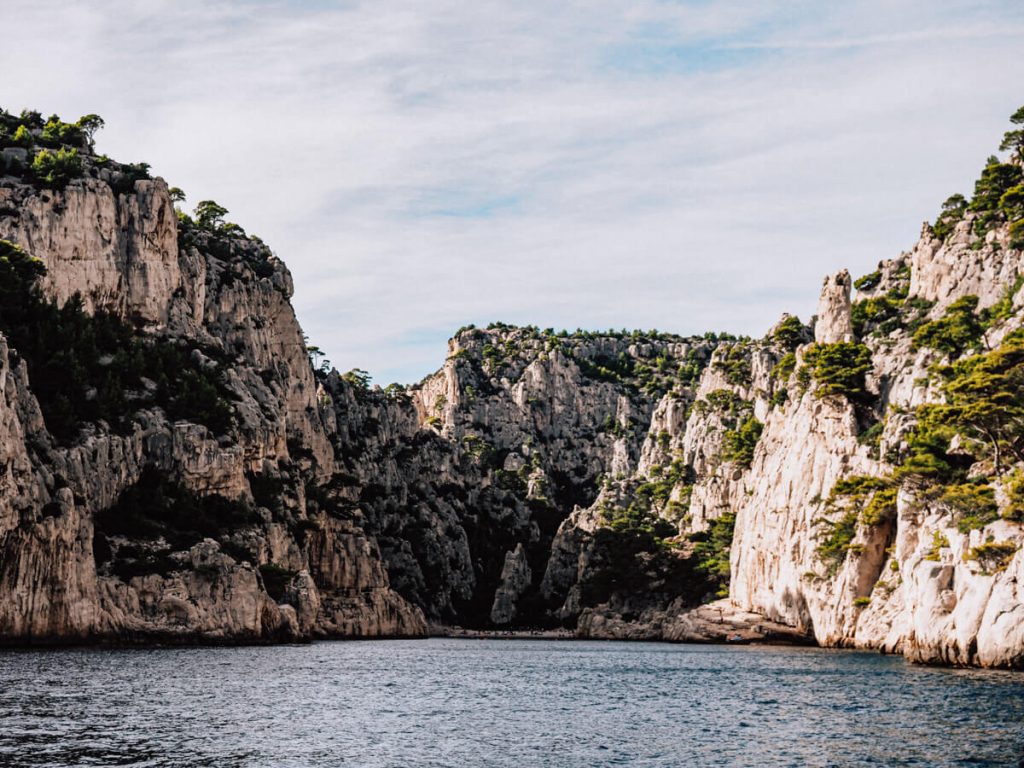
What is Provence?
You’ve likely noticed above that I have used both “South of France” and “Provence” interchangeably. Well, Provence, or Provence-Alpes-Côte d’Azur, is a region in the southeast of France well-known for its Mediterranean beaches and lavender fields.
It is also referred to as the South of France, especially among English speakers, even though it is not the only region that is in the south.
Now, to break it down further, Provence is made up of 6 departments, which are administrative departments. These include Alpes-de-Haute-Provence, Hautes-Alpes, Alpes-Maritimes, Bouches-du-Rhône, Var, and Vaucluse.
In this Southern France itinerary, we’ll be visiting Vaucluse, Bouches-du-Rhône, and Alpes-Maritimes departments.
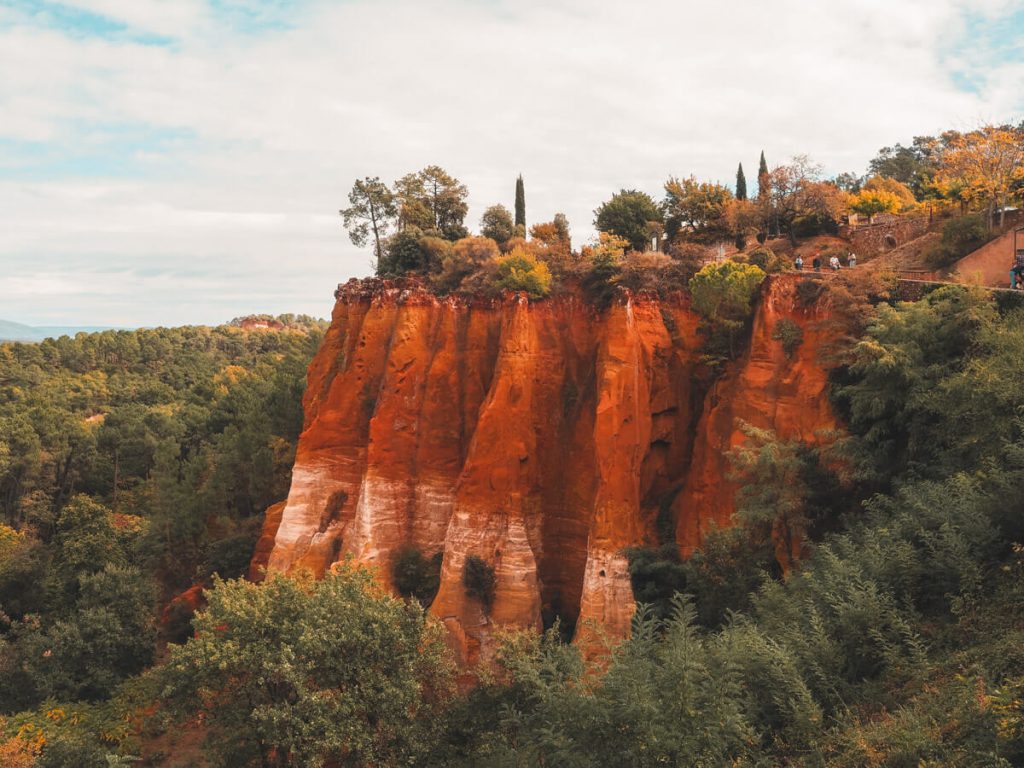
Summary of the Ultimate South of France Itinerary in 7 Days
For a quick reference guide, here is a breakdown of where to go during a South of France road trip!
- Days 1-2: Avignon & Chateaunuef-du-Pape
- Day 3: Drive the Villages of the Luberon to Aix-en-Provence
- Day 4: Aix-en-Provence and Cassis
- Days 5-6: Cannes
- Day 7: Nice
For more details of all the things to do in the best Provence itinerary, keep reading below!
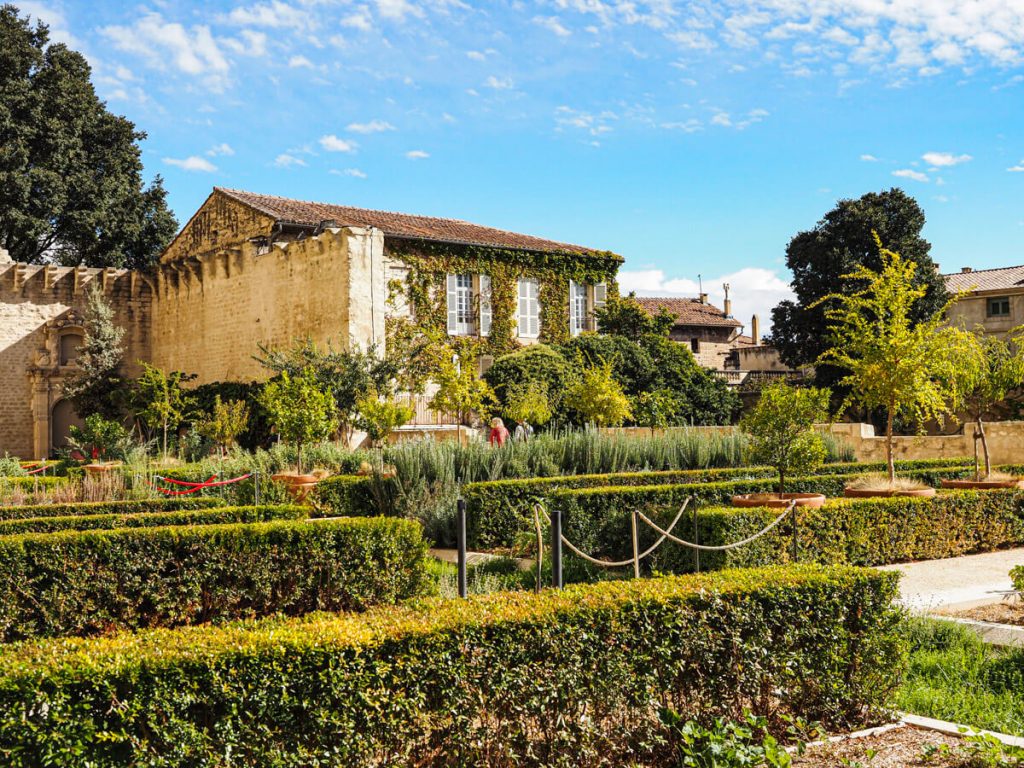
Only 7-Day South of France Road Trip Itinerary You’ll Ever Need
From charming villages to a chilled-out beach day, let’s talk about how to have the best South of France Itinerary in 7 days!
Days 1-2: Avignon and Châteauneuf-du-Pape

To start your Southern France itinerary, Avignon is always a great idea . Steeped in history, this city is a lovely spot to base yourself for exploring the town and nearby area.
Then, because you’re in the Southern Rhône wine region, you’ve got to visit Chateauneuf-du-Pape!
Day 1: Avignon & Pont du Gard
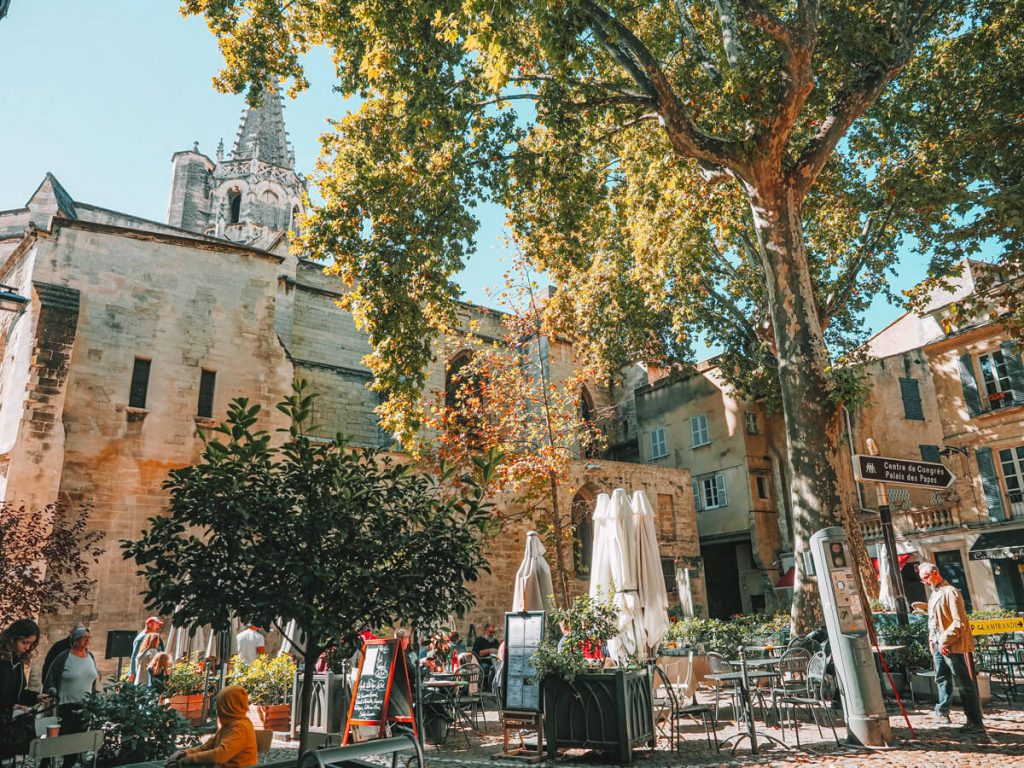
For your first day, arrive in Avignon . Now, the easiest way to get to Avignon is via train. So, depending on where you’re coming from, you can easily take the train from Marseille or Paris. We spent 2 days in Paris beforehand, so we took the 2.5-hour train to Avignon.
PS- Avignon is a great weekend trip from Paris too!
FYI- There are 2 main train stations in Avignon. The Avignon Centre Railway Station is just outside the city center. The Avignon TGV Railway Station is an 11-minute drive southwest of the city.
This is super important to know because you’ll be renting a car in Avignon for your South of France road trip itinerary, so choosing the right station is key. Most car rental companies are located at the TGV Railway Station.

Trust me, I made this mistake and had to Uber over to the correct station to get my car.
Alright, once you’ve picked up your rental car, it is time to head into Avignon!
On your first day in Avignon, the best thing to do is to wander around the old city. Have lunch at Cafe Saint-Jean with views of the square and the lovely Saint-Jean Tower.
Pop into shops around the old city, including Autrefois , with local treats like nougat and callisons, and explore squares like the Place de l’Horloge , before hopping back into your car to visit Pont du Gard .
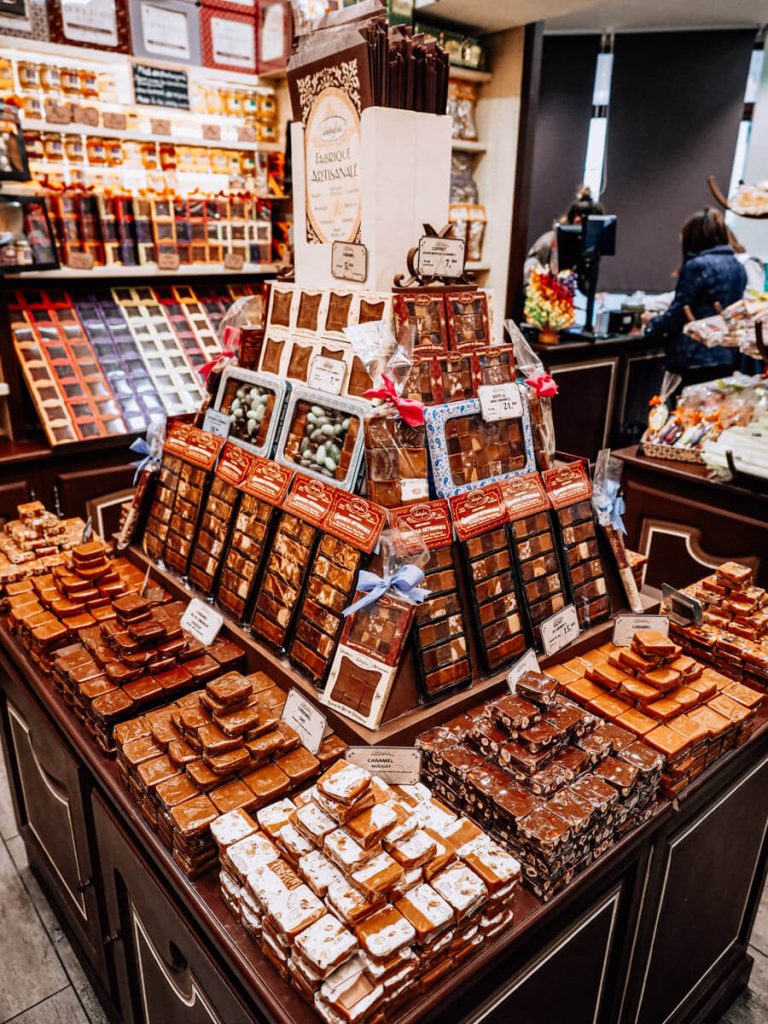
Pont du Gard is about a 30-minute drive from Avignon and is a must-see. This is an ancient Roman aqueduct that crosses the Gardon River. Step back through time at this first-century bridge that was used to carry water to Nîmes.
This is a stunning area where you could spend a couple of hours walking down by the river, watching the kayakers float by, or you can even cross the bridge!
Okay, you aren’t actually walking on the ancient structure, but rather on another bridge next to it. But you certainly get close!
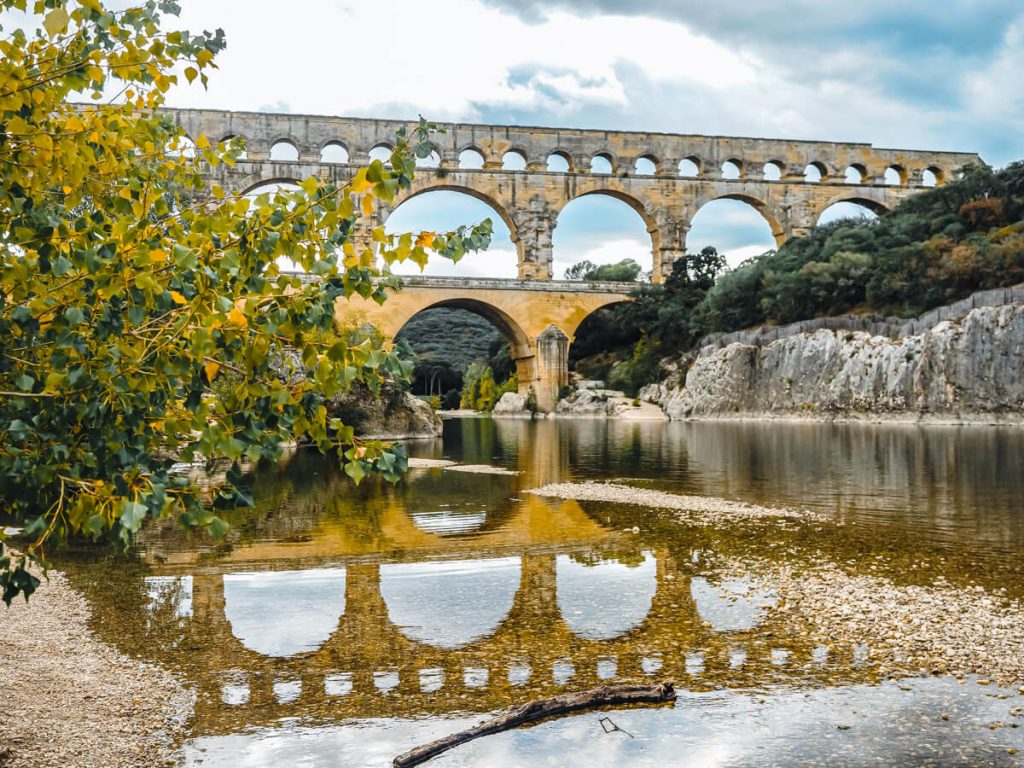
There are also ample hiking trails in the area and even a prehistoric cave. It is well worth spending the rest of the afternoon here before driving back to Avignon for dinner and drinks.
And for dinner and drinks, definitely head to La Mirande . This 5-star luxury hotel is like stepping right into the Downtown Abbey drawing room. At least that is what it feels like when you have a seat at the salon with a handcrafted cocktail.
Start with some dinner here at La Salle à Manger . Yes, you could eat at their Michelin-starred restaurant instead for their tasting menu, but if you don’t want to spend too much money, you can enjoy eating à la carte from La Salle à Manger. Trust me, it is just as delicious.
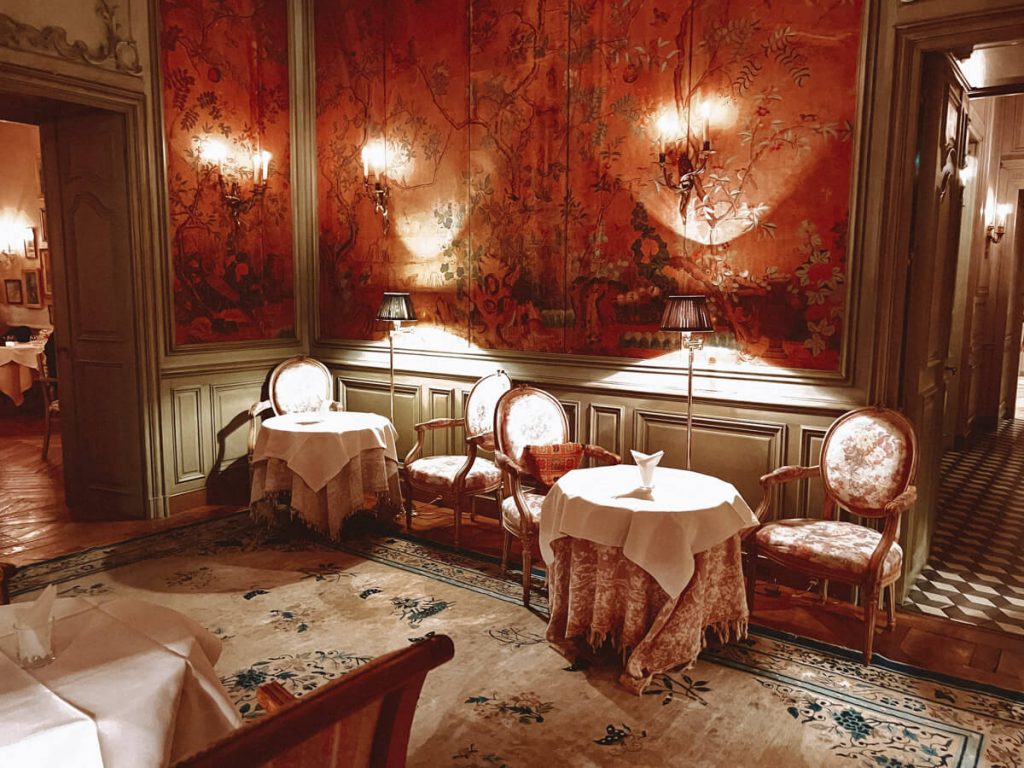
Enjoy onion soup and delicious mackerel before heading to the bar post-dinner.
The bar is the coziest spot for a drink with paintings on the wall, plush, 19th-century couches, and even a little fireplace. It is a delightful place for a martini and to wrap up the first day of your 1 week in the South of France.

Day 2: Avignon & Châteauneuf-du-Pape
Fun fact: did you know that the popes used to live in Avignon? From 1309-1376 the popes lived in Avignon instead of Rome due to civil unrest.
So, as you can imagine, they needed a place to stay. That is when the Pope’s Palace came to be. Construction began in 1335 and today you can visit this magnificent palace.
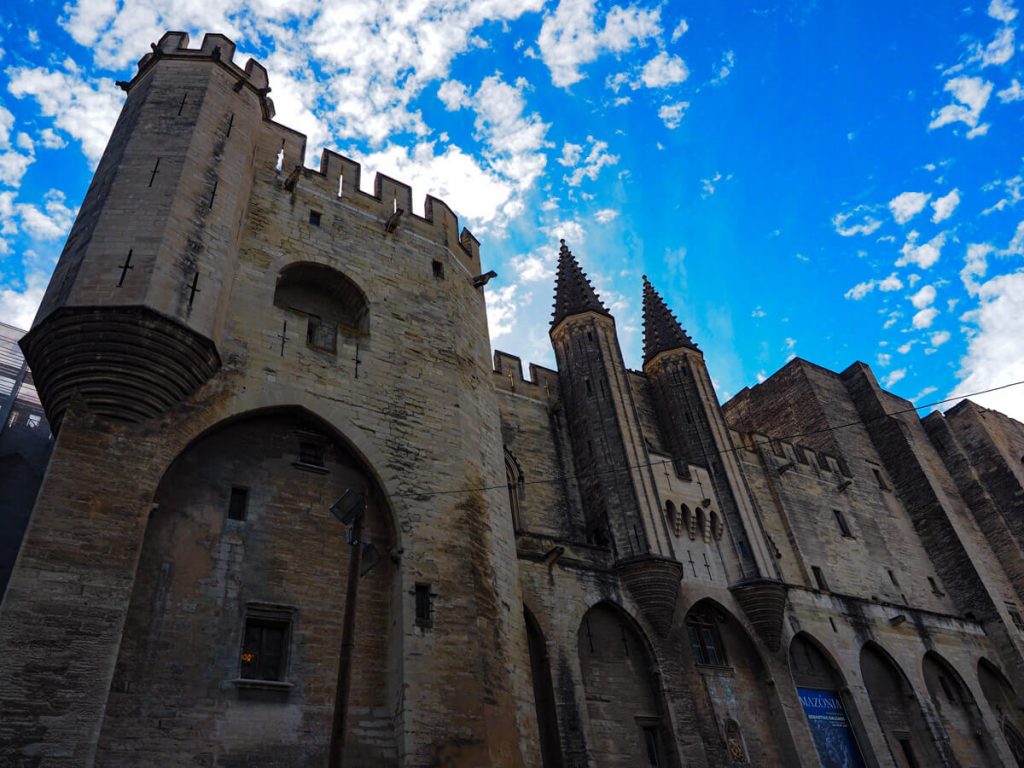
I actually recommend purchasing a pass that includes the Pont de Benezet (or the Pont d’Avignon), Pope’s Palace , and the gardens. Then you can spend a few hours exploring these places. We purchased our passes at the Pont de Benezet.

After that, head to Les Halles to pick up provisions for dinner or some lunch. This massive indoor market has everything from meats and cheeses to fresh produce and wine.
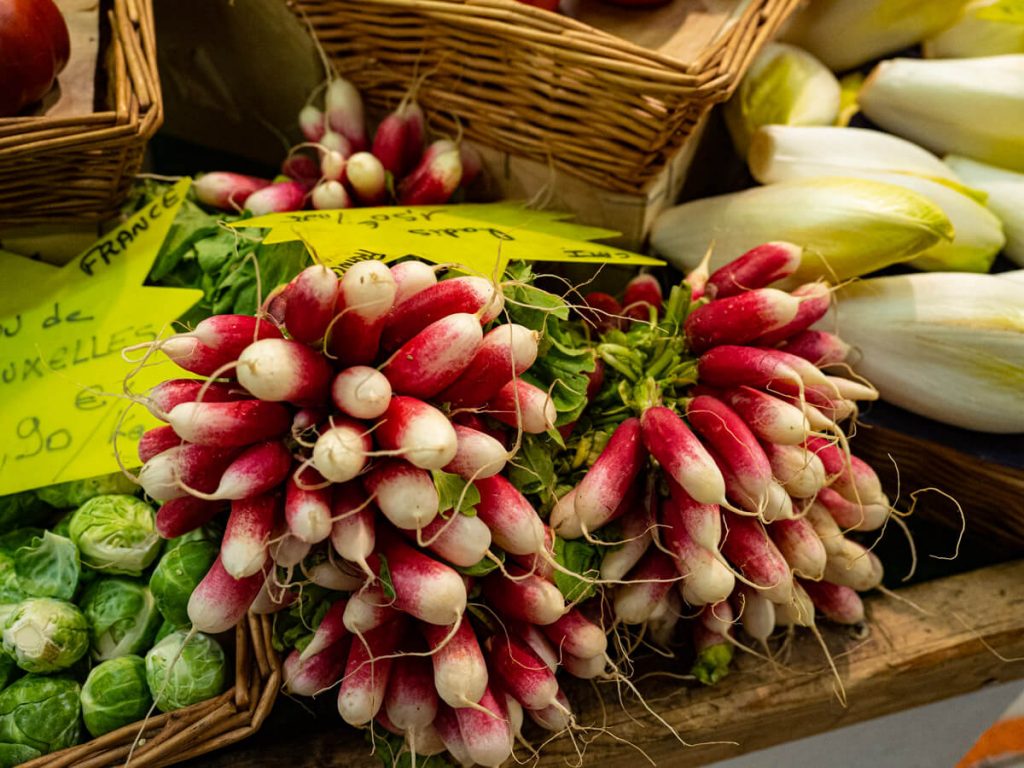
Then, in the afternoon, it is time to get picked up for your wine tour of Chateauneuf-du-Pape .
We loved this tour as it visits 2 wineries and you learn a lot about the making of this wine, the wine of this region, and more.
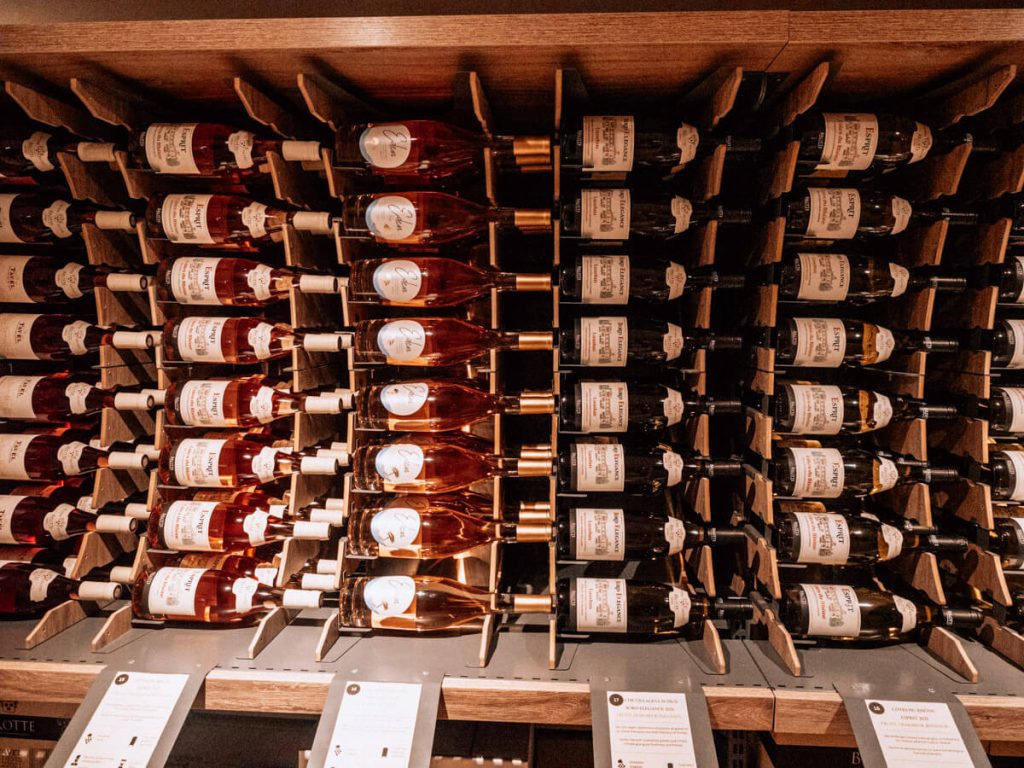
Plus, Chateauneuf-du-Pape literally translates to the New Castle of the Pope. It is named after the castle built for the second of the popes in Avignon: Pope John XII.
During the tour, you’ll visit a couple of wineries as well as visit the ruins of the castle. It wraps up that evening, and then I recommend winding down your day with some cheese and wine that you picked up at the market earlier.
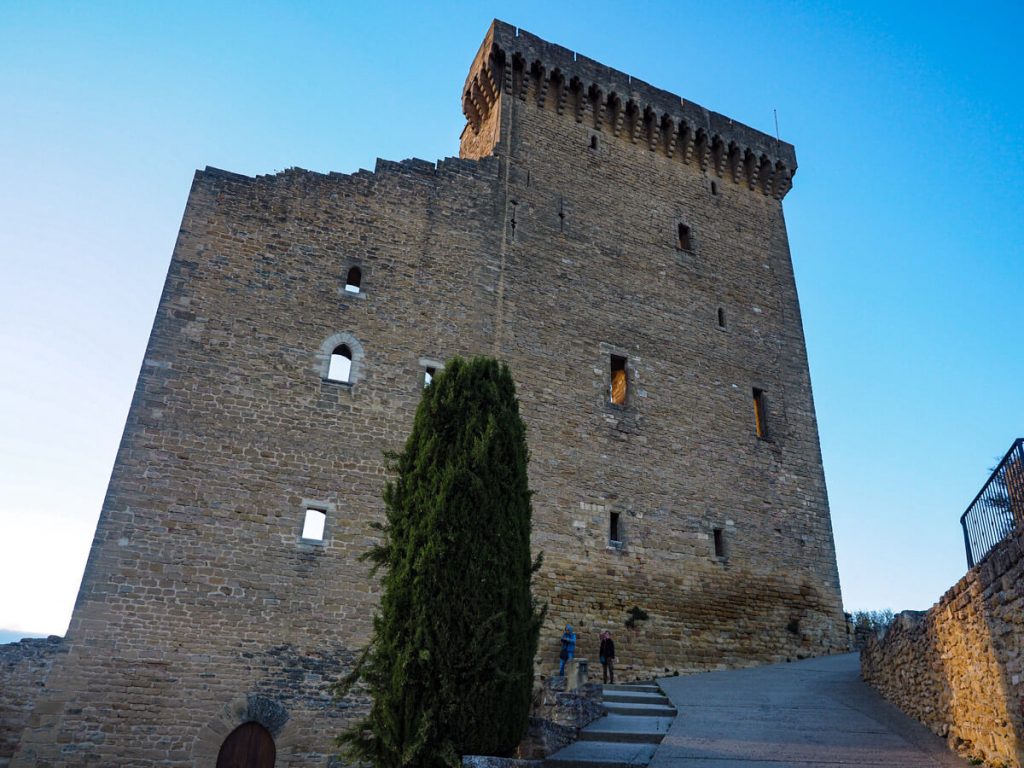
Where to Stay in Avignon:
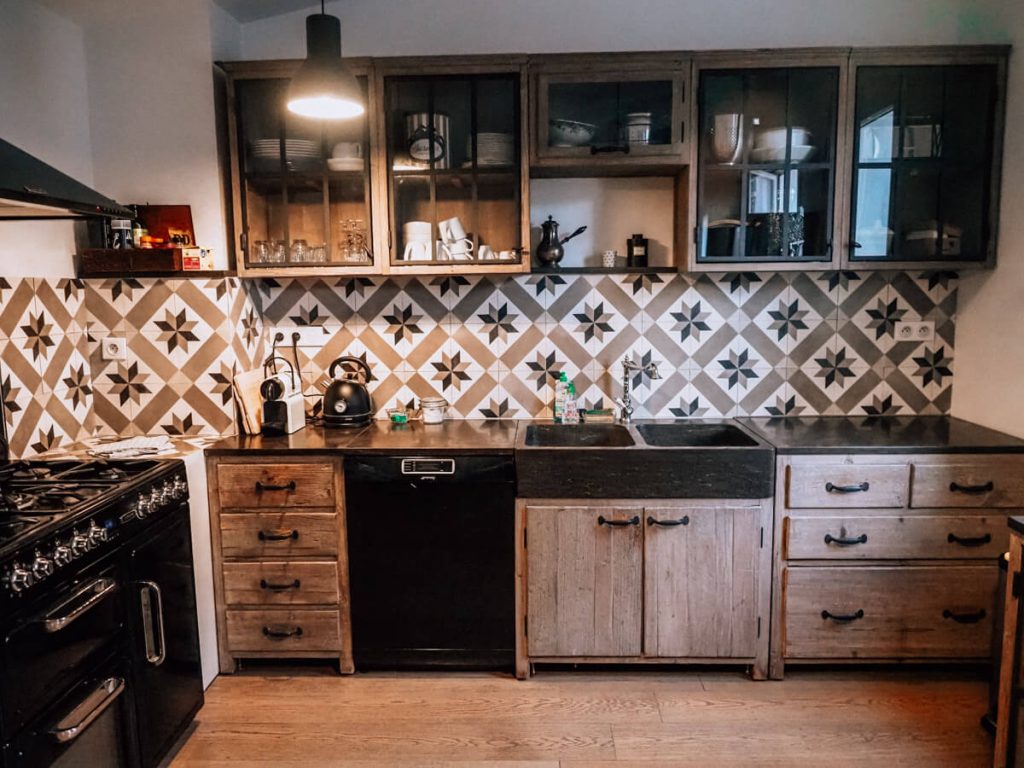
There are so many great places to stay in Avignon. We stayed in this Airbnb complete with its own kitchen, comfortable bedroom, and a washer/dryer. However, if you wish to stay at a hotel, these are great options:
Budget: Regina Hotel
Mid-Range: Aux Augustins
Luxury: Hotel La Mirande
Day 3 of Your Provence Itinerary in 7 Days: Driving the Villages of the Luberon
Today is a transition day from Avignon to Aix-en-Provence. And while you could just drive straight to the next destination, now is the perfect time to really take in the villages of the Luberon during your 7-day Provence road trip!
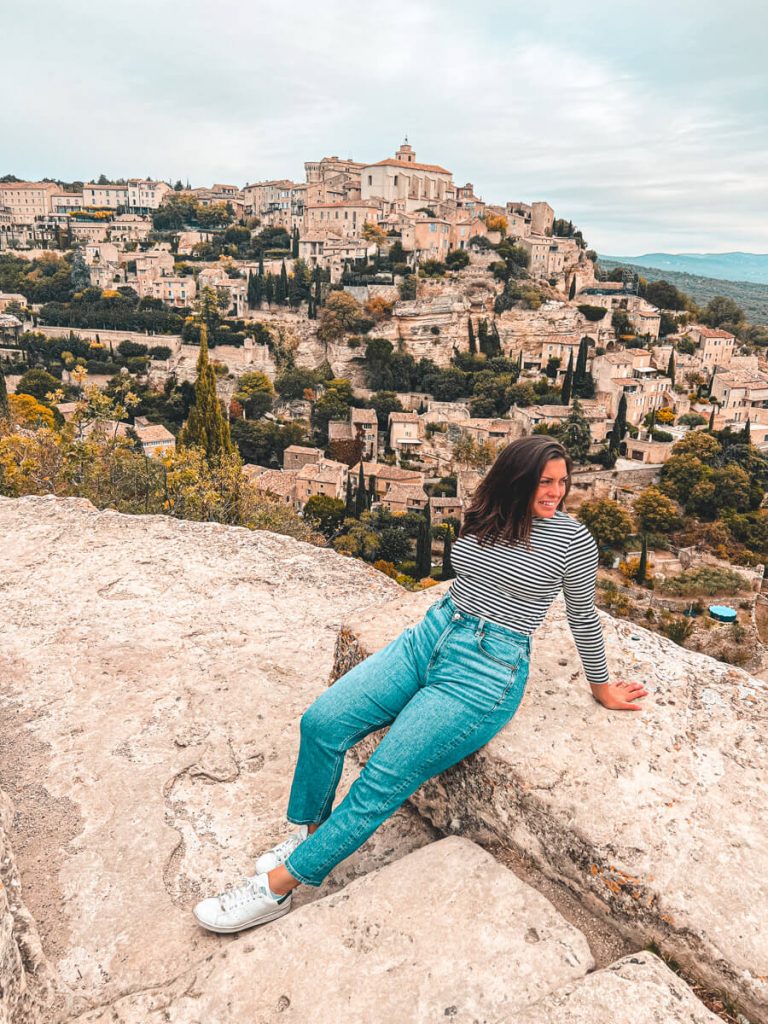
So grab a quick coffee and croissant before driving through the Luberon Regional Natural Park to see some of the most beautiful villages in France. Seriously, there is even an award called “Les Plus Beaux Villages de France.” A couple of towns that you’re visiting today have this award.
Of course, this area is also well-known for its lavender fields that bloom from mid-June through mid-July. So if you come during this period, expect some more crowds but also stunning lavender.
But, even outside of the lavender season, this area is gorgeous. We visited in early October and had a great time driving through dreamy villages and enjoying a local market.
Now there are plenty of stunning villages to drive through here, but, a must-see spot has to be Senanque Abbey . This abbey was founded in 1148 AD by Cistercian monks and is still a working abbey.
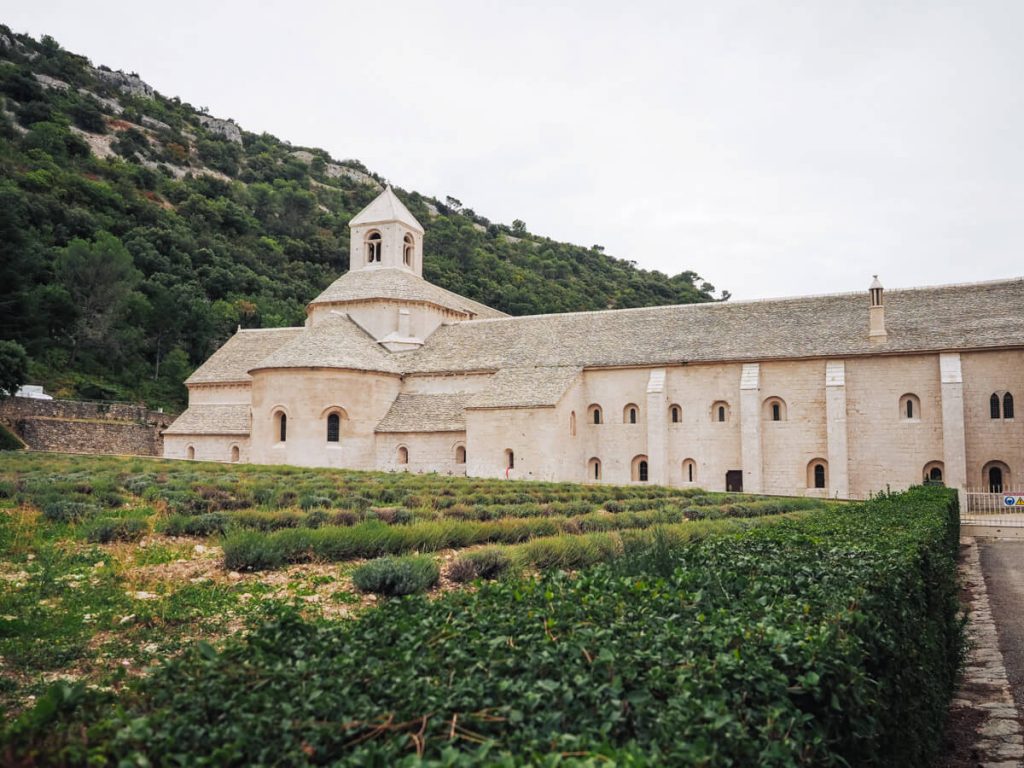
It is gorgeous to visit on its own, but again, during the lavender season, this place really shines. It is surrounded by lavender.
After the abbey, definitely check out Gordes . There is a lovely lookout spot for taking photos, but pass through the village or even stop at their market if you’re driving there on a Tuesday. This place was awarded one of the most beautiful villages in France, so it is worth a stop!
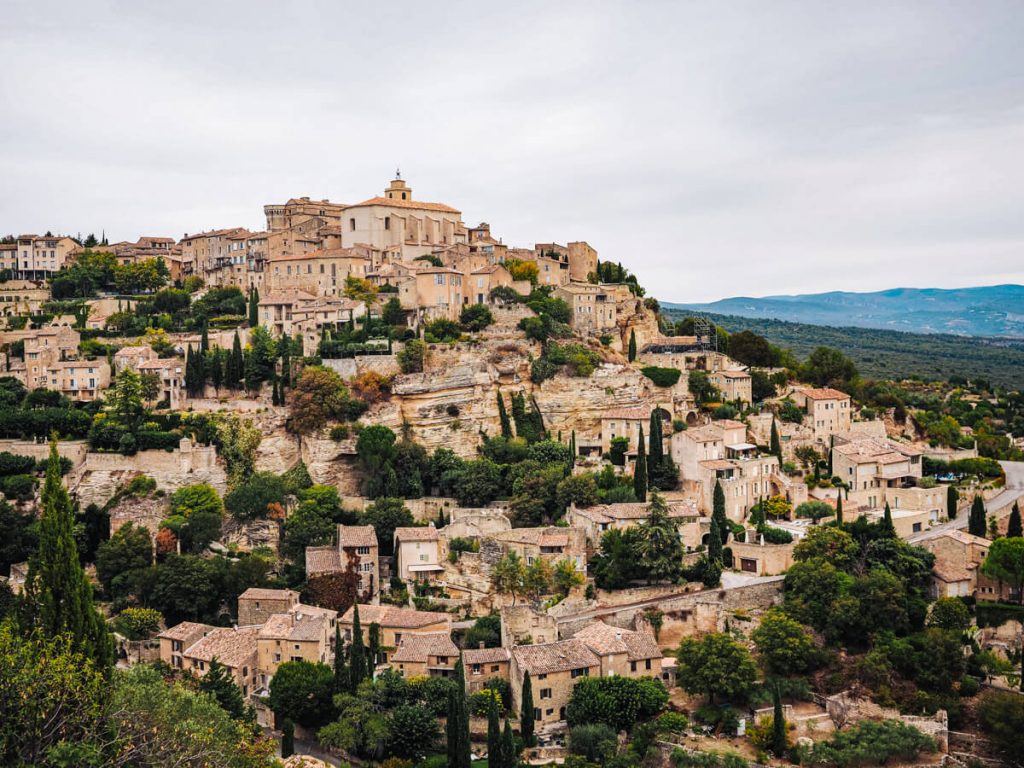
Then, as it was a Saturday when we were driving the Luberon, we went to Apt specifically for their Saturday farmers market. Honestly, we were so impressed. It was so much fun to walk around, sampling jams, chutneys, cheeses, and sausages.
We purchased so much just from this market including cheese, nougat, jam, handmade lavender soap, and more. Take some time here to grab essentials for a picnic lunch or just fill up at the market itself.
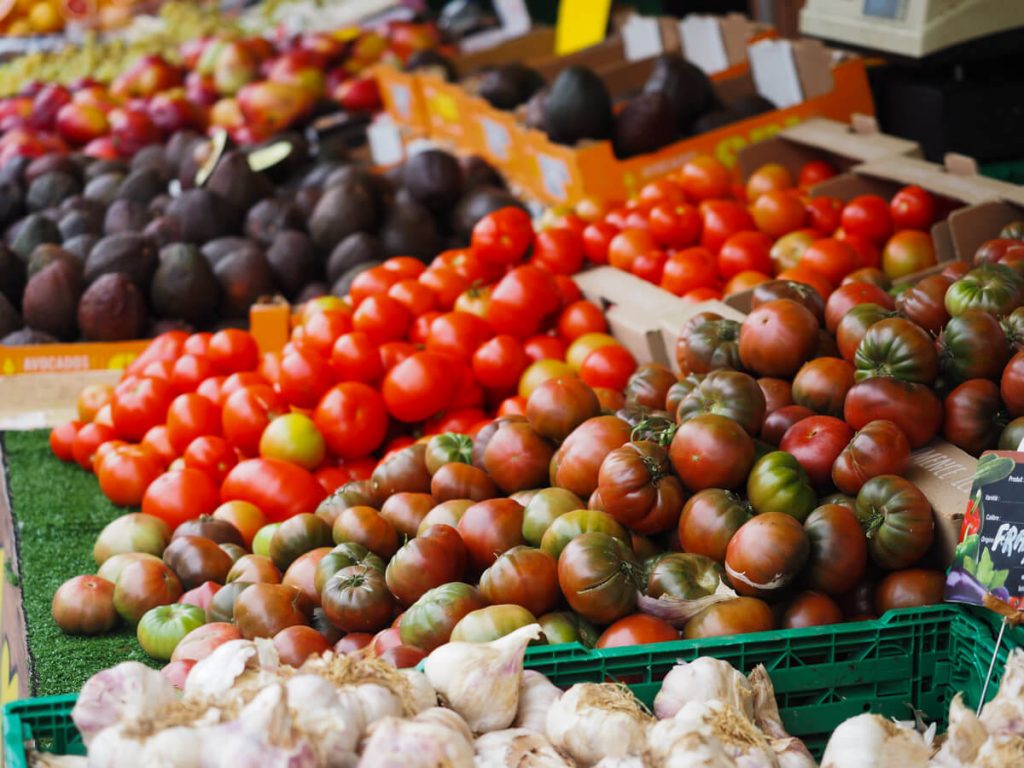
FYI- Check out market days ahead of time while planning your itinerary. We chose to visit Apt for the market on Saturday, but there are markets all over the Luberon villages open on different days of the week.
Also, many of these markets close up shop around 12:30 pm or so, meaning you’ll want to get there by at least 11:30 am to really take it all in.
After Apt, it is time to hop back into the car and drive to another awarded beautiful village in France: Roussillon. Unlike other villages with limestone architecture, this place is red, orange, and yellow thanks to the ochre-rich cliffs.
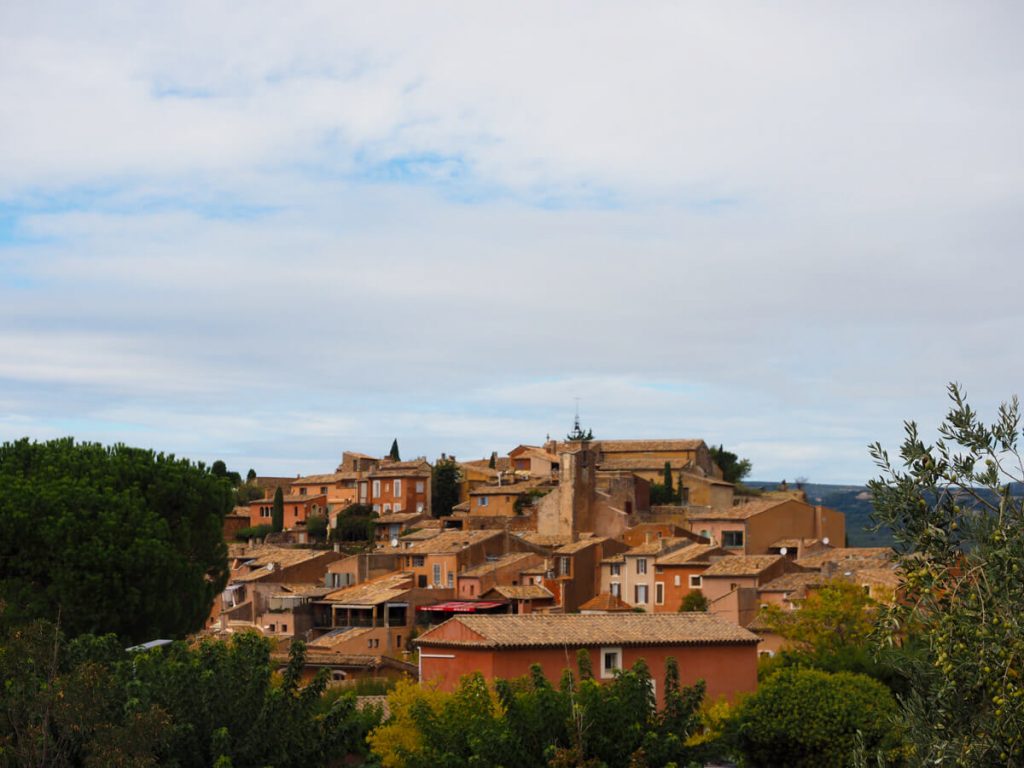
Wander in the village before walking along the Ochre Path to see the mineral-rich soil up close. There is a hiking path that is both 35 and 50 minutes long.
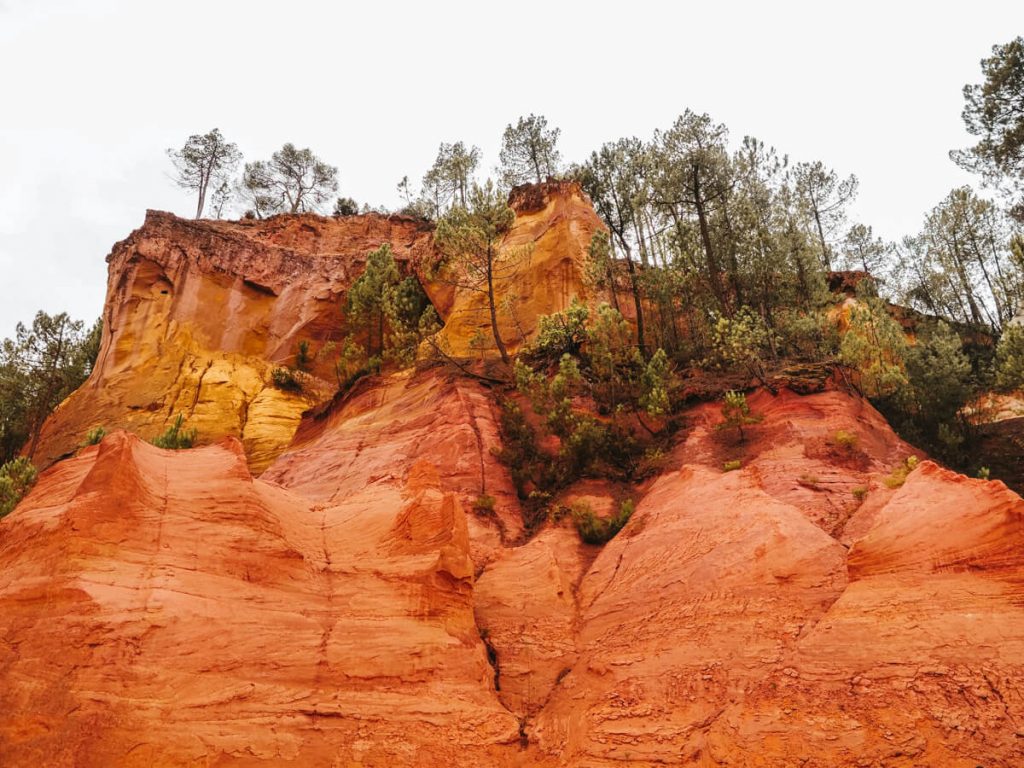
Up next is Bonnieux , where you’ll stop in to try some rosé at a local winery: Chateau la Canorgue . This estate has free wine tastings and is just stunning.
Then, definitely head to Lourmarin (another Plus Beaux Village winner) to see the Chateau de Lourmarin before stopping at Chateau Constantin for another tasting (drink responsibly, of course!).
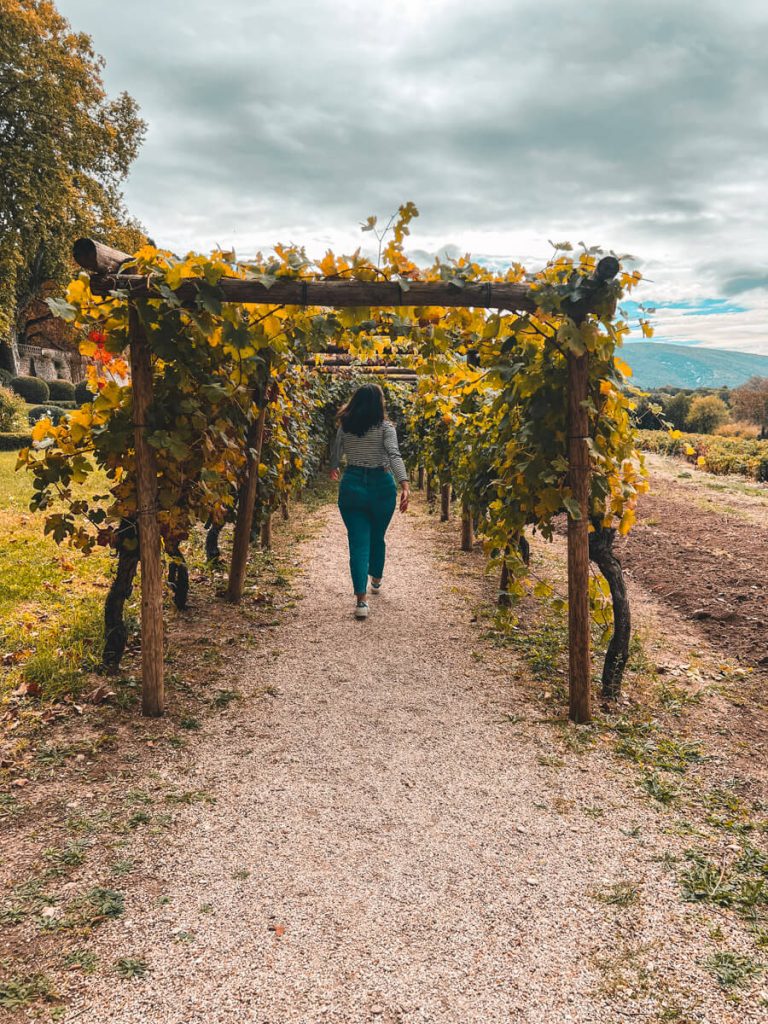
Then, last, but not least, as the day starts to turn into evening, head to Cucuron. This gorgeous little town has a basin lined with trees with ample cafes perfect for people-watching. We also loved the Citadel Tower with views over the little village.

Once you’ve explored the Luberon, head into Aix-en-Provence for dinner and bedtime.
Day 4: Aix-en-Provence & Cassis
Wake up and grab some breakfast before exploring the lovely city of Aix-en-Provence. Some highlights here include Cezanne’s Studio and Musee Granet. However, if you’re lucky and happen to be here on a Sunday as we were, it was fun just wandering around and visiting all the markets!
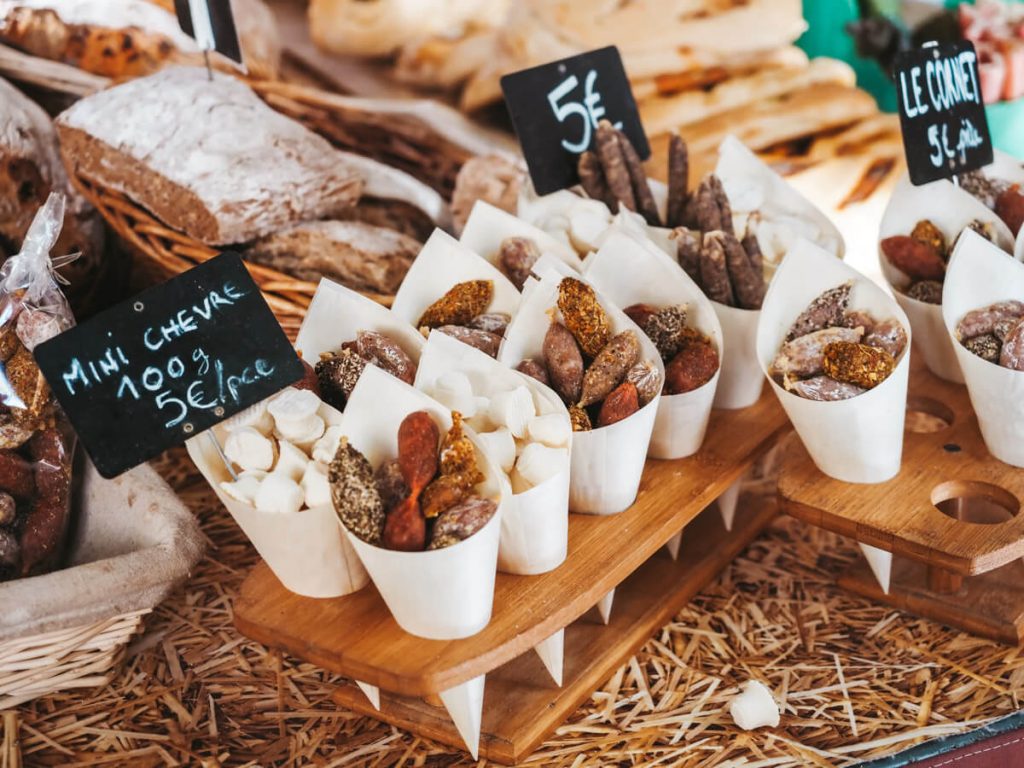
There was a flower market, antique market, and food market that we visited and took in the scenery! It was also fun just to wander the streets and stop at confectionaries and other shops!
Spend the morning exploring Aix-en-Provence before driving down to Cassis .
Grab lunch by the harbor before going on a boat cruise of Calanques National Park . These Calanques are rock formations (typically from limestone) that create a deep gorge in which water from the sea flows.
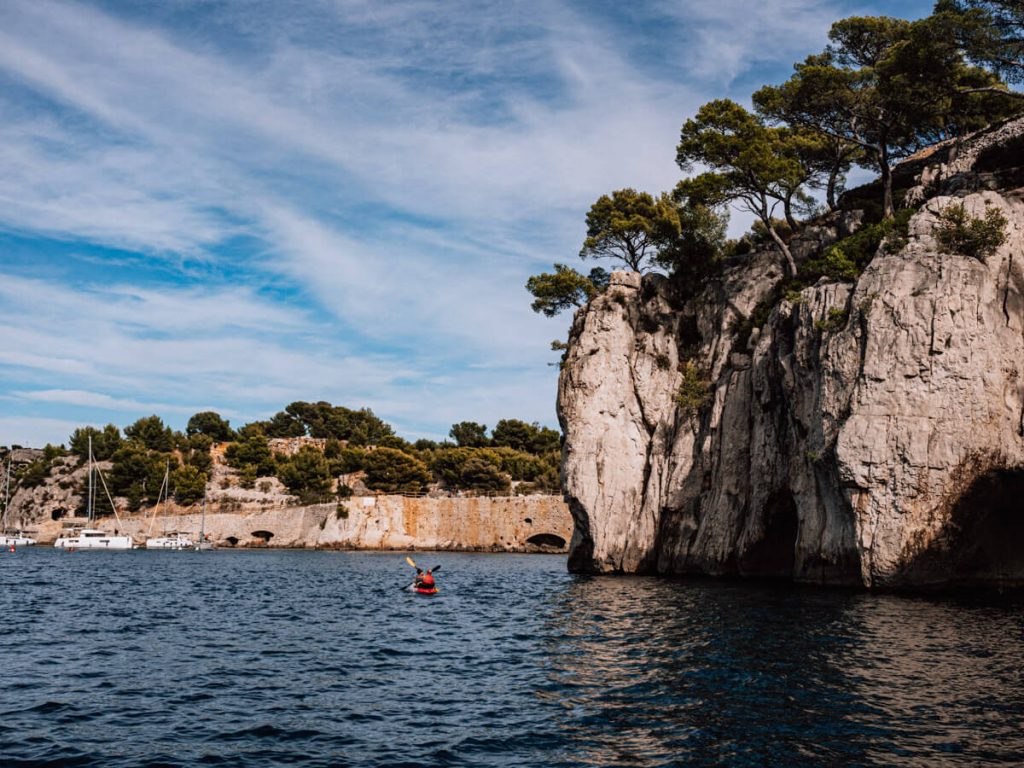
There is an option from Cassis to do a boat tour from the harbor with stops at either 3, 5, 8, or 9 Calanques. We ended up doing 5 as that lasted just over an hour (the longest tour is 2 hours and 20 minutes). You can buy tickets at the ticket booth and then go on the tour.
It was really cool to glide into these Calanques and enjoy the views!
You could also hike to a few of the Calanques from Cassis if you have time. Or, if you want to get adventurous, why not take a kayak tour ?
However, as we also wanted to explore more of Cassis and have dinner in Aix-en-Provence, we opted for the boat trip.
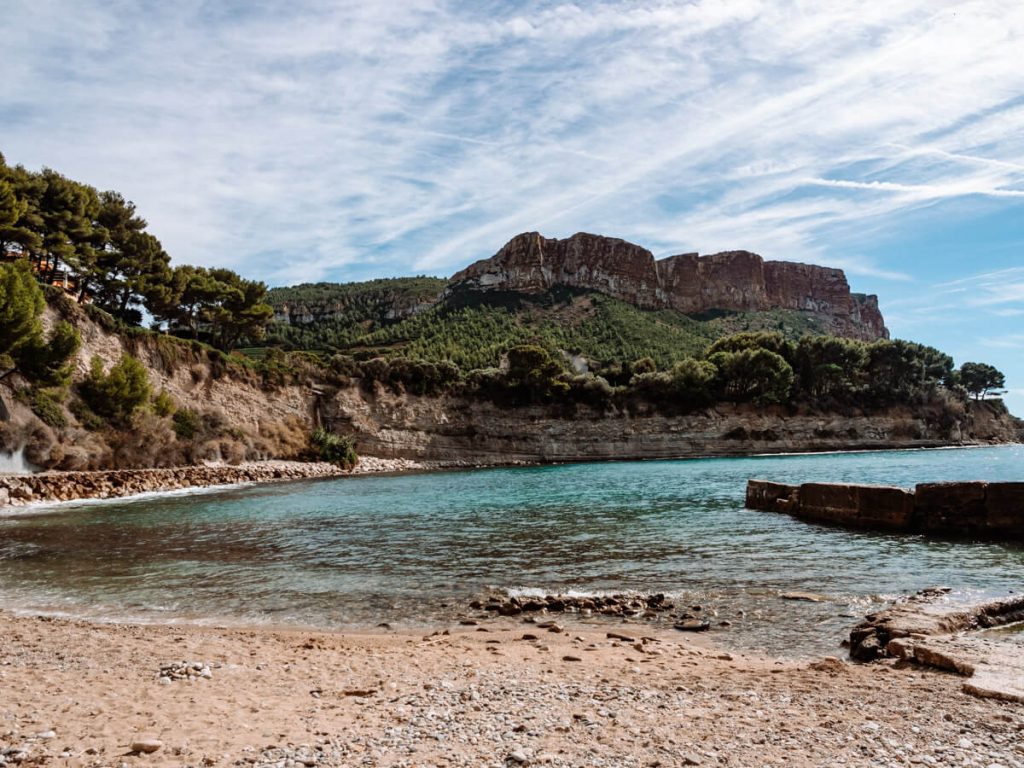
After the boat cruise, we wandered around the harbor and ended with some beach time at Plage du Bestouan .
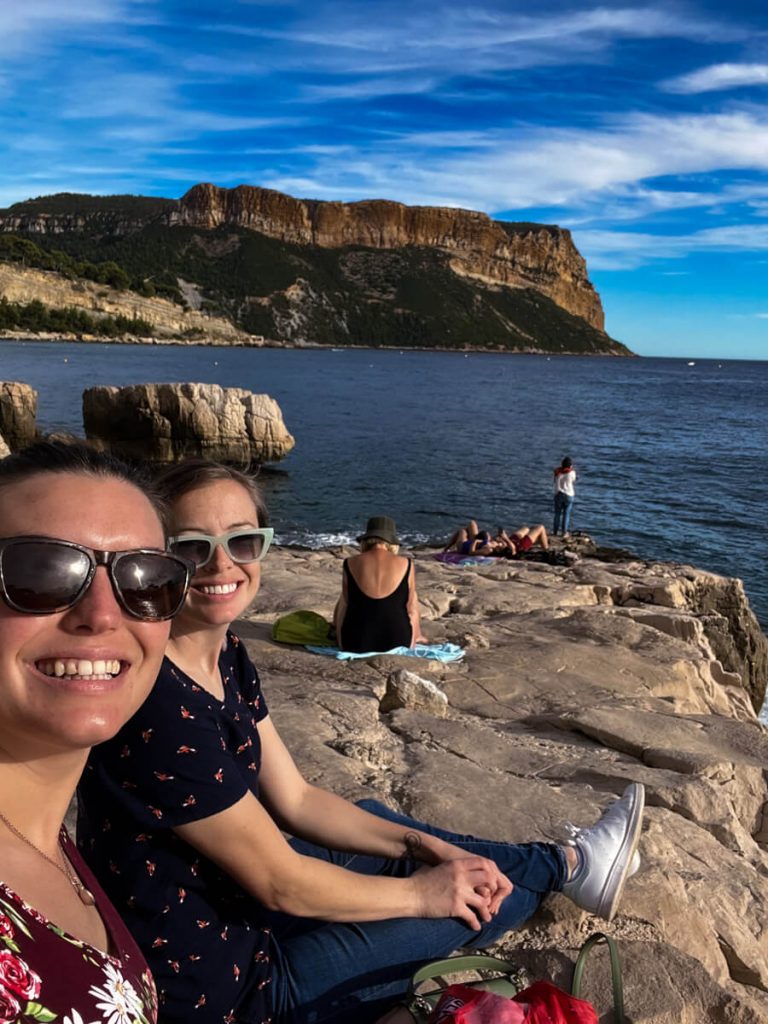
After that, head back to Aix-en-Provence to explore during the evening before the next stop on your Southern France road trip.
Where to Stay in Aix-en-Provence:
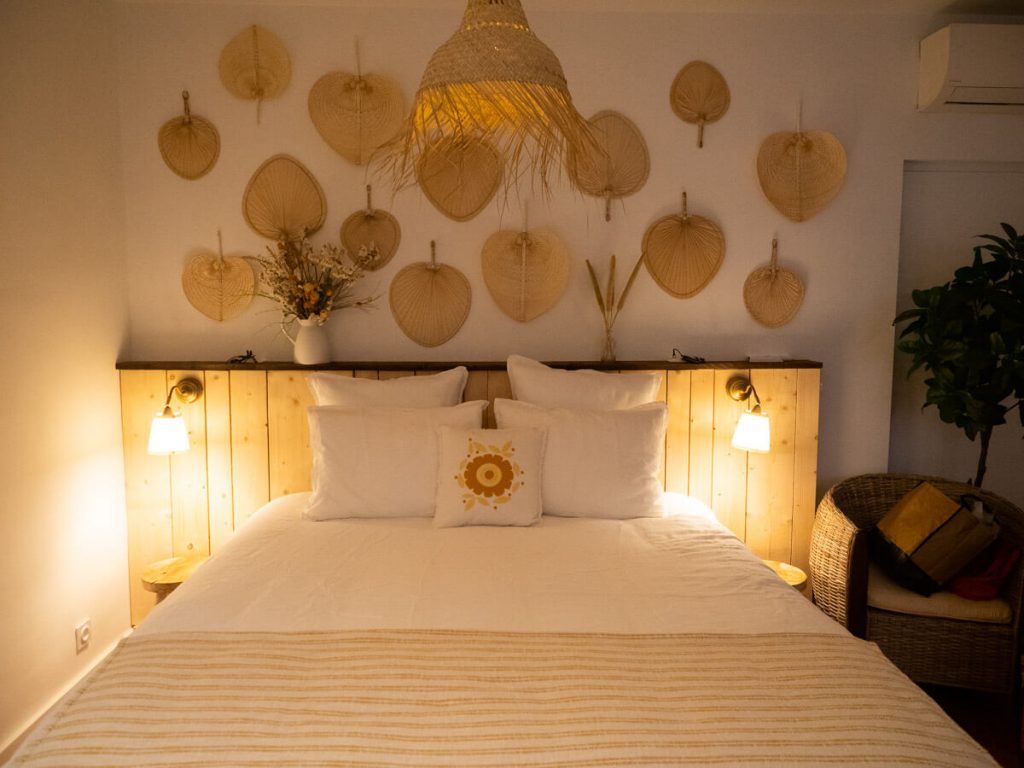
Aix-en-Provence has so many cute places to stay, including Airbnbs. We ended up staying in this amazing Airbnb that was our favorite apartment of the trip! However, if you prefer hotels, check out these places.
Budget: Hotel des Augustins
Mid-Range: Renaissance Aix-en-Provence
Mid-Range: Maison Dauphine
Luxury: Villa Gallici
Days 5-6 of Your South of France Road Trip Itinerary: Cannes

Up next is the iconic star-studded town of Cannes ! Okay, there aren’t celebrities there year-round, just mostly during the Cannes Film Festival.
Outside of that, this is a town of luxury shopping, delicious food, and beach clubs.
Day 5: Drive to Cannes & Explore

Okay, there are two ways to shape this day during your South of France road trip in a week. The first is to go straight to Cannes and explore , which is what we did.
We grabbed lunch, window-shopped at luxury stores like Chanel and Louis Vuitton, strolled along the Croisette Promenade as we took in the Mediterranean views, and then we hiked up to the Église Notre-Dame d’Espérance and wandered at a stellar sunset view over the city and sea.
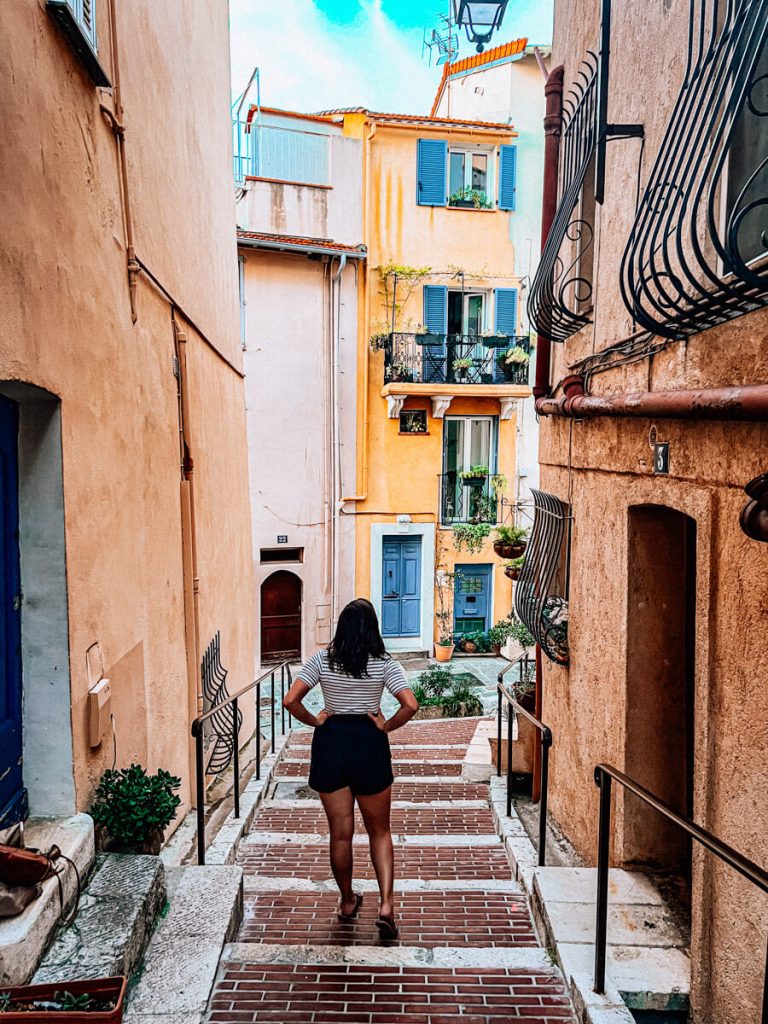
Then, we wrapped up our day with dinner at Restaurant Mickaella over in the Suquet neighborhood. Honestly, this neighborhood is the place to grab dinner and drinks. The stuff along the harbor is way too crowded in the evenings. This place has such a cool vibe and the restaurants are better.
If you’re visiting during the lavender season and have the energy, you could make this another road trip day and visit the lavender fields in the Valensole Plateau and stop by Gorge du Verdon for a boat trip.
Then, you’d end up in Cannes in the evening for dinner.
Honestly, we were wiped from all the previous exploring (and we weren’t there during the lavender season) so we gave it a skip and went straight to Cannes, but it was in our original plan before having to reschedule our trip to October!
Day 6: Beach Day in Cannes
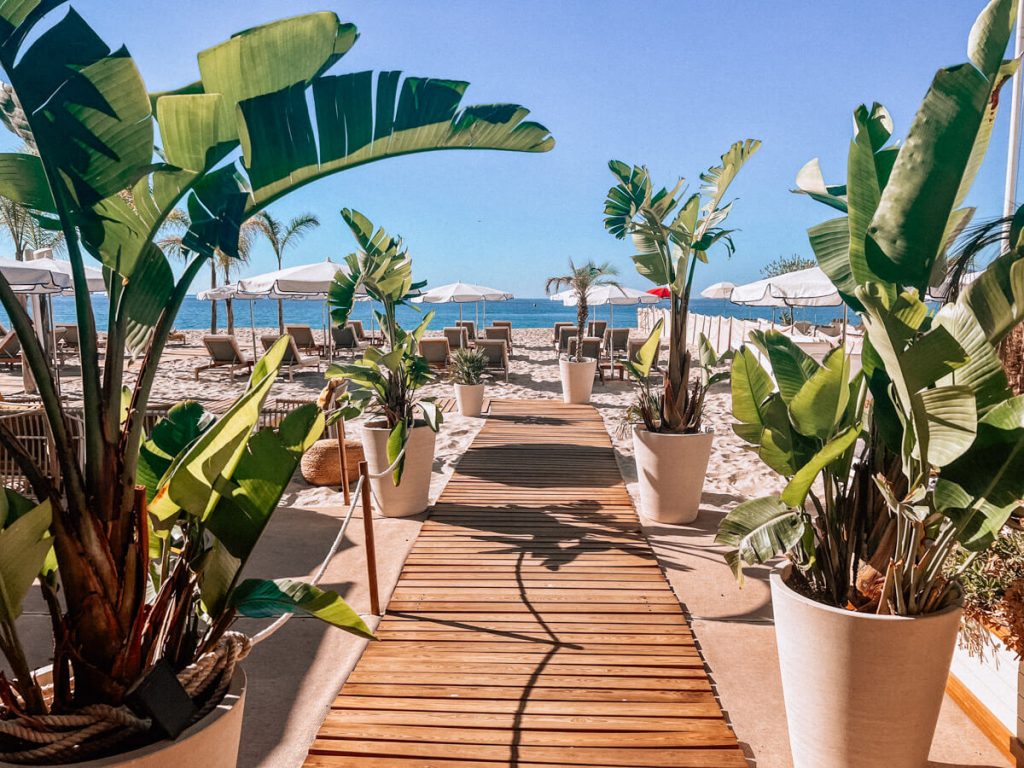
Regardless of yesterday’s choose-your-own-adventure, today is meant for resting. The main point of our journey to Cannes was for a beach day. Why?
While there are tons of great beaches along the French Riviera , Cannes is known for its sandy beaches versus pebbly ones. Plus, I always wanted to try out a beach club.
So today is the day when you’ll head to a beach club off the Croissette Promenade for the day. Many of these places open up around 10 am and stay open until the evening. We ended up booking a spot at La Plage du Festival .
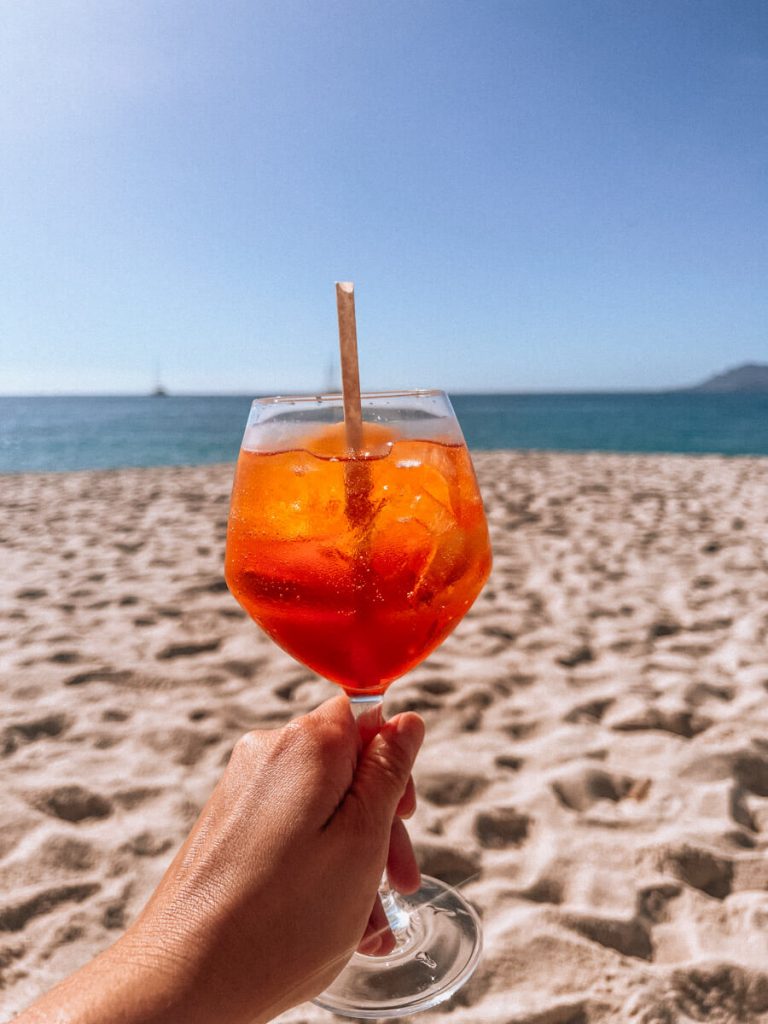
And it was super adorable. You head downstairs from the promenade and are met with a colorful cocktail bar, ample seating for lunch, and several beach chairs and umbrellas. During the summertime, chairs go for €40-50+ for the day and include the chair, umbrella, and a towel.
Luckily, if you show up in the fall, it usually is still warm enough for a swim and it is only around €25 for the day.
So take advantage of having a beach chair all day and relax, read, go for a swim, have lunch, and get some rosé or Aperol spritzes.
Then, clean up that evening and have dinner around the Suquet area again before your last day of the best 1 week South of France trip itinerary.
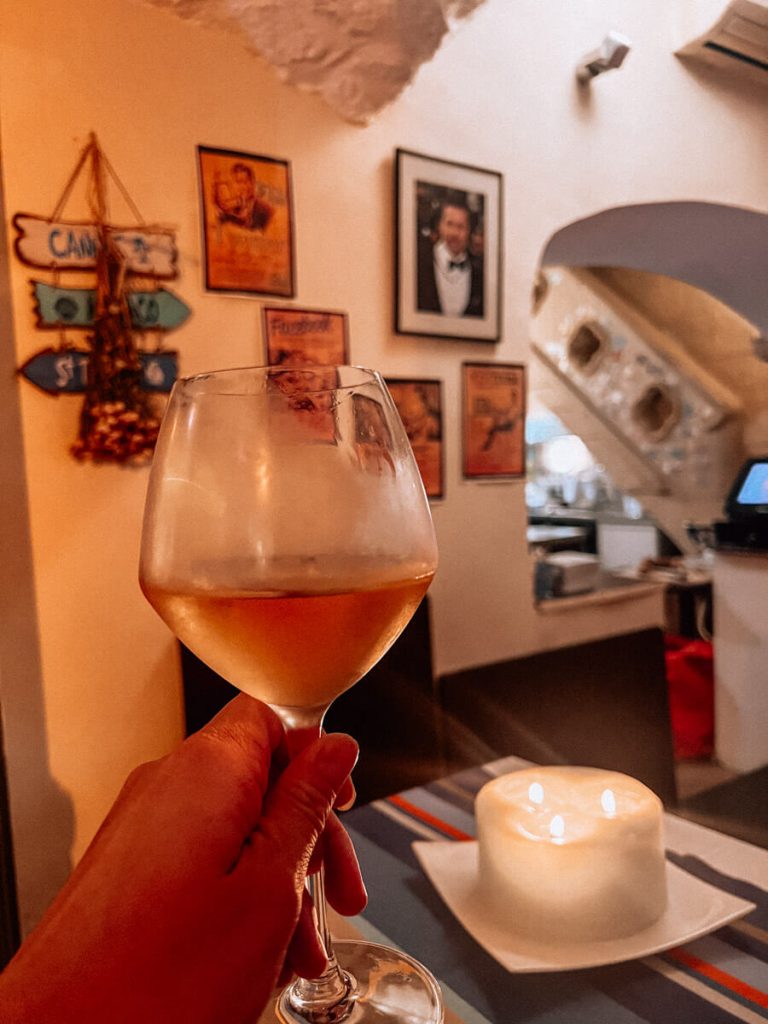
Where to Stay in Cannes:
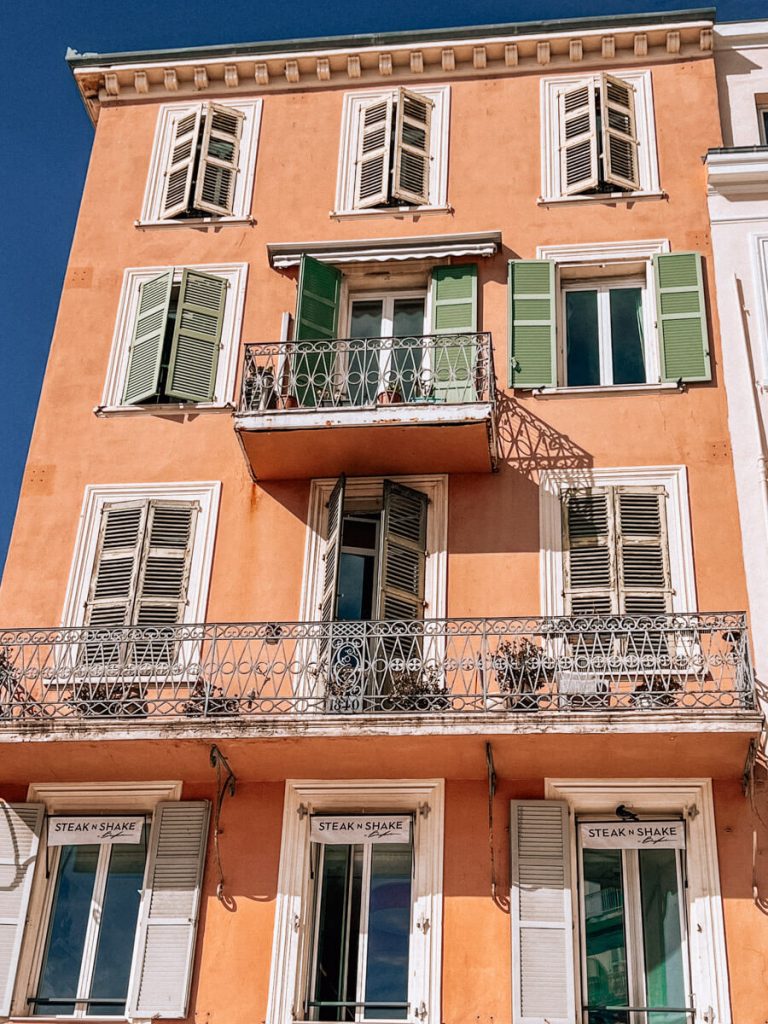
This can range wildly in prices as there are ample luxurious hotels. But, here are some based on your budget.
Budget: Novotel Suites Cannes Centre
Mid-Range: Hotel de Provence
Luxury: Hotel Barrière Le Majestic Cannes
Day 7 of the South of France Road Trip in a Week: Nice

To wrap up your South of France road trip, it is time to head to Nice.
Nice is an iconic city on the French Riviera and for good reason. Its architecture is stunning, it has a fabulous market, and you can’t beat the relaxed atmosphere.
So after a day pampering yourself by the beach in Cannes, why not end by exploring the city of Nice ?
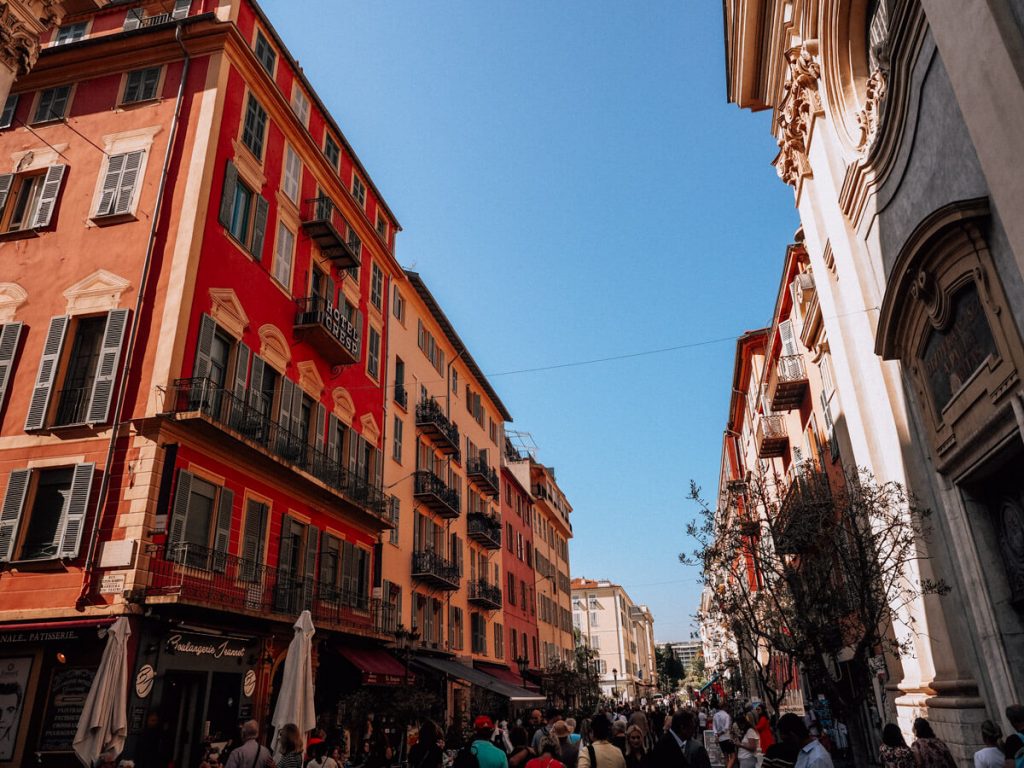
Start off by driving toward the Nice Côte d’Azur airport to drop off your rental car. And even though it adds a bit more time, take the scenic route. There is a road that goes along the coast that you can take (I suggest using Google Maps and selecting that route).
You’ll pass Antibes, Cagnes-sur-Mer, and more as you head to the Nice airport to drop off your rental car.
Yes, you could just drop it off when you fly out the next day, but if you have an early flight this could be tricky. Plus, parking in Nice can be difficult so we just saved some money and dropped off the car this day.
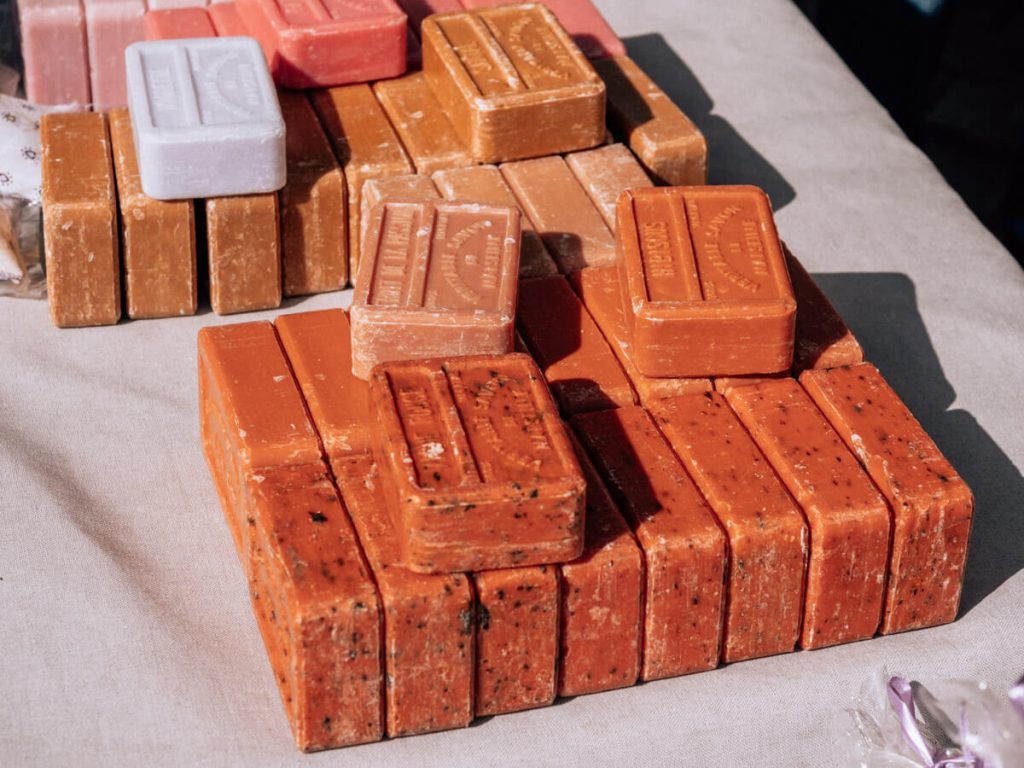
From there, head into Nice to explore. Walk along the Promenade des Anglais along the sea, visit the Cours Saleya Market for last-minute souvenirs and to try socca (a chickpea flour pancake with water, olive oil, and salt), and wander up to the Colline du Château for amazing views over the town and sea.

If you want to keep wandering, there are also cool spots to check out like Massena Square with its light-up statues or the Modern Art Museum.
Obviously, there is a ton to do here, but if you only have a day, I’d keep it simple with the promenade, market, and chateau. Then, why not check out the beach before dinner?

Then, it is time to head to bed as you unwind from your amazing South of France road trip itinerary!
It is hard to leave this part of the world, but this trip will leave you with so many memories.
Where to Stay in Nice:

Being a larger city, there are plenty of places to stay. Here are a few favorites.
Budget: Arome Hotel
Mid-Range: Hotel Palais Saleya
Luxury: Hyatt Regency Nice Palais de la Méditerranée
Best Way to Get Around the South of France
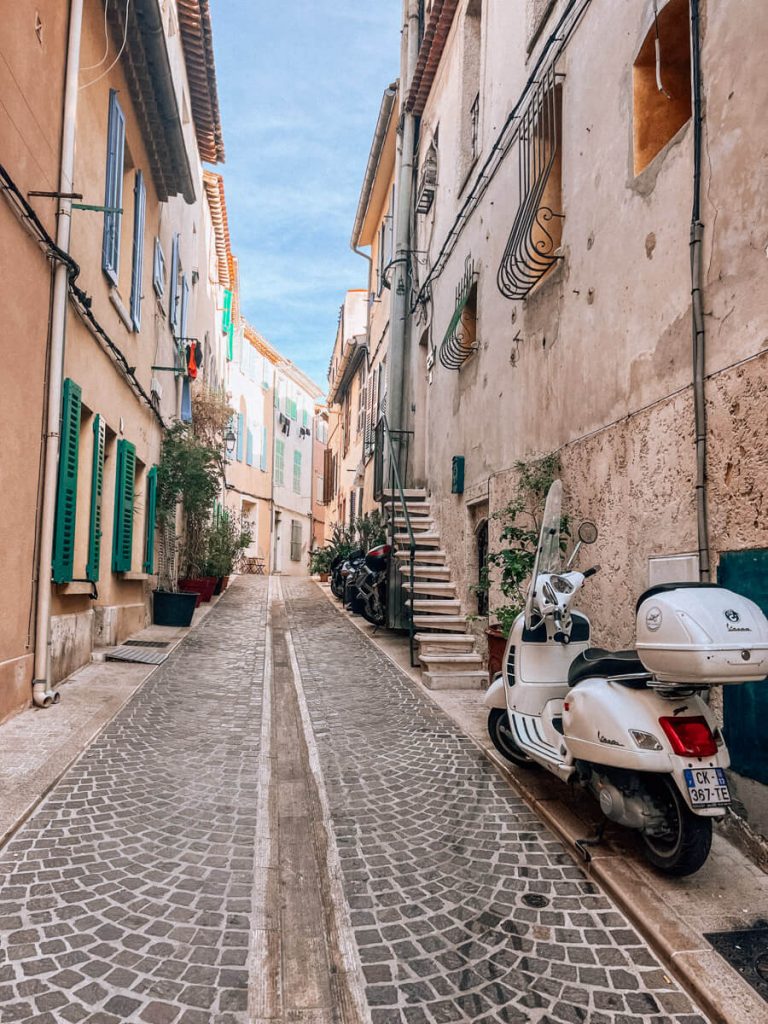
While this is a South of France road trip itinerary, there are other ways to explore this area. If you want to see smaller towns on your own schedule, though, renting a car is the best idea.
But, you can also take trains to various cities like Avignon, Aix-en-Provence, Cannes, Cassis, and Nice.
From there, you could stay and take day trips. Here are a few to check out!
- From Avignon: Best of Provence Tour
- From Avignon: Luberon Villages Tour
- From Avignon: Lavender Tour
- From Aix-en-Provence: Luberon Villages Tour
- From Aix-en-Provence: Cassis Half-Day Tour
- From Aix-en-Provence: Cassis Boat Ride and Wine Tour
- From Aix-en-Provence: Valensole Lavender Tour
- From Nice: Full-Day French Riviera Day Tour
When to Visit Provence For Your 7-Day Trip
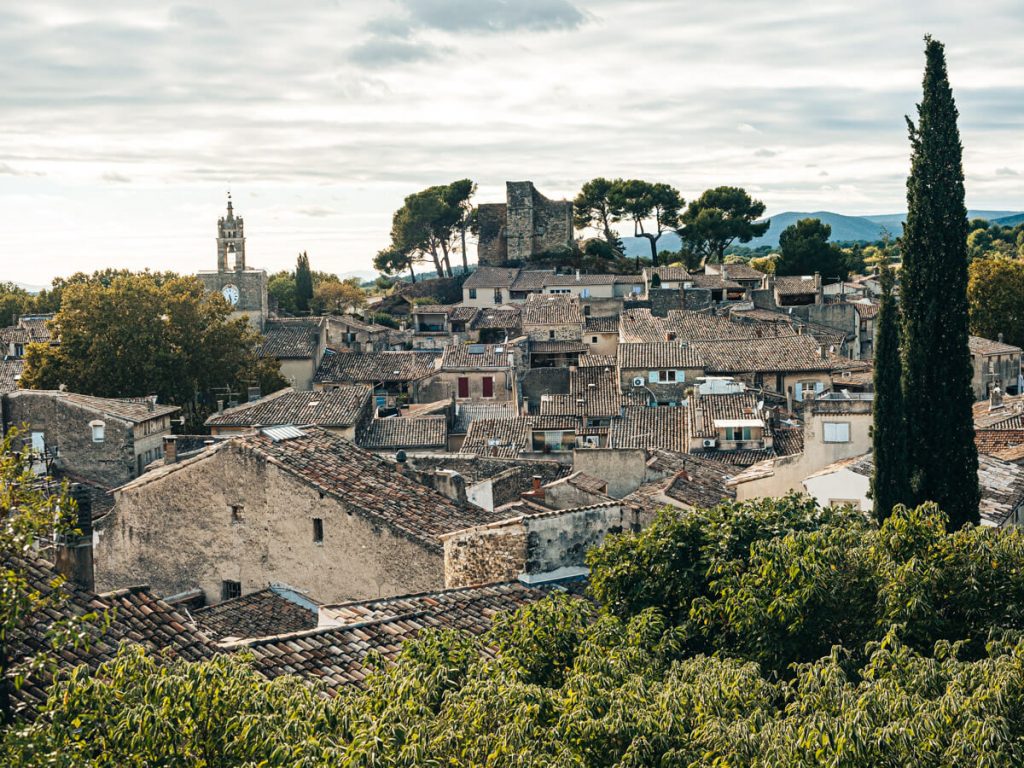
The most popular time to visit Provence is the summer, particularly when the lavender is in bloom from mid-June through mid-July. That is when Avignon, Aix-en-Provence, and the Luberon villages will be full of people dreaming of a glimpse of the lavender fields.
It is also warm and sunny along the beaches, making it a perfect time to swim.
However, it is also insanely crowded at times. So while late May through August is a popular time to visit, I honestly loved our October trip.
In October, it is still warm enough to swim most of the time in the earlier part of the month. We had a beach day in Cannes and it was great! We also started to see fall foliage which was charming, especially in the villages.
Even the winter is much nicer than in northern France, especially along the Riviera. But, I’d say the best time for fewer people and great weather is September-October.
But, if you’re here for lavender (which I totally understand- we were originally supposed to go for that!), opt for the beginning of July.
Other Tips For Visiting Provence
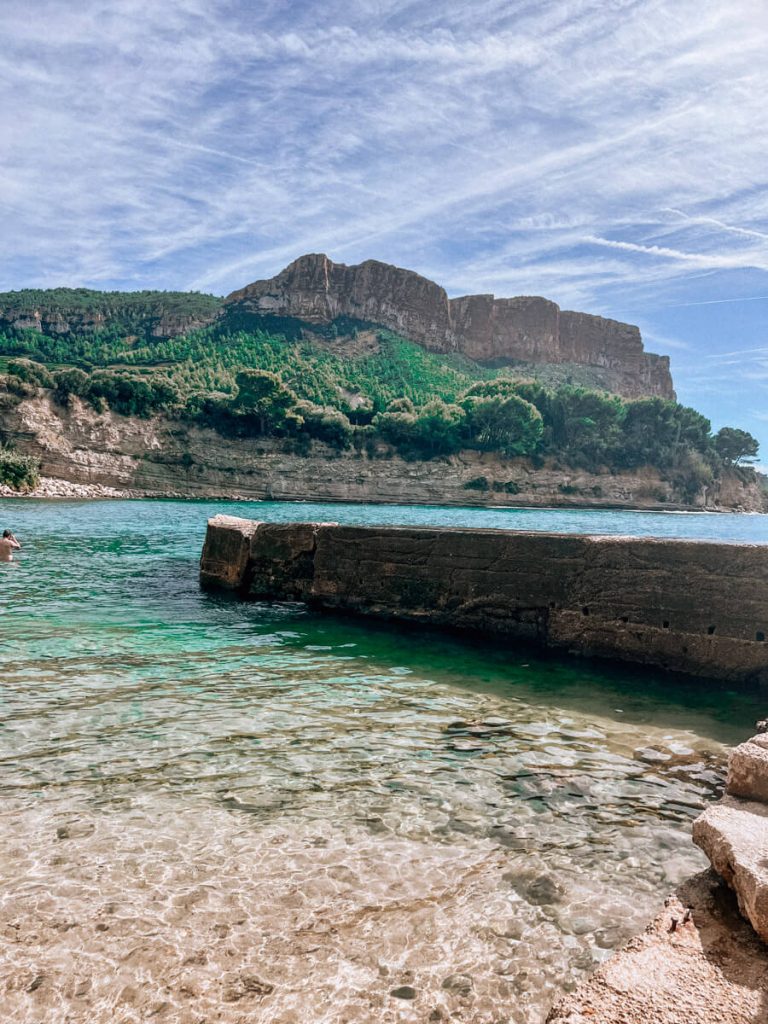
Before you book that Provence road trip itinerary, here are some tips:
- Check dates/times of markets. Almost every city and village will have a market. Some are several days a week, while others are once a week. Most of the time they don’t stay open late. The Luberon markets typically wrap up around 12:30 pm. Markets like Les Halles in Avignon close at 2 pm.
- Enjoy a slower pace. Some days we rushed to see a lot, but on others we relaxed and wandered. Leave room to wander during this trip. Stop at roadside cafes or shops and poke inside. Head to a winery. Pull over near the beach and go for a swim if you wish! Provence is meant to be savored.
- Know the rules of the road. I find this website to be helpful when it comes to driving tips and French road signs . Also, it is a good idea to have an International Driving Permit. I get mine at AAA.
- Pack sunscreen. Provence is a sunny region, so pack sunscreen !
- Learn a little French. I’m not saying be fluent (I’m still learning too!), but know a few words/phrases like how to order at a restaurant and ask where the toilets are.
- Always say “Bonjour/Bonsoir.” This is a France travel thing in general. It is important to greet people in shops and cafes with a simple “Bonjour” or “Bonsoir” depending on the time of day. I typically start saying “Bonsoir” after 5 pm.
- Try all the local products! Provence has a plethora of unique products to try including soap, lavender (sprays, candy, syrups-you name it, there is lavender for it), aioli, spices, socca, and more! You may want to leave room in your suitcase for souvenirs.
- Have fun! Provence is a stunning region full of jaw-dropping views and delightful cuisine. Enjoy every second during your 7 days in the South of France.
A 7-day South of France itinerary is enough time to really savor Provence. You’ll experience local markets, incredible cuisine, dazzling beaches, and even enchanting towns. What could be better than that?
Would you visit Provence? What would your ideal South of France itinerary look like?
Want more France travel ideas? Check out these posts!
- Best French Gifts
- Top Things to do in Beaune
- Best Day Trips From Annecy
- Paris Travel Tips For First Timers
- Hidden Gems of Paris
- Top French Cheeses
- Things to do in Grenoble
- How to Spend 3 Days in Paris
- Versailles Day Trip From Paris
- Best Time to Visit Paris
- Most Romantic Things to do in Paris
- Where to Stay in Paris
- Things to do in Lyon
- Best Things to do in Dijon
- Annecy Winter Guide
- 1 Day in Annecy
- Paris Bucket List
- 1 Day in Paris
- Paris in January
- Best Alsace Christmas Markets
- 1 Day in Strasbourg
- Weekend in Champagne Itinerary
- Epernay or Reims: Which Should You Visit?
- How to Spend 7 Days in Paris
- How to Spend 10 Days in France
- 1 Day in Colmar
- Ultimate Paris 2024 Olympics Travel Guide
- Best Things to Do in Epernay
- Ultimate Guide to Champagne Tasting in Reims
- Paris in the Fall Guide
- Best Smaller Museums in Paris
- Top 15 France Road Trips
- Strasbourg Christmas Market Guide
- Colmar Christmas Market Guide
- Ribeauville Christmas Market Guide
- Obernai Christmas Market Guide
- Kaysersberg Christmas Market Guide
- Riquewihr Christmas Market Guide
- Ultimate 7-Day Normandy Road Trip
- Best Things to Do in Deauville
- Ultimate Normandy Cider Route Guide & Itinerary
- 3-Day Loire Valley Itinerary
- 19 Best Things to Do in Orleans
Follow the journey!
Signup for exclusive travel tips for France!
Thanks for subscribing! Be sure to check your email to confirm your subscription.
Pin it here!

16 thoughts on “Only South of France Road Trip Itinerary in 7 Days You’ll Ever Need”
Thank you for this article I enjoyed reading it and I look forward to those vacation more than ever now
Hi am really keen on going to all these places but how did you go with parking your car in each village. Is it expensive and easy to do . I am going in October too
Hi Davinya! Parking isn’t too bad, especially since you’re traveling in the shoulder season. There are places to park around towns and you’ll either need to download a parking app to pay or pay at a pay station. Some bigger towns, like Aix-en-Provence, even have parking garages you can use as well. Parking wasn’t too bad in price either.
Hello there! I just finished reading your article about a South of France road trip itinerary in 7 days, and I must say, it’s an absolutely stunning and enticing journey through this beautiful region. The South of France has always been a dream destination for me, and your detailed insights and recommendations have left me even more eager to embark on this unforgettable road trip.
Your suggested itinerary for the South of France is well-planned and covers a diverse range of experiences. From the charming city of Nice to the picturesque lavender fields of Provence, you’ve curated a perfect route that captures the essence of this enchanting region.
I loved how you included practical tips for travelers, such as the best time to visit and recommended stops along the way. Your insights on where to indulge in delicious French cuisine and experience the local culture were very helpful.
The inclusion of lesser-known gems and off-the-beaten-path attractions was a wonderful addition. It’s evident that you want your readers to have a well-rounded and authentic journey through the South of France.
The captivating images throughout the article truly bring the destinations to life, making me feel like I’m already on this scenic road trip.
Thank you for sharing such a valuable and inspiring guide. Your article is a fantastic resource for travelers planning a South of France road trip, and I’ll be sure to refer to your tips when I plan my own journey. Keep up the fantastic work, and I’ll be eagerly waiting for more of your travel insights and recommendations!
Thank you! That is high praise! I hope you get to enjoy the South of France soon!
Thank you for sharing this it is very helpful
Hello Kat, my family is planning a trip to the south of France in October 2024. I was wondering what would be the best itinerary for a 2 week trip in car leaving from Paris and returning back to Paris. There are so many beautiful villages in the south and will need advice on the best villages to see and stay. Thanks
Hi Nelson! Have so much fun, the South of France is truly incredible. I would definitely recommend spending 7 days doing this itinerary, but, since you have some extra time, I would recommend spending a couple of days in the Luberon and perhaps staying in a town like Gordes. I also would recommend checking out Antibes and Saint-Tropez if you would like to go to more beach destinations. If you want more smaller towns to enjoy, check out L’Isle-Sur-la-Sorgue for its canals and its Sunday market, Grasse if you love perfume (it’s the perfume capital of the world!), and even Saint-Remy-de-Provence for its architecture and landscapes that once inspired Van Gogh. Since you’re driving all the way to Provence from Paris, you could also spend some time in Dijon and the villages of Burgundy as well as Lyon on the way down and perhaps stop by some chateaux of the Loire Valley on the way back to Paris. I hope this helps and have fun!
Hi, Regarding your comment below- is this accessible by train or is there an easy way to see the bridge without hiring a car?
“Pont du Gard is about a 30-minute drive from Avignon and is a must-see. This is an ancient Roman aqueduct that crosses the Gardon River. Step back through time at this first-century bridge that was used to carry water to Nîmes.”
Yes, it is easiest to see via car. However, you can take the train into Avignon and take Bus Line 115 to Pont du Gard. Timetables can be found here: https://storage.googleapis.com/is-wp-90-prod/uploads-preprod/2023/08/OC-0723-FHliO-30-115.pdf
Hi- is Senanque Abbey or the lavender fields accessible by public transport?
Sadly, this is not available via public transport. However, you could book a tour that stops here. This is a good tour that stops at Senanque Abbey during June and July for the lavender fields: https://gyg.me/UQNw8u9z
Hi Kat, I think you have just sorted out my summer vacation! Thank you so much for the details, pictures and amazing descriptions. I am just wondering how feasible this is to do on a budget and if you have anymore money saving recommendations.
Thanks so much 🙂 x
You’re welcome! You’re going to fall in love with the South of France! It wasn’t too terribly expensive when we went. However, it was in late September/early October. If you can go before peak season of July and August, that helps a bit. Also, instead of renting a car, you could take the train around to the cities and do day trips to places like the Luberon via a tour. Also, there are some B&Bs and hotels that can be found in these places for less money- I like checking for prices on TripAdvisor. Also, you can potentially grab Airbnbs and such too with a kitchen to save some $$$ on dining out every day. I hope this helps and have a great time!
Leave a Comment Cancel reply
Save my name, email, and website in this browser for the next time I comment.
This site uses Akismet to reduce spam. Learn how your comment data is processed .
The Ultimate South of France Road Trip Itinerary (2 Weeks)
Article written by Elisa - Travel Writer & Local in France This article may contain compensated links. Please read disclaimer for more info.
Here’s the Best Road Trip South of France Itinerary
The South of France is the perfect French holiday destination. There are many great places to visit in Southern France , the scenery is always beautiful, and the food and culture are hard to beat.
This area of France has a wonderful climate with long warm summer days stretching through to September and October. Winters in Southern France, especially along the Mediterranean coast, are always mild.
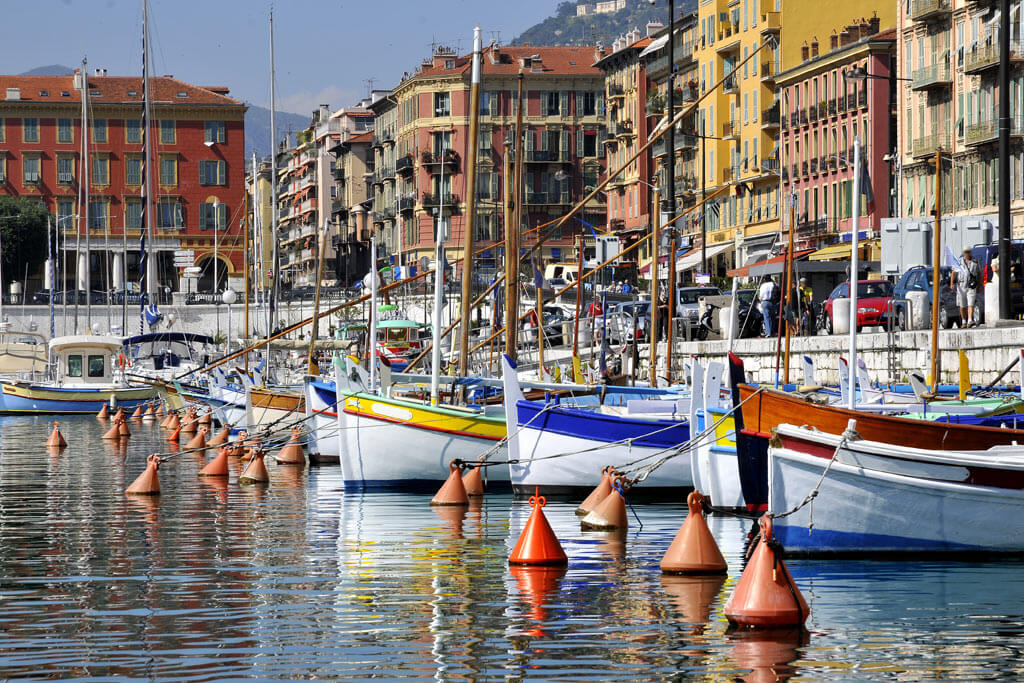
The best way to explore Southern France is by car. This South of France road trip itinerary from Toulouse to Nice (or vice-versa) covers the French regions of Occitanie and Provence-Alpes-Côte d’Azur. This Southern France road trip itinerary lasts two weeks, and it is a good itinerary for first-timers in Southern France who love history, sightseeing, outdoor activities, and great food.
This road trip south of France is one of the best road trips in France . Read more about road-tripping in France:

Southern France Road Trip Overview
- Start: Toulouse
- Finish: Nice
- Duration: 14 days
- Suggested route: Toulouse – Narbonne – Arles – Camargue – Aix-en-Provence – Cassis – Cannes – Nice
- Total distance: 751 Km, 8.5 hours drive in total
- Region covered: Occitanie and Provence-Alpes-Côte d’Azur
- Best for: history, sightseeing, nature, small towns, food & wine
This South of France road trip itinerary starts from Toulouse , the capital city of the Occitanie region. Toulouse is easy to reach by train from Paris or Bordeaux. The journey from Paris to Toulouse by train takes around 4 hours while Bordeaux to Toulouse by train is only 2 hours.
Toulouse also has one of the major airports in France . Toulouse-Blagnac Airport (TLS) has regular and seasonal international flights from Europe, Africa, and America – Click here for flight times and rates to Toulouse .
TIP: If you are looking for a road trip from Paris to South of France, here’s the perfect road trip itinerary for you .
South France Road Trip Map
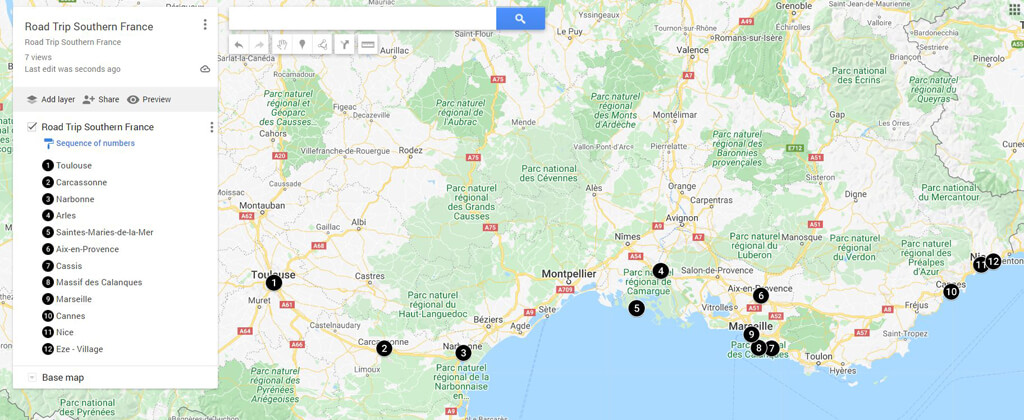
Click here to see this South France Road Trip Map on Google
South of France Road Trip Itinerary
For this South of France roadtrip, you don’t need the car until day 2, so if you are taking a South of France driving holiday in a hire car, wait until then to pick up your rental car in Toulouse. Click here for our best tips for renting a car in France .
Click here to rent your car in Toulouse

Day 0 | Arrival at Toulouse
Arrive at Toulouse the day before the start of this road trip South France. For your two nights in Toulouse, the Boutique Hotel SOCLO is comfortable, beautiful, and very central. Its swimming pool and garden are ideal for the warmest days in Southern France.
Click here to book your stay at Boutique Hotel Soclo
Day 1 | Toulouse
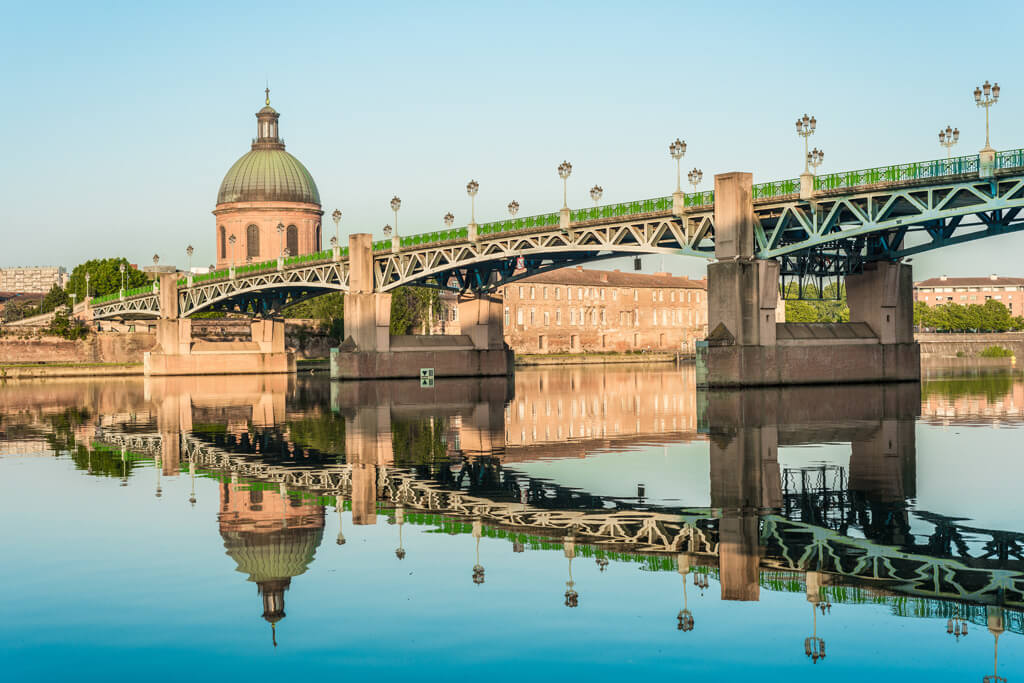
Located in the Southwest of France, between the Atlantic Ocean and the Mediterranean Sea, Toulouse is the fourth largest city in France. Boasting a rich historical heritage and sumptuous monuments, the famous “Pink City” always ranks among the most beautiful cities in France .
Cradle of aviation and space, Toulouse is ranked among the most advanced technology parks in terms of research. With many elegant mansions, historical buildings, museums, and monuments, Toulouse welcomes many students and tourists each year, making the city very lively and an excellent base to explore the region.
The list of interesting things to visit in Toulouse includes:
- Toulouse free walking tour
- Place du Capitole
- Basilique Saint-Sermin
- Toulouse bike tour
- La Cité de l’Espace
- The banks of the River Garonne
- La Maison de la Violette
- Halle de la Machine (exhibition hall of performance machines)
- Nocturnes at Marché Victor Hugo (Thursday night)
TIP: with this Toulouse City Card , enjoy free entrance to museums along with discounts at dozens of participating partners. Travel for free on city buses, trams, and the metro, save money on cruises, boat rental, and much more!
Day 2 | Toulouse – Carcassonne – Narbonne
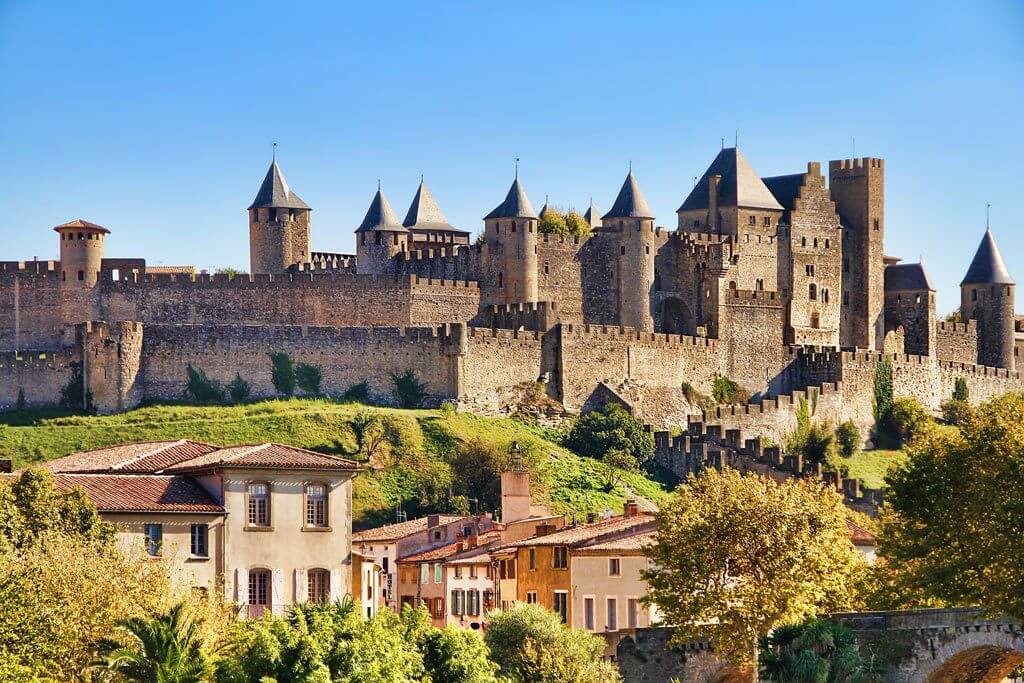
It’s time to hit the road and drive to Narbonne, the next stop of this South of France trip. The drive from Toulouse – Narbonne via the A61 highway is straightforward and only takes 1.5 hours.
If you are not in a hurry, stop for a couple of hours at Carcassonne to admire one of the most beautiful medieval towns in France . The Cité de Carcassonne is listed UNESCO World Heritage Site and is one of the top sights of the Cathar Country .
For your stay in Narbonne , book two nights at Hôtel La Résidence . Set in an elegant 19th building well located to the Canal de la Robine, with restaurants and public parking nearby, Hôtel La Résidence offers everything you could expect for a perfect stay in Narbonne.
Click here to book your stay in Hôtel La Résidence
Day 3 | Narbonne
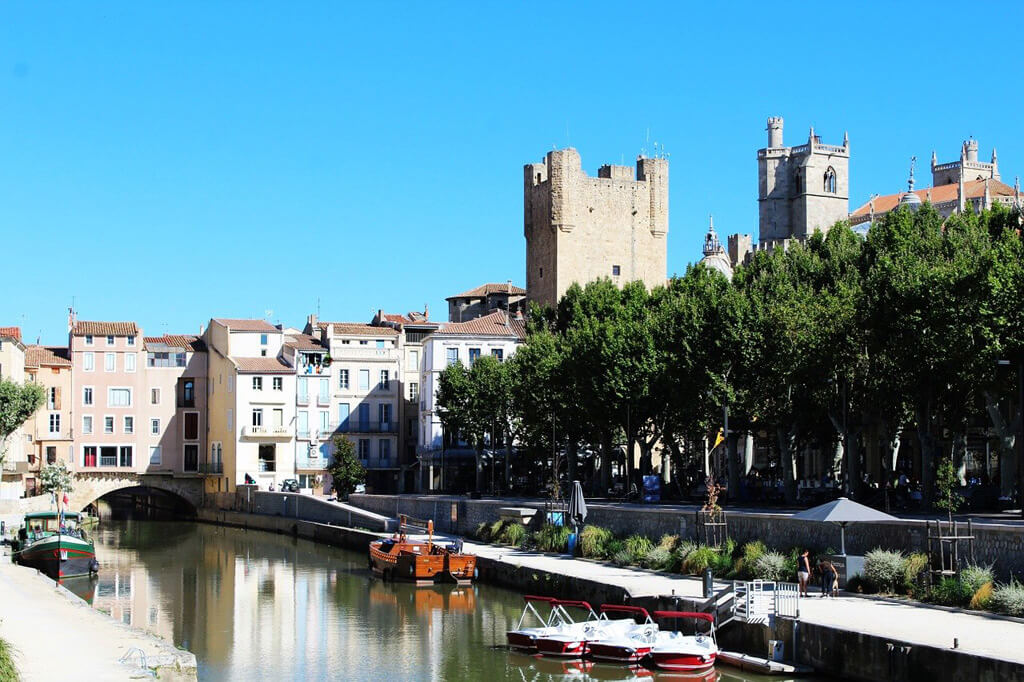
Located in the Aude department, in the Occitanie region , Narbonne is a touristy city thanks to its 5 km of thin sand at Narbonne-Plage . It is also a city with a rich history that goes back to Roman times (118 BC) and an excellent base to explore the Massif de la Clape and the Fontfroide Abbey.
The Canal de la Robine is one of France’s oldest canals, and it separates the Historical Center and the Cité district in central Narbonne. Here, you will see vestiges of Antiquity, the Middle Ages, the Renaissance, and Narbonne’s Age of Gold at the end of the 19th century.
The list of interesting things to visit in Narbonne includes:
- Stroll around the Old Town
- Visit the Cathédrale Saint-Just-et-Saint-Pasteur
- Visit the Archaeological Museum of Narbonne
- Visit the Musée Lapidaire de Narbonne
- Explore the Musée Roman Horréum (ancient Roman galleries)
- Beach day at Narbonne-Plage
- Sail the Canal de la Robine on an electric boat (no boating license required).
Day 4 | Arles
After three days in the Occitanie region, this road trip Southern France moves to Provence. Provence is one of France’s favorite destinations and a must on any Southern France itinerary. With gorgeous towns such as Cassis, Grasse, St Remy, and Arles and stunning countryside, you can see why it remains one of the most popular destinations in France to visit.
Start the day early with a coffee and drive to Arles , where you will spend one night. For your stay in Arles, book at L’Hotel Particulier , a charming private mansion built in the 18th century and lovingly renovated in the center of Arles. L’Hotel Particulier offers stylish rooms with comfortable beds, beautiful floral gardens, a pool, and private parking.
Click here to book your stay at L’Hotel Particulier
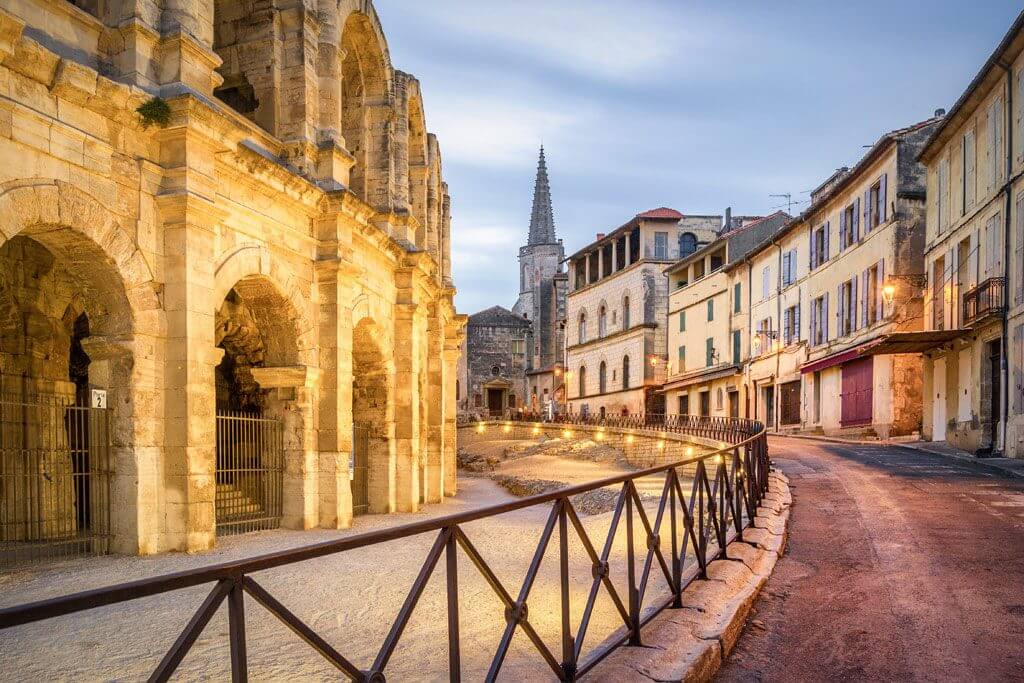
Located in the heart of Provence, Arles is always a favorite. Arles has it all: an interesting Roman heritage, beautiful 17th-century mansions, mazy streets, modern museums, and the wide rolling Rhône River. When the temperatures are warm, all the café-terraces and restaurants are full of locals and tourists, creating a lively atmosphere.
Arles was also the base for Paul Gauguin and Van Gogh. Here, Van Gogh painted some of his most famous masterpieces.
The list of interesting things to visit in Arles includes:
- Arènes d’Arles
- Roman Theater
- Arles through Van Gogh: Espace Van Gogh & Fondation Van Gogh
- Abbey of Montmajour
- Church and Cloister St Trophime
- Musée Départamentale Arles Antique
- Les Alyscamps (Roman necropolis)
Days 5 and 6 | The Camargue
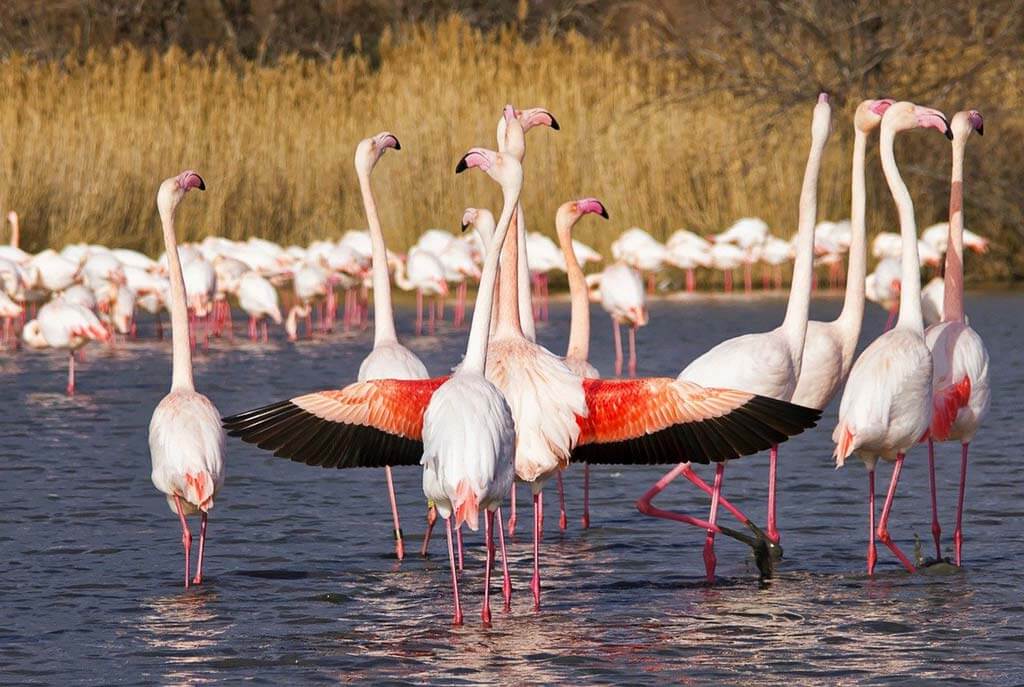
From Arles, this south of France itinerary 14 days takes a detour for the sole reason of visiting the Camargue. The Camargue Regional Natural Park is the largest wetland in France, covering a surface of 100,000 hectares. It is famous worldwide for its stunning landscapes, lakes, and exceptional fauna.
Located on the axis of migration of birds from northern Europe to Africa, this area is also home to one of the main nesting sites for pink flamingos in France. But above all, the Camargue is an area for breeding Camargue horses and bulls! Here, bulls and horses live in semi-freedom, most often in herds, watched over by herdsmen on horseback.
From Arles, take the road D570 to Les Saintes-Maries-de-la-Mer . Considered the capital of the Camargue, Les Saintes is a little corner of paradise with beautiful beaches, wild nature, and some places of interest.
After four days on the road, it’s time to relax for a couple of days in one of France’s most beautiful natural regions! For your stay in the Camargue, book two nights at the Hotel La Tramontane . The hotel offers individually-decorated, airy rooms which lead to the outdoor swimming pool, the garden, and a private pond.
Click here to book your stay in Hotel La Tramontane
To get the most out of this natural paradise, book this guided safari in a convertible 4×4 , which starts from Les Saintes-Maries-de-la-Mer. If you prefer to explore the Camargue from the water, rent a boat (with or without a skipper) at Port Camargue.
Day 7 | Aix-en-Provence
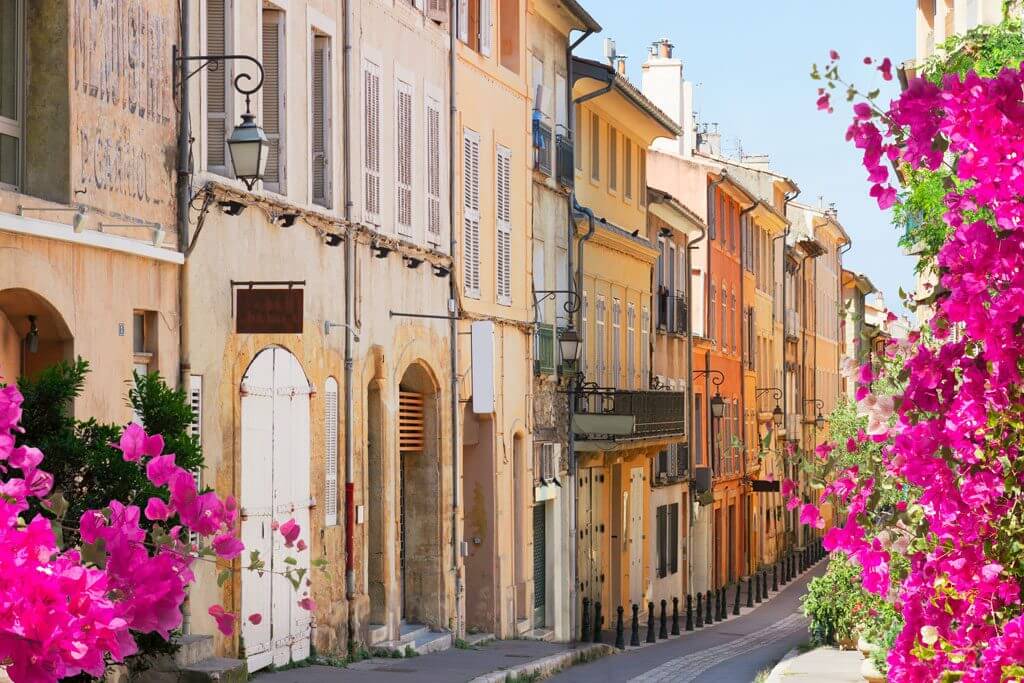
Start the day early and enjoy a last breakfast in the gardens of Hotel La Tramontane. Back to Arles, take the N113 road direction to Aix-en-Provence , the next stop of this Southern France road trip.
For a unique stay in Aix-en-Provence, book a night at the Hotel des Augustins , a former 12th-century convent just off the famous Cours Mirabeau in the heart of the Old Town. The hotel features spacious rooms combining historic and modern features and a magnificent lobby.
Click here to book your stay at Hotel des Augustins
Aix-en-Provence is the typical Provencal city and a wonderful place to explore in Southern France. Aix’s historic center, with Italian influences, boasts beautiful architecture and pretty squares adorned with stone fountains. Aix is also known for its traditional markets. The Aix-en-Provence markets are worth exploring for their colorful stalls and delicious local products.
The list of fun things to do in Aix-en-Provence includes:
- Stroll around the Old Tour
- Aix-en-Provence markets walking tour with tastings
- A coffee break at Cours Mirabeau
- The Mazarin neighborhood
- Paul Cézanne’s workshop
- Granet Museum (art museum)
- Taste the famous calissons (Aix’s typical sweets)
- E-bike tour of Montagne Sainte-Victoire
TIP: Don’t miss this 3-hour gourmet walking tour in Aix-en-Provence’s Old Town!
Days 8 and 9 | Cassis
From Aix-en-Provence, drive to Cassis , the last Provencal destination of this South of France itinerary by car. For your stay in Cassis, book two nights at Le Jardin d’Emile . This characteristic Provence-style house has the perfect location by the beach with a short walk to the port/town. Le Jardin d’Emile offers uniquely decorated rooms, each with a different color and atmosphere, a garden, and an outdoor terrace overlooking Cape Canaille.
Click here to book your stay in Le Jardin d’Emile

Cassis is a cute fishing town located on one of the sides of the Parc National des Calanques de Marseille-Cassis . This colorful town near Marseille , so typical of Provence, is one of the best coastal towns in France , perfect for a couple of relaxing days by the Mediterranean Sea.
Spend day 8 exploring Cassis. The town is dominated by a castle built in the 8th century, and it is renowned for its trails running along the Cap Canaille, its round pebble beaches, and a little bit further, its creeks and their majestic cliffs plunging into deep blue water (Calanques). There’s also an adorable little port lined with multicolored buildings, cafés, and delicious restaurants offering bouillabaisse, seafood, and fish dishes.
On day 9, you can take a day trip to Marseille – here’s a list of the best things to do in Marseille . You can also explore the Calanques of Cassis on foot or on a catamaran tour.
Suggested tours and activities:
- Calanques National Park sea kayaking tour
- Calanques Cassis Hike: Port-Miou, Port-Pin & En-Vau
- From Marseille: 5-hour catamaran tour with lunch
- Calanques & Viewpoints guided tour with mountain e-bike
- Rent a boat, with or without a skipper, in Cassis
Days 10 and 11 | Cannes
The last days of this South France road trip are spent in Côte d’Azur, also known as French Riviera . Côte d’Azur is well-known for its beaches and coves, impressive views, azure water, and for being a playground for the wealthy. The French Riviera is also home to pretty towns and villages, and there’s a vibrant cultural scene, especially in the summer.
From Cassis, drive to Cannes , where you will spend two nights. For your stay in Cannes, book at Hotel Croisette Beach Cannes Mc Gallery . Located in central Cannes, 150m far from the famous La Croisette beach, this hotel offers the best of the French Riviera: stylish and comfortable rooms, a swimming pool, a restaurant with sea views, and a private beach at an extra cost.
Click here to book your stay in Hotel Croisette Beach Cannes Mc Gallery
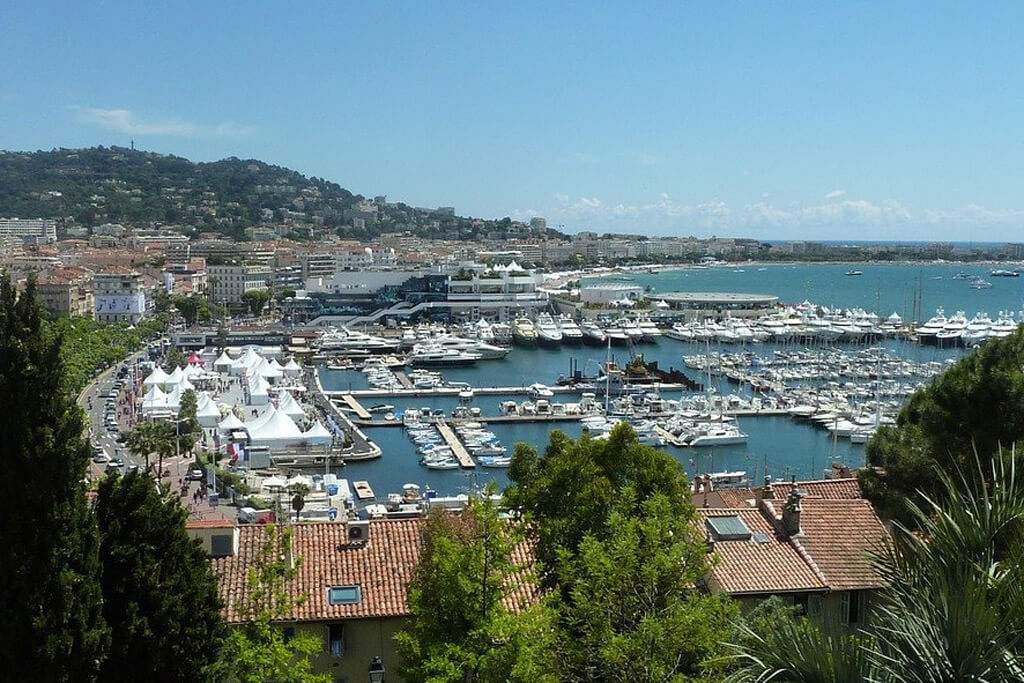
Known for its luxurious accommodations and shopping, as well as for the world-famous Cannes Film Festival, Cannes truly is a dream destination for many travelers. Cannes is the kind of place you visit when you want to relax and enjoy some luxury. With its stunning beaches, warm weather, and convenient location close to Nice, this is where the stars go for a holiday.
Use the first day in Cannes to visit the city. The list of fun things to do in Cannes includes:
- Cannes free walking tour
- Explore Le Suquet (Cannes’ oldest neighborhood)
- La Croix des Gardes neighborhood
- The Old Port
- La Croisette Walkway
- Sandy beaches
- Villa Rothschild
For your second day, you can take a relaxing catamaran tour with lunch or drive to one of the many great places to visit on the French Riviera near Cannes:
- Juan-les-Pins
- Boat trip to the Calanques d’Esterel
- Mandelieu-la-Napoule
- Private boat trip to Lérins Islands and Cap d’Antibes
Days 12, 13, and 14 | Nice
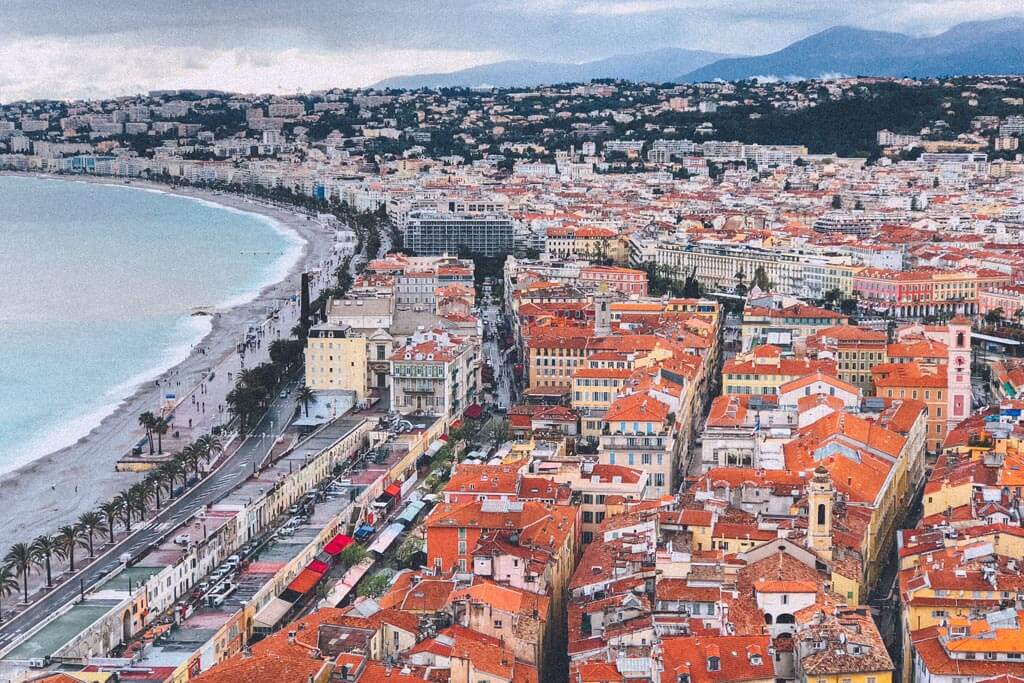
The last stop of this road trip South of France is Nice , the capital of the French Riviera. For your stay in Nice, book three nights at the Hotel La Pérouse Nice Baie des Anges . This 4-star hotel is nestled into the Colline du Château, and it comes with Nice’s best view over the Baie des Anges. Rooms are huge, with elegant Mediterranean décor, and some of them also come with a private balcony with great ocean views.
Click here to book your stay at Hotel La Pérouse Nice Baie des Anges
In Nice , take your time to explore the Old Town, taste some provençal specialties, and, of course, have a stroll on the famous Promenade des Anglais ! Nice also has some of the best French Riviera beaches , and their turquoise waters are calling for a dip.
For your first two days in Nice, we recommend this Nice 2-day itinerary , which also explores the colorful neighboring town of Villefranche-sur-Mer . For your last day in the city, take one of these best day trips from Nice . We recommend Éze Village and Menton , but all the places on the list are lovely.
So, what are you waiting for? Book this South of France road trip itinerary today!
Click here for other Road Trips
Back to Homepage
Disclaimer: This article may contain compensated links, meaning we get a small commission if you make a purchase through our links. It costs you nothing more (in fact, if anything, you’ll get a nice discount) but helps us to go on creating incredible French content for you. We trust all products and brands promoted here and would never recommend anything that isn’t of value. Please read disclaimer for more info.
(C) Copyright 2019 - 2024 France Bucket List. All Rights Reserved. Designed & Developed by France Bucket List || Disclaimer || Privacy Policy || Contact |

The Best 10 Day South of France Road Trip Itinerary
- David Angel
Welcome to my South of France Road Trip itinerary guide, taking in the best of both Provence and Occitanie.
Driving in the South of France enables you to see far more than public transport does. You can get off the beaten path, seeing some of the most beautiful scenery in France along the way.
This road trip itinerary is packed with suggestions, and if you have a few more days available, there are plenty of possibilities for discovering even more amazing places.
I’ve devised this southern France road trip itinerary to include some of the best of Provence and the region to the west, Occitanie. The latter, covering southwest France, used to be known as Languedoc & Roussillon.
Provence is perhaps better known than Occitanie – but over several trips I’ve found both are equally compelling. This itinerary is an amalgamation of two of the south of France road trips I have done. It also takes you around six UNESCO World Heritage Sites.
The first few days are spent driving short distances around the west of Provence before heading west. You eventually return via the fascinating city of Albi, enjoying some of the most beautiful scenery in France along the way.
Table of Contents
South of France Road Trip Itinerary
Day 1 – avignon.

Avignon, my suggested starting point for this south of France vacation, is one of the best cities in France to visit. It’s best known as the City of Popes – six Popes presided from there in the 13 th and 14 th centuries.
The Palais des Papes – the Popes’ Palace – is one of the highlights. The immense fortified palace is one of the greatest Gothic buildings in France, and still dominates the whole city.
Avignon is also renowned because of the famous song, Sur le pont d’Avignon . The Pont Saint-Bénézet is named after the local saint who claimed he had a vision telling him to build a bridge on the site.
The location was unsuitable: the original 12th-century bridge was destroyed by floods, and just four arches of its replacement survive.

I suggest sticking to one day in Avignon , simply because there is so much to see elsewhere. It may well be worth considering a guided walking tour of Avignon , which will cover the main sights I’ve mentioned and the Notre Dame des Doms Cathedral near the Papal Palace.
There are also several more churches to explore, including those of St Didier and St Pierre, and the formidable circuit of town walls.
Also take a walk to the Rue des Teinturiers, one of the prettiest streets in Avignon. It’s set along a canal in an area once lived in by the city’s dyers and tanners, and one of their waterwheels is still preserved.
Places To Stay In Avignon
Hotel d’Europe : 5-star luxury on one of the loveliest squares in Avignon
La Mirande – 5-star elegance next to the Palais des Papes
Les Jardins de Baracane : gorgeous 17 th century guesthouse
Day 2 – Around Avignon – Pont du Gard, Orange And More

I suggest using Avignon as a base for the first part of this south of France road trip as there is such an abundance of day trips from Avignon .
One of the best things about staying in Avignon is that so many of the best places to visit in Provence are within reach by public transport. That said, a great many places to see in Provence can only be reached by car.
The drawback of using public transport in the south of France is that you’re limited to seeing one place a day. Driving allows you to cover more ground more quickly, and on the second day of your South of France vacation you can easily reach two World Heritage Sites and explore some of the best of Côtes du Rhône wine country.
Start the day by heading west along the N100 from Avignon, continuing to Remoulins and following the D19 towards the Pont du Gard. It’s one of the most iconic bridges in Europe , a triple-layered arched aqueduct built in the 1 st century AD. The Romans built it to supply the nearby town of Nemausus with water.
It’s remarkably well preserved, among the outstanding Roman monuments in Europe. The Aqueduct is a few minutes’ walk from the car park and small museum devoted to the Pont.

After a couple of hours at the Pont du Gard, return to Remoulins and then join the A9 motorway (toll applies) for the short journey (around 30 km from where you join the motorway) to Orange. Follow the signs to the centre of Orange, a provincial town to the north of Avignon.
Here you’ll need a couple of hours to visit two more amazing Roman sights (which make up another World Heritage Site). The Arc de Triomphe d’Orange is beautifully preserved, especially its exceptional bas-reliefs. It’s believed to date from the reign of the first Roman Emperor, Caesar Augustus, and there is also an inscription dedicated to his successor, Tiberius.
The other unmissable sight in Orange is the Théâtre Antique, or Ancient Theatre. Again, it’s incredibly well reserved, with an intact stage wall. The statue in the stage wall is of Emperor Augustus, during whose reign it was probably built. The Theatre has been used to stage productions again since the 19 th century.

The stage is an astonishing 60 metres wide, and dramas and comedies would have been performed on it in ancient times. Nowadays it’s used for opera performances, especially during the summertime Choregies d’Orange festival.

You can return to Orange via the backroads around the famous wine village of Chateauneuf-du-Pape. Alternatively, a more scenic route takes you east via Violes to the Dentelles de Montmirail, Beaumes-de-Venise and Carpentras before swinging south-east to Avignon.
Day 3 – Avignon to Arles
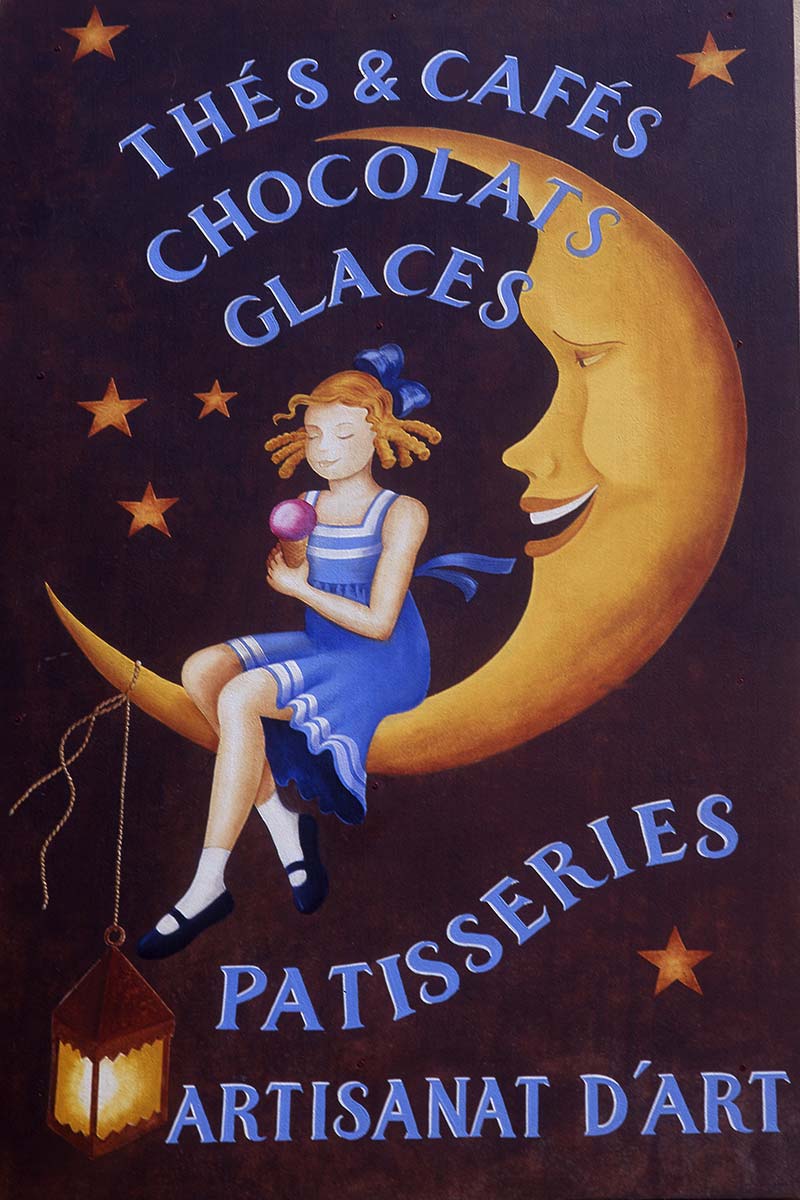
We leave Avignon behind on the third morning of our South of France road trip, gently making our way a short distance down to the Rhone to the gorgeous World Heritage city of Arles.
Begin the day by driving the 10 miles (16 km) south from Avignon to the gorgeous little town of St Remy de Provence. I’ve stopped here numerous times over the years, and always found something new to intrigue me.

It’s mainly known for its connection to Vincent van Gogh, who made several of his most famous paintings there, including Starry Night and Olive trees with the Alpilles in the background . He produced these while a patient at what was then known as the Saint-Paul Asylum, on the southern edge of the town.

This is now known as the Centre Culturel Saint-Paul de Mausole, and is next to the same groves of olive trees van Gogh painted. These are, in turn, next to the ancient Roman city of Glanum. Two of the best-preserved monuments – the Mausoleum of the Julii and Triumphal Arch – are on the west side of the road, while the rest of the city is on the other side.

The settlement pre-dated the Romans, who occupied the site until it was ransacked around 260 AD by the Alemanni. The ruins of the main town are substantial, including part of a temple, a well-preserved main street, baths and a spring.
Head south over the jagged hills of the Alpilles range, from which you emerge with a view of the vast coastal plain. The D5 road continues around to Les Baux de Provence, one of ‘les plus beaux villages de France’.

It’s certainly one of the most dramatically sited villages in France, occupying a limestone outcrop with superb views in all directions. The village is huddled below the ruined medieval castle, which ruled over more than 70 villages before the line of succession ended in the 15 th century.
Most of the old village is given over to tourism, with many of the houses now used as galleries or gift shops. But don’t be put off. I’ve visited the village three times, and most recently loved the walks around the Val d’Enfer (the Valley of Hell) to the north of the village.

The views there are superb, and if you have time I also suggest visiting Les Carrières de Lumières , a series of underground caverns that hosts some amazing art installations. At the time of writing they have a Dutch theme, with Vermeer, van Gogh and Mondrian featured.
The village also gave its name to bauxite, an aluminium ore quarried to exhaustion until the end of the 20 th century. Your day is almost done. It’s a 20-minute drive – around 8 miles (14 km) south-east to the wonderful city of Arles, where I suggest staying two nights.
Where To Stay In Arles
Hotel de l’Anglais: wonderful guesthouse in the heart of Old Arles
Hotel de l’Amphitheatre
Hotel Spa Le Calendal
Day 4 – Arles

Arles may just be our favourite city in Provence. I’ve visited several times over the years, and it’s a great base for a day – even several. It’s the gateway to the Camargue, the wetlands of the Rhone delta, and like Avignon, makes a great base for day trips in the south of France.
Some of you may prefer Arles to Avignon – it’s more vivid, bright and colourful than its more austere neighbour to the north. Arles, another UNESCO World Heritage city, has two main draws for its visitors: its Roman sites and Vincent van Gogh association.

The Roman amphitheatre, which holds crowds of 25,000, was completed a few years after the Colosseum in Rome. It’s in excellent condition, and like its counterpart in Nimes, hosts bullfighting (but no killing), and concerts. It’s an awesome venue for events like this, and an absolute must-see if you visit Arles.
The Roman Theatre is a short distance away. It would have been of similar size to the Roman Theatre in Orange, but is in worse state of preservation. The most intriguing of the Roman sites in Arles is Les Alyscamps, a Roman-era necropolis that continued to be Arles’ principal burial ground a thousand years after they had gone. Roman burial grounds were traditionally outside the city walls, as was the case here.

Vincent van Gogh moved to Arles in 1888, and though some of his time there could be described as turbulent, it was also one of the most productive of his lifetime. Arles undoubtedly inspired him. It was where he produced the likes of Starry Night Over the Rhone , The Yellow House , Café Terrace At Night , L’Arlesienne and some of his famous still-lifes and studies of chairs.
He left Arles for St-Remy in May 1889, having spent time at the Hospital (now L’Espace van Gogh). If you have an interest in van Gogh, you should also make time to visit the Fondation Vincent van Gogh , which usually has a small collection of his paintings on display.
Aficionados of modern architecture should also seek out Luma Arles. It’s an arts and cultural centre, the distinctive work of Frank Gehry. The architect of the Guggenheim Museum Bilbao and Dancing House Prague completed this commission in 2021, and it’s one of his best. I love the description of the Tower in the Guardian just after its completion – ‘Bacofoil scrunched by an invisible fist’.
Day 5 – Arles to Carcassonne

The fifth day of your South of France road trip is really down to you. It’s a two-hour drive, mostly along the A9 autoroute, to your next stop, Carcassonne. You may wish to see more of Arles. Or perhaps you may wish to get to Carcassonne as early as possible.
On the other hand, there is the option of heading south to the fascinating Camargue, or visiting some intriguing seaside towns very close by. I spent a couple of days of my first south of France road trip, back in the summer of 1988, in this area and have always meant to return.
We meandered around the Camargue for a while, camping near the beautiful old seaside town of Le Grau du Roi, on the western edge of the wetland area. Le Grau is a few miles along the coast from La Grande Motte, a resort built in the 1960s and 1970s.
I wrote in my journal at the time that it was ‘a seaside resort for aliens’. Many of the buildings – designed by Jean Balladur – are pyramid-like constructions. They were supposedly inspired by some of the pyramids of Central America, but always struck me as being more futuristic.

The medieval fortress town of Aigues-Mortes is a few miles along the coast on the D62. The town walls are superb, the architecture of much of the small town likewise. It’s on the shore of the Camargue, on the edge of a vast expanse of salt flats. I haven’t returned there since the ‘80s, but would recommend anyone intrigued enough to go exploring.
Head for the A709 and then the A9 autoroute south of Montpellier. La Languedocienne takes you past the splendid old cities of Beziers and Narbonne, and at the latter take the A61 to your next stop, the fortified town of Carcassonne.
Places To Stay in Carcassonne
Hotel de la Cite & Spa MGallery : stunning 5-star hotel in the medieval citadel
Sowell Hotels Les Chevaliers : fine 4star in the Ville Basse, with some of the best views in town
Day 6 – Carcassonne

Carcassonne is one of the great icons of France and most beautiful castles in Europe. The city – close to the Mediterranean and trade routes – has been fortified to some degree since Roman times.
The Visigoths took over the city, and the Carolingians, under Pepin the Short, took over in the 8 th century. The city was also renowned as one of the main refuges of the Cathars, Christians with what the Catholic Church considered heretical beliefs. As part of the Albigensian Crusade, thousands were brutally expelled from Carcassonne.
I’ve visited Carcassonne on three south of France road trips, and each time the initial sight of it has blown me away. The Cité de Carcassonne – the Citadel – encompasses the Old Town and Castle (Chateau Comtal), its 50 or more towers and turrets and immense walls visible from many miles away.
It’s an amazing sight from the Pont Vieux – the long medieval bridge across the river Aude – and from the vineyards that surround the town. The Cité is quite small and only takes a few hours to explore, including its gateways and ramparts and the Basilica of St Nazaire.

Each time I’ve visited I’ve ended up spending more time in the Ville Basse – the modern lower town – than the Cité. A restored medieval citadel isn’t really conducive to day-to-day modern life, and this is where you’ll find more Carcassonne restaurants and hotels.
While there, don’t miss the Cathedral of Saint-Michel, which replaced the Basilica in the Cité as the region’s mother church in 1803. Also take a drive into the surrounding countryside to appreciate some of the amazing views of the Cité. Some of the best are from the vineyards surrounding the town.
Carcassonne is a UNESCO World Heritage Site, and is on the doorstep of another – the Canal du Midi. This amazing feat of engineering was completed in the mid-17 th century. The 240-kilometre waterway links the city of Toulouse with the Mediterranean Sea, and Carcassonne is near the mid-point of the Canal.
Day 7 – Carcassonne to Albi

The drive between these two World Heritage cities takes you over the unheralded Montagne Noire (Black Mountain). It also crosses from the Aude departement to Tarn, of which Albi is the capital.
The Montagne Noire is a vast upland forest area, and the D118 winds its way up and over the top. It takes you as far as the outskirts of the fine town of Castres , a name familiar to rugby fans around Europe. I only stopped for lunch for an hour or so, with just enough time to admire the quirky tanners’ houses above the Agout river.
A few old friends from Wales have visited to watch rugby there, and are very enamoured with the town. I’d be inclined to press on towards Albi, but there are plenty of other things to see in Castres, including a Goya Museum.

Continuing northwards, you eventually pass the turnoff for the gorgeous medieval village of Lautrec. If the name is familiar, it’s the ancestral village of the family of artist Henri de Toulouse—Lautrec, more on whom shortly. There’s a beautiful square surrounded by characteristic local brick and timber houses, and a fine 17 th century windmill on the hill above the village.
Eventually you reach the red-brick wonder of Albi, long one of my favourite cities in France. Park, check in and head straight for the most striking building in the city, the extraordinary Cathédrale Ste Cécile.
Its exterior looks more like a forbidding fortress than a place of worship. This was the intention of Bishop Bernard de Castanet, who began the Cathedral in the aftermath of the 13th-century Albigensian Crusade.
This campaign had seen the defeat of the Cathar heretics, so the new Cathedral was all about projecting Bernard’s power. Although he did cut costs somewhat by using brick rather than stone. Albi Cathedral is said to be the biggest brick building in the world. I’m pretty sure that it isn’t (mighty Malbork Castle in Poland is bigger) but it’s a hugely impressive edifice.

I strongly recommend taking a walk down the hill to the River Tarn to admire the view of the city with the Cathedral looming above. It’s particularly striking at sunrise, when the first light of the day glances across the red-brick buildings. Albi Cathedral is so different inside. I remember expecting a bare, austere interior, like a vast empty hall in a Castle. Not at all. It’s positively lavish and extravagant.
I was particularly struck by the beautifully painted vaults, which run the length of the church. This would have been done in the late 15 th and early 16 th centuries. The walls are also beautifully decorated, with the 15 th -century Last Judgment mural at the west end of the nave the oldest surviving work.
Places To Stay In Albi
Hotel Alchimy: 4-star with luxury suites in the historical centre
Hostellerie du Grand St-Antoine
La Voute du 26 – amazing apartment in medieval house in the historic centre of Albi
Day 8 – Albi and Albigeois Region

There are enough things to do in Albi to keep you there for two or three days. It’s one of the most underrated cities in France, a place rich in medieval architecture. Other cities (Toulouse) and towns in the region also have the distinctive red brick houses with timber frames – as does Lautrec, from the previous day of this South of France itinerary.
Start the day at the Toulouse-Lautrec Museum , housed next door to the Cathedral in the Bishops’ Palace, the Palais de la Berbie. The superb collection of Toulouse-Lautrec’s works was donated to his home city in 1922. He was famous for his Parisian posters and also drawings and paintings, and some of his best-known works are included in the collection, including the Moulin Rouge Masked Ball poster.
Spend more time exploring the less-known Albi sights, including the Maison du Vieil Alby (House of Old Albi, open afternoons only) and the Saint-Salvi church and cloister. I was fortunate to have allowed myself three days in Albi, leaving time for a short drive north into the Albigeois, the countryside north of Albi.
The main draw in the area is the gorgeous hilltop town of Cordes-sur-Ciel. It’s a beautiful rambling medieval town built on a steep hill, its cobbled streets full of galleries. It seemed to be pitched towards curious visitors, but when we visited, in April, there were very few of us around.
If Cordes is busy in summer and you really want to step back in time, head around 10 miles west to the village of Penne. It’s somewhere I yearn to return, an extraordinary village crowned by a wonky medieval castle. It’s in my personal most beautiful villages in France list, for sure.
Day 9 – Albi to Millau

With great reluctance, we bid farewell to Albi to head east towards the southern end of the Massif Central. On this day we visit one of the great modern famous landmarks in France . And there is the option of visiting the home of one of the best blue cheeses in the world, if your tastebuds are so inclined.
We suggest following the D999 east from Albi into the Aveyron department, a journey of around 60 miles (100 km). ass through the pretty town of Saint-Affrique before you reach the cheese mecca of Roquefort-sur-Soulzon.
This small village is paradise to blue cheese fiends like us, and I ate one of the best sandwiches of my life there. The contents were no more than a very large chunk of bread and a huge helping of Roquefort cheese, but this was my food paradise.

The story goes that a shepherd left a piece of cheese in the high pastures, retrieving it months later to find it covered in mould. He supposedly tried a bite, and so one of the most famous cheeses in France was born.
See Also: What Is France Famous For?
It’s a half-hour drive from there through the Grands Causses Regional Natural Park to Millau. These days it’s best-known as the nearest town to the Viaduc de Millau – or Millau Viaduct.
This magnificent bridge is the tallest in Europe, 270 metres above the Tarn valley floor at one point. One of its piers is 1143 feet (348 metres) high – which is considerably taller than the Eiffel Tower.

From Roquefort, I suggest rejoining the D999 and turning right, heading east to the nearest junction of the A75 autoroute (motorway). Join the autoroute, heading left (north) where you enjoy astounding views of the bridge and landscape below.
Turn off the A75 at the next junction, and follow the road around to the rest area (Aire du Viaduc de Millau) and viewpoint. From there you get a stunning view, with the piers of the bridge very close to each other. I also suggest driving around the Tarn Valley below the Viaduct to seek out more views of it.
One of my favourites is the beautiful village of Peyre, roughly a mile west of the Viaduct. This is where our dusk image of the Viaduct was shot.
Hotels In Millau
Couvent de la Salette : the best luxury bet in Millau, beautiful rooms in a centuries-old former convent
Domaine des Ondes – great guesthouse with wonderful mountain views
Day 10 – Millau to Avignon

Before the Viaduct was built, Millau was best-known as the gateway to the Gorges du Tarn. The upper reaches of the river flow through this spectacular narrow gorge on its way west, where it eventually meets the broad Garonne river.
Follow the D187 north out of Millau, continuing north-east to Le Rozier. From there, you have the option of heading 10 miles north to the best viewpoint in the Gorges du Tarn, the Point Sublime, which commands a breathtaking view of the valley.
From there, double back to Millau or head south via minor roads via Nant, to join the D7. This becomes the D999 a few miles to the east, and from here you continue into the Cevennes. briefly stopped) and Saint Hippolyte du Fort. The D999 takes you all the way to Nimes, home to of the greatest Roman monuments in France and an enchanting old centre.

You could overnight in Nimes or continue to Avignon – entirely up to you. I’ve stayed in Nimes twice, both times for one night, and would gladly do so again. The Maison Carrée, a 2 nd century AD Roman Temple, is one of the best-reserved ancient buildings anywhere in the world. It’s an astonishing sight, especially at dusk when the floodlights give it a magical aura.
The Temple is on the same square as the Carré d’Art, a contemporary arts centre and museum designed by Norman Foster (who also designed the Viaduc de Millau. Even if a little Roman monument fatigue is beginning to creep in, the Arènes of Nimes is a must-see. Like that of Arles, this amphitheatre is in superb condition and still used for concerts and events.
Getting To The South Of France

If you’re flying long-haul to France, from North America or Australia, it makes sense to fly to Paris, then catch the TGV (fast train) south to Avignon. You can then pick up your hire car from there. We recommend discover cars , who we use ourselves to find the best car rental deal in the area we’re exploring.
If you’re flying to the south of France from elsewhere in Europe, there are a multitude of airports in southern France to choose from.
You don’t necessarily have to start this south of France road trip from Avignon – you could easily do so from Carcassonne, which has a small airport that is a hub for budget carrier Ryanair.
I’ve flown into several other airports across the region, including Nimes (another Ryanair option), Marseille and Nice. You can also fly to Lyon (less than two hours’ drive north of Avignon) or even Grenoble, in the heart of the French Alps.
South of France Road Trip – Final Thoughts

I hope this south of France road trip itinerary gives you some inspiration. It’s an astounding part of the world, and this mixture of Provence and Occitanie will encourage you to delve deeper into one, or both, of them.
Check out more of our Europe road trip articles here:
- Normandy Road Trip – 7 days itinerary through gorgeous Normandy
- Portugal Road Trip – Alentejo – exploring the borderlands and backwoods of south-east Portugal
- Pembrokeshire Road Trip – 5 days around glorious West Wales
- Snowdonia Road Trip – 4 road itineraries around Eryri

David Angel is a British photographer, writer and historian. He is a European travel expert with over 30 years’ experience exploring Europe. He has a degree in History from Manchester University, and his work is regularly featured in global media including the BBC, Condé Nast Traveler, The Guardian, The Times, and The Sunday Times. David is fluent in French and Welsh, and can also converse in Italian, German, Portuguese, Spanish, Czech and Polish.

20 Best Places to Visit in the South of France
Written by Lisa Alexander Updated Aug 24, 2023 We may earn a commission from affiliate links ( )
Just mentioning the "South of France" conjures up images of stylish seaside holidays, complete with private beach clubs, upscale boutique shopping, and fancy gourmet dining. This description fits the French Riviera (especially Cannes, Monaco, and Saint-Tropez), but it's just one aspect of the South of France.
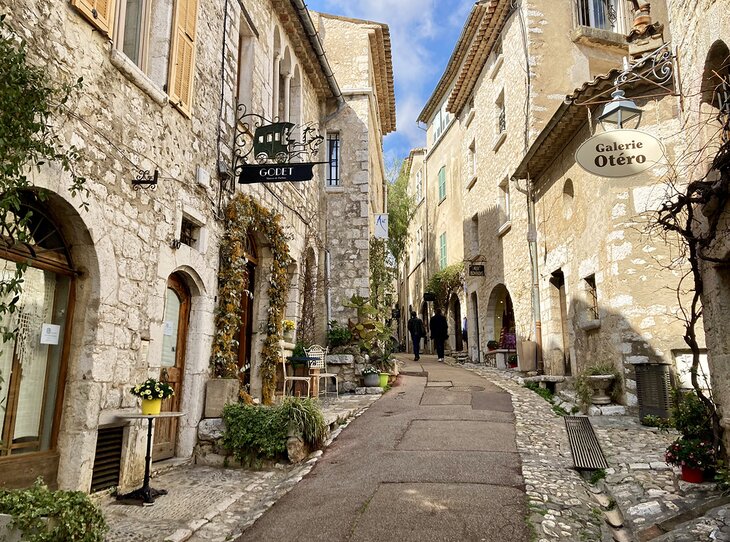
After the French Riviera, the second most-visited area in the South of France is sunny rural Provence . A patchwork of small farms, fields of lavender and sunflowers, and colorful open-air markets characterize the Provençal countryside. There are also fascinating medieval hilltop towns, Roman ruins, and historic cities such as Aix-en-Provence, Arles, and Avignon.
Would you like to discover the South of France's less touristy side ? Then head to Marseille for a glimpse of a real working city with a cosmopolitan vibe. Toulon is another authentic seaport with tourist appeal.
In Southwest France, the Basque seaside resort of Biarritz boasts an elegant Second Empire hotel, beautiful sandy beaches, and spectacular coastal scenery. Biarritz also has a superb aquarium and many fine-dining restaurants, as well as trendy bistros.
Slightly off the beaten path, the Languedoc-Roussillon region includes outstanding attractions like the UNESCO-listed fortified city of Carcassonne and the lively university town of Montpellier.
The most undiscovered area in the South of France is the rural Gascony region . This unspoiled countryside is known for its quiet villages and hearty cuisine. Toulouse is the biggest city in Gascony yet has the feel of a small town, thanks to its relaxed and convivial ambiance.
Plan your French sightseeing itinerary with our list of the best places to visit in the South of France.
1. French Riviera Seaside Resorts
2. nice: art museums and beaches, 3. aix-en-provence, 4. historic monuments in avignon & arles, 5. saint-tropez: a charming village with beautiful beaches, 6. the upscale seaside resort of biarritz, 7. the walled medieval town of carcassonne, 8. hilltop villages of provence (villages perchés), 9. the glamorous seaside city-state of monaco, 10. montpellier, 11. lourdes & pyrénées nature sites, 12. marseilles, the calanques & cassis, 13. ancient roman monuments & archaeological sites, 14. unesco-listed albi, 15. toulon & île de porquerolles, 16. the gascony region, 17. bordeaux, 19. the camargue, 20. plage de l'espiguette, map of places to visit in the south of france.
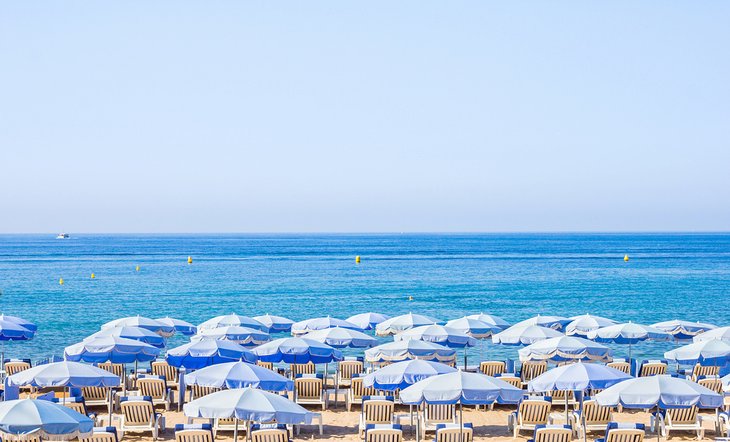
The sunny weather, mesmerizing deep-blue sea, and leafy palm trees give the French Riviera a dreamy quality. Also known as the "Côte d'Azur," the French Riviera delivers fabulous beach holidays with a hefty dose of culture.
During the early 20th century, artists flocked to the Côte d'Azur to capture the sublime scenery on canvas. As a result, many local museums display the works of Renoir, Matisse, Chagall, Picasso, and other painters who were captivated by the coastal landscapes.
Nice is prized for its gorgeous waterfront promenade and art museums, while Cannes is known for private beach clubs and the annual film festival.
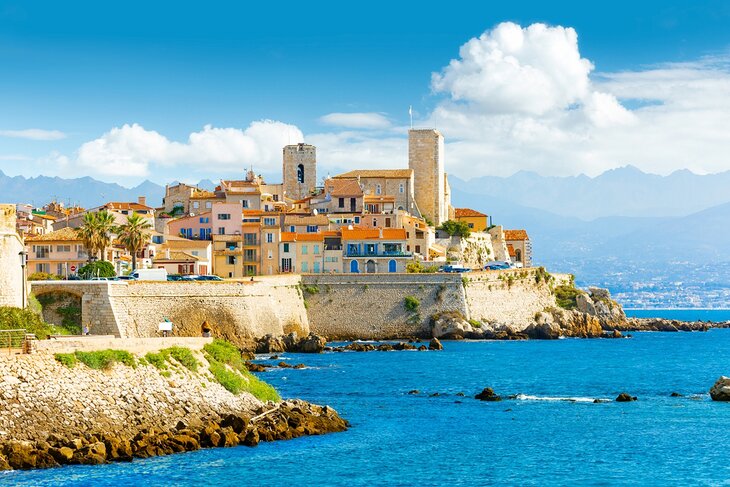
Other top resort destinations include Monaco and Saint-Tropez . The French Riviera also has smaller lesser-known towns that are full of charm, such as Fréjus, Antibes, Villefrance-sur-Mer, Beaulieu-sur-Mer, Èze, Roquebrune-Cap-Martin, and Menton.
Of all the French Riviera resorts, the coastline near Antibes has the best beaches, especially along the Golfe Juan on the Juan-les-Pins and Cap d'Antibes headland. In this area, there are about a dozen public beaches. The Plage de la Garoupe is the prettiest beach, with a fine white-sand shoreline, but much of it is occupied by private beach clubs during the summertime.
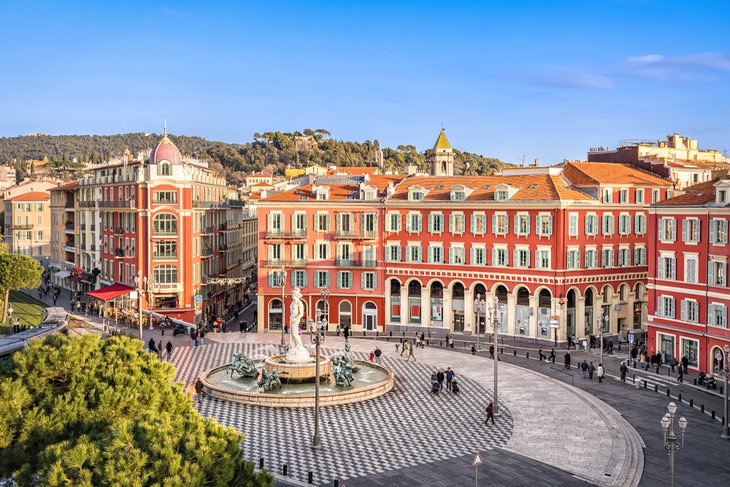
One of the highlights of the Côte d'Azur, the town of Nice deserves special mention because of its charming historic city center and amazing art collections: the Matisse Museum, Chagall Museum, Fine Arts Museum, and Museum of Modern and Contemporary Art.
With its scenic beachside location, balmy weather, and pleasant Mediterranean landscape, Nice has it all. The centerpiece of Nice is the Promenade des Anglais , a palm-fringed seafront promenade, while the Vieille Ville (Old Town) is a delightful warren of medieval alleyways and winding cobblestone streets.
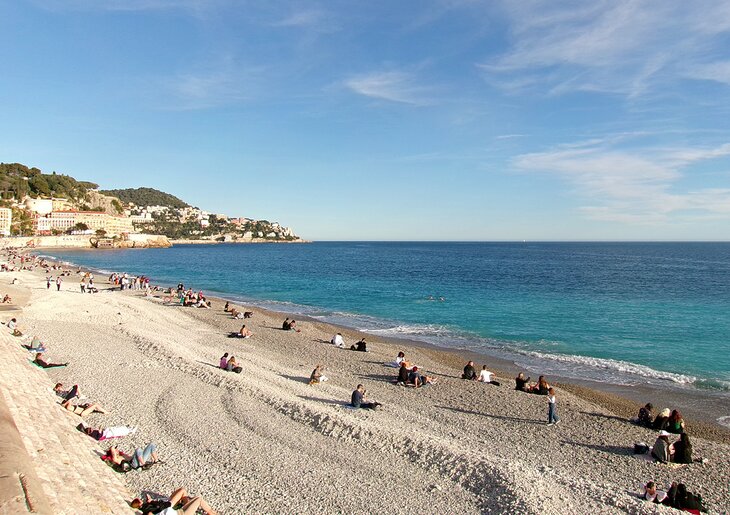
Surrounding Nice, the sunny Provençal countryside brims with day-trip possibilities, such as Grasse and Fréjus. Within a 30-minute drive are the atmospheric hilltop towns of Saint-Paul-de-Vence and Èze , as well as the fetching seaside villages of Cagnes-sur-Mer and Villefranche-sur-Mer .
Other highlights include the Villa Ephrussi de Rothschild on the Saint-Jean-Cap-Ferrat peninsula and the sea-facing Villa Kérylos in Beaulieu-sur-Mer, designed to resemble an ancient Greek nobleman's mansion of the 2nd century BC. Both villas are open to the public for visits.
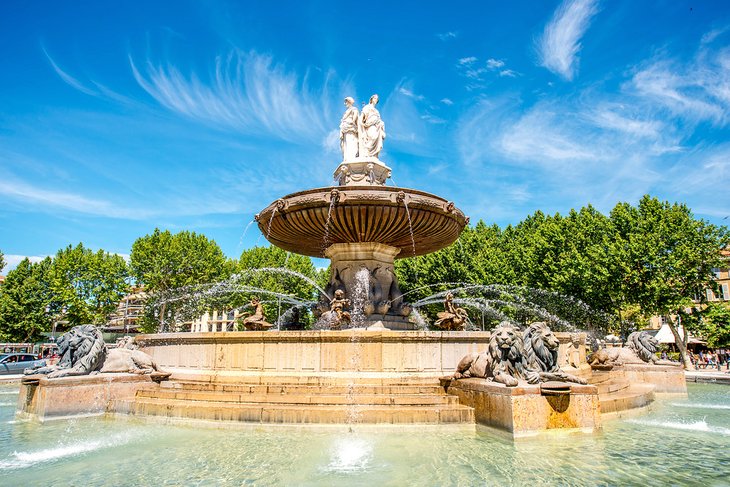
To experience the quintessential lifestyle of southern France, visit Aix-en-Provence. This elegant city epitomizes the Provençal region's character with its open-air markets, bustling outdoor cafés, and refreshing fountains that adorn the public squares.
As in most towns of Provence, the ambiance is slow-paced and relaxing. Aix-en-Provence residents have perfected the art de vivre, with leisurely meals and strolls along graceful tree-lined streets.
Top tourist attractions in Aix-en-Provence are Vieil Aix (the Old Town); the Cours Mirabeau , a tree-lined avenue with many sidewalk cafés and restaurants; and the Quartier Mazarin neighborhood, which was developed in the 17th century.
If you appreciate Post-Impressionist art, visit the Atelier de Cézanne , the studio where Paul Cézanne created many famous paintings. Cézanne was born in Aix-en-Provence and spent his childhood here. The Cézanne Trail gives you a chance to explore the landmarks associated with the artist on a self-guided walking tour.
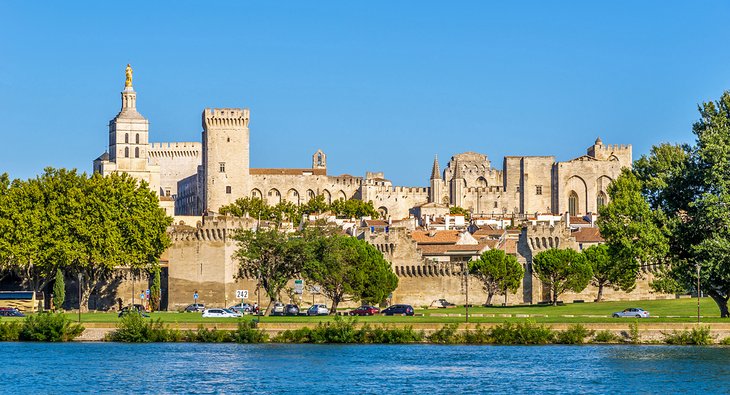
Discover the cultural heritage of Provence in Avignon and Arles. The UNESCO-listed Palais des Papes in Avignon stands as an awe-inspiring testimony to the grandeur of Christendom during the 14th century.
Avignon also has an outstanding museum of fine arts (the Musée du Petit Palais ), noteworthy medieval churches, and lively festivals throughout the year.
In the heart of Provence, Arles boasts a must-see Roman Amphitheater that was built in the 1st century to accommodate 21,000 spectators, as well as several other Roman-era archaeological sites.
In Arles, it's fun to wander the town to find the landmarks painted by Vincent van Gogh such as the Café du Forum (now called the Café van Gogh) on the Place du Forum . To see more sights painted by Vincent van Gogh, try the Van Gogh Route self-guided walking tour .
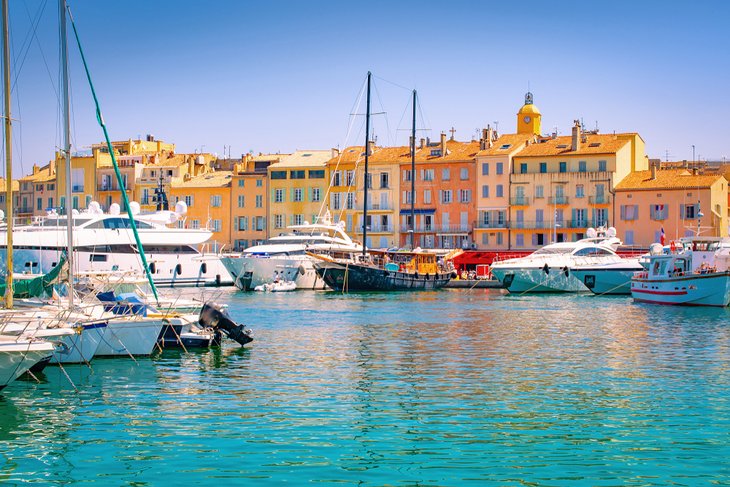
Saint-Tropez was just a humble fishing village until 1956 when the film And God Created Woman (starring Brigitte Bardot) made it famous. Scenes from the movie were shot on location throughout the town, including at the Plages de Pampelonne where private beach clubs continue to draw a fashionable clientele.
Today, this alluring beach resort still has the charm of a bygone era with its picturesque old fishing harbor ( Vieux Port ) and quaint historic town center ( La Ponche ). At the Musée d'Histoire Maritime , learn about local fishermen who began traveling beyond the Mediterranean Sea in the 16th century.
Besides its old-world charm and pristine sandy beaches, Saint-Tropez offers interesting cultural attractions . An outstanding collection of Impressionist and Post-Impressionist art is on display at the Musée de l'Annonciade , housed in a chapel that dates to 1510.
To soak up the ambiance of Saint-Tropez, spend time at the Place des Lices . This tree-shaded square features outdoor cafés where you can take in the everyday scenes of men playing pétanque (the Provençal version of bocce ball) and women shopping at the open-air produce market (on Tuesday and Saturday mornings).
If you are outdoorsy, take a hike on the Sentier du Littoral , a trail with superb views of the coastline. The trail begins in La Ponche and continues along a seaside path until Tahiti Plage (beach). Keep in mind that this trail has some rocky areas. Tip: Wear good hiking shoes.
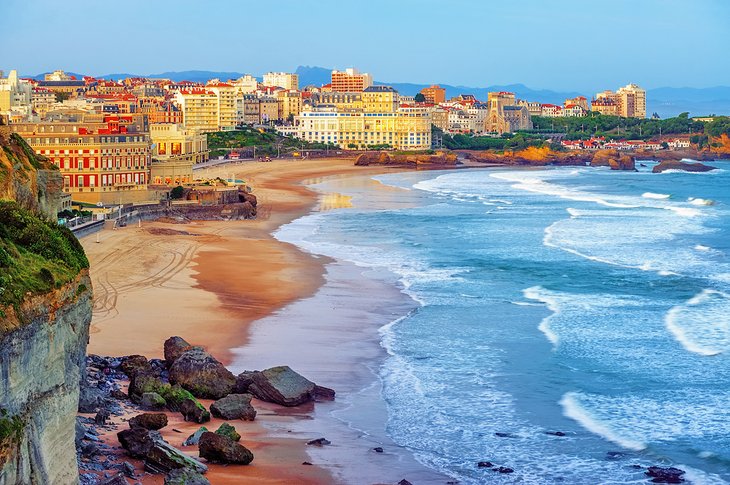
Stunning coastal scenery and elegant architecture distinguish Biarritz from other seaside resorts in the South of France. The town was once a holiday destination for aristocrats and royalty, and for that reason is known as the "Queen of Resorts and the Resort of Kings."
Empress Eugénie (wife of Napoleon III) adored this seaside location in the Basque region because of its dramatic natural beauty. Thanks to the empress and other aristocratic visitors in the 19th century, the little fishing village became a sophisticated and genteel beach town. The regal air of the past is evident in opulent oceanfront mansions and streets named after royalty.
The magnificent palace built for Empress Eugénie now houses the five-star Hôtel du Palais overlooking the Grande Plage , one of the top tourist attractions of Biarritz . The hotel offers sumptuous accommodations and exquisite fine dining.
Even if you don't stay at the Hôtel du Palais , you can splurge on a meal at the La Table d'Aurélien Largeau . This Michelin-starred restaurant serves contemporary Basque cuisine in a lavish Second Empire salon with ocean views.
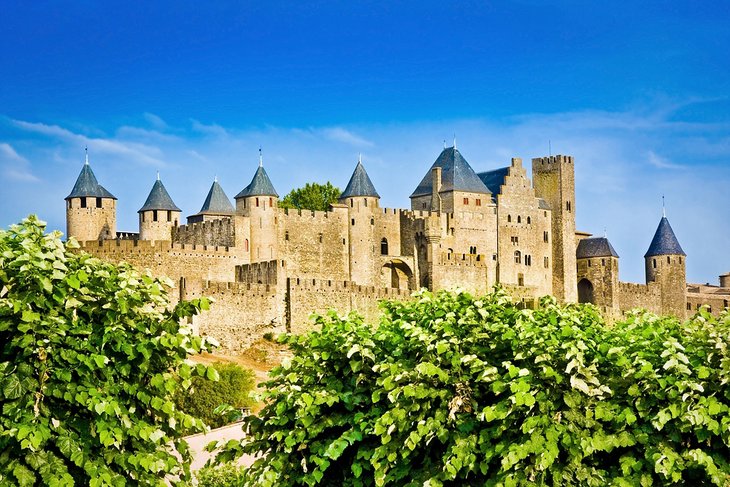
Carcassonne gives you the impression of stepping into the scene of a fairy tale. Perfectly preserved, this fortified medieval town is designated as a UNESCO World Heritage Site . The turreted towers lend a Disneyland-like quality.
By exploring the narrow alleyways and cobblestone streets of Carcassonne, you can imagine what life was like during the Middle Ages. Check out the Grand Puits de la Cité , a listed Monument Historique . Townspeople once withdrew drinking water from this 14th-century well.
As early as the 12th century, residents worshipped at the Cathédrale Saint-Nazaire et Saint-Celse , an impressive Gothic monument that is now a basilica. For a peek at a medieval fortress, head to the Château Comtal , where the Viscounts of Carcassonne resided in the 12th and 13th centuries.
Another nearby UNESCO-designated site in the Languedoc-Roussillon region is the Canal du Midi . This 360-kilometer canal was created in the 17th century to link the Atlantic Ocean to the Mediterranean Sea.
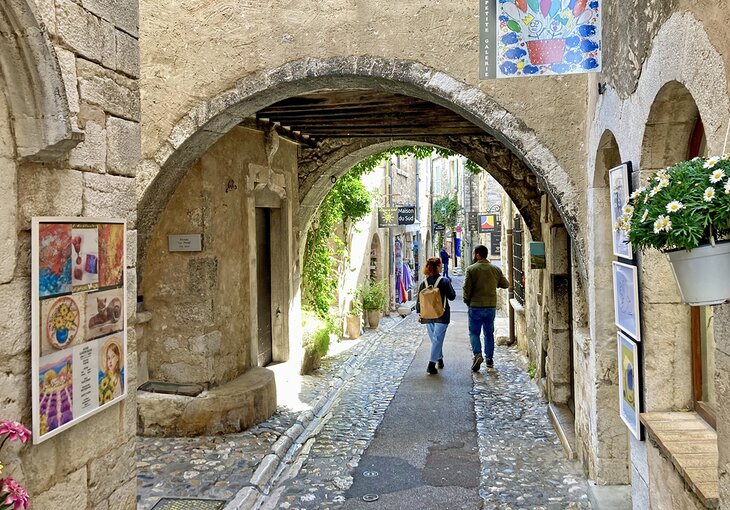
Hilltop villages ( villages perché s in French) encapsulate the old-world charm of Provence. Many of these ancient towns are still enclosed by ramparts, which adds to the magical feeling of being enclosed in a little medieval world.
You will enjoy wandering narrow cobblestone streets and pedestrian lanes to discover small boutiques, fountain-adorned squares, and historic churches. Provençal hilltop villages also will delight you with splendid views of the rural landscape.
If you are traveling by car, you can create a driving itinerary to discover the quaint country villages of Provence, especially in the remote Luberon region , which is designated as a UNESCO-listed biosphere reserve.
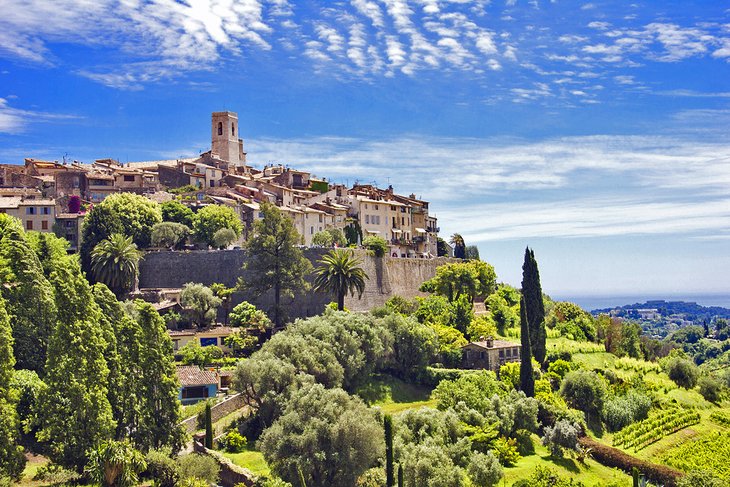
For those based in Nice, several interesting hilltop villages are easy day-trip destinations . These are beautiful little towns, although this area is no longer rural and instead is part of the suburban sprawl around Nice.
It's hard to resist the allure of Saint-Paul de Vence , about a 30-minute drive from Nice. This well-preserved walled town stands high on a precipice overlooking the landscape. The town's quaint cobblestone streets, enticing boutiques, and fabulous views make up for the fact that the village is overrun with visitors even in the off-season.
Beginning in the 1920s, many famous artists were drawn to the beauty of Saint-Paul de Vence, and their work is on display at the Fondation Maeght , two kilometers outside the village.
Along the French Riviera coastline , Èze is a captivating hilltop village (only 12 kilometers from Nice) perched 400 meters above the sea. This picture-perfect village affords sweeping vistas of the Mediterranean and the Cap-Ferrat coastline. Luxurious accommodations are found at the Château de la Chèvre d'Or hotel , a Relais & Châteaux property with a two Michelin-starred restaurant.
A 45-minute drive from Nice in the foothills of the Maritime Alps is the town famous for its perfume factories. Grasse also has a wonderful Vieille Ville (Old Town), full of narrow pedestrian streets, small squares, and historic buildings. To soak up the ambiance and sunshine, stop for a leisurely al fresco lunch on the Old Town's main square (Place aux Aires).
One of the Plus Beaux Villages de France , Gourdon (40 kilometers from Nice) boasts many artisan craft boutiques and an impressive château with gardens designed by André Le Nôtre. From Nice, you can go on a full-day Provence countryside small-group day trip to visit hilltop towns Grasse, Gourdon, and Saint-Paul de Vence as well as the seaside resort of Cannes.
Medieval hilltop villages are scattered throughout the Haut-Vaucluse area of Provence. Two more of France's Plus Beaux Villages are Séguret (10 kilometers from Vaison-la-Romaine) overlooking the Dentelles de Montmirail mountain range and Venasque , which affords views of Mont Ventoux.
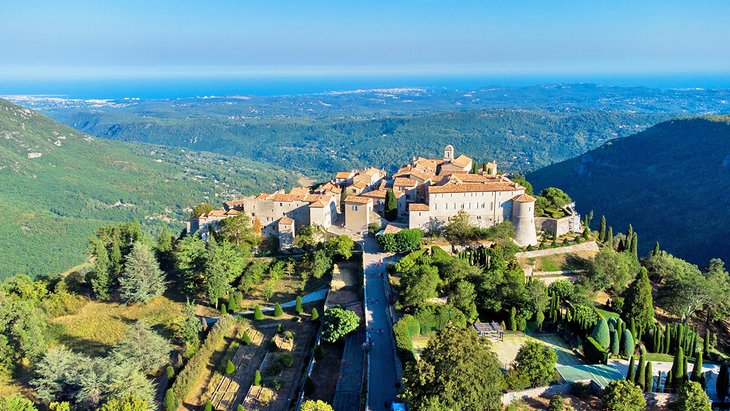
Presiding above rocky gorges in the Haut-Vaucluse, Monieux has a museum dedicated to truffles, the Musée de la Truffe du Ventoux, and hosts a Medieval Festival in September.
Crillon-le-Brave offers the charm of a quiet hilltop hamlet along with a five-star Relais & Châteaux resort property, the Hôtel Crillon Le Brave .
The Luberon natural regional park in the Haut Vaucluse has many medieval hilltop towns on the Plus Beaux Villages list: Gordes , dramatically perched on a steep promontory; Ménerbes , made famous by Peter Mayle's A Year in Provence novel; Lourmarin , which has a majestic château that hosts cultural events and festivals; Roussillon , built alongside an ochre cliff and surrounded by woodlands; and Lacoste , a tiny village full of art galleries and outdoor cafés.
Also in the Luberon natural park, Bonnieux stands out because of its traditional Provençal market and its fantastic museum devoted to the history of bread, the Musée de la Boulangerie. The town also has an interesting Romanesque church.
Apt is known for its large Provençal market (held on Saturday mornings) and museum of archaeology, while Cadenet has a luxurious boutique hotel, the Auberge La Fenière , with a Michelin-starred restaurant, Le Goût de Bonheur .
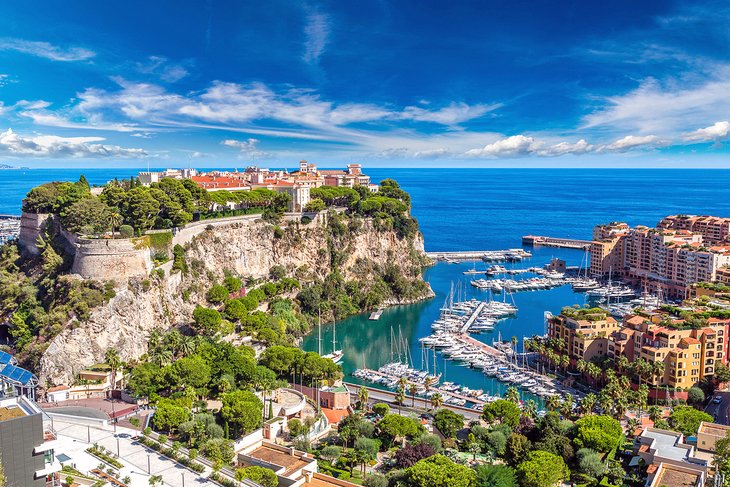
Perched on a promontory above the sea, Monaco boasts an impressive ancient castle and splendid coastal views. This dazzling city-state on the French Riviera is home to a royal family with a heritage that dates back to the 13th century.
Just a 30-minute train ride from Nice, Monaco draws fashionable crowds to its high-profile yacht shows, the annual Formula 1 Grand Prix de Monaco car race, and the Opening Gala at the Opera House.
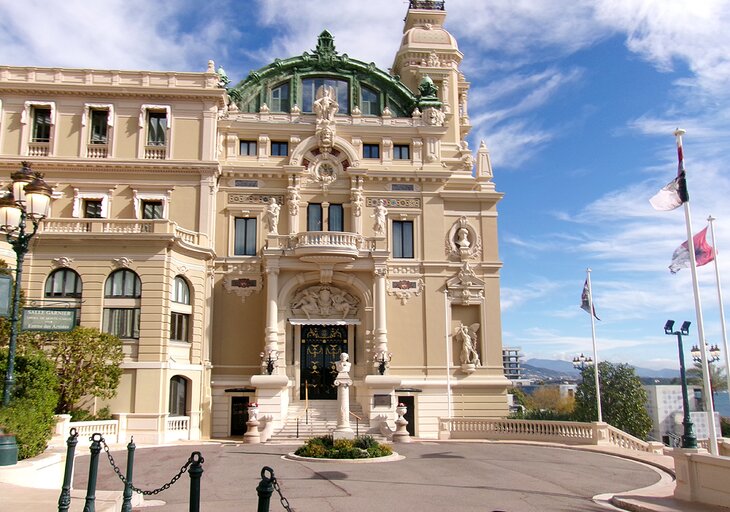
Even if you only visit for a day or afternoon, you can see many of the highlights of Monaco including the Palais Princier (Prince's Palace), the Musée Océanographique , and the ritzy Place du Casino in the Monte-Carlo district. These top attractions are all within easy walking distance.
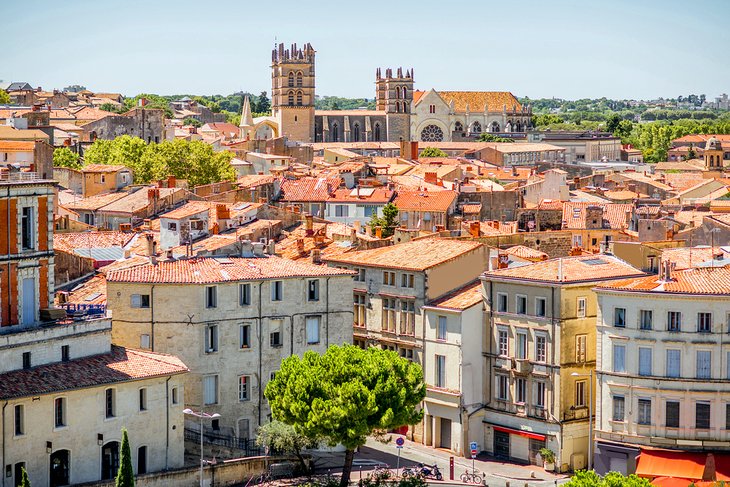
Despite being a modern urban city, Montpellier has retained its historic character in L'Écusson (the Old Town) with its jumble of winding medieval streets, elegant squares, beautiful churches, and stately hôtel particuliers (aristocratic mansions).
Encircling L'Écusson, spacious tree-lined boulevards were created by Baron Haussmann (who designed the Grands Boulevards of Paris) in the 19th century, replacing the city's medieval ramparts. The best of the 21st century is seen in Montpellier's sleek tram system with new cars featuring decorations by Christian Lacroix.
An air of trendiness and youthful energy reigns throughout Montpellier, thanks to the university-student population. Buzzing sidewalk cafés and chic gourmet restaurants delight locals and tourists alike.
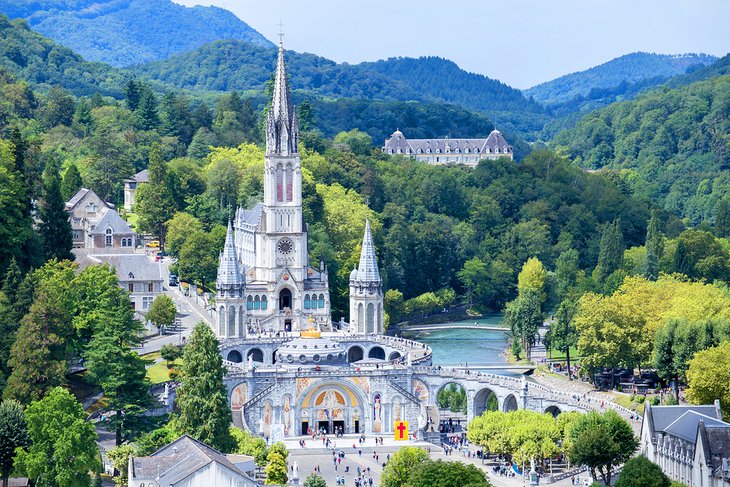
Densely forested, rolling hills provide an inspiring backdrop for the Lourdes cathedral alongside the rushing Ousse River. Pure spring waters flow into a Grotto where Saint Bernadette received visions of the Virgin Mary. Water from this source is believed to have healing properties.
Millions of pilgrims visit Lourdes annually, making it the biggest pilgrimage destination in France and one of the most important Catholic pilgrimage sites in the world. Pilgrims visit the Grotto of the Apparitions, worship at the Basilique Notre-Dame du Rosaire (Basilica of Our Lady of the Rosary), and participate in candlelit Marian processions.
One of the top attractions of the French Pyrenees , Lourdes draws many pilgrims who hope for cures to an illness by bathing in the sacred waters. So far, the Catholic church has validated 70 official miracles.
Lourdes is an ideal starting point to explore the Pyrenees Mountains. The UNESCO-listed Cirque de Gavarnie awes you with its spectacular scenery of sheer granite walls and rushing waterfalls. The highest summit (the peak of Mont Perdu ) soars to over 3,300 meters; the Grande Cascade with a 422-meter drop is Europe's tallest waterfall .
An easy walking path at the Cirque de Gavarnie allows you to soak up the scenery of snow-dusted mountains, alpine chalets, and goats grazing on the grass. You'll also enjoy listening to the refreshing sounds of a meandering stream and the chirping of little birds.
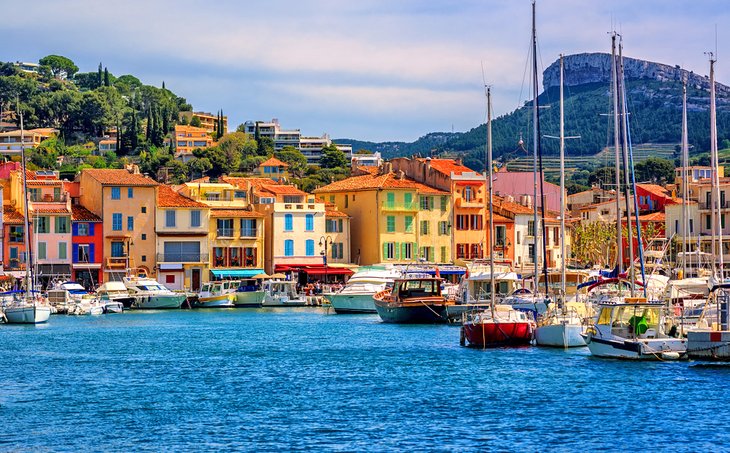
To experience an authentic Mediterranean seaport, spend a day or two exploring Marseilles . A bustling harbor explains the city's raison d' ê tre , as well as its rich multicultural heritage.
The Old Town ( Le Panier ) of Marseille brims with historic buildings, artisan boutiques, and authentic restaurants, while the Vieux Port dating back to the 6th century BC is still in use today as a launching point for fishing boats.
A fish market is held every morning at the harbor, and the restaurants around the waterfront are the best places to visit to sample the gastronomic specialty of Marseilles, bouillabaisse (seafood stew). The upscale Restaurant Miramar (12 Quai du Port) is famous for its bouillabaisse.
From the Vieux Port in Marseille, you can hop on a ferry to reach two favorite tourist destinations: the 16th-century Château d'If (fortress) on the île d'If, and the Calanques , a national park featuring white limestone coves filled with seawater. You can also take cruises and private boat excursions to explore the Calanques (coves).
It is even possible to take an Electric Bike Tour to the Calanques from Marseille . This full-day tour traverses the wild terrain of the Calanques with a stop at a beach for swimming and concludes with a visit to the Basilique Notre-Dame de la Garde, one of the top tourist attractions in Marseille .
Less than 30 kilometers from Marseilles is Cassis . The pastel-painted houses, picturesque port, and bright Mediterranean sunlight of this Provençal fishing village appealed to Post-Impressionist painters such as Paul Signac, Henri Matisse, and Raoul Dufy, who arrived in the late 19th and early 20th century to paint scenes of the harbor and coastline.
Today, Cassis is a recreational getaway for residents of Marseille as well as travelers who appreciate the charm of a small seaside town. If you would like to visit Cassis and the Calanques as a day trip from Marseille, an organized sightseeing tour is the perfect option.
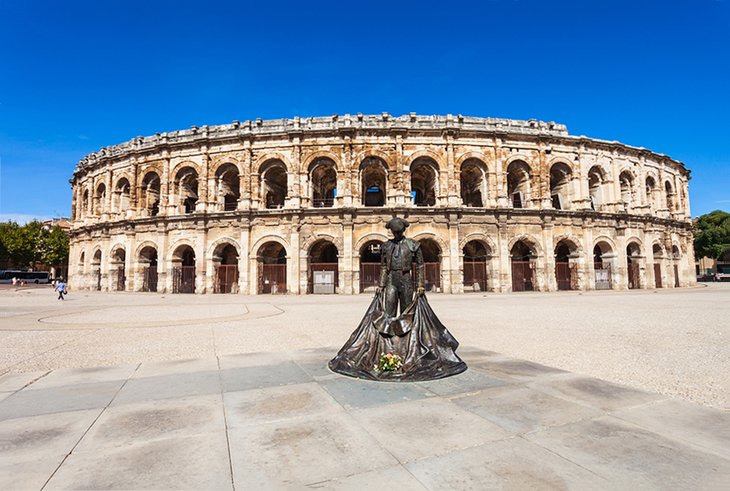
Both Arles in Provence and Nice on the French Riviera have fascinating ancient Roman ruins, among their other tourist attractions. The Arènes d'Arles was once used for gladiator fights and today hosts cultural performances. In the Cimiez quarter of Nice are the ancient ruins of Cemenelum, revealing vestiges of the Roman baths and amphitheater.
Nîmes in the Languedoc region has some of the most impressive ancient Roman monuments in the south of France. The Arènes de Nîmes , a perfectly designed Roman amphitheater, and the Maison Carrée (Roman temple) are remarkable for their exceptional state of preservation.
An important town during classical antiquity, Orange boasts a UNESCO-listed Théâtre Antique (Roman theater dating to the 1st century). This incredibly well-preserved ancient theater today hosts the renowned Chorégies d'Orange music festival, as well as other cultural events.
In the Haut-Vaucluse area of Provence , Orange is a 30-minute drive away from Vaison-la-Romaine , which is considered one of the Plus Beaux Détours de France (France's official list of places worthy of a detour).
Vaison-la-Romaine has remarkable archaeological sites dating to the 1st century. The old Roman theater of Vaison-la-Romaine is used as an open-air venue for Vaison Danses , an international dance festival that takes place every year in July.
Also in the Haut-Vaucluse area, Pernes-les-Fontaines was founded during the Gallo-Roman era. This relaxing town was named for its many fountains that provide abundant drinking water, a legacy of the Roman heritage.
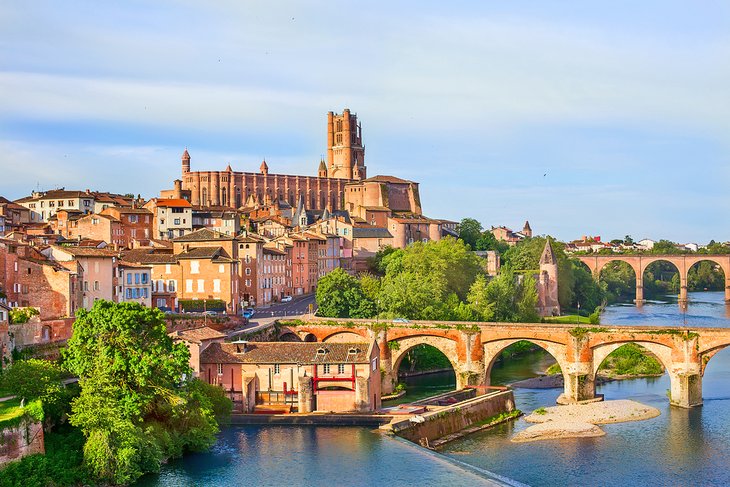
The historic episcopal city of Albi is designated as a UNESCO World Heritage site because of its exceptional architecture and cultural value. An imposing fortress-like cathedral presides over the medieval town.
Founded in the 13th century, the enormous Cathédrale Sainte-Cécile is the world's largest cathedral built from brick. The breathtaking vaulted interior features over 18,000 square meters of frescoes and an ornately decorated Gothic choir with 200 intricate statues. Not to be missed is the Last Judgment fresco, a masterpiece of Renaissance painting.
Housed in the UNESCO-listed 13th-century Palais de la Berbie, the Toulouse-Lautrec Museum is devoted to the work of the famous artist, Henri de Toulouse-Lautrec, who was born in Albi. The museum displays Lautrec's distinctive posters, as well as paintings and drawings.
Albi is a worthwhile day trip from Toulouse (a one-hour drive) or combined with an itinerary of other attractions such as Carcassonne (about a two-hour drive).
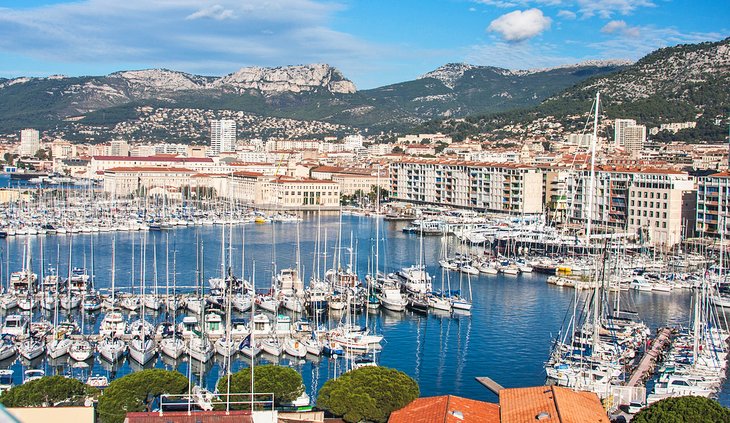
Toulon is less touristy than other seaside cities along France's Mediterranean coast yet offers plenty of attractions. This characteristic port town has an attractive palm-fringed waterfront, which is full of shops, and restaurants with outdoor terraces.
Highlights of Toulon are the atmospheric Le Mourillon quarter, an old fishing village; the historic harbor including the Porte de l'Arsenal , an 18th-century military building that houses the Musée National de la Marine (seafaring museum); and the astounding coastal views from Mont Faron (accessible by the Téléphérique du Faron cable car).
A traditional Provençal market has been held in Toulon since the 18th century. Today, this market takes place every day (except Mondays) at the Cours Lafayette from 7:30 am until 12:30 pm; vendors sell fresh vegetables, fruits, flowers, specialty food products, and Provençal fabrics.
From the Port of Toulon, you can sail away to the dreamy Île de Porquerolles just an hour's ferry ride away. The island features unspoiled natural scenery, sandy beaches, and secluded coves. It's the perfect destination for a relaxing getaway. Besides sunbathing, the Île de Porquerolles offers opportunities for snorkeling, hiking, and mountain biking.
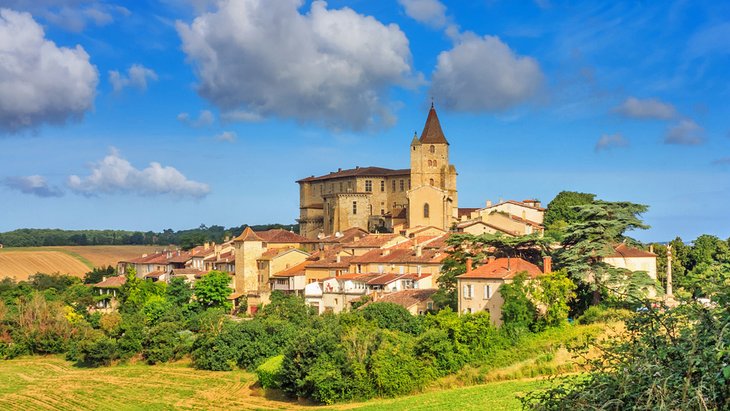
If you really want to get away from all the tourists, go to Le Gers (the Gascony region). This pastoral region in Southwest France is exceptionally charming, yet almost completely undiscovered by travelers.
Unspoiled forests and farmlands blanket the undulating countryside in a colorful patchwork while hilltops are dotted with imposing castles, walled medieval towns, and quiet country villages.
Toulouse is the largest city in the region, but it has a slow-paced, small-town feel. With its sultry climate and sidewalk cafés found at every turn, Toulouse immerses you in a relaxing ambiance typical of southern France.
There are plenty of things to see in Toulouse , including a UNESCO-listed Romanesque basilica and stately civic buildings constructed from the red bricks that earned the city its name, La Ville Rose .
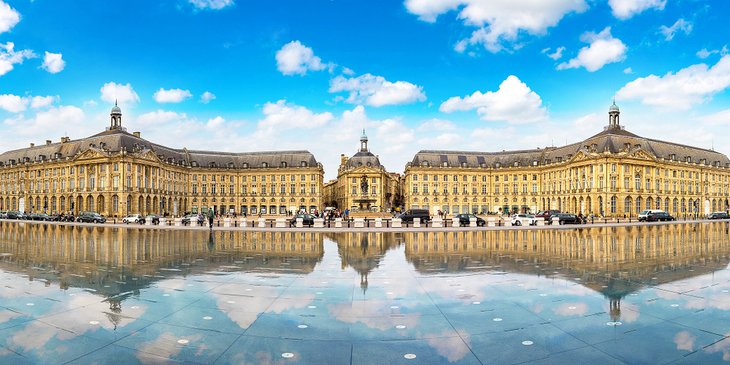
UNESCO has designated the entire historic city center of Bordeaux as a World Heritage Site because of its cultural value and architectural treasures from the Age of Enlightenment. The city boasts nearly 350 buildings that are listed as Monuments Historiques .
Built up along the Garonne River in Southwest France, Bordeaux is a cosmopolitan port town with a heritage that stretches back to antiquity. The city flourished during the 18th century, which explains the coherence of Neoclassical buildings dating to that era.
Among Bordeaux's top tourist attractions are the UNESCO-listed 12th-century Cathédrale Saint-André and the 18th-century Grand-Théâtre, which hosts ballet, opera, and music performances.
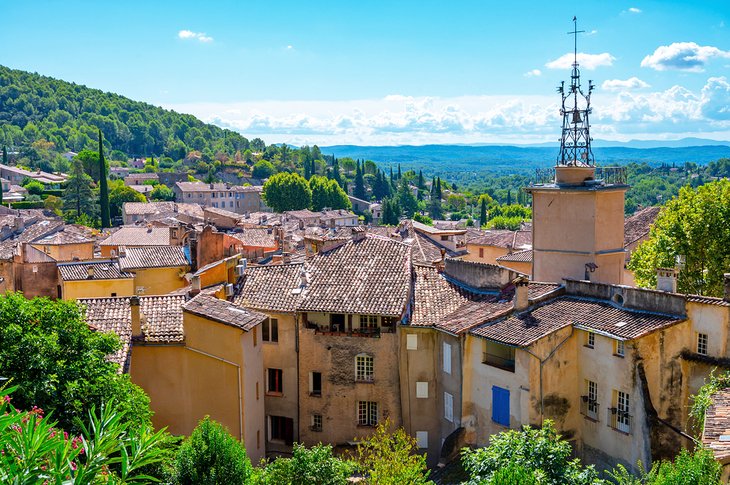
Le Var region is a hidden gem of Southern France, nestled between Provence and the French Riviera. Lush woodlands, rolling hills, and farmlands define the landscape of this rural area. The countryside is dotted with historic towns, ancient abbeys, and beautiful villages.
You may visit La Chartreuse de La Verne , a serene Carthusian monastery (and listed Monument Historique ) that is open to the public. You will appreciate the peaceful setting, as well as the monastery's 12th-century Romanesque church and the ceramics (for sale at the monastery's boutique) that are handcrafted by the resident nuns. The boutique is closed on Sundays.
The Abbaye du Thoronet is another 12th-century abbey (classified as a Historic Monument ) hidden deep within a forest of oak and olive trees. The Thoronet Abbey is one of three important Cistercian monuments in the South of France (the others include the Silvacane Abbey and the Abbey of Sénanque in Provence). You may visit the abbey year-round.
The Var region is full of traditional country villages and towns featuring fountain-adorned squares and inviting outdoor cafés. Lorgues is typical with its many fountains, an impressive historic church, an atmospheric medieval quarter, and a weekly open-air market that draws many visitors.
Near Lorgues are two tourist attractions that appeal to luxury seekers and gourmands: the Château de Berne (in the town of Flayosc), a five-star Relais & Châteaux hotel set amid vine-cloaked fields and olive groves; and the famous Chez Bruno fine-dining restaurant (in Le Plan Campagne Mariette near the Château de Berne) that specializes in dishes made with truffles.
Sheltered by steep limestone cliffs, Cotignac (23 kilometers from Lorgues) is classified as a Village de Caractère du Var (Village of Character of the Var) as well as one of the Plus Beaux Villages thanks to its lovely ambiance, picturesque streets, and pleasant tree-lined central square.
If you love the great outdoors, be sure to see the Gorges du Verdon in the region's northeastern corner. Part of the Parc Naturel Régional du Verdon , this 700-meter-deep river canyon offers opportunities for swimming, water sports, and hiking.
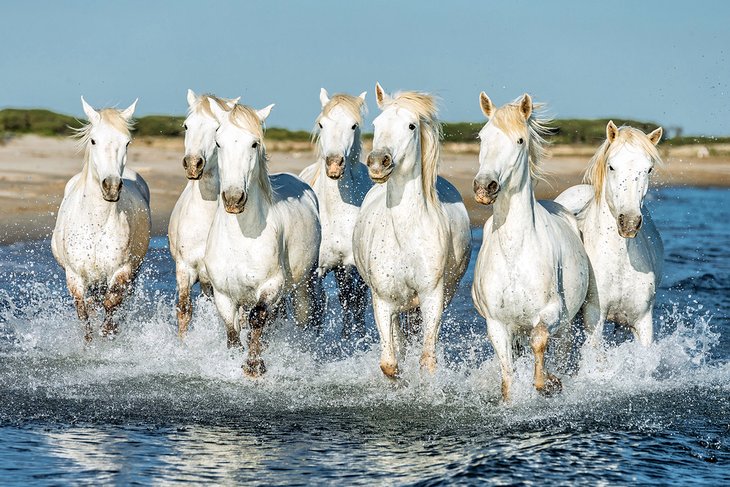
About a 20-minute drive from Arles, the Camargue is a unique landscape of wetlands, marshlands, beaches, and sand dunes. The Parc Naturel Régional de Camargue is home to wild white horses, Camargue bulls (used in bullfighting), and over 300 species of birds including pink flamingos.
Within the Parc Naturel Régional de Camargue, Saintes-Maries-de-la-Mer delights tourists with its sandy beaches and a wide selection of cafés, restaurants, and shops.
Just outside the Camargue Natural Regional Park are several noteworthy historic towns. Dating back to the 13th century, Aigues-Mortes has its medieval fortifications completely intact. These ancient walls conceal an atmospheric warren of narrow streets, steeped in the ambiance of the Middle Ages.
Salt marshes surround the town of Aigues-Mortes and less than two kilometers away is the Salin d'Aigues-Mortes , where the prized Fleur de Sel de Camargue sea salt is harvested by artisans in the centuries-old manner. At the Salin d'Aigues-Mortes site, you can take a guided or self-guided walking tour of the salt marshes. During July and August, watch workers harvest the Fleur de Sel salt.
The area around the Camargue Natural Regional Park boasts seaside vacation destinations: Le Grau-du-Roi (seven kilometers from Aigues-Mortes), an old fishing village that has been transformed into a modern resort; and Port Camargue (12 kilometers from Aigues-Mortes), which has sandy beaches.
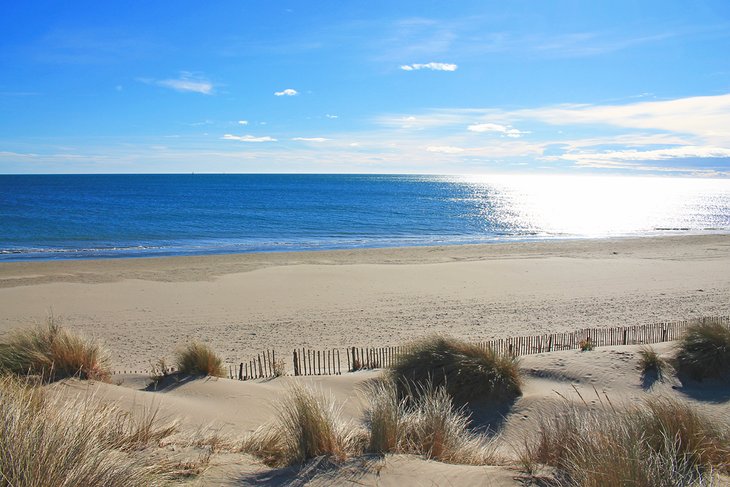
The Plage de l'Espiguette ranks as one of the best beaches in France because of its pristine environment and calm deep-blue seas. This dreamy stretch of white-sand shoreline is a favorite summertime destination in the Languedoc-Roussillon region (a 45-minute drive from Montpellier).
At this wild unspoiled beach, outdoor activities are the main draw. Things to do include swimming, nature walks, horseback riding, kitesurfing, and fishing.
More Related Articles on PlanetWare.com
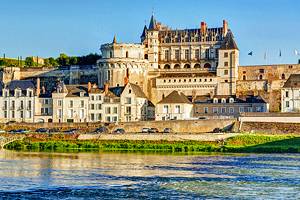
Other Highlights of France : Many travelers begin a vacation in France by visiting the capital city of Paris . The TGV high-speed train takes just over 2.5 hours from Paris to Avignon, a good starting point to explore Provence. For more trip-planning inspiration, read about the best places to visit in France . Other top tourist destinations include Normandy and the Loire Valley.

More on France

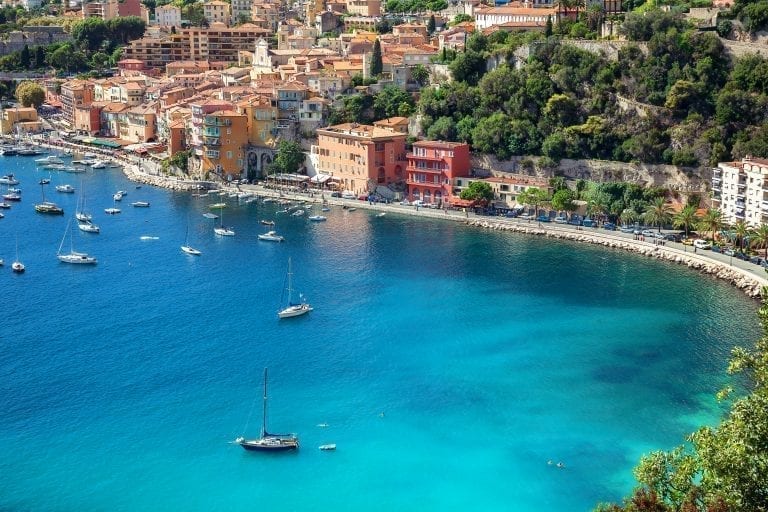
21 Epic Places to Visit in the South of France
If you start planning a trip to southern France, it quickly becomes apparent that there are endless amazing places to visit in the south of France.
From castles to medieval cities, from lavender fields to the sparkling sea of the Cote d’Azur, the south of France is absolutely littered with incredible places to visit–not even a lifetime could hope to cover them all.
While this list could never hope to be exhaustive (beautiful Bordeaux isn’t included here, for example), we’ve rounded up some truly epic places to visit in the south of France–including some of our personal favorite spots.
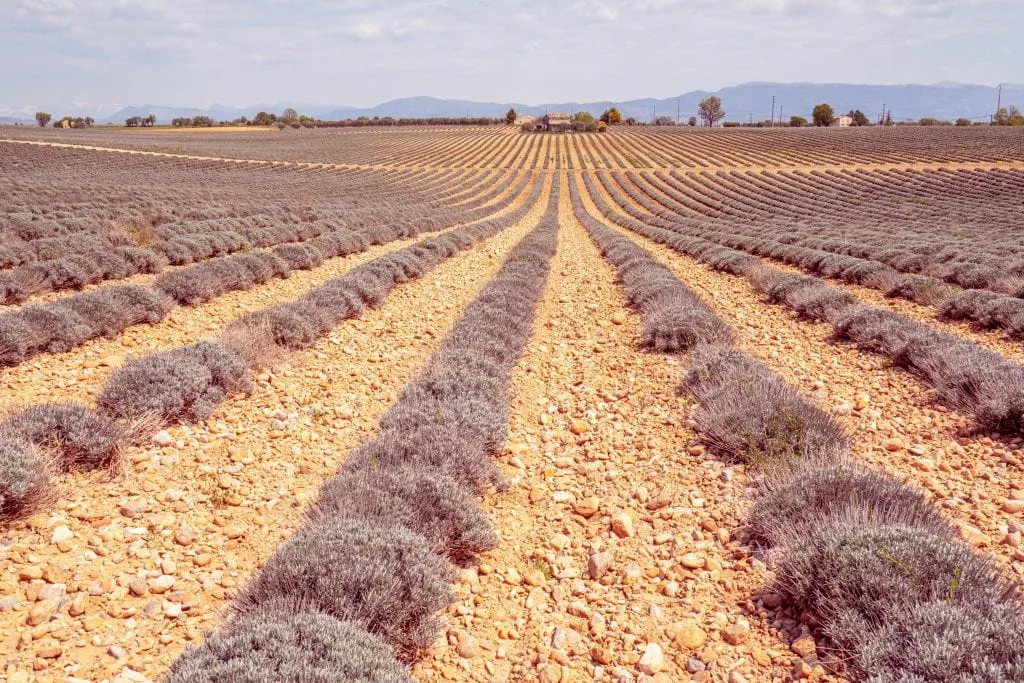
Some links in this post may be affiliate links. If you make a purchase through one of these links, we may earn a small commission at no extra cost to you. Please see our disclosure policy for more detail.
Table of Contents
Map of the Best Places to Visit in the South of France
Cities + towns, natural wonders & other highlights.
Take This Map With You! Click each highlight to pull up the name of the destination. To save this map to “Your Places” on Google Maps, click the star to the right of the title. You’ll then be able to find it under the Maps tab of your Google Maps account! To open the map in a new window, click the button on the top right of the map.
Once the home of popes–as evidenced by the incredible Papal Palace–Avignon is an incredibly relaxed and beautiful city that is the perfect jumping-off point to exploring Provence.
Don’t forget to check out the stunning Pont d’Avignon while you’re there!
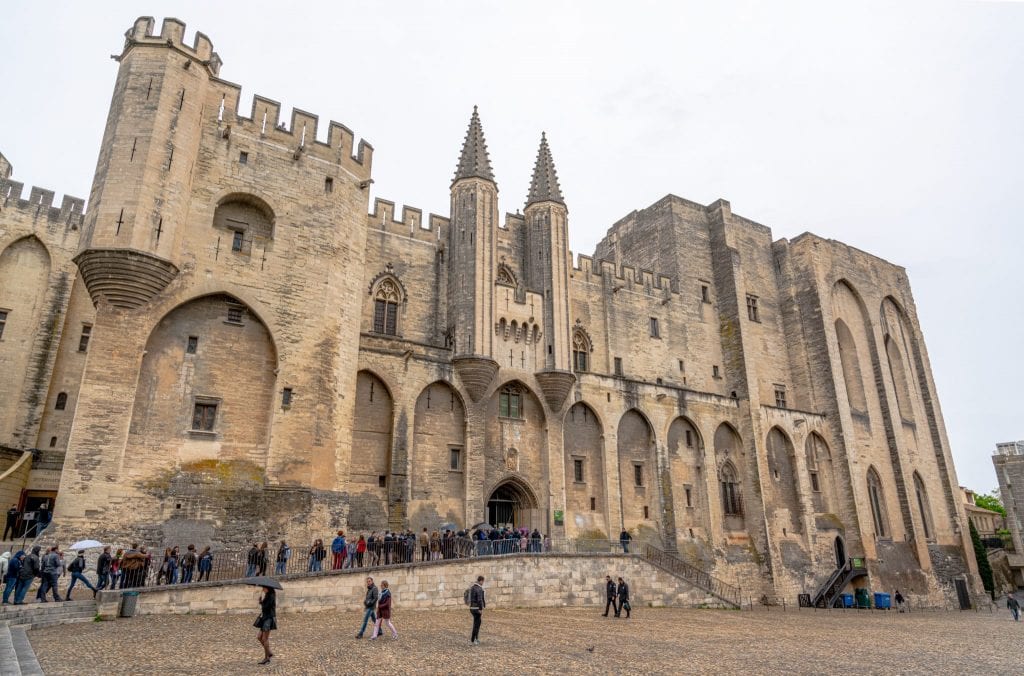
Aix-en-Provence
Once the capital of Provence, Aix-en-Provence is known for its colorful streets, its many fountains, its great location as a base to visit other places in Provence, and–best of all–its outdoor markets.
Plan your visit for a Tuesday, Thursday, or Saturday for the biggest concentration of markets!
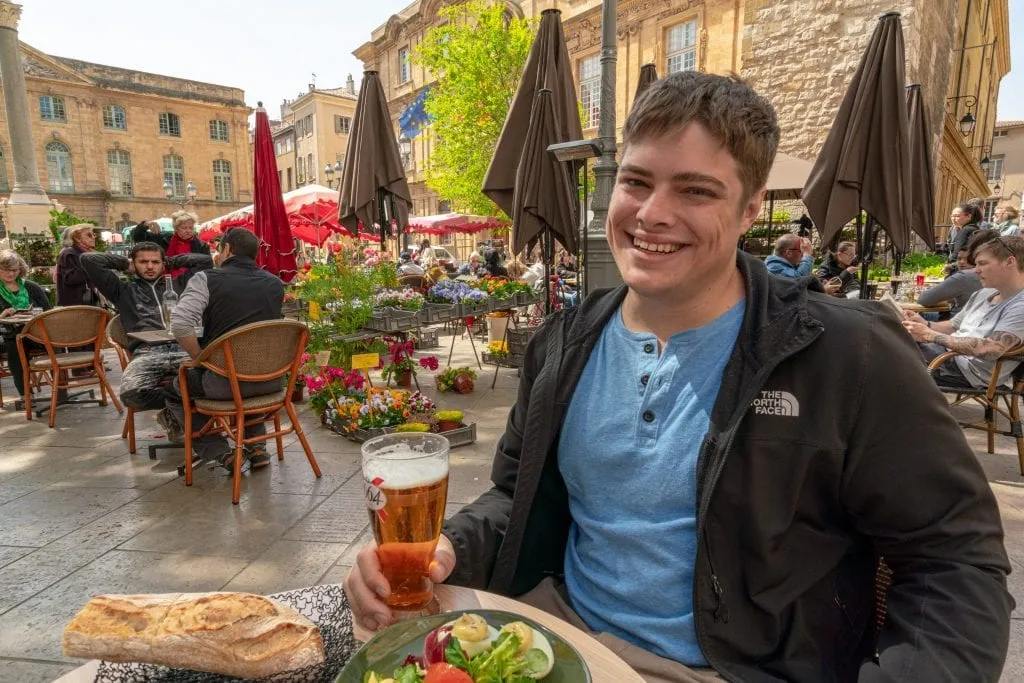
Saint-Tropez
Glitzy and glamorous to the core, Saint-Tropez is the ultimate French escape if you’re looking for a luxurious stay along the Cote d’Azur.
Once a medieval fishing village and later a port, Saint-Tropez is better known today for its beautiful beaches and the magnificent yachts that come to visit.
The adorable fishing village of Cassis looks more like it belongs in an impressionist painting than as a busy tourist destination less than an hour from Marseille–and we were completely charmed by this small town!
Cassis is also an excellent place to use as a base to explore Calanques National Park.
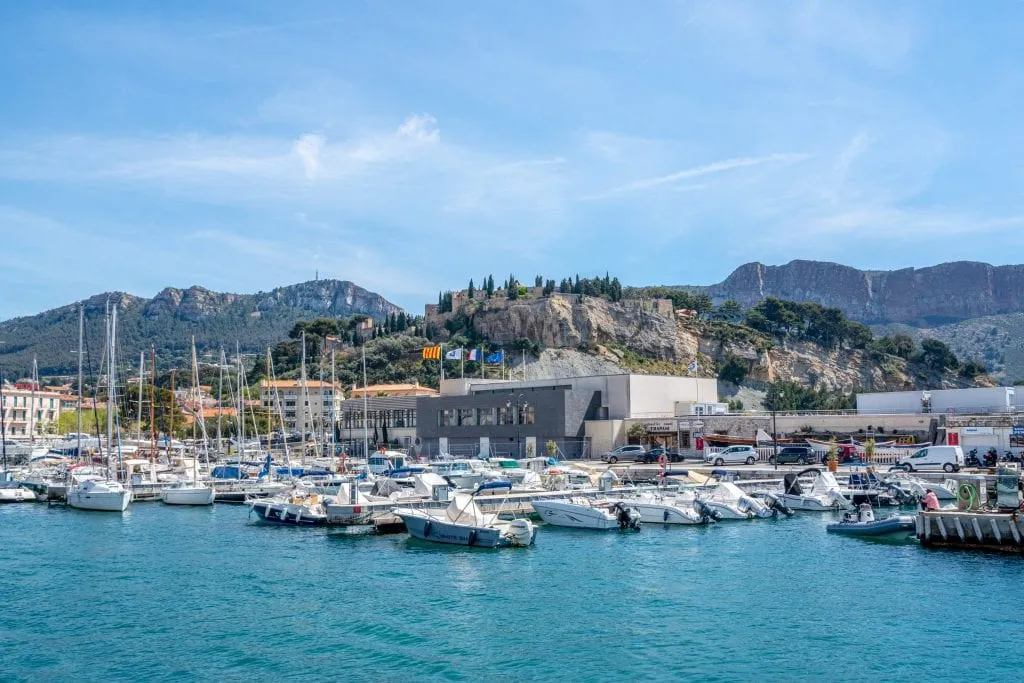
Located along the Rhône River, Arles is best known for its history as part of the Roman Empire and for inspiring many of the paintings of Van Gogh, who lived in Arles for a year. It’s also a great jumping-off point to visit the Camargue !
Possibly the best-known village of the Luberon Valley, Gordes is built directly into the hilltop it rests on, giving a whole new twist to the concept of a hilltop village!
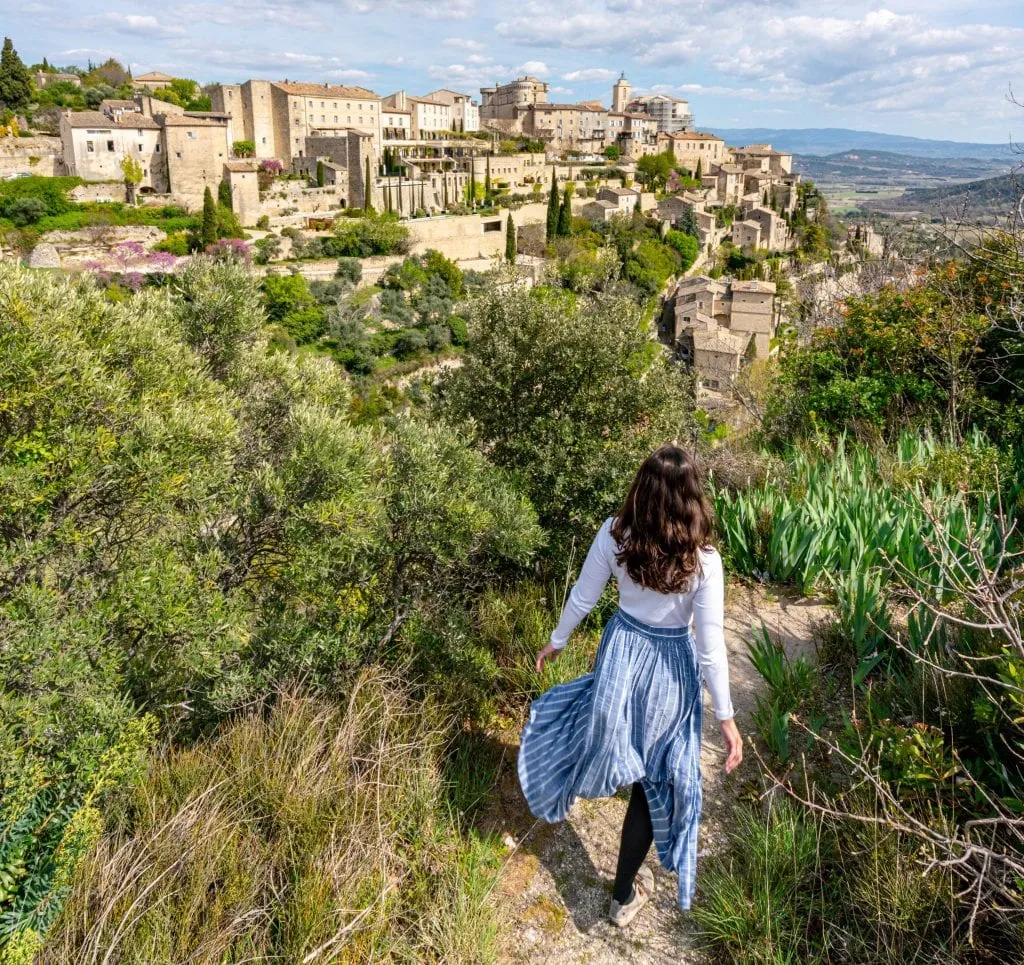
Of course, Monaco is not part of France–but how could any post about places to visit in the south of France leave off Nice’s famous neighbor, the glamorous microstate of Monaco?
Whether you want to doll up and try your hand at cards at the Monte Carlo or simply stroll the streets and admire the many impressive yachts, Monaco is certainly worth a quick visit.
Les Baux-de-Provence
Considered one of the most beautiful villages in France, Les Baux-de-Provence is as small as it is delightful.
Located in the Alpilles, come here both for the winding, narrow stone streets and the countryside views alike.
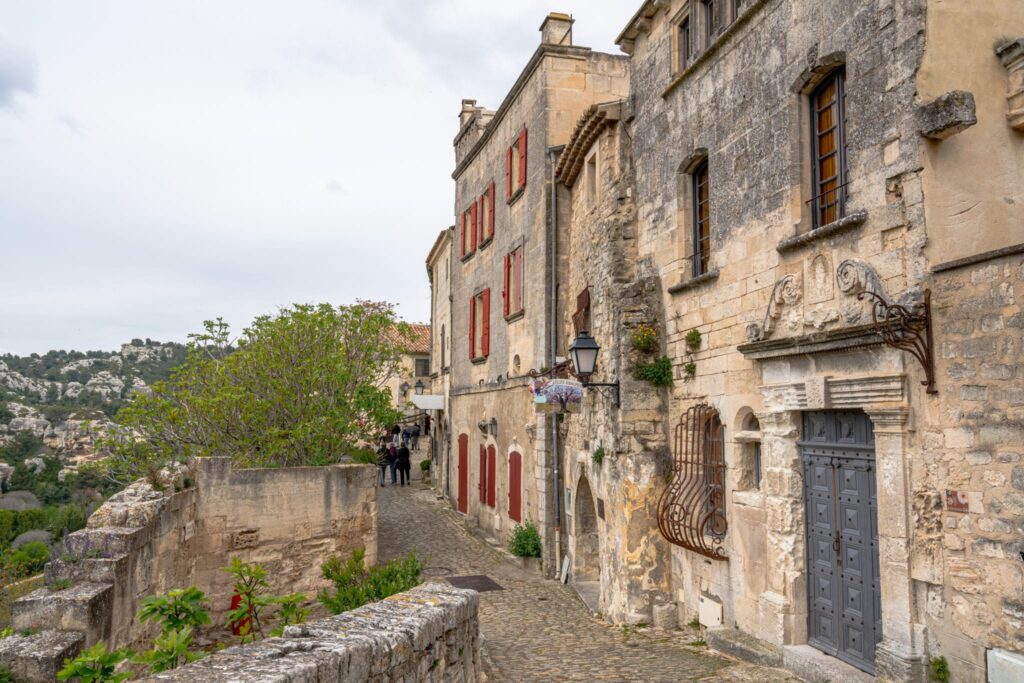
If you know one thing about Cannes, it’s likely that the city is home to the famous Cannes Film Festival.
Cannes goes well beyond its glamorous reputation in the film industry, though. Its beautiful beaches, gorgeous promenade, and the plethora of nearby day trips are all excellent reasons to visit Cannes.
As the biggest city on the French Riviera one of the most iconic beach cities in Europe , glamorous Nice is home to gorgeous markets, an incredible (and incredibly famous!) stretch of curving beach, tasty Nicoise salad, and an excellent location to use as a base for many of the incredible day trips in southern France.
Plenty of trips to the French Riviera start in Nice due to its large airport–but don’t just use Nice as a stopover.
I t’s lovely enough to deserve at least a little attention on your trip to the south of France!
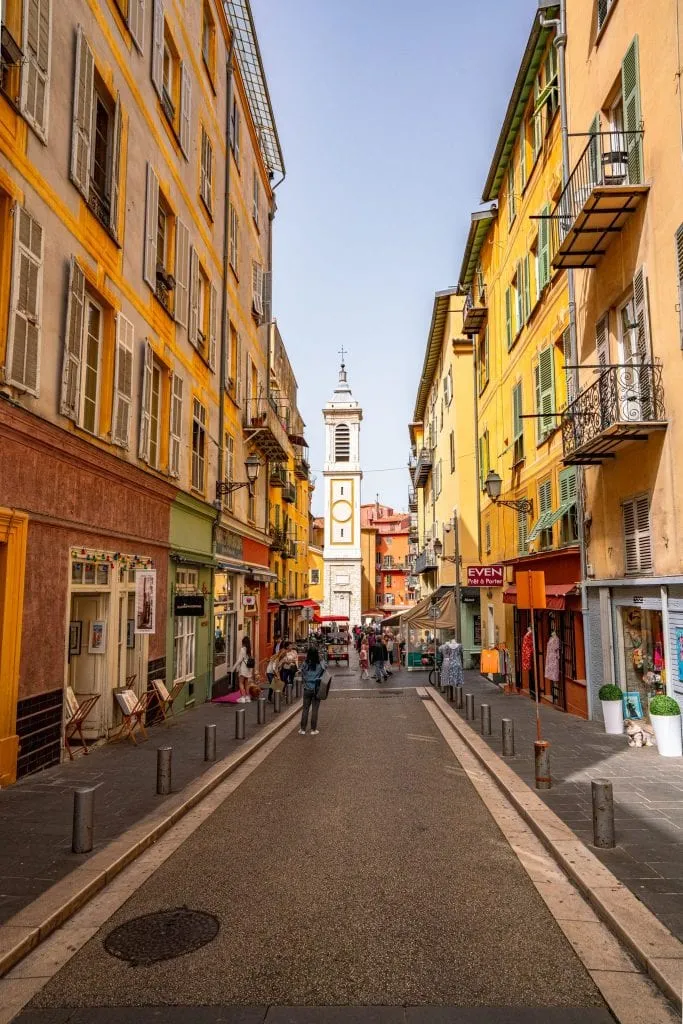
Fontaine-de-Vaucluse
Located right on the Sorgue River, the Fontaine-de-Vaucluse is best known for being home to the gigantic spring that feeds the river–a spring whose source you can visit while in town.
Even apart from the spring itself, though, Fontaine-de-Vaucluse has a storybook-like air to it: its location on the river combined with the typical Provencal charm of the town makes it an unforgettable village to visit in southern France.
Saint-Paul-de-Vence
Perched high above the Cote d’Azur, Saint-Paul-de-Vence feels like exactly what it is: an artist colony, plus a typical French hilltop town, plus a glamorous destination along France’s best-known coast.
Stand on the medieval walls that surround the town, and you can see all the way out to the Mediterranean Sea–but wander down a narrow cobblestone street inside the town, and you’ll feel like you’re back in Provence.
Also–don’t miss the corgi that hangs out at the cafe just outside the town walls! He alone is enough of a reason to add Saint-Paul-de-Vence to your list of places to visit in the south of France.
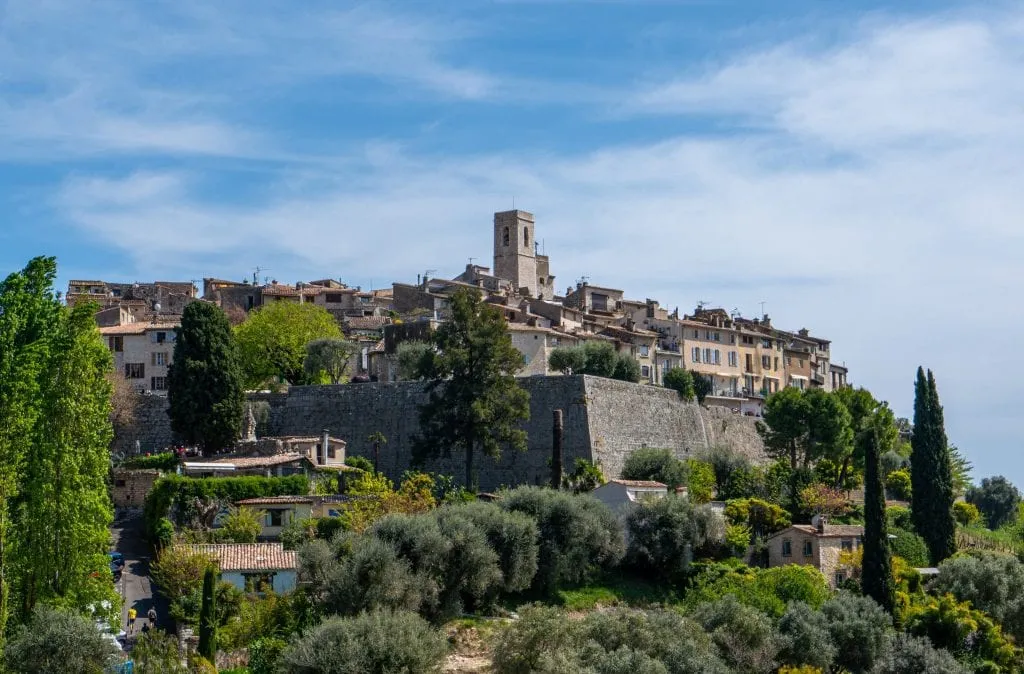
Perched on top of a hill overlooking the Luberon Valley, Bonnieux is all charming cobblestone streets and adorable houses–plus the gorgeous Vieille Eglise (“Old Church”) located at the highest point in town.
After exploring the area around the church, be sure to take plenty of time to admire the view over the valley–look closely, and you’ll be able to pick out villages like popular Gordes in the distance.
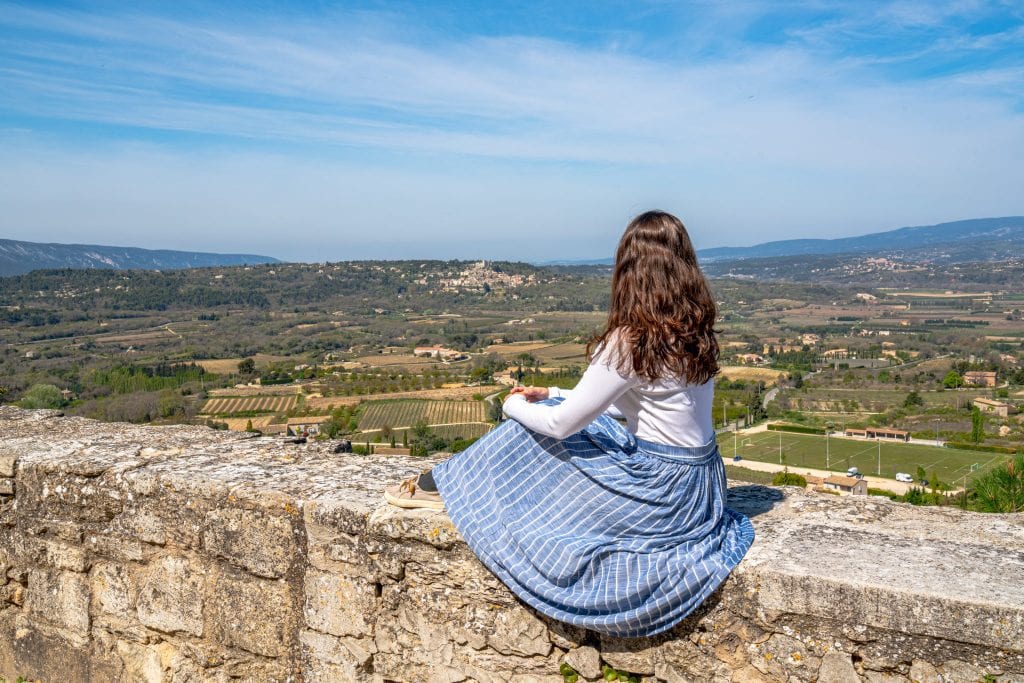
This incredibly bright and colorful French Riviera town reminds me of Italian getaways like Cinque Terre at first blush–and considering Menton is located near the border of Italy, that’s not surprising!
Come here in the summer for swimming, delicious food, and a lovely coastal escape–or in February for their incredible annual lemon festival!
Remarkably uncrowded and slightly more under-the-radar than villages like Saint-Rémy-de-Provence and Gordes, Goult has all the charm you could ever dream of in a Provencal village: excellent countryside views, cobblestone streets framed with buildings that boast colorful shutters, a windmill at the top of town.
This is one of my personal favorite villages in the south of France–don’t miss it while in the Luberon Valley!
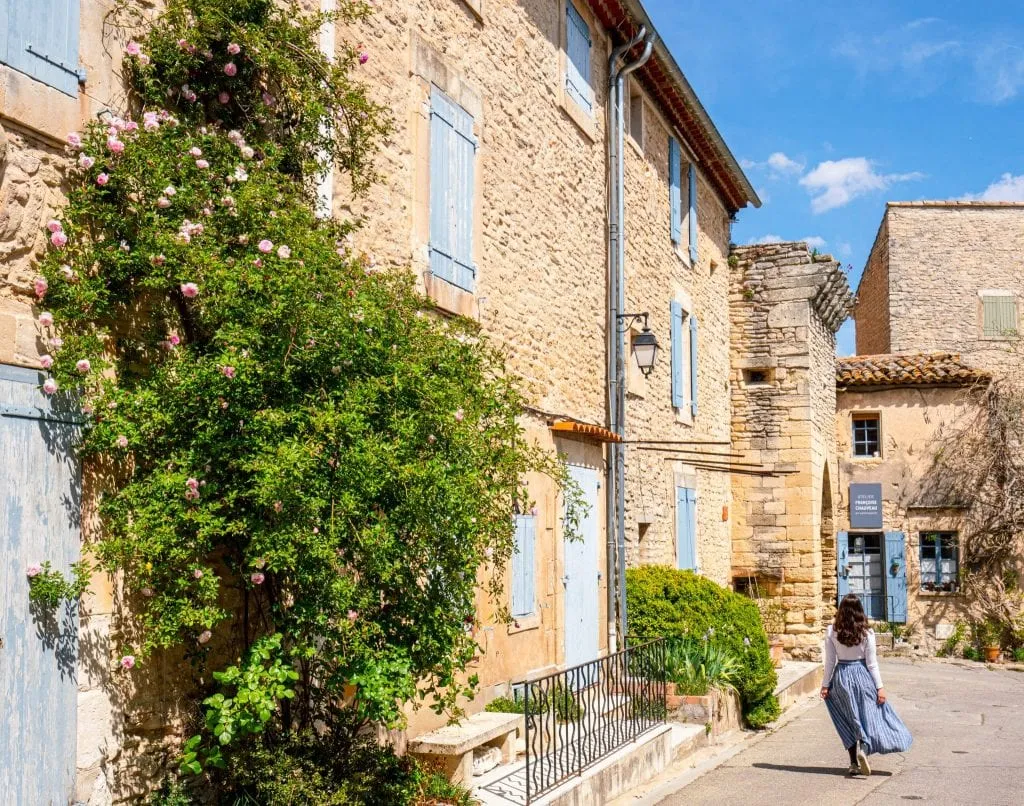
Saint-Rémy-de-Provence
If I were to move to a village in Provence tomorrow, it would be this one: incredibly beautiful, packed to the brim with tasty restaurants and interesting boutiques, and home to everything from fascinating art history (Van Gogh lived here during his days in a sanitarium) to a whimsical carousel, Saint-Rémy-de-Provence is enormously popular for good reason!
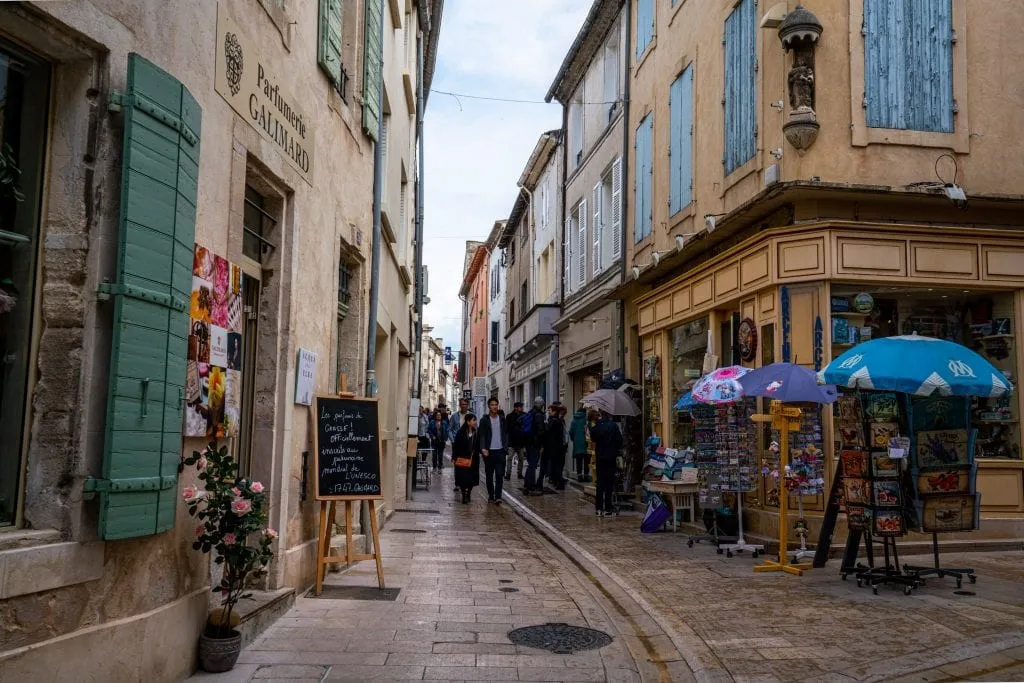
Calanques National Park
If you’re hoping to hike in France, look no further than Calanques National Park!
Located between Marseille, Cassis, and La Ciotat, the Calanques (or coves) that are the highlight of the park are full of sparkling Mediterranean waters and framed by bright, white cliffs–and the combination is absolutely stunning.
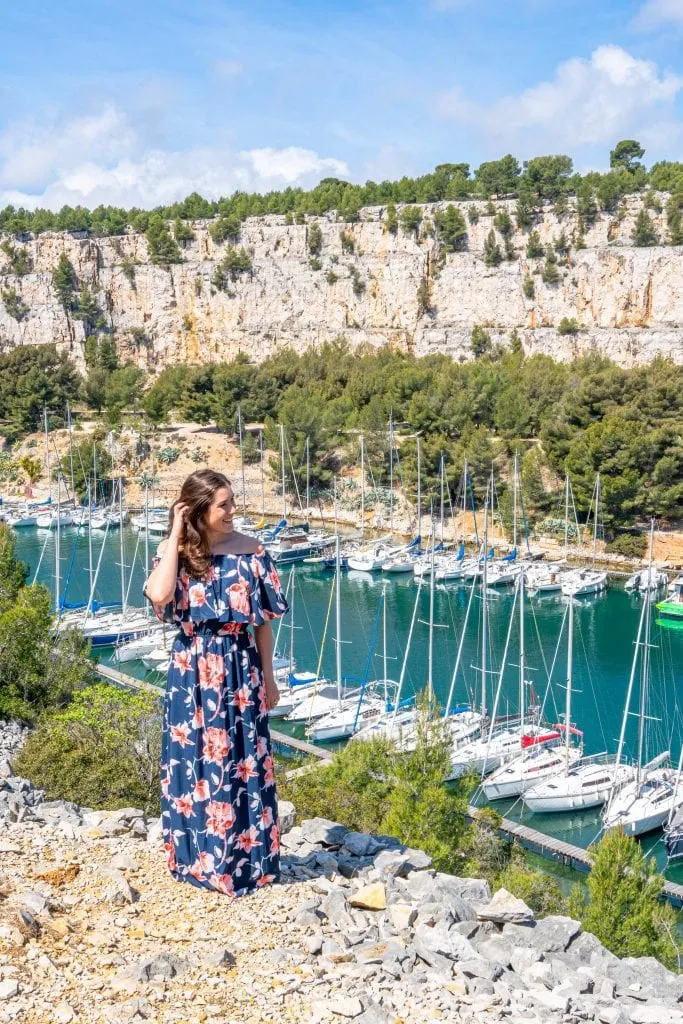
Verdon Gorge
A deep canyon framed by white cliffs with a turquoise river that rushes through it: the Verdon Gorge is so beautiful that it almost defies description.
Stop here in the summer to kayak, canoe, swim, or even go whitewater rafting–or simply to admire the views and take a lovely hike.
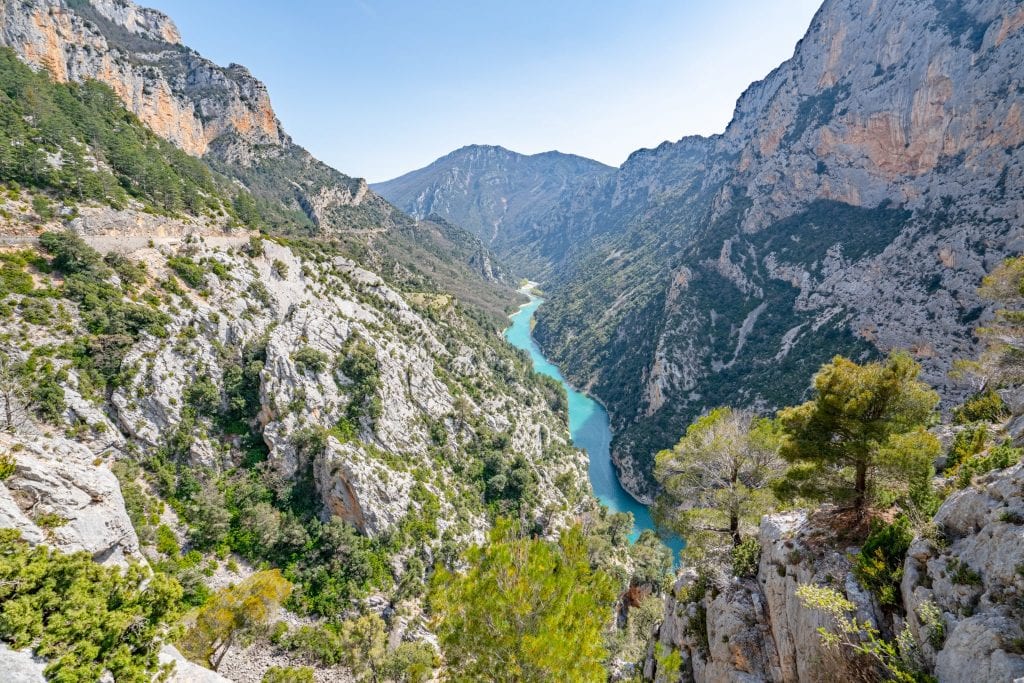
Sénanque Abbey
Located near the village of Gordes, the Sénanque Abbey is an unmissable place to visit in southern France for those exploring the Luberon Valley!
Though the abbey was founded in the 12th century and is still the home of monks today, these days it is best known for its gorgeous lavender fields.
Lake of Sainte-Croix
Though this brightly colored lake is man-made, it’s absolutely gorgeous, an excellent place for hiking or camping, and located right next to the Verdon Gorge, making it a fabulous addition to your list of places to visit in the south of France!
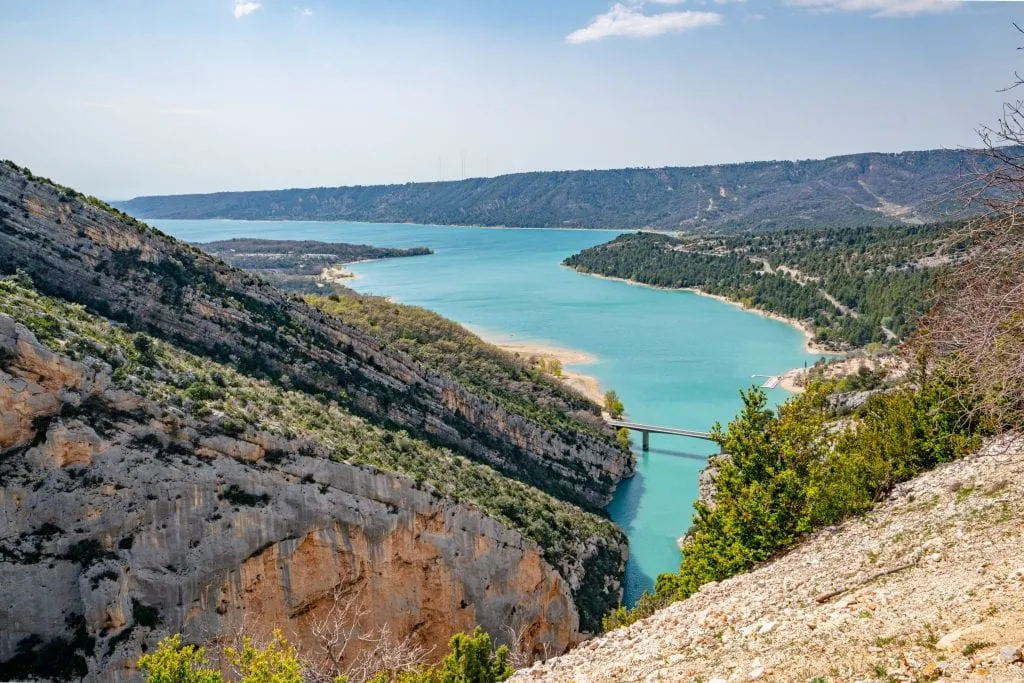
Valensole Plateau
The gigantic, far-as-the-eye-can-see, sprawling lavender fields of Provence may just be the most popular place to visit in the south of France… and the Valensole Plateau is where you can find the best of them–check out the first photo in this post for an example of what you can find!
If you’re coming to southern France to chase lavender, you should absolutely add the Valensole Plateau to your list of places to see in the south of France.
[convertkit form=3386241]
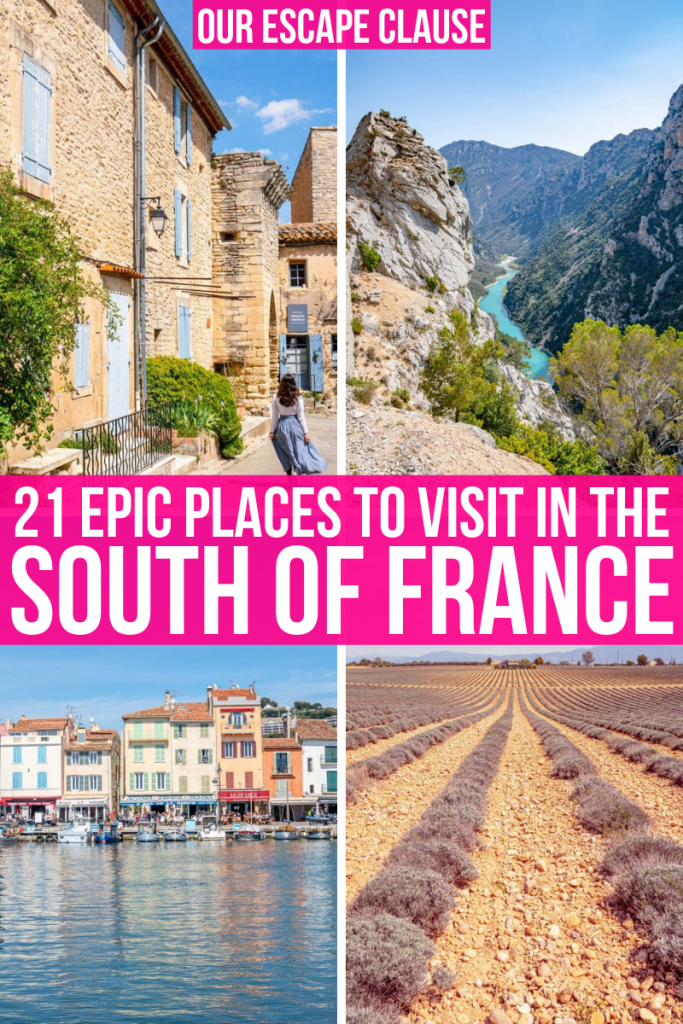
About Kate Storm

In May 2016, I left my suburban life in the USA and became a full-time traveler. Since then, I have visited 50+ countries on 5 continents and lived in Portugal, developing a special love of traveling in Europe (especially Italy) along the way. Today, along with my husband Jeremy and dog Ranger, I’m working toward my eventual goal of splitting my life between Europe and the USA.
Leave a Comment Cancel reply
Follow our travels on Instagram!

The Perfect Southern France Itinerary – 7 Days in Provence
Creating a 7-day itinerary for the South of France is no easy task. With so much to see and do, you really do have to narrow your focus a little or you could end up spending all of your time in the car!
With this in mind, I’ve created the perfect Southern France itinerary that will allow you to see many of the highlights of the region while minimising driving time and allowing you to chop and change some aspects to suit your holiday style.
This South of France itinerary focuses on what I consider to be the most beautiful and authentic area of Southern France – Provence . I’m lucky enough to call Provence home, and I love sharing my knowledge of what makes this region of France so special. So let’s jump in and start planning your holiday to Provence!
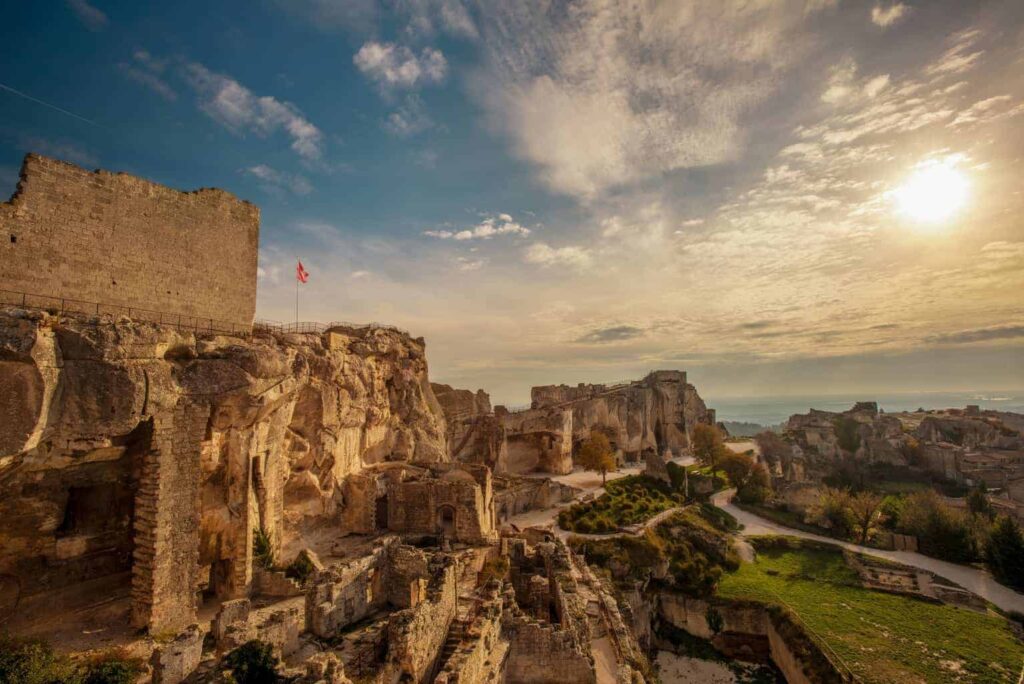
Itinerary for a Week in Provence, France
Ideally, you’ll arrive on a Friday and leave on a Friday to take full advantage of the following Provence itinerary. It’s been designed to make the most of opening times, market days and other seasonal events.
But if that’s not possible, don’t despair! You’ll still have a brilliant time, and you can mix the days up as you choose.
The following itinerary also assumes you’ll have a car available to use during your visit. Although some people are nervous about driving in France, there really isn’t too much to be concerned about. I really believe the best way to explore Provence is by car, so you can go at your own pace, discover hidden gems and stop at breathtaking roadside scenes as you go.
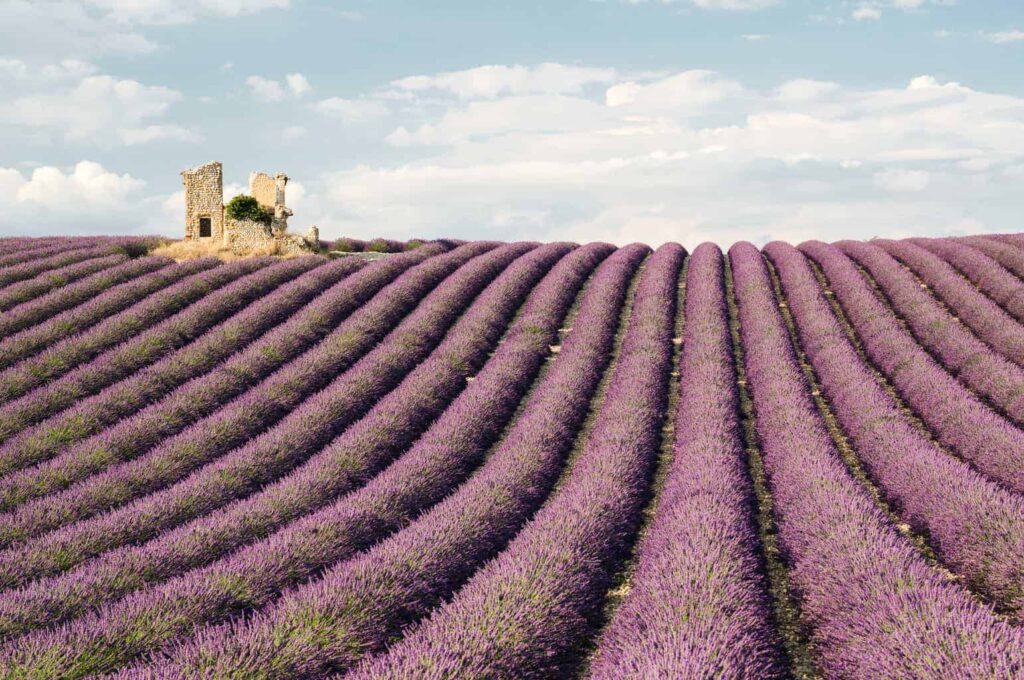
Tips for Getting Around Provence
- The roads are narrow, so it’s best to hire a smaller car ( book your car rental here ).
- Directions are well signposted, or you can get around with the help of a map, GPS, or map on your phone.
- Stick to smaller road networks instead of the motorway to drive alongside vineyards and olive groves, and you’ll get to see some beautiful hamlets or smaller villages that you’d otherwise miss.
Best Time to Visit Provence
It’s hard to pinpoint the best time to travel to Provence, as it depends on what you want to do while you’re here! With that said, there are definitely pros and cons for each season, so I’ll go over these briefly below.
Visiting Provence in Winter
Winter is not a popular time to visit Provence unless you’re headed for the Alps! It’s therefore much quieter around the region, but as a consequence, you’ll find a lot of the attractions are closed during this period.
- Good deals on accommodation
- Experience the ‘real Provence’
- Visit beautiful Christmas markets and experience Provençal Xmas traditions
- Some tourist attractions closed
- Colder weather
Visiting Provence in Spring
I know I said it’s hard to pick the best time to visit Provence, but if I absolutely had to, I’d say Spring. The landscape is filled with wonderfully bright flowers, the sleepier villages start to come to life again and the weather is much more pleasant.
- The sun is out, and the weather is generally lovely by mid-late Spring
- Tourist attractions open their doors again
- Experience Easter celebrations around the region
- Spring is prime time for the Mistral to be blowing – a strong, cool wind that makes it almost impossible to enjoy outdoor activities in exposed areas. The good news is that it usually only lasts a day or so before dying off again.
Visiting Provence in Summer
Summer is, without a doubt, the most popular time to visit Provence. The days are hot and long, the lavender fields are in full bloom, and the beaches are perfect for sunning yourself. But there are also downsides to visiting in the busy period of June to September.
- Consistently hot, dry weather.
- Perfect time to enjoy swimming in the Mediterranean, or in your own pool
- Many festivals and events take place throughout July & August
- Crowds, especially on the beaches
- Some walking tracks (such as the Calanques walk ) are closed due to the risk of wildfires
Visiting Provence in Autumn
Autumn is another good time to visit Provence. The weather remains hot throughout September and the crowds begin to thin. School is back, which means mid-week trips to the beach and attractions are much quieter.
- Weather at the beginning of Autumn is hot, and it remains fairly warm throughout the season
- School is back, meaning fewer holidaymakers are around
- You can expect more rain in Autumn than in Spring.
Looking for more Provence travel inspiration? Don’t forget to join our free Facebook group Provence Travel Planning !
Where to Stay in Provence
To choose the best place to stay in Provence, I’d advise you to have a read of our Provence Hotel Guide .
For the purposes of this itinerary, I’ve recommended the best location to stay for each day in order to reduce the number of accommodation changes throughout the week. No one likes to have to pack up and check-in/out of hotels every day!
I’m going to start the itinerary in the popular base of Avignon , but you could just as easily pick a base in many a place nearby. L’isle-sur-la-Sorgue is a good choice if you’d like a slower pace, and Saint-Rémy-de-Provence is a popular spot too.
Alternatively, you could do this Provence itinerary backwards and start in Aix-en-Provence !
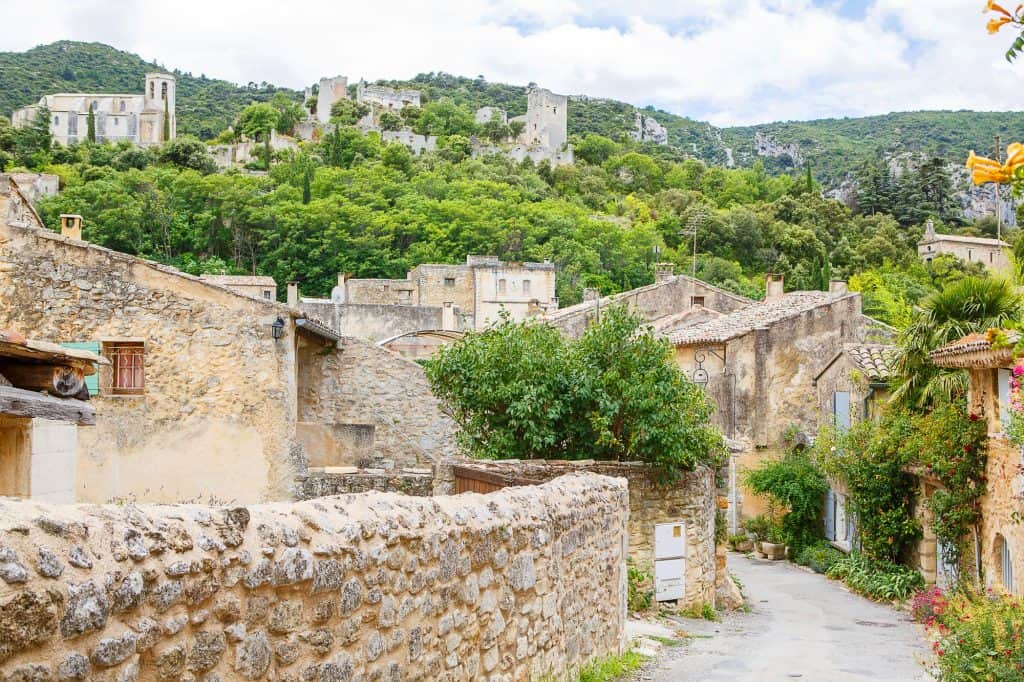
Day 1 (1/2 Day) Pont du Gard & Avignon
Stay: Avignon
Arrival day in Provence! Whether you’re driving, taking the train, or flying into Provence, it’s going to eat up a few hours of your first day, so I’ve started this itinerary with a half-day, and it’s ending with a half-day on day eight.
Once you’ve arrived and are ready to explore – set the tone of your tour around Provence with a visit to one of the finest sites in the South of France! The Pont du Gard is just a half-hour drive from Avignon and the perfect place to spend your first afternoon.
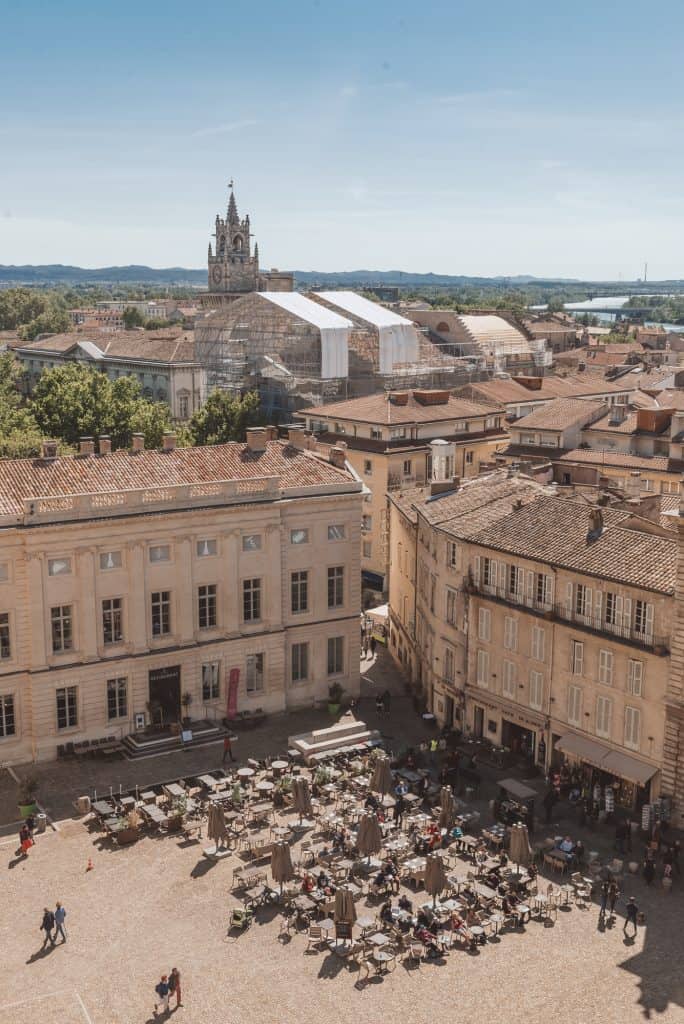
Before leaving Avignon, pop into Les Halles to pick up some picnic supplies. Les Halles is Avignon’s centrally-located covered farmers market that’s open every day except Monday and offers an authentic way to get acquainted with the fresh flavours of the region.
Tip – If you happen to be visiting Avignon on a Saturday, don’t miss the live cooking demonstration at Les Halles at 11 am!
Once you arrive at the Pont du Gard you can settle down for lunch with a view of the highest Roman aqueduct in the world. Depending on the weather, you may like to take a dip in the Gardon River before drying off and strolling across the bridge into the heavenly scented bush on the other side.
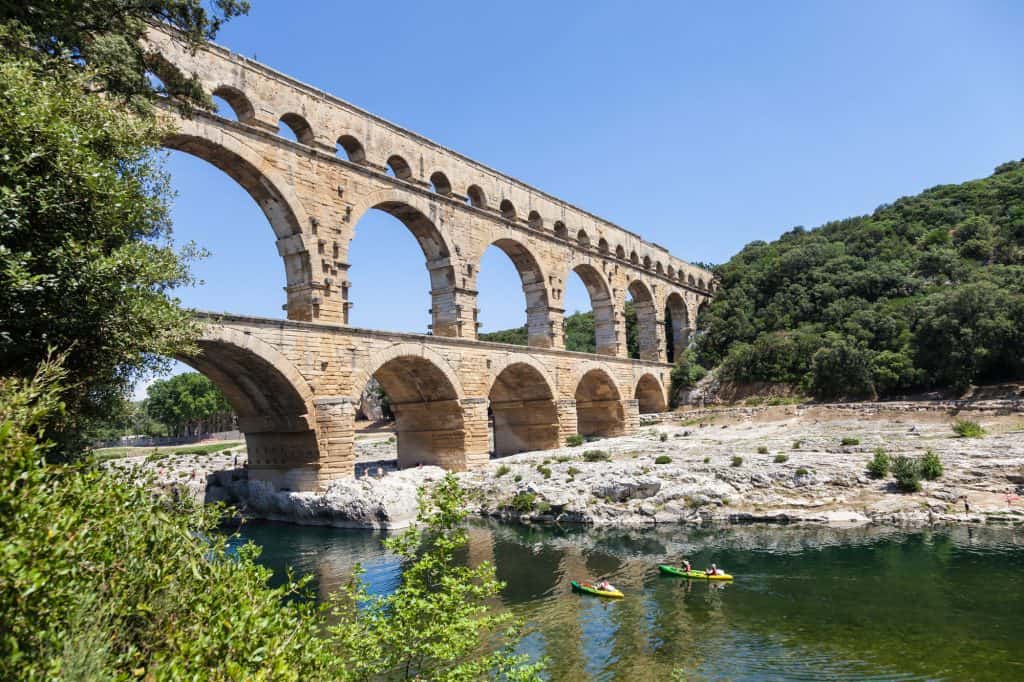
When you head back into Avignon, you can enjoy dinner in the old town, where you’ll find plenty of dining options – from Michelin Star restaurants to cheap and cheerful family-run bistros.
Day 2 – Avignon
Leave the car parked today and explore the sights of Avignon by foot.
Start with a visit to the most famous attraction in Avignon , Palais des Papes. Once home to the Popes (hence its name), the well-preserved palace is an intriguing place to visit throughout the morning. Take a virtual tour of the palace and papal apartments before pausing for lunch.
For a fun lunch experience, you could try the open kitchen in Les Halles – Cuisine Centr’Halles. Or simply fill up on delicious treats from the boulangerie before heading to your next stop – the Pont d’Avignon.
If you’ve seen a photo of Avignon, you’ve most likely seen a picture of its most famous bridge. Once spanning the length of the Rhône, nowadays only 4 of its original 22 stone arches remain. Take a stroll to the end, pop inside the petite chapel, and visit the exhibition that includes a couple of short films about the history of the bridge.
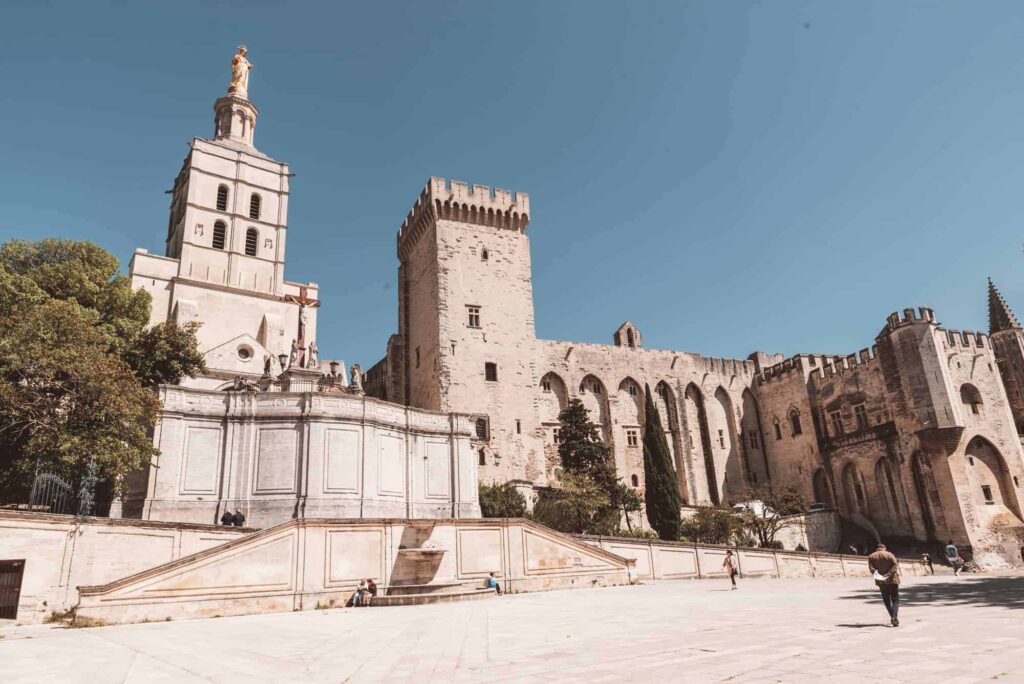
Tip – A combined ticket to the Pope’s Palace and the Pont d’Avignon will save you money. Buy your tickets here.
In the afternoon, head to Avignon’s elevated garden, Rocher des Doms, for stunning views of the city. The shaded garden is a good place to seek respite from the afternoon heat, have a cool drink at the café, or relax by the pond as you watch the peacocks strutting by.
Day 3 – L’isle-sur-la-Sorgue and Fontaine de Vaucluse (plus Grottes Option)
Head to the charming canalside town of L’isle-sur-la-Sorgue. Known as the antique capital of Provence, you’ll be spoiled for choice if you’re looking for a unique souvenir or memento of your time in France.
Even if you don’t visit on market day (Sunday), there are many brocantes and antique stores dotted throughout the town where you’ll find both expensive and inexpensive gems.
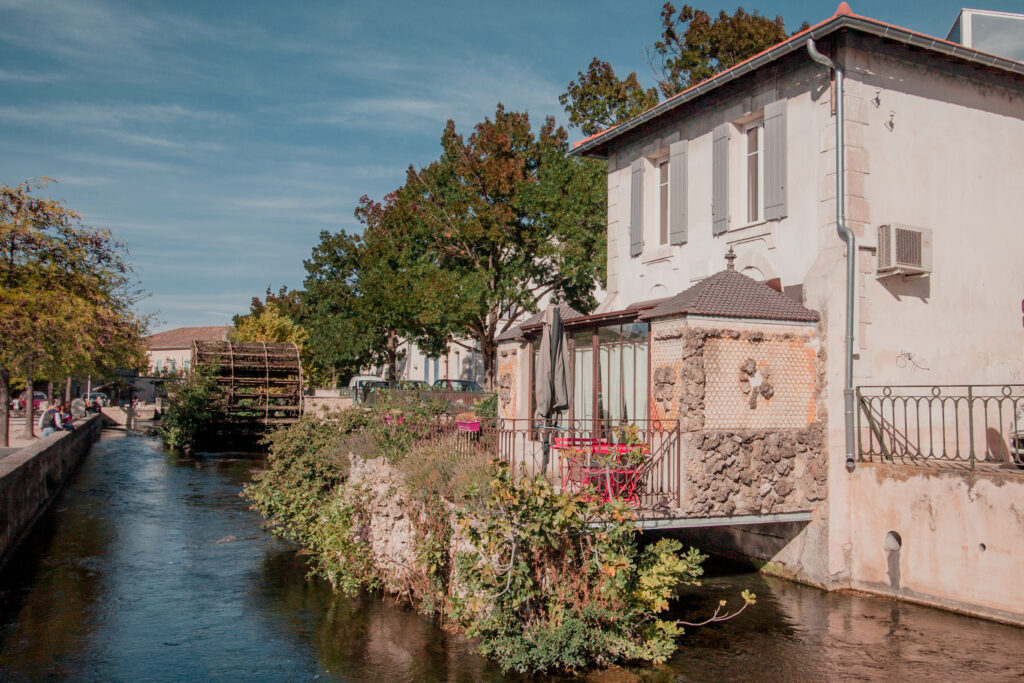
Enjoy lunch at one of the cafés positioned to make the most of the town’s unique situation. L’isle-sur-la-Sorgue translates to “the island on the (river) Sorgue” and you certainly feel as though you’re on an island as you explore the water framed streets. Wander past the moss-covered waterwheels that serve as a reminder of the town’s textile industry before heading to the nearby village of Fontaine de Vaucluse.
It’s in Fontaine de Vaucluse that you’ll find the source of the river Sorgue. A deep spring emerges from the craggy mountainside and flows down into the village of the same name.
As you enter the village you’ll find a small smattering of boutiques selling locally made wares, and restaurants strategically positioned to make the most of the stunning views. A short gently sloping walk will take you along a riverside path to the fountain. The fontaine always looks different – sometimes spilling over the rocks and through any stubborn trees that dare grow in its path, and at other times resting silently at the bottom of an orange-hued cave.
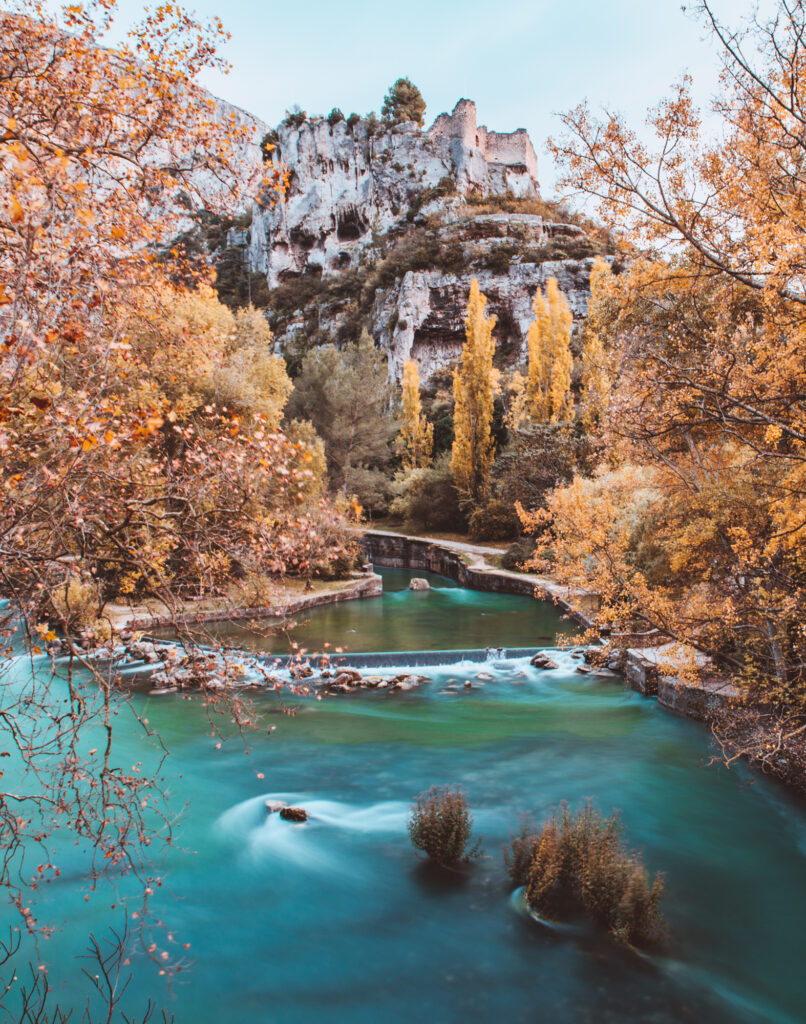
As an optional extra, if you have the time, the Grottes de Thouzon make for a fascinating side trip before heading back to Avignon for the night. A short walk through a grotto full of pencil-thin stalactites, cave pearls, and underground lakes will delight you, and the informative guides will make the experience a memorable one.
Day 4 – Les Baux de Provence and Glanum
History buffs will be in their element today with not one but two ancient sites to discover. But even if history isn’t your thing, there’s still plenty of variety to keep everyone happy on day 4 of our 7-day South of France itinerary.
First up you’ll be heading to Les Baux de Provence , officially one of the most beautiful villages in Provence, and home to the magnificent Château des Baux. Although the castle is now in ruins, it remains one of the most impressive châteaux in Provence , and there’s plenty left to explore within the old walls and wider grounds.
Once you’ve taken the time to wander the charming village and explore the château, head 5 mins down the road to Carrières de Lumières. Unlike anything you’ve likely experienced before, Carrières de Lumières is an art-based multimedia show set within an abandoned underground stone quarry in the Alpilles.
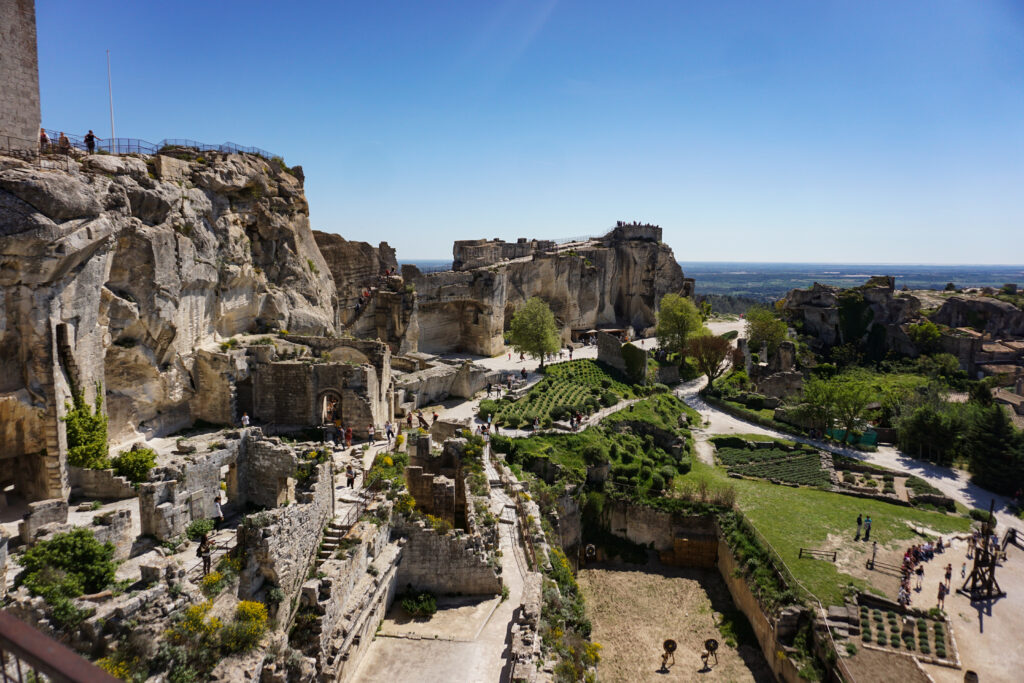
The exhibit changes yearly and showcases some of the greatest artists in history. The 2020 exhibition brings works from Spanish artist Salvador Dali to life. The show, “The Endless Enigma” features works spanning the length of the artist’s career. It’s truly one of the most unforgettable things to do in Provence.
Tip – Buy a combined ticket to Château des Baux and Carrières de Lumières to save money.
A short drive back in the direction of Avignon will bring you to the fortified town of Glanum. A remarkable site not far from Saint-Rémy-de-Provence, Glanum is over 2,000 years old. It was destroyed by Germanic tribes in 260 AD and has remained abandoned ever since.
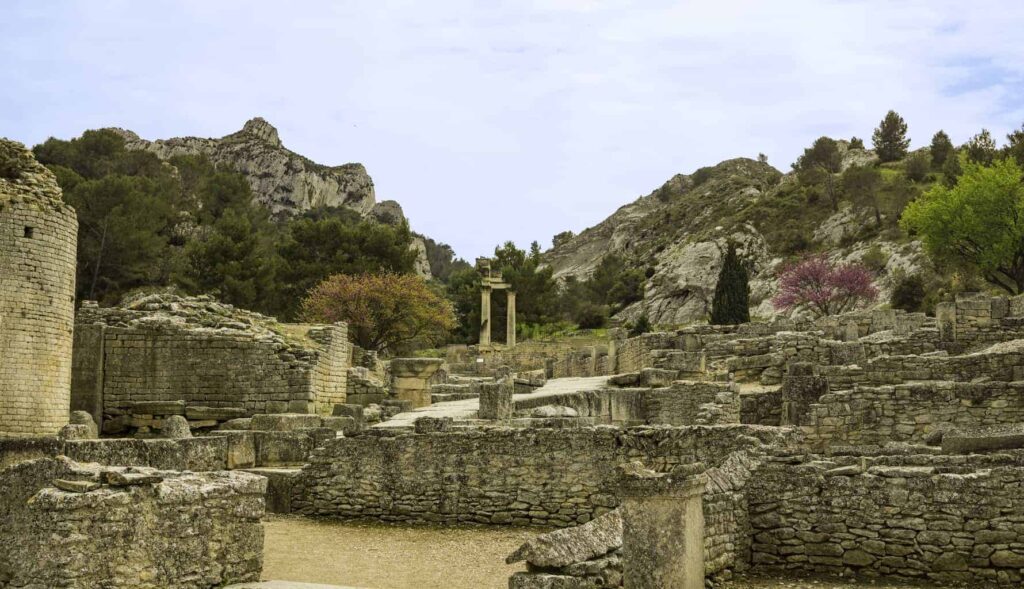
First rediscovered in the 16th century, it wasn’t until more recent times that serious excavation and preservation efforts have been carried out. Today you can walk among the ruins while imaging the grand structures that once stood in their place. Peek into the sacred well, rest your eyes on the remnants of the twin temples, and hear the water that flows beneath a deserted street.
Day 5 – The Villages of the Luberon
An absolute must-do on your South of France itinerary is a tour of the Luberon Villages . It’s easy to spend an entire day (or several) exploring the hillside villages and incredible scenery of this unique part of France.
Start at the Sénanque Abbey and you’ll find a wonderful scene framed by fragrant lavender fields in the summer months. From here it’s a short drive to the most famous Luberon village, Gordes .
Tuesday is market day in Gordes, so sample the freshest flavours of the region as you wander around the ancient streets. Think about visiting the Village des Bories nearby before continuing on to the pastel-coloured town of Roussillon.
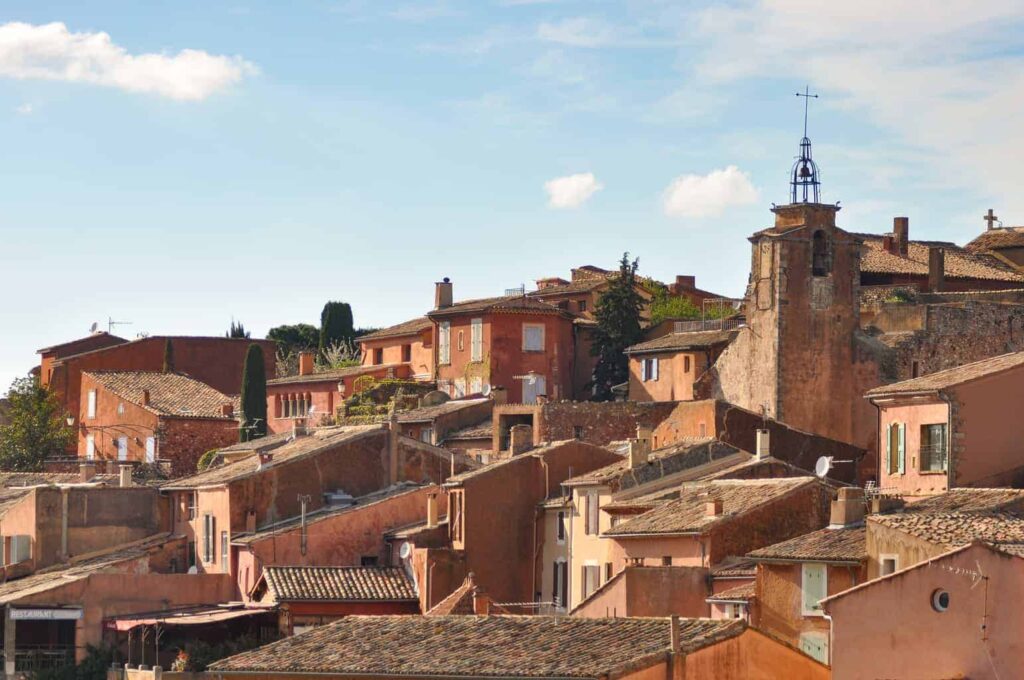
Built next to an ochre mine, the village lends itself as a haven for artists and the streets are awash with galleries and generous splashes of colour. The ochre mine next door is an attraction unlike any other. Take a short but stunning walk through the dusty red canyons and pine-fringed valleys of the ochre trail before continuing your Luberon tour.
Bonnieux and Lacoste are up next. Both lovely villages with a slower pace of life and enough differences to make them both worthy of a visit. Bonnieux is lovingly restored and has sweeping views over the fertile landscape of the Luberon. Walk the stone staircase to the church at the top of the village for the best views.
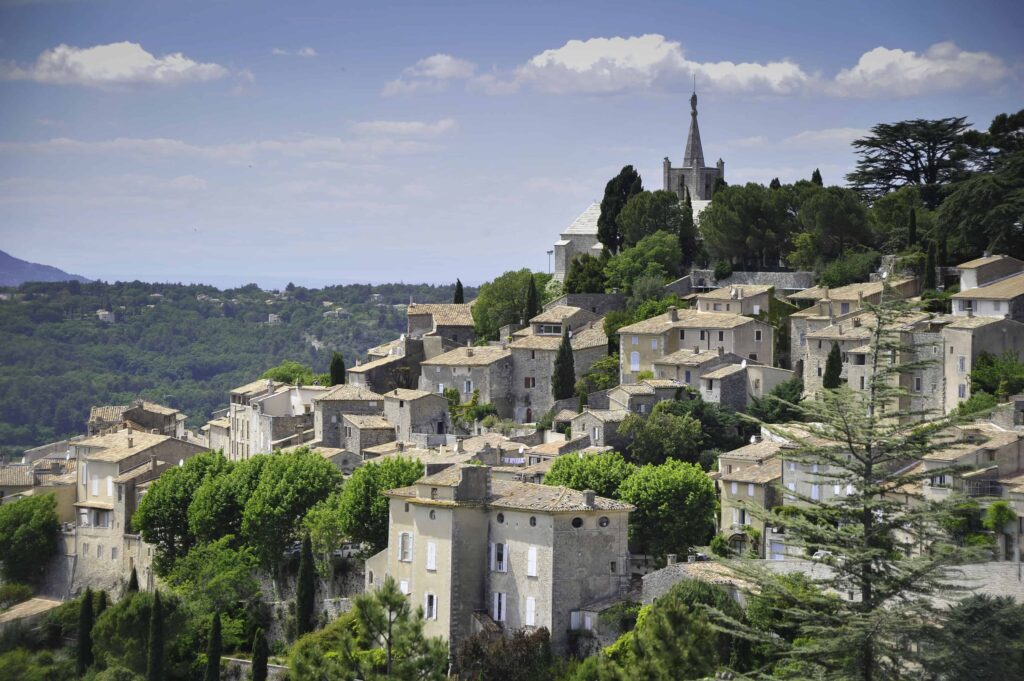
Next door, Lacoste is home to a semi-restored château that you can visit during the summer months. At other times, walk around the back of the castle to view the contemporary sculptures and views of surrounding hilltop villages.
A trip to Goult and Ménerbes will round the day off nicely. In Goult, follow the signs through rustic streets to take in all the best bits. Don’t miss the restored windmill and the terraced gardens showcasing the area’s agricultural history.
Ménerbes is best explored at leisure. Stroll the bucolic village before heading to the quirky corkscrew museum nearby and end the day with a wine tasting session at Domaine de la Citadelle.
Tip – full details of your Luberon driving tour and options to extend can be found here.
Day 6 – Camargue and Arles or Nîmes
Stay: Avignon , Cassis, or Aix-en-Provence
The sixth day of your Provence itinerary will see you heading south to one of the most intriguing places in Provence.
The Camargue is Western Europe’s largest river delta with around 930 sq km of marshes and wetlands to explore. Unsurprisingly this fertile land attracts a vast array of wildlife and it’s here you’ll find over 400 species of birds including the impressive pink greater flamingos.
The infamous black Camargue bulls also roam freely among the reeds and herds of snow-white horses – one of the oldest horse breeds in the world – live in harmony with nature.
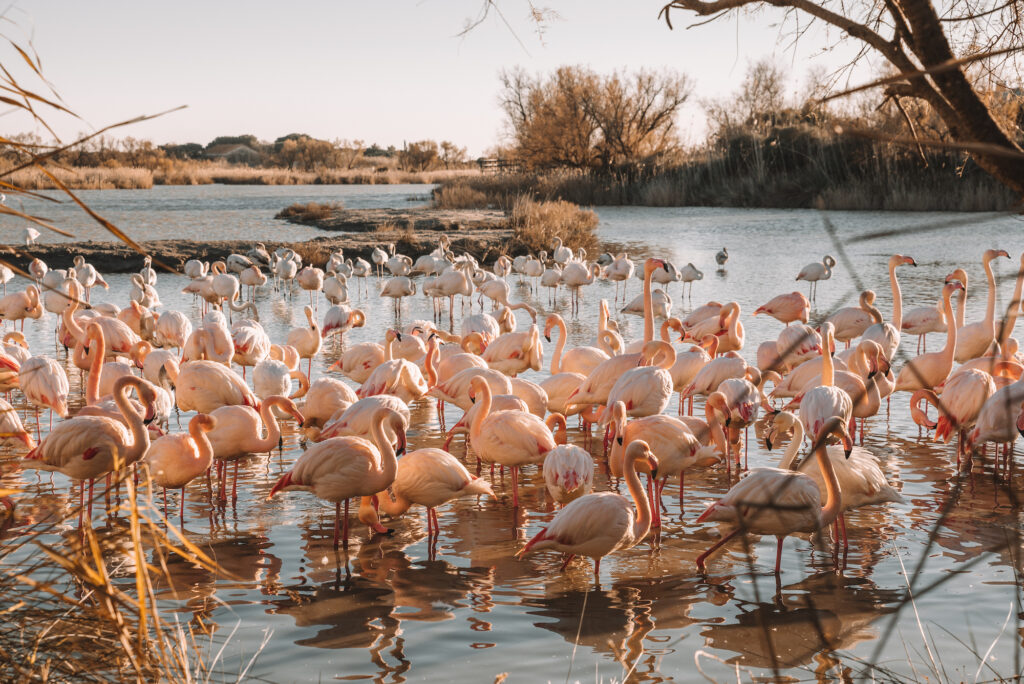
The best way to discover this area when you’re short on time is to take a tour. Tours depart Arles and Avignon daily and will allow you to see the best of the Camargue while providing you with an interesting and informative commentary.
Book Your Camargue Tour Here.
Alternatively, you can head directly to Parc Ornithologique du Pont de Gau where you’re almost guaranteed to see flamingos in the wild.
In the afternoon, you can choose to visit Arles nearby, or Nîmes a little further afield.
Arles has a small but perfectly formed old town with plenty to see and do in an afternoon. Take a free Van Gogh walking tour to see the exact spots depicted in the late artist’s work, visit the grand amphitheatre, or take a walk through the underground Cryptoportiques.
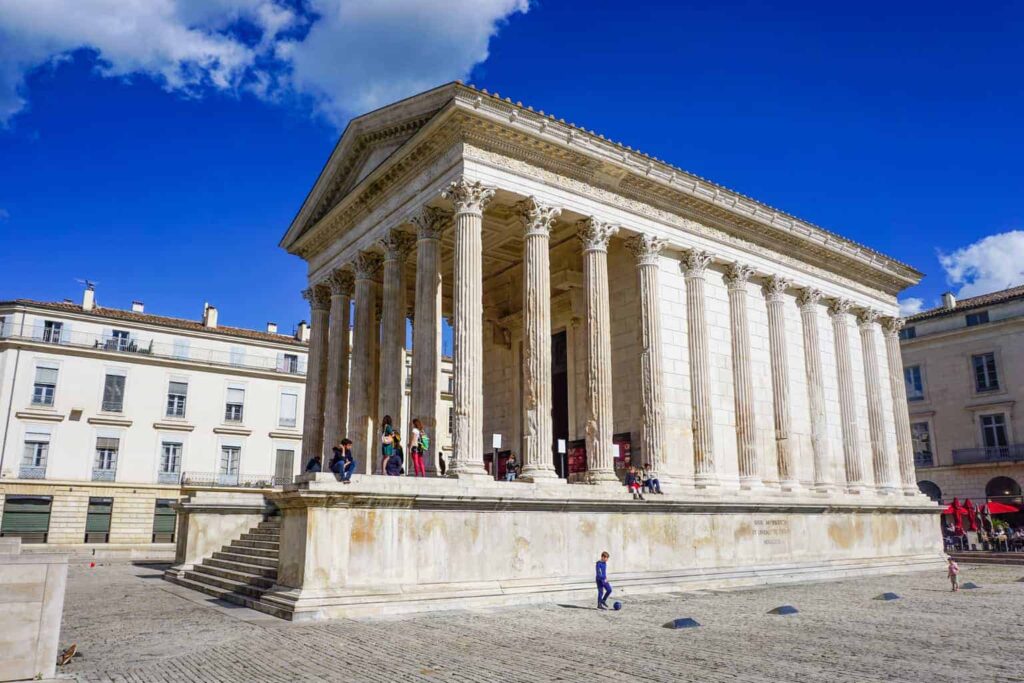
Nîmes is a larger town but is still very walkable. It’s notable for its many Roman monuments – many of which are among the most well-preserved in the world. Be sure to take a walk through the magnificent public gardens – the Jardins de la Fontaine.
One of the first-ever public gardens in Europe, they are a fascinating mix of open green spaces, large water features, intricate sculptures, and ancient ruins. Climb to the top of the gardens for unmatched views of the city!
Day 7 – Cassis and the Calanques
Stay: Aix-en-Provence
Cassis is a charming portside town tucked in between towering cliffs near Marseille on the Mediterranean coast. It’s by far one of the more popular places to visit in the South of France due to its recent reputation as the new St Tropez .
But while Cassis benefits from its stunning geographical location, beautiful beaches, and historically interesting sites, personally I think it’s better suited as a day trip destination than a long-term holiday base.
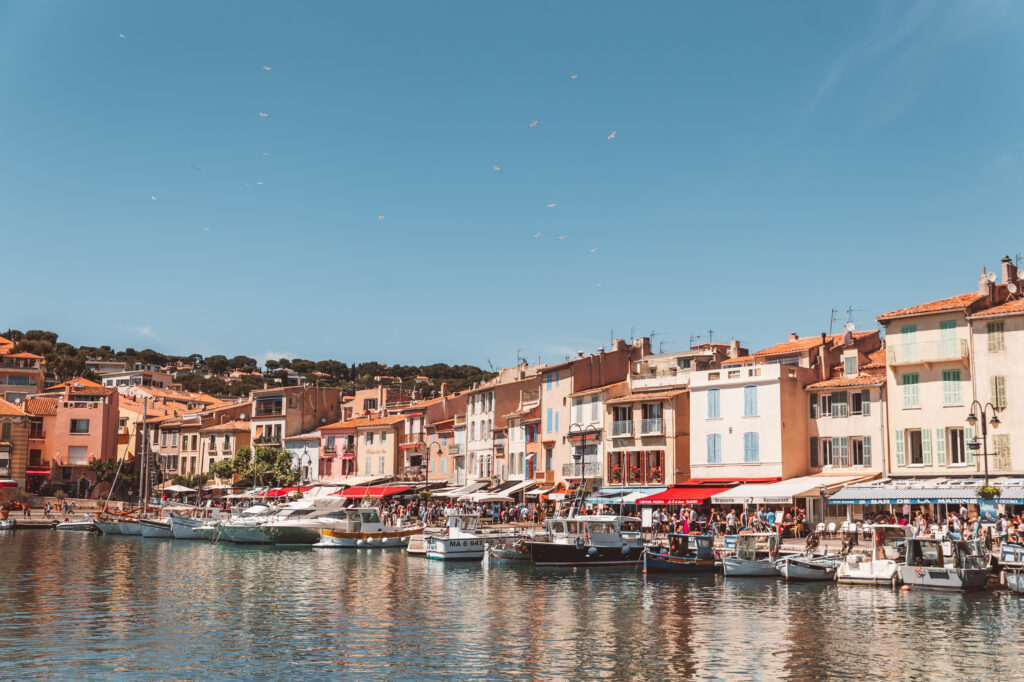
If you arrive early enough, you can stroll through the old town, browse the colourful boutiques, take in the historic buildings, and walk the pier – all in a morning. You then have the option of dining quayside, or grabbing lunch to-go and heading to the calanques.
The Calanques of Cassis are one of the most impressive natural attractions in Provence . The first time I laid eyes on these high-rise limestone cliffs I was absolutely blown away by their incredible size and stature as they jut out into the azure blue sea.
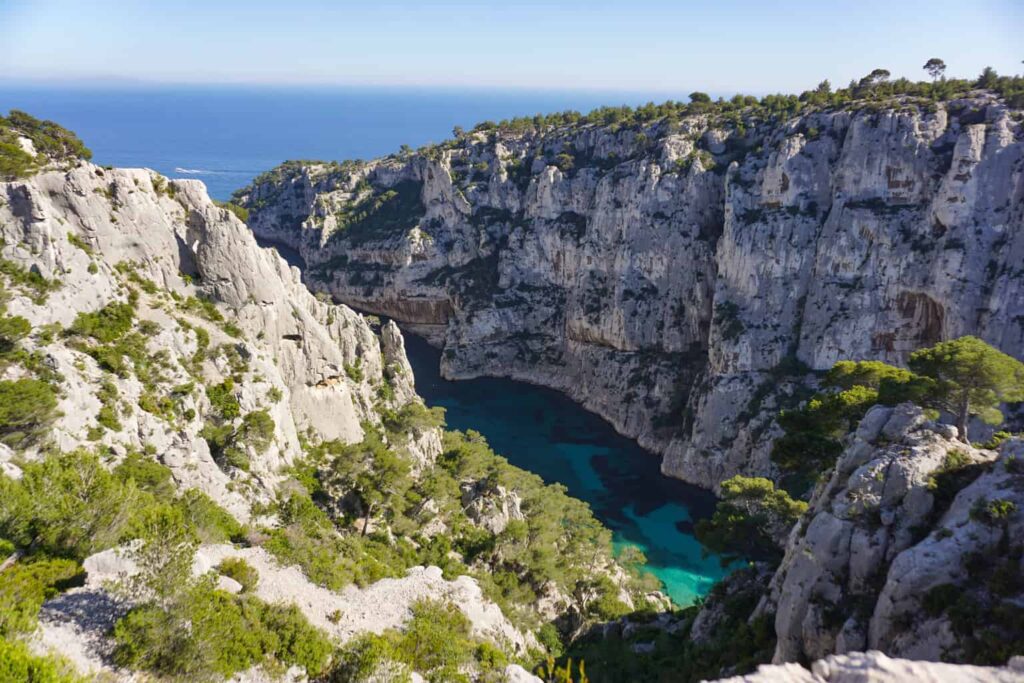
Hiking the calanques is an ideal way to appreciate the natural beauty of this national park, but if you’re short on time, or the track is closed (as it often is during the summer months when the risk of wildfires is higher), then taking a boat tour or hiring a kayak to explore the calanques from below is the way to go.
Whichever way you decide to explore the calanques , it’s sure to be one of the most memorable moments of your trip.
Day 8 – Aix-en-Provence
The last half-day of your one week in Provence itinerary is spent enjoying Aix-en-Provence . The cultural capital of Provence really deserves a longer stay, but perhaps after being immersed in the city for a morning, you’ll be convinced to come back!
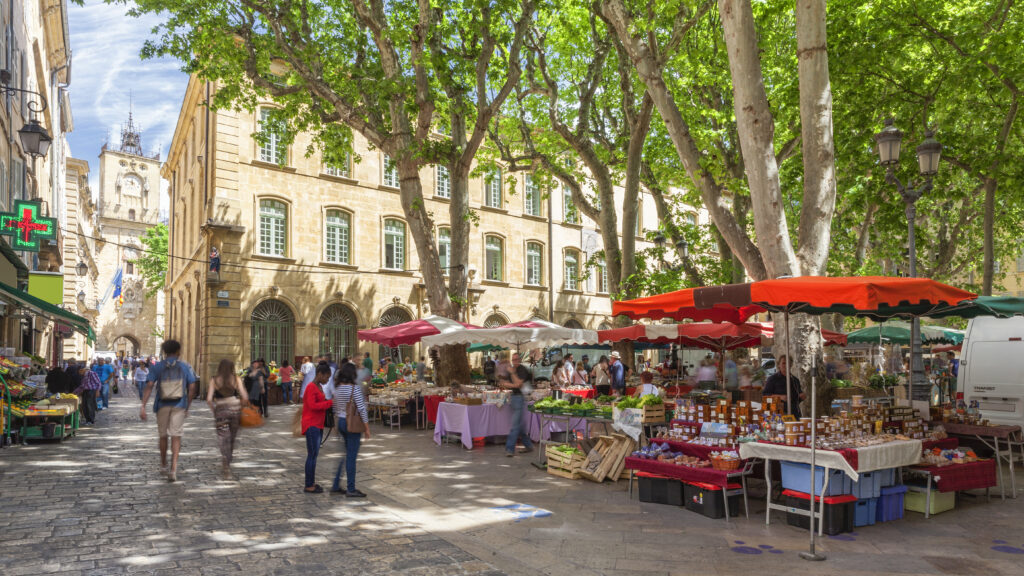
Colourful produce and flower markets are held throughout the week filling the streets with the lively atmosphere synonymous with the South of France. After you’ve browsed the wares on offer, stop for a coffee at a corner café or head to one of the famed museums to witness the true heart of this historical city .
The old town is best explored without a plan of attack. You’ll thoroughly enjoy wandering around the curved streets and hidden alleyways, coming across an elaborate – or downright eccentric – fountain at every turn. The Pavillon Vendôme is perfect for a mid-morning repose, and the iconic Hôtel de Caumont arts centre shouldn’t be sidestepped!
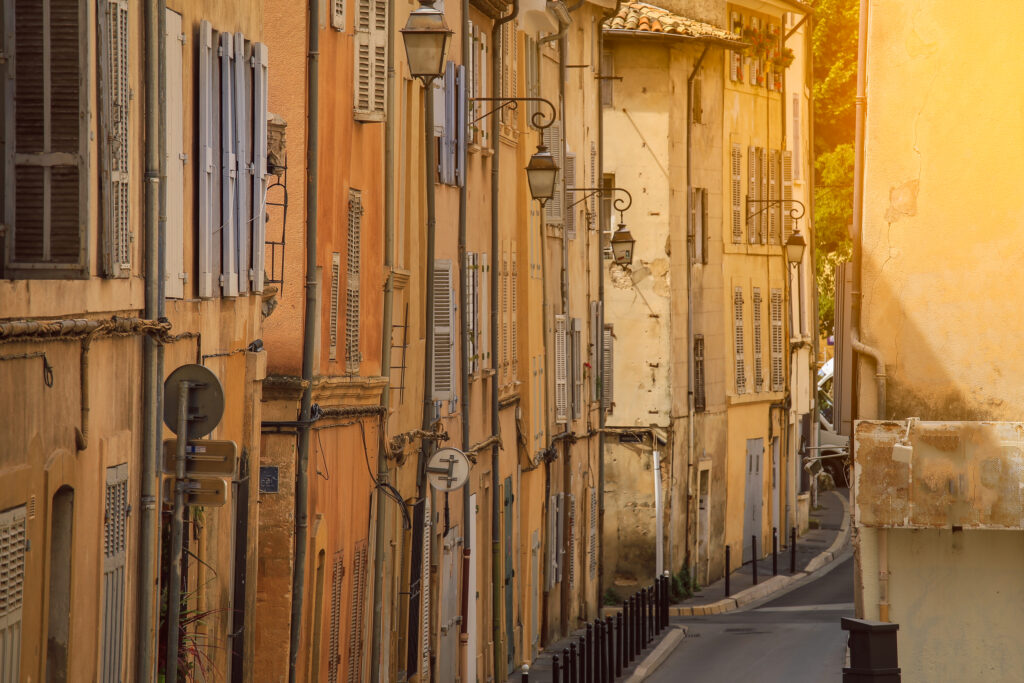
Tip – If you’ve forgotten to pick up Provence souvenirs or gifts for those back home, pop into the gift shop in the centrally located tourist office. They stock a small but curated selection of the region’s finest products.
It’s impossible to see everything Provence has to offer in just one week, but this 7-day South of France itinerary is sure to give you an in-depth taster of this delectable part of France !
If you’re looking to extend your trip by a few extra days, I’d suggest checking out my posts on day trips from Avignon , and Aix-en-Provence to find inspiration for a few extra days touring.
Pin this for later!

Similar Posts
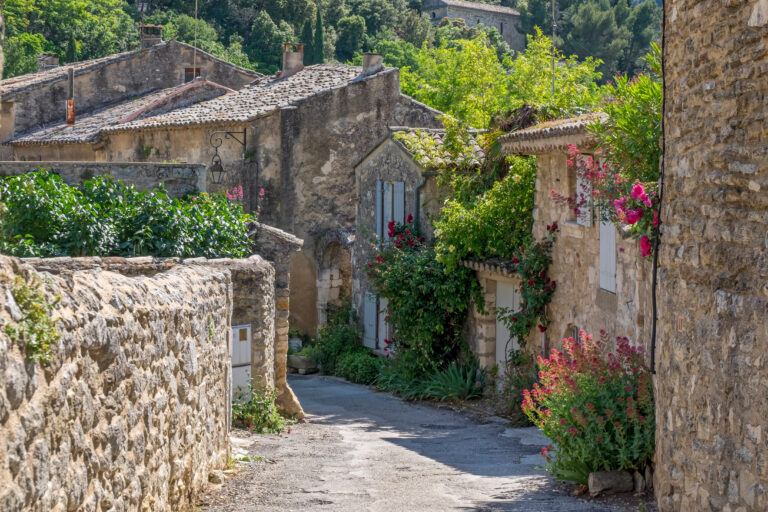
Beautiful Movies Set in Provence, France
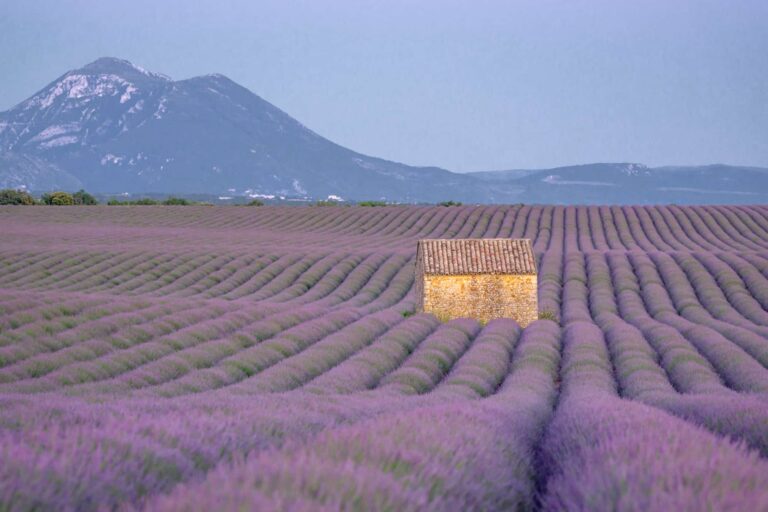
The Best Lavender Fields of Provence, France – 2024 Guide
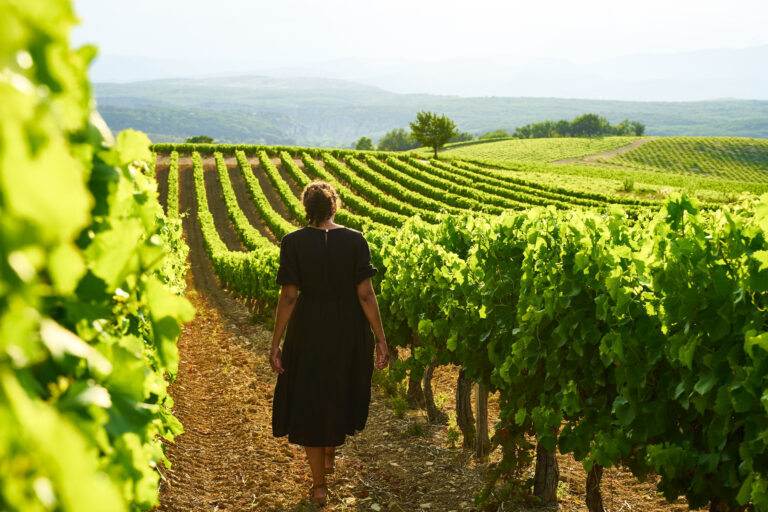
Best Wineries in Provence, France (to Visit in 2024!)
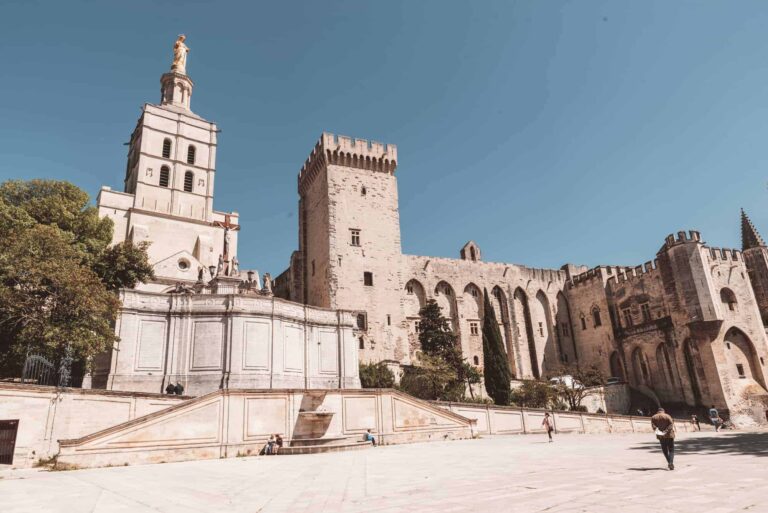
The Best Places to Stay in Avignon, France
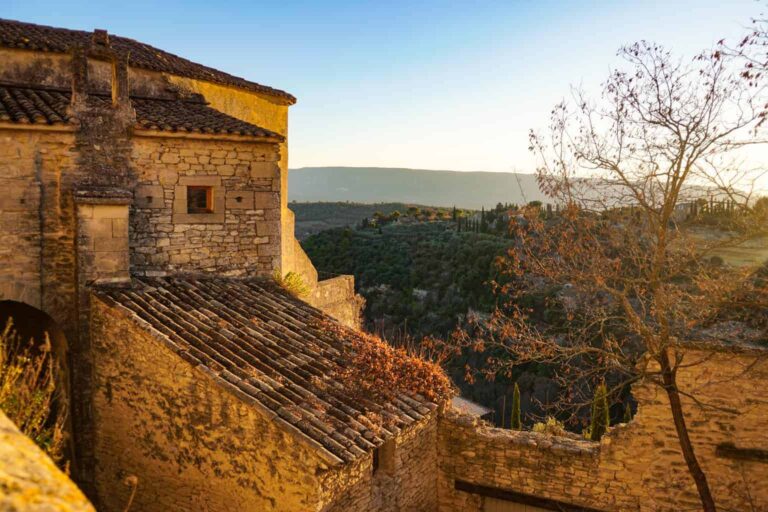
The Best Day Trips From Aix-en-Provence, France
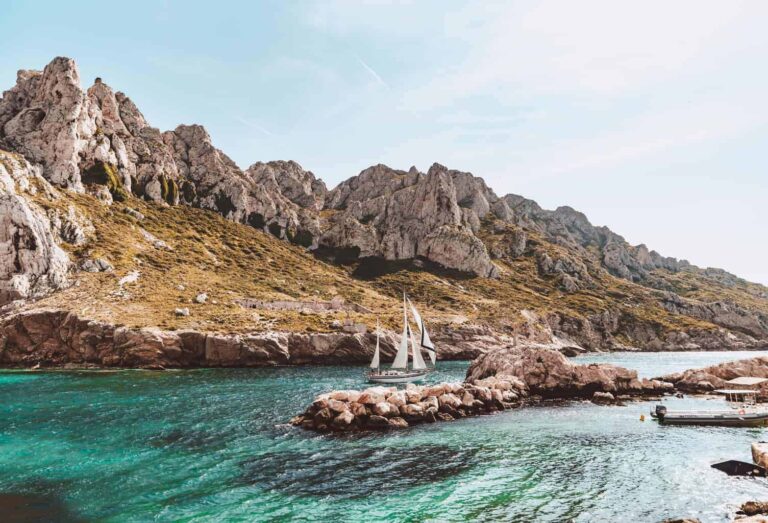
Experiencing the Magic of Les Goudes, Marseille
49 comments.
Loved your Itinerary of South of France. We will be traveling in mid October.
That’s great – so glad you found it helpful!
This sounds amazing! Travelling with an almost 1 year old – do you think it’s doable basing ourselves in Avignon?
Hi Sophie, I think it’s doable with an almost 1-year-old! I remember at that age my son was easy enough to cart around with the help of a baby carrier (easier than prams on French streets!). I’ve deliberately not overloaded the days, as I don’t think rushing around does anyone any favours. So you should be fine 🙂
This is great! Thanks for sharing this one week itinerary to visit Southern France, it indeed is perfect! This will be our itinerary come this week. Appreciate much!
You’re most welcome Berna! I hope you enjoy your time in Provence 🙂
We will be visiting Southern France in Mid May 2019. Your information has been very helpful for our planning. Thank you!
You’re so welcome! Glad you found it helpful 🙂
This is an absolutely fantastic itinerary and so wonderfully well-explained; the best I’ve found anywhere on the Internet. It has helped us immensely to organise our own itinerary. Thank you so much!
This makes me so happy to hear! Thanks for your lovely comment and I hope you have a fantastic holiday in Provence 🙂
Thank you Nadine – terrific suggestions. WE will be heading there in early June 2019 and have almost 2 weeks to spend there. FRom Aix, any suggestions for adding 4 or 5 days?
Hi Beth, with an extra few days you’ll want to spend an extra day getting to know Aix itself. You could also head over to the Verdon Gorge which is breathtaking, as are the surrounding villages. You could spend longer getting to know the Luberon area, and around Sault. Head to St Remy for a stroll, Nimes is a fantastic city for history and gardens and Marseille waterfront area is great for a day trip too. It should be fairly warm by then, so the beaches south of Martigues are perfect and not too busy then!
Planning a spring or fall 2019 trip to Provence- your itinerary looks really good! any concerns about driving? For seniors?
Hi Dick, the advice I’d give you regarding driving, is to hire a small car, and take your time. Allow plenty of time to get around so you can stop and take in the view when it suits you. Try to avoid the main large roads as these can get very busy – especially during peak times. And have some kind of GPS on you. Hope you have a great time 🙂
Your blog post is super helpful (and beautiful pictures as well!). I love that you provided highlights for each of the places mentioned. My husband and I have booked a 10 day trip to France for Feb 2019 and were wondering if you could provide some advice. Here is our tentative itinerary:
Feb. 10th – land in Paris at 10am Feb 10th – 14th: stay in Paris (with a day trip to Versailles on Feb. 13th) Feb 14th – take TVG to Nice (19Euros per person one-way direct) Feb 14th – 17th – stay in Nice (and surrounding region) Feb. 17th – rent car and drive to Aix-en-Provence Feb 17th – 19th – stay in Aix-en-Provence (or somewhere else) Feb 19th – take TVG back to Paris (19Euros per person one-way direct) Feb. 19th – stay in Paris Feb 20th – take flight back home in the morning
What are your thoughts? Do you think we are spending enough nights (or not enough) in each of these regions? Or would you recommend just spending 5 nights in Paris and 5 nights in Nice to keep it simple? Given that it will be winter, would you recommend other regions instead (Annecy? Chamonix (although we don’t ski). Thanks!!
Hi Nadia, so sorry for the delayed reply. Oh, it’s so hard when you only have ten days to explore! So I think you’ve done the right thing by choosing just two areas to explore this time around. I’m kind of biased, but I think Paris and Provence is a good place to start. And then you can plan another trip to France to see some more at a later date 🙂 To answer your question, I think it looks pretty much spot on. Again, I may be a bit biased but I’d cut one day off Nice and move it to Aix – to allow yourself time to explore this side of Provence more. You could even scrape one day off Paris at the beginning – but it depends whether you’re more into city attractions or cultural/countryside attractions. You can see a lot of Paris in 2/3 days. Hope that helps a little and apologies again for the delay!
Wonderful itinerary- thank you for sharing your advice. We are planning on traveling to France this May as a family of 5. The plan is to fly into Paris for a few nights before heading to Provence for 6 nights. I know you recommend driving in Provence, but do you have any suggestions regarding transportation from Paris to Provence? We don’t have any interest in going to Nice during this time, so we would prefer not to fly into that airport. Any advice is appreciated!
Hi Laura, your best bet is to take the TGV to Aix-en-Provence or Avignon – depending on where you’re intending on staying. You could fly into Marseille, but I find the train journey to be much more pleasant and straightforward! Hope that helps 🙂
Thank you, Nadine!
You’re most welcome 🙂
My wife and I are planning to spend 5 days based out of Aix-En-Provence (with hotel points so we are limited there). Do your recommendations change at all if Aix is our home base? We are total wine freaks and love touring the little villages!
Hi Jonathan, with only 5 days, and based in Aix, I’d suggest spending at least two days in the Luberon (where you’ll find plenty of little villages and wineries). Have you read my post about touring the Luberon yet ( find it here )? It has lots of suggestions for driving routes. Then a day maybe down by the coast, around Cassis and the Calanques, a day getting to know Aix, and maybe a day heading over towards Valensole and the Verdon Gorge. More lovely villages around the lake, and if it’s the lavender season (June/July) its the best place to find beautiful fields!
This is really helpful. I’m planning my trip this first week of June 2019. I’m travelling alone though, will you still recommend the same places? Or can you suggest other places as well. I’m thinking of spending 10-15 days after Bordeaux &Lourdes. Thank you very much for your recommendations.
Hi John, yes absolutely! You could also add in the Verdon Gorge (and surrounding villages), the coast around Niolon/Martigues, Sault, or Marseille if you like the city vibe. And/or spend more time in Aix-en-Provence or the Luberon. So many options, sorry 😉
Hello Nadine, Can you give me your thoughts on this itinerary? Houston to Nice, stay in Eze two nights(possibly visit Antibes, Menton, And Vence) drive to St. Remy for three nights(traveling to area village) and Aix for two nights. Fly out of Marsielle. Love your blog!!!!
Hi Melissa, your itinerary looks good to me! By staying in all three areas you’ll get a really good ‘taster’ of these areas – which are all quite different. Have a great trip!
We will be going to South France in May 2019.
Arriving Avignon on 13May for 3 nights. After then 1 night in Provence and 2 nights in Nice.
We have not plan much with our itinerary. Will you be able to help.
Thanks and regards Doreen
Hi Doreen, unfortunately, I can no longer offer personalised itineraries. However, I’d suggest starting by reading my Day Trips from Avignon and Day Trips from Aix-en-Provence articles and noting down which things interest you most and going from there. If you’re staying in Avignon you’ll most likely want to spend a day getting to know the city too – it’s lovely and there is plenty to do! Sorry, I don’t have much written about Nice as yet!
My parents and I have just returned from a wonderful week in Provence. We largely followed your itinerary so I wanted to say thank you! It really saved me a job of researching and coming up with my own itinerary for which I was really grateful! We loved how every day was different (we added a St Tropez day too) and couldn’t actually pick a favourite day as each day offered so much. Unfortunately, though we bought tickets, we didn’t actually go to Carrières de Lumières as the queues were quite ridiculous – which was surprising as we experienced very few queues anywhere else. Instead, we continued straight to Glarnum and really enjoyed the site. In Cassis, we also drove the Corniche des Cretes (which I have visited before) to take in the wonderful view – it was just as impressive as I remembered.
I’m heading back to the South of France this summer to spend a month in Nice/Villefranche-sur-Mer – I cannot wait! I’m hoping for more of the same wonderful weather!
Anyway, thank you again!!
Ah – you are so welcome Sheralyn! Thanks for telling me about your experience and for the lovely feedback. Much appreciated 🙂 Enjoy your time on the Côte d’Azur! Best, Nadine
Hi Nadine, We have about 10 days in Provence this summer (July 26-August 9) after four to five days in Paris. Two of our three children have multiple food allergies, so we plan to rent a house as home base so we can pack and prepare some meals. We would like to do as much as possible on your itinerary. Is this doable staying in just one location? (We would rent a car). If so, where would you suggest we stay? I found a lovely home in Louramin and another in Villars. Are these too remote? The other possibility is finding two different houses to rent but that can get tricky with seven day minimums with most rentals. Thank you! Laura
Hi Laura, Yes renting houses normally comes with a one-week min rental in summer. But don’t worry, it’s totally doable staying at just one location. We often do all of these places as day trips from our home in Rognes. Villars would be good for visiting the Luberon, but Lourmarin is better located for exploring – I’d go with that. It’s a lovely village too. Otherwise, you could look at a village further south for good access routes, like Venelles or Puyricard but they don’t have the same feel as the villages in the Luberon. Hope you find something amazing! Best, Nadine
Sorry, I meant to type Lourmarin. Thank you!
We expect to be there mid to late February next year. I was wondering how the 7 day tour would stack up in winter. It sounds perfect to me and touches on most things we want to see and experience. Are there other places we should go instead. I suspect there will be some rainy days, and it really isn’t swim suit weather but there will be enough and more…. to just be there. So do you get snow there? Is Carnival celebrated there? What would be the best place to stay in winter? So glad I found your site.
Hi Nancy, it changes every year so hard to say specifically. Last February we had a tiny bit of snowfall in February and this year we’re seeing temperatures of up to 20 degrees (Celcius) already and beautiful blue skies – very little rainfall actually as that normally comes later. There are just a few attractions that won’t be open – Carrières de Lumières for example – and less frequent markets, but other than that it’s business as usual. Carnival is celebrated nearby, in Nice, mid-late Feb. For a winter stay I’d still recommend Avignon or Aix as a base for exploring the region. Hope that helps – feel free to pop over to our Provence Travel Planning Facebook group if you have more questions 🙂
We are a kiwi family of 4 and will be arriving in Provence in mid Sept for 11 days. Your itinerary looks fantastic but I’ve seen your comments about driving, particularly the small roads. We have toured that area before in smallish hire cars but this time we were planning to do 1 week in a camper van because the kids love the idea but I’m worried that it will stop us seeing places due to its size / parking etc. As you live there I’d really appreciate your thoughts.
Thanks, Duncan
Hi Duncan, yes I normally recommend smaller cars if you’re inexperienced driving on smaller roads. But as it sounds like you’ve done it before, and if you have experience with campers, you may find it’s ok. With the villages in the Luberon, you’ll need to park outside the villages anyway and there are often large carparks outside for this purpose. Some attractions also have dedicated camper parking – normally a little further away. For example, at the Village des Bories outside of Gordes, there is campervan parking, but quite far away, as the road to access the village is too narrow. Places like the Camargue and Pont du Gard, Avignon & Aix etc you’ll have no trouble I’d imagine. So, it won’t stop you – just be prepared to walk a little further in some cases! Have a fab trip 🙂
Thank you for this! We are a family of 5 who will be visiting the last week of September and basing ourselves in Alleins. Your blog is very helpful! We’d love to do do canoeing, hiking and biking. Do you think the weather at that time of year will be be warm enough to swim in the river or in the sea? Thanks!
Hi Julia, first of all, Alleins is a great village as a base! We used to live there and still have our Airbnb in the village. As for swimming, it’s typically still swimmable in September, as it has had all summer to warm up, but the temperature does taper off a bit by the end of the month. It depends how brave you are 😉 I don’t find our ‘part’ of the Med ever gets super warm… You might be better off going to Lac de Sainte Croix which is absolutely stunning and a must-do if you’re an outdoor loving family! Hope you have a fab time. Nadine
Wonderful itinerary, thank you so much!! My husband and I are coming Oct 11-21 for our honeymoon! We fly into Barcelona and will be renting a car and driving up to Provence area.We get in mid afternoon to Barcelona so we are planning to rent our car and stay on the Costa Brava the night we get in. Then exploring that area for a bit on Sunday, then driving up to France. Wondering what you would recommend- here are our options we have been debating:
1. When driving up from Barcelona, veer off to Carcassone and Toulouse (probably would also visit Albi) for a few days. Then drive over to Provence area, probably Avignon to stay, and be in Provence for around 4-4.5 days. Then drive back to Barcelona.
2. After leaving Costa Brava, drive straight to France, probably stop in Narbonne for the night on the 13th. Head to Avignon and spend the entire time we are there in Provence- doing similar things to what your itinerary outlines. We would have about 6-6.5 days in Provence.
3. After leaving Costa Brava, drive straight to France, probably stop in Narbonne for the night on the 13th. Head to Avignon and spend whole time there. Do a day trip (or potentially a few days) in Lyon.
Which would you recommend? Or is there something we should do even differently? Thanks!!
Hi Melanie, apologies for the delay with my reply. With ten days up your sleeve, you certainly have a fair bit of time to look around. I loved Narbonne when I visited, but I’m not sure how lively it is in October. And I’ll admit I’m not familiar with Lyon yet. I guess it depends if you’re more city people, or village people! Avignon is a beautiful city, that feels more like a large village, especially if you stay in the centre. I would think 6-7 days is a good time to explore the best of what Provence has to offer. And my inclination would be that if you want to see somewhere a little different, to do the Carcassone option on the way. Rather than going all the way up to Lyon. Hope that helps a little!
Hi Nadine, we are travelling to France in january 2021 and depart on a cruise leaving Marseille on 16 january for 8 days. We arrive in Nice about 4/01/20 and would like advise on what to do after that as we want to hire a car and visit the Provence area and the south of Spain for the next 10 days. Do we hire a car in Nice or travel by train to Marseilles or Avignon at where we will hire a car. Because it is winter, we would like to visit Annecy from Lyon, by train or bus to Annecy. Please suggest an itinerary from your experience.
Hi Geoffrey, Seeing as your cruise is departing from Marseille, I’d recommend taking the train (or FlixBus) from Nice to Marseille and hiring a car there. This way you won’t get charged one-way fees that can be quite high. With ten days you could take in Marseille (& Cassis), Aix, Avignon, the Luberon & the Camargue area fairly easily before heading down to Spain. However, you won’t have time to drive to Southern Spain unless you want to spend a lot of time in the car! I’d recommend Catalonia instead. I’m not sure how the Lyon/Annecy trip fits in? Is it part of the ten days, or in addition? Best, Nadine
Thank you for writing this informative article .i have read twice a time
Hi, Nadine, your itinerary is just perfect for our trip that I’m planning for the fall of 2021 for our 30th anniversary. We’ve never been to France and want to fly into Paris, spend 2 days there and then take the train to follow your itinerary. After that we want to make our way down to the Val D’Orcia in Pienza and spend a week at our favorite agriturismo. Is it possible to take a train from Aix to Florence (that’s where we would transfer to get to our car rental in Terantola)?
Hi Judy. I do believe it would be possible. But train travel between the south of France and Italy isn’t normally fast, cost-effective, or straight forward from my experience! I think you may find it’s easier and cheaper to fly from Marseille to Florence. Or from Marseille to Rome and then take the high-speed train to Florence.
Can’t wait
I love your itinerary but I will be traveling with a group that does not want to “move around”. I would love your input on a 5 vs 6 night stay in St Remy. I will be bringing family (total of 4 couples) to Provence April 23-30, 2022. They do not like to “pack & unpack” so I will rent a luxury farmhouse in St. Remy for the either 5 or 6 nights. We will fly back to the US on April 30th. I cannot decide if we should spend 5 nights in St Remy then the last 2 nights at a waterfront hotel on the French Riviera (would have to be within 1 hr of the Nice airport OR the other option is to spend 6 nights in St Remy then just the last night close to the Nice airport. Do you think it’s worth moving those last two nights?? Would it allow enough time to see a little of the French Riviera?? Thank you for any suggestions you might have! Jane
If you have your heart set on seeing the seaside, I’d recommend a 5-night stay in St Remy and 2 nights on the Riviera. But keep in mind, April can be a mixed bag weather-wise and the mistral wind (frequent in spring) can make the seaside unenjoyable some days.
Leave a Reply Cancel reply
Your email address will not be published. Required fields are marked *
This site uses Akismet to reduce spam. Learn how your comment data is processed .

Home » Itineraries » South of France Itinerary
South of France Itinerary
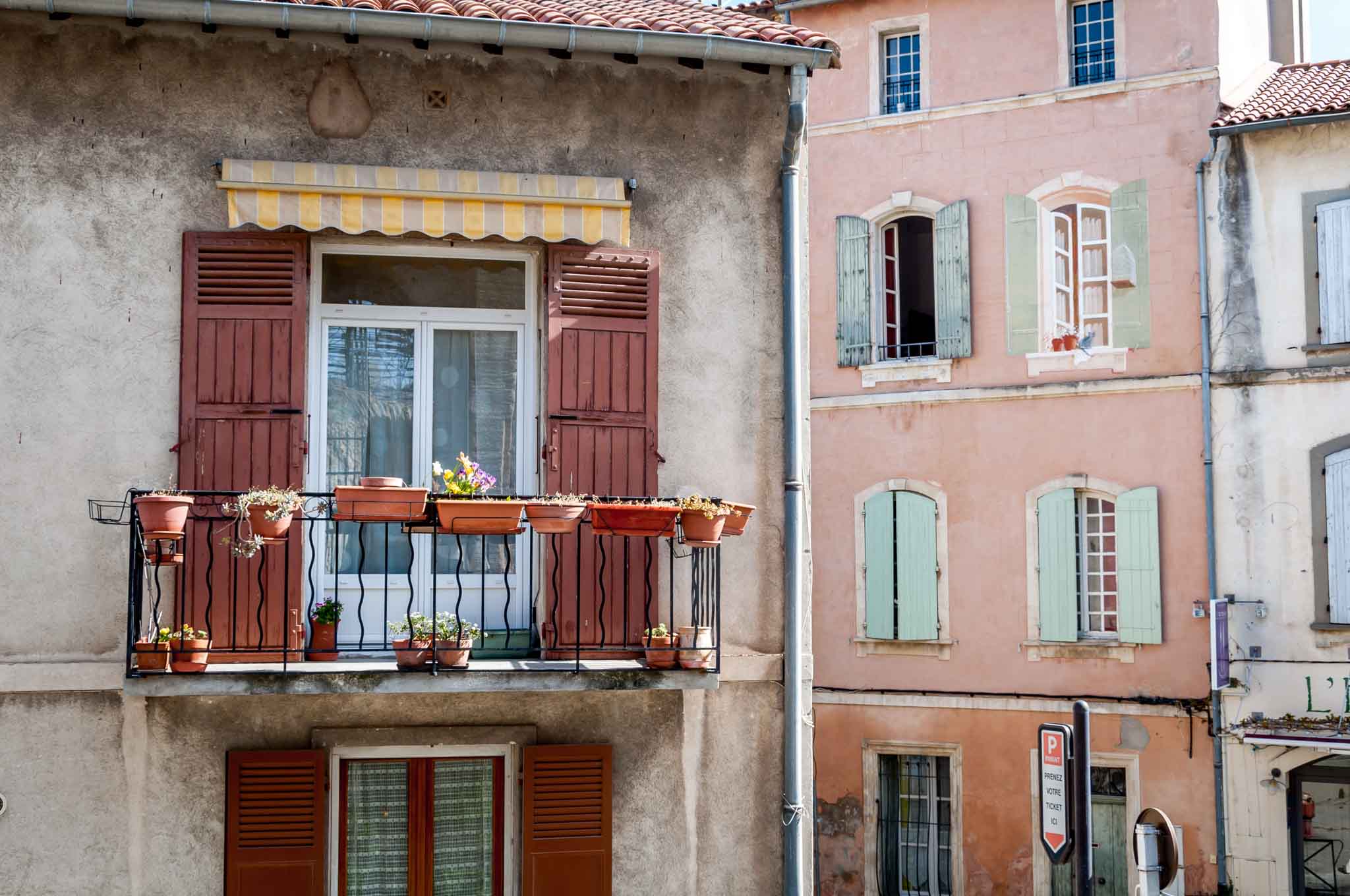
It’s almost impossible not to love France. But between business trips and personal trips, we hadn’t made it out of the northern part of the country…until now. This 10 day South of France itinerary took us through small towns and larger cities, to Roman ruins, lush vineyards, seaside retreats, and to all the local Provence markets we could possibly want. The first five days of the trip were done using Avignon as a base and traveling via public transportation. For the last five days of the trip, we rented a car and used Saint-Remy de Provence as a base.
10 Days in the South of France
Getting to southern france, days 1 & 2: avignon, day 3: nimes, day 4: arles, day 5: markets of aix-en-provence, day 6: roussillon and beyond, day 7: cotes du rhone, day 8: pont du gard and uzes, day 9: cassis, day 10: saint-remy de provence and beyond, provence travel tips.
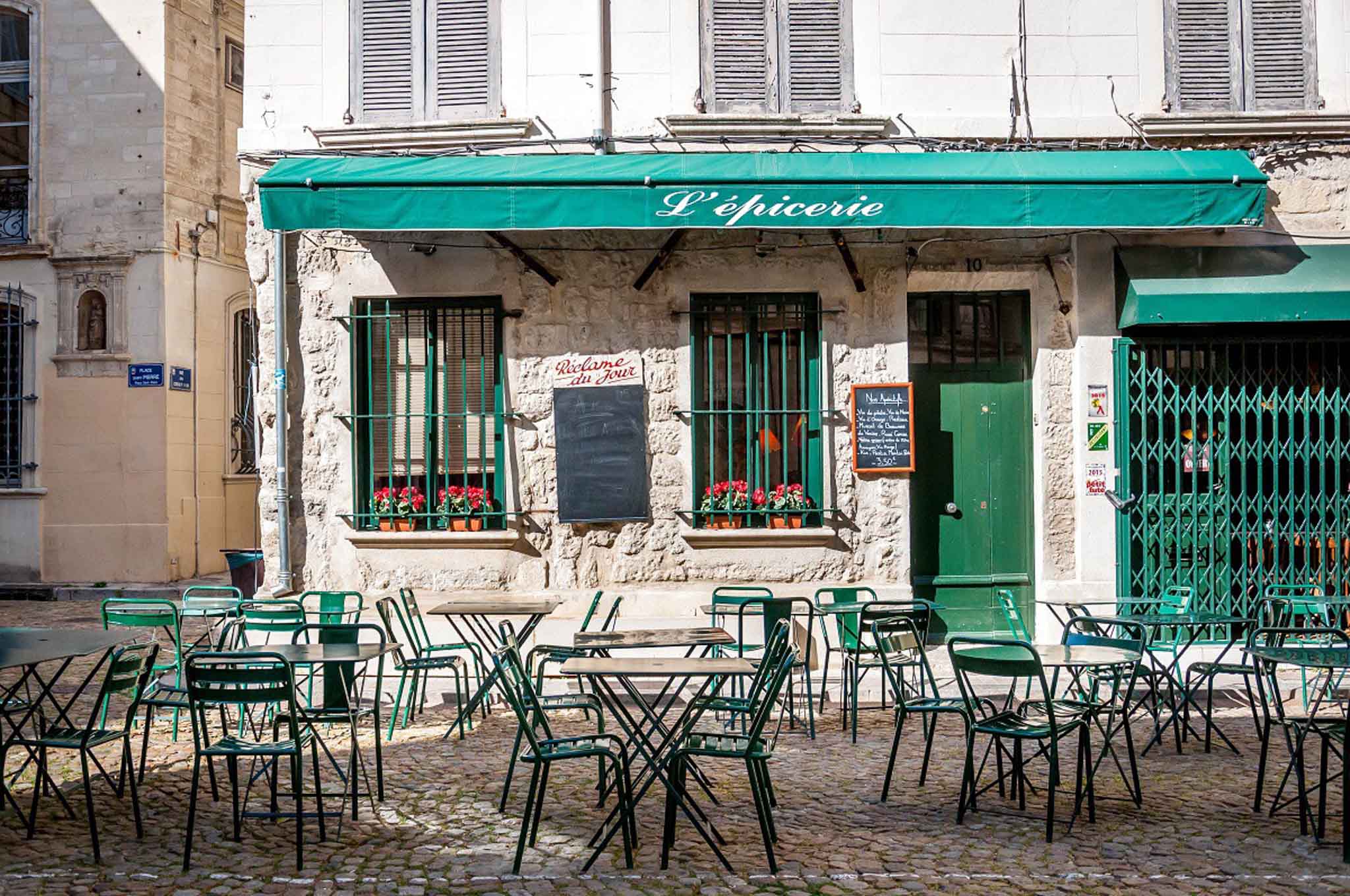
The two main ways to travel to Avignon are by flying into Paris or Marseille. From Charles de Gaulle airport in Paris, you can take the TGV train to Avignon’s TGV station and then transfer to the city center (about 3 hours). Or, you can fly into Marseille and take a local train (30-60 min, depending on the train).
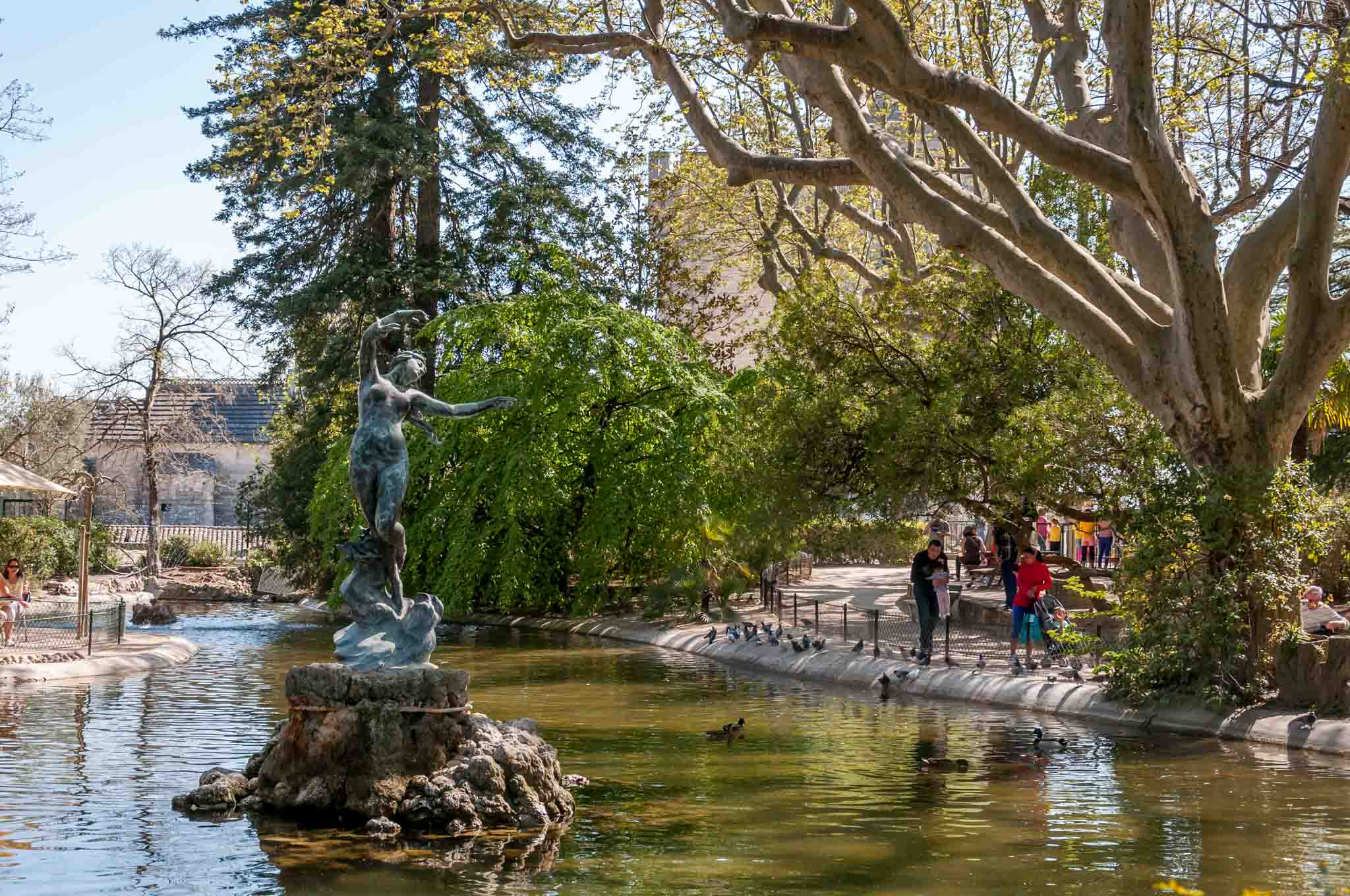
Our first day exploring Avignon brought a stop at the bustling indoor Les Halles market. Even if you’re not buying groceries, this is a great place to acquaint yourself with one of the most important things in Provence—the food. Sample some goat cheese, breathe in the olives, and grab a tart and a glass of white wine for a light lunch. If it’s Saturday morning, don’t miss the cooking demonstration.
In the afternoon, we strolled through the lovely Place de l’Horloge on the way to a tour at the Palace of the Popes . While we didn’t strictly need a guided tour of this UNESCO World Heritage site , it was a great way to see areas that aren’t otherwise open to the public, and the view from the roof is worth it.
After our tour, we headed a few steps across the plaza to the Musee du Petit Palais . It contains a world-class collection of Renaissance works, all dealing with Christian themes. We capped off our day with tea at the famous La Mirande hotel.
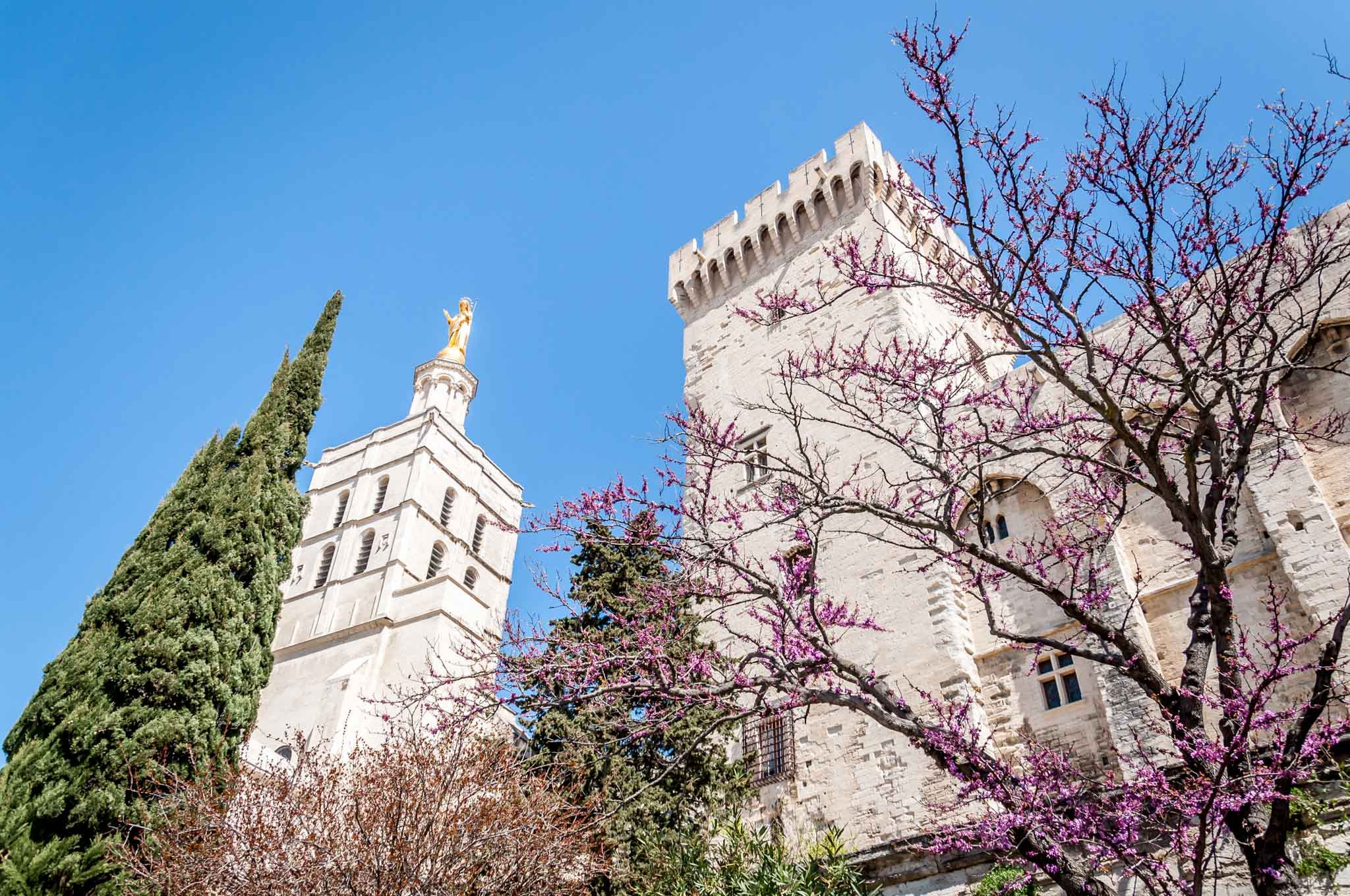
Our second full day in Provence was just as full as the first. We visited the Parc Rocher des Doms, a sprawling local park with beautiful views near the Palace of the Popes. From the park, it was an easy walk to Avignon’s famous bridge, Pont Saint-Bénézet, which only partially crosses the Rhone thanks to the erosion that comes with regular flooding.
We also wandered the Rue des Teinturiers, a tree-lined street with an unexpected complement of canals and waterwheels. This area is home to a number of shops and galleries as well as the affordable and un-touristy La Cave des Pas Sages wine bar.
If you have access to a car or other transportation, a visit to Manguin distillery just across the river is a fun outing. Saturday morning tours (in French) show the production of brandies and liqueurs and the pear orchard where bottles seem to grow on trees. With its mix of culture, history, and delicious things to eat and drink, Avignon is undoubtedly one of the best cities in Southern France.
Skip the line at the Palace of the Popes, see other Avignon highlights, and go wine tasting on this half-day tour of the city .
Where to Stay in Avignon
- On a pedestrian street in walking distance to all the sites, Garlande Hôtel Avignon Centre offers a great breakfast and helpful staff ( Read reviews and book a room )
- A central location with views of the Palace of the Popes and a hearty breakfast make the Hotel de l’Horloge a winner ( Read reviews and book a room )

A quick train ride from Avignon, Nimes was our second stop on our 10-day South of France itinerary. The city dates back to Roman times, which is obvious by its centerpiece, the Arena of Nimes . Built in 70 AD, the arena still hosts bullfights and other events. Another popular site in Nimes is the Maison Carree, one of the best-preserved temples in the Roman Empire, which is amazing when you consider that it is over 2000 years old. Nearby, the city’s indoor market makes a great option for lunch.
Before leaving Nimes, we had two more stops. The first was the Musée des Beaux-Arts of Nimes , a fantastic museum featuring a collection of 3600 impressive works of fine art and sculpture from Roman times to the Old Masters. Then it was time to get outdoors and spend some time at the Jardins de la Fontaine, an 18th-century public park modeled after the gardens at Versailles . It was gorgeous, and we spent way more time than was reasonable, but the park was an unexpected highlight of our South of France trip.
This 5-hour guided tour of Nimes, Pont du Gard, and Uzes will let you see the sights near Avignon the easy way.
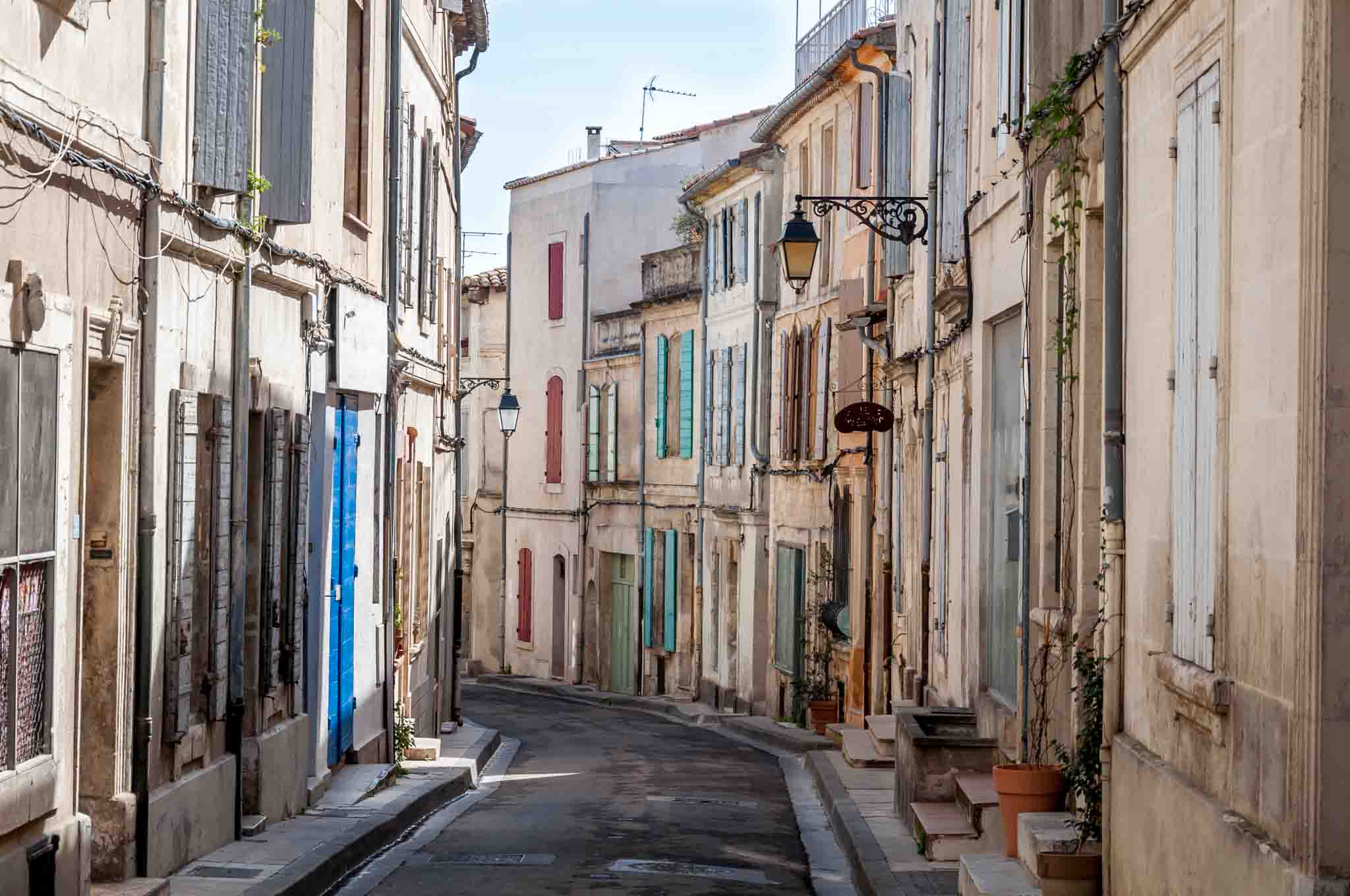
Another easy day trip from Avignon, Arles is one of the most picturesque places to visit in Provence. Splashed in blues, yellows, and greens, Arles makes you feel like you’ve stepped into a Van Gogh painting for good reason—you have. All over the city, you can see the exact spots where Van Gogh painted some of his greatest works, along with replicas of the works and some of the story behind them.
Other spots not to miss include the Arles Amphitheater and Alyscamps (a Roman necropolis) , both of which are UNESCO World Heritage sites. If you visit on a Wednesday or Saturday, the market on the ring road will be impossible to miss. Stroll through to see the cuisines of France, Spain, Italy, and North Africa all on display.
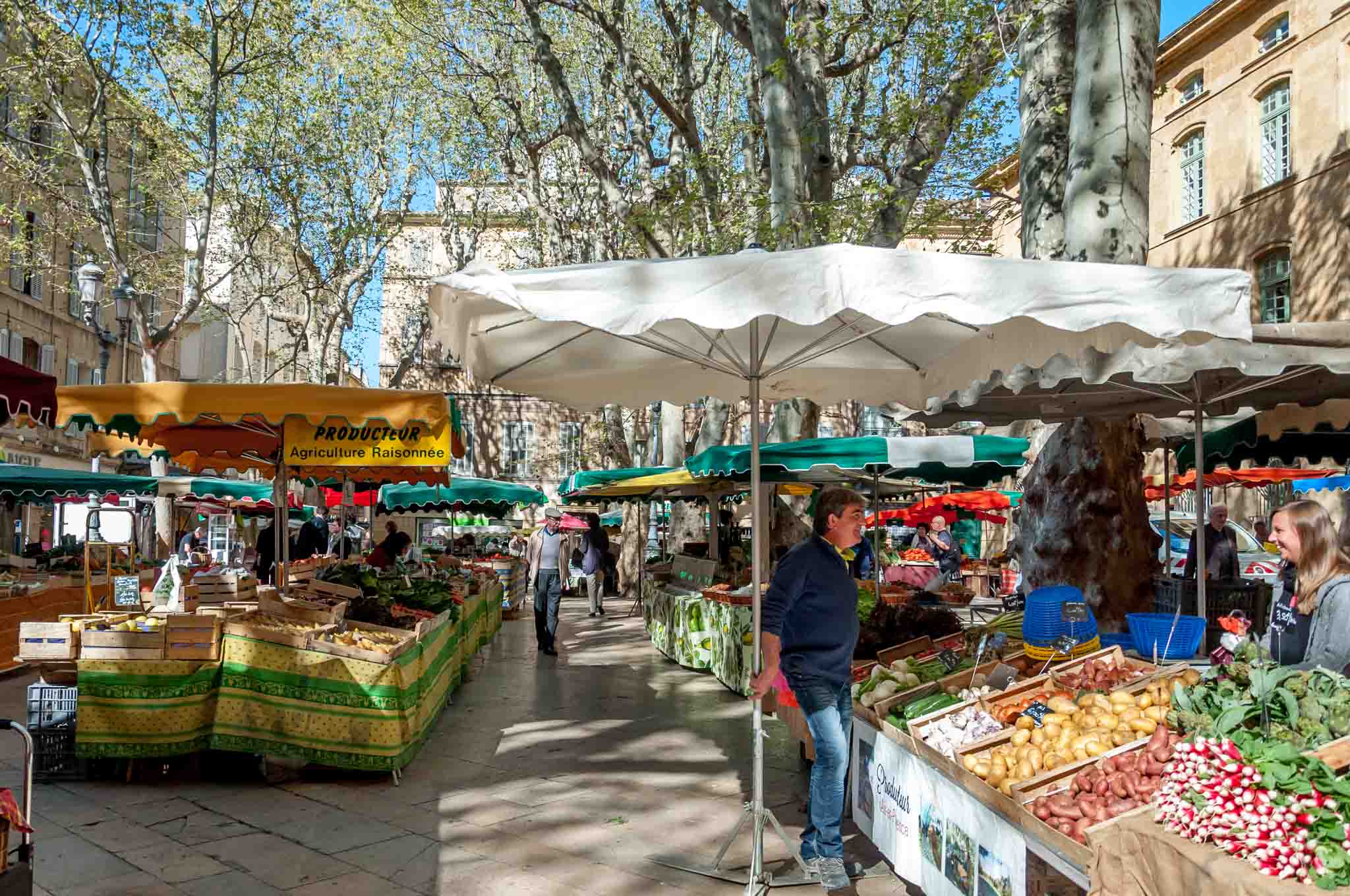
You can’t travel to Southern France without visiting Aix-en-Provence. Luckily, the alluring city is connected by bus to several towns in the region; line 23 took us there from Avignon in just over an hour.
A visit to Aix is less about how many things there are to see than it is just about experiencing the joie de vivre of Provence.
There are attractions in Aix like the city’s many fountains, Cathedrale St. Sauveur, or Place d’Albertas, an 18th-century mansion. But we spent our day in Aix-en-Provence strolling through the five markets—the farmer’s market, the flower market, the antiques market, the fruit and vegetable market, and the textiles market—that were open in the city’s center that day.
When we were done gawking and tasting, we wandered under Aix’s beautiful plane trees, bought some macarons, and snagged a place for a late lunch at La Fromagerie du Passage.
Where to Stay in Aix-en-Provence
We opted to visit Aix as a day trip, but it’s a popular place to stay overnight.
- The 5-star Renaissance Aix-en-Provence Hotel was created to be an art gallery. It features a garden terrace, a lounge bar, and the level of service you would expect from the Renaissance brand ( Read reviews and book a room )
- A 5-minute walk from the center of Aix, the Grand Hotel Roi Rene by MGallery has the comforts of a big hotel in a boutique atmosphere ( Read reviews and book a room )
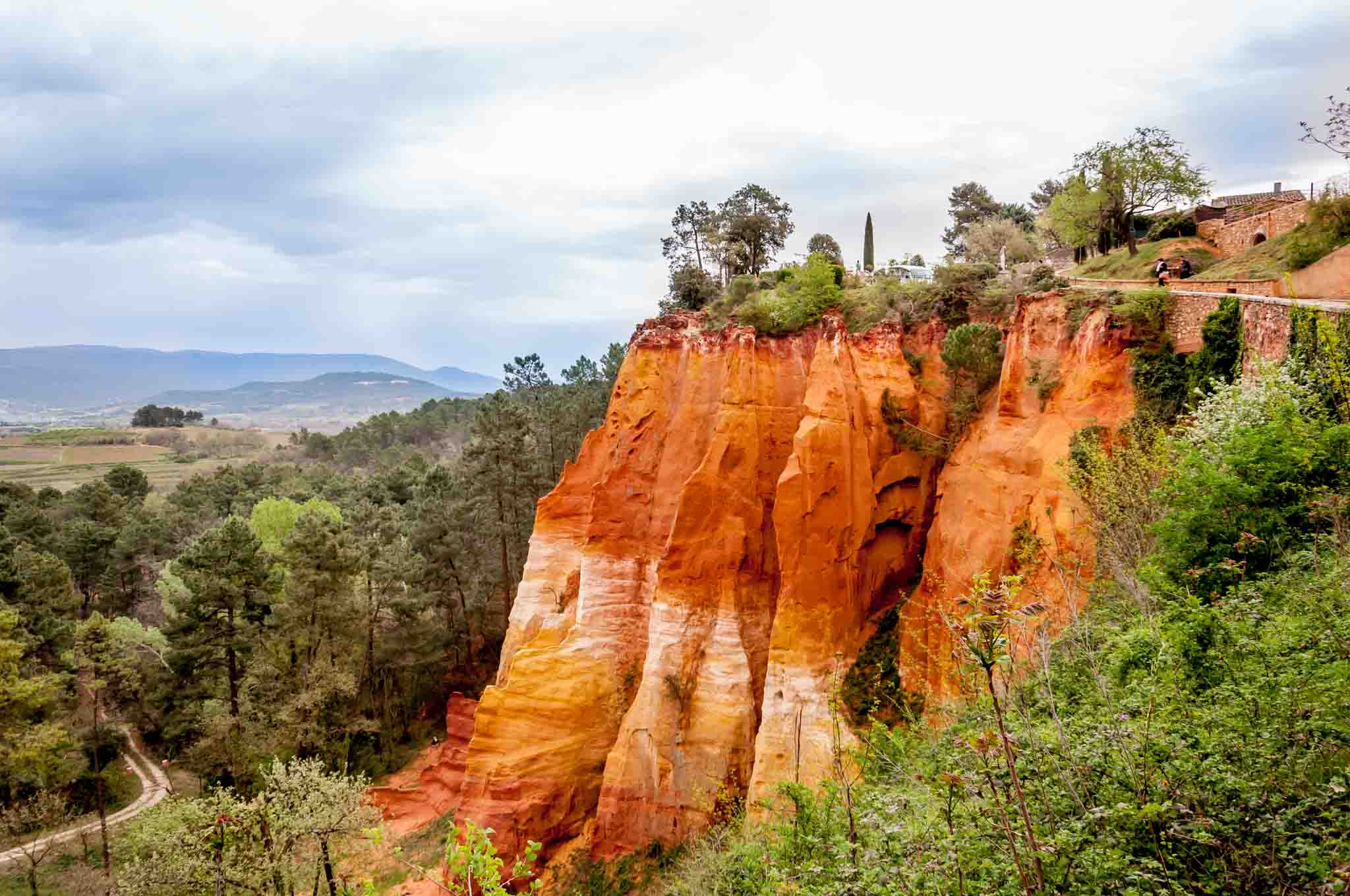
After picking up our rental car at the Avignon TGV train station, we were off on our journey deeper into the Vaucluse region. The first stop on this part of our South of France itinerary was only an hour’s drive from Avignon– Roussillon , a tiny village of less than 1300 people that known for its amazing ochre deposits.
We stopped at the small morning market in Roussillon and hiked along the streets that crisscross the hilltop, winding past small shops and homes and stopping for the sweeping views of the valley below. The ochre cliffs are also not to be missed here, whether you opt for the 30- or 60-minute walk. We paused briefly at the town’s unique cemetery before continuing our Provence road trip.
A short drive led us to Abbaye Notre-Dame de Senanque . In the summer, the field in front of this 12th-century abbey is full of brilliant purple lavender. It’s beautiful on the outside, but tours of the interior are also available. Stop for photos and to breathe deeply before getting back on the road.
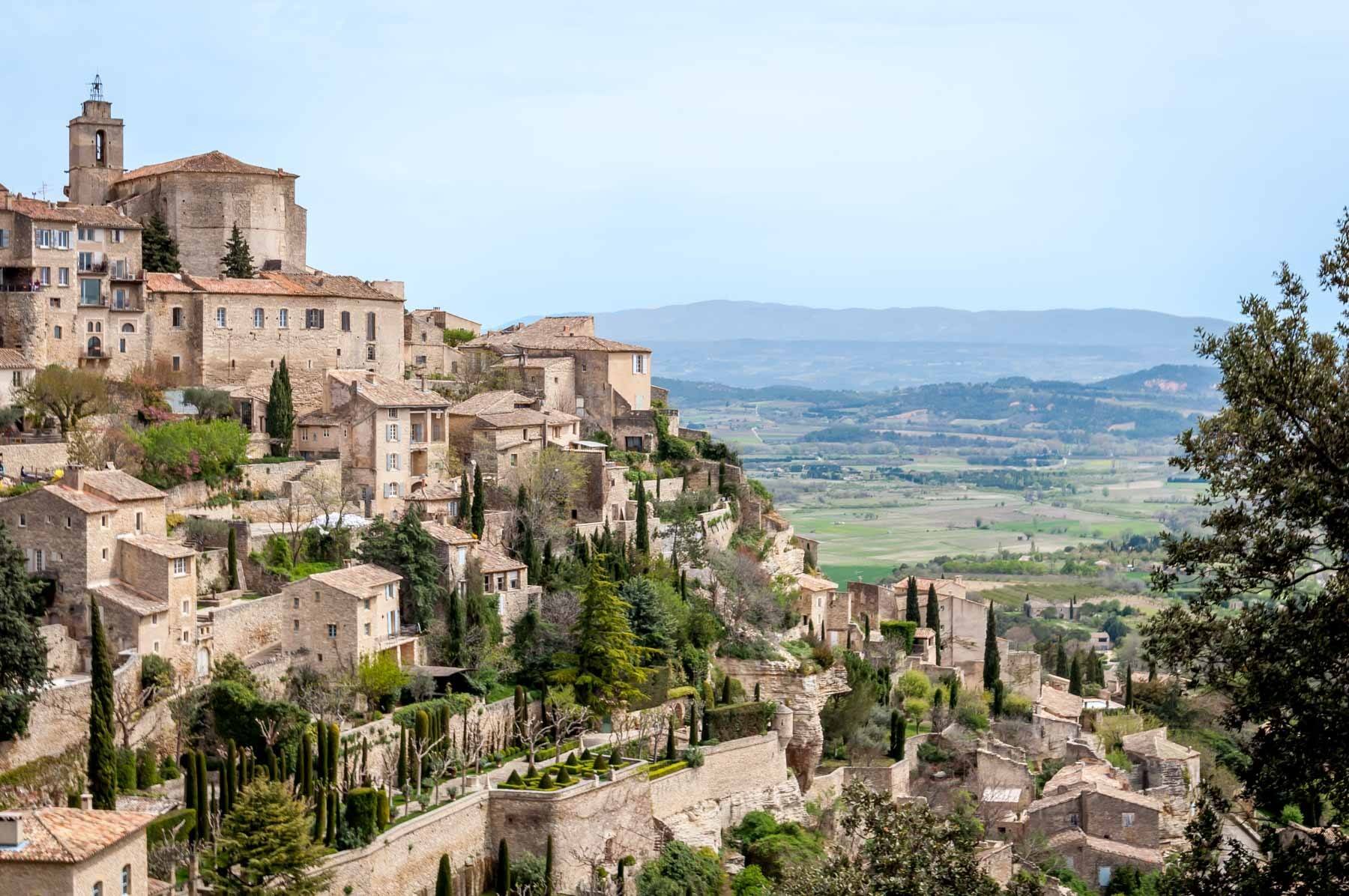
Backtracking a bit on D177 took us to the breathtaking hillside village of Gordes . If it’s mealtime, it may be worth a quick stop in town, but we found the view from a bit farther away to be the ideal way to experience Gordes. After taking more pictures than were necessary here, we were bound for our new home base of Saint-Remy de Provence.
Where to Stay in Saint-Remy de Provence
- Hotel Gounod is a beautifully-restored hotel with rich furnishings and a lovely courtyard. It feels like a French-country retreat ( Read reviews and book a room )
- With a huge courtyard and garden, pool, and inviting rooms the Hotel de l’Image is an ideal base in the middle of Saint Remy ( Read reviews and book a room )
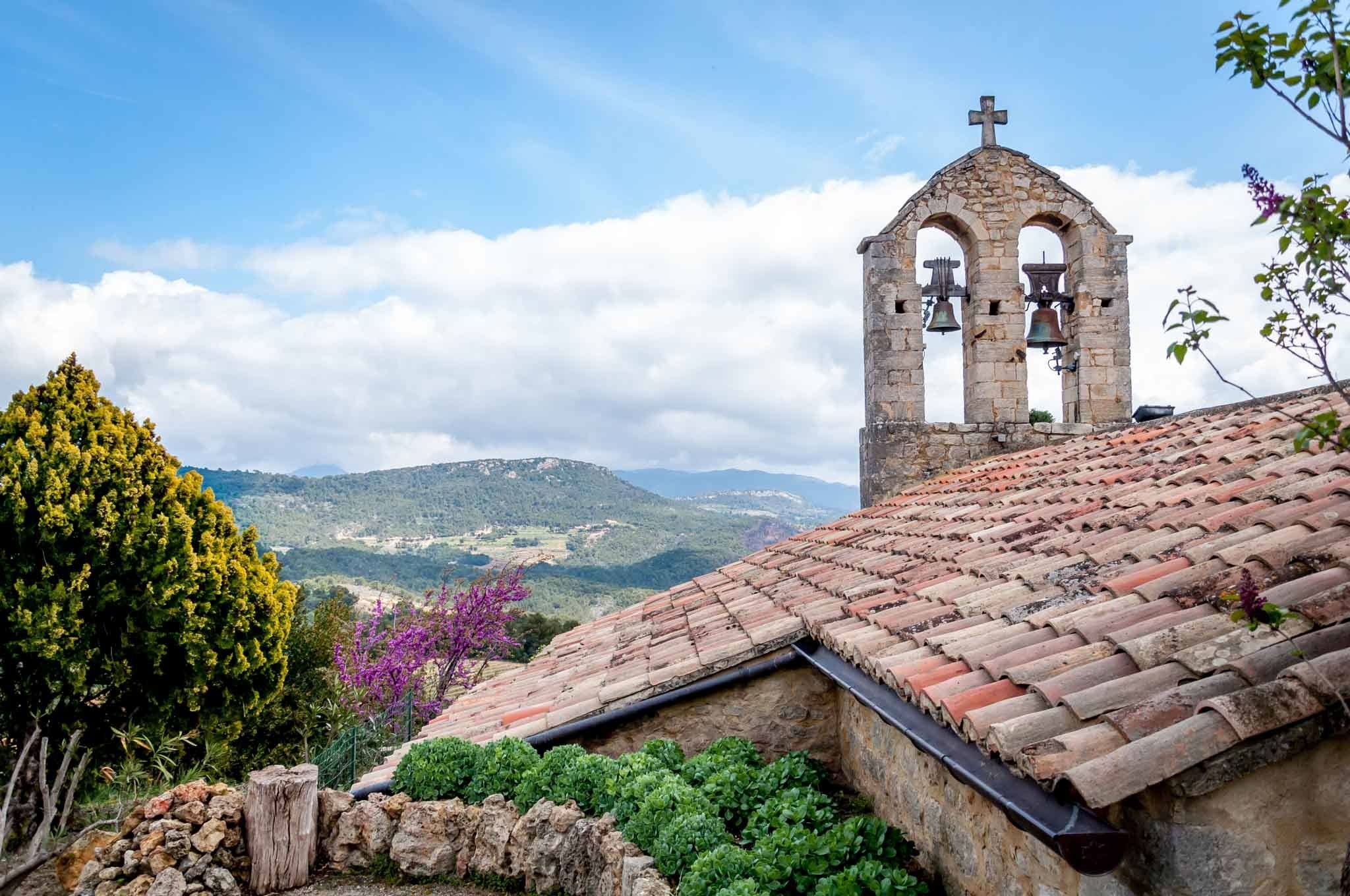
Day 7 was Cotes du Rhone day!
The Cotes du Rhone wine road runs over hills and valleys through this part of France , passing numerous vineyards and wineries along the way. We started off at Domaine de Mourchon for some full-bodied reds and drove Le Col de la Chaine Mountain Pass to Domaine Saint Amant for an afternoon wine tasting.
Stops in Suzette and Gigondas and at several other wineries made this a perfect day. We write in much more detail about the wine road here . If you’re a lover of French wine or gorgeous scenery, make this part of your trip.
Don’t want to drive? See prices, reviews, and details for this 5-hour Cotes du Rhone tour from Avignon .
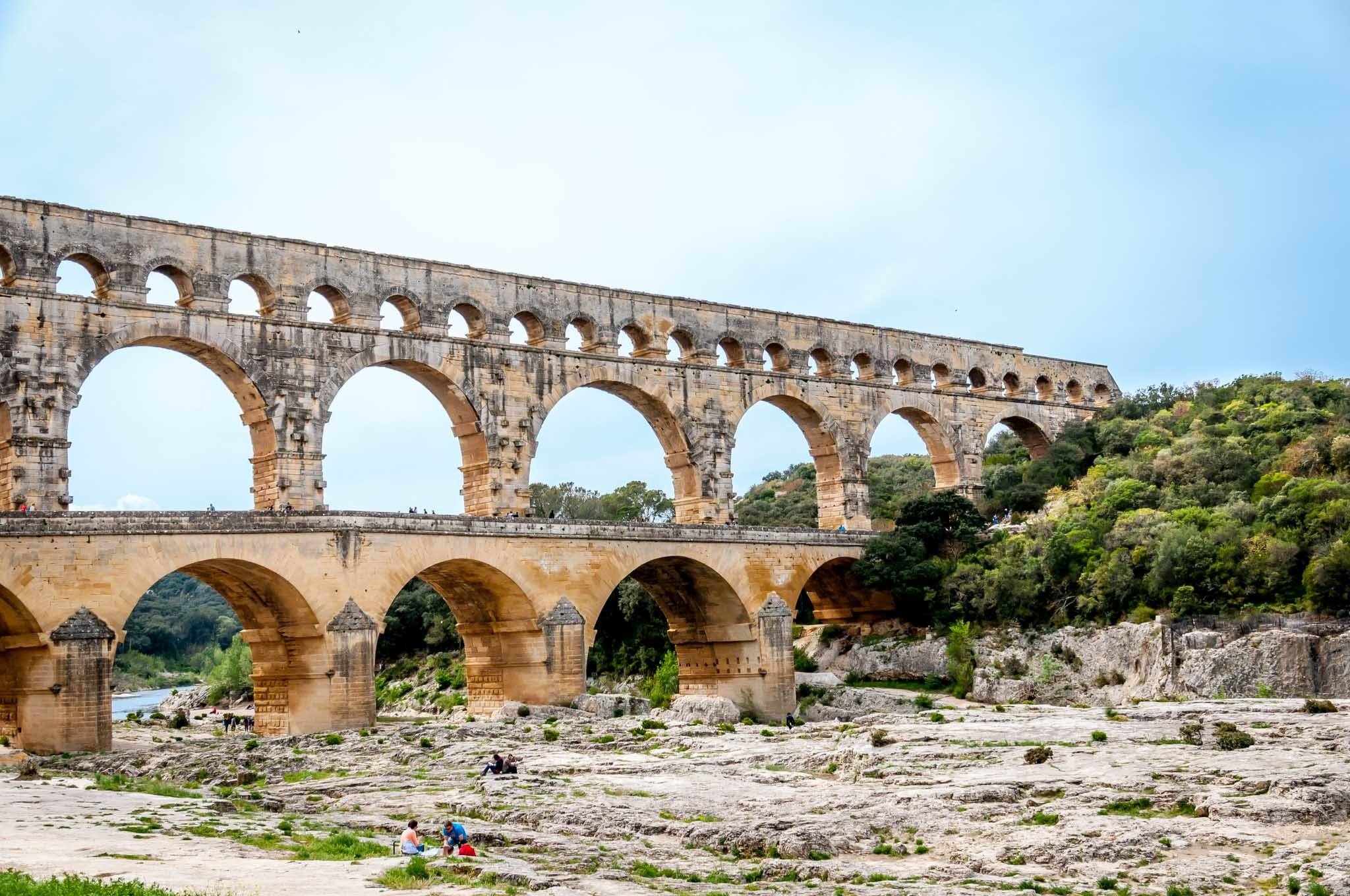
After two days full of driving in Vaucluse and the Cotes du Rhone, we decided to take day 8 a little easier with only two destinations. Though the road changes designations a number of times, the 45-minute route from Saint-Remy de Provence to Pont du Gard is fairly straightforward, and the bridge is very well signposted.
Another UNESCO site like the stunning aqueduct in Segovia , the Pont du Gard is an extremely well-preserved aqueduct that once carried water from a spring in the town of Uzes to the Roman colony at what is now Nimes. It spans the Gardon River where people still swim and kayak beneath its arches. After seeing the visitor’s center and exploring the bridge from every possible angle, it was time for another drive.
We took a quick road trip down D981 to Uzes. When we arrived, it seemed that the whole town was consumed by market day. In addition to the market stalls, regular businesses set up shop outdoors, and all the sidewalk cafes were filled with people enjoying the spring afternoon. Several Medieval buildings still stand, but the real appeal of the town is wandering its old lanes and squares, doing a bit of window shopping, and enjoying the atmosphere.
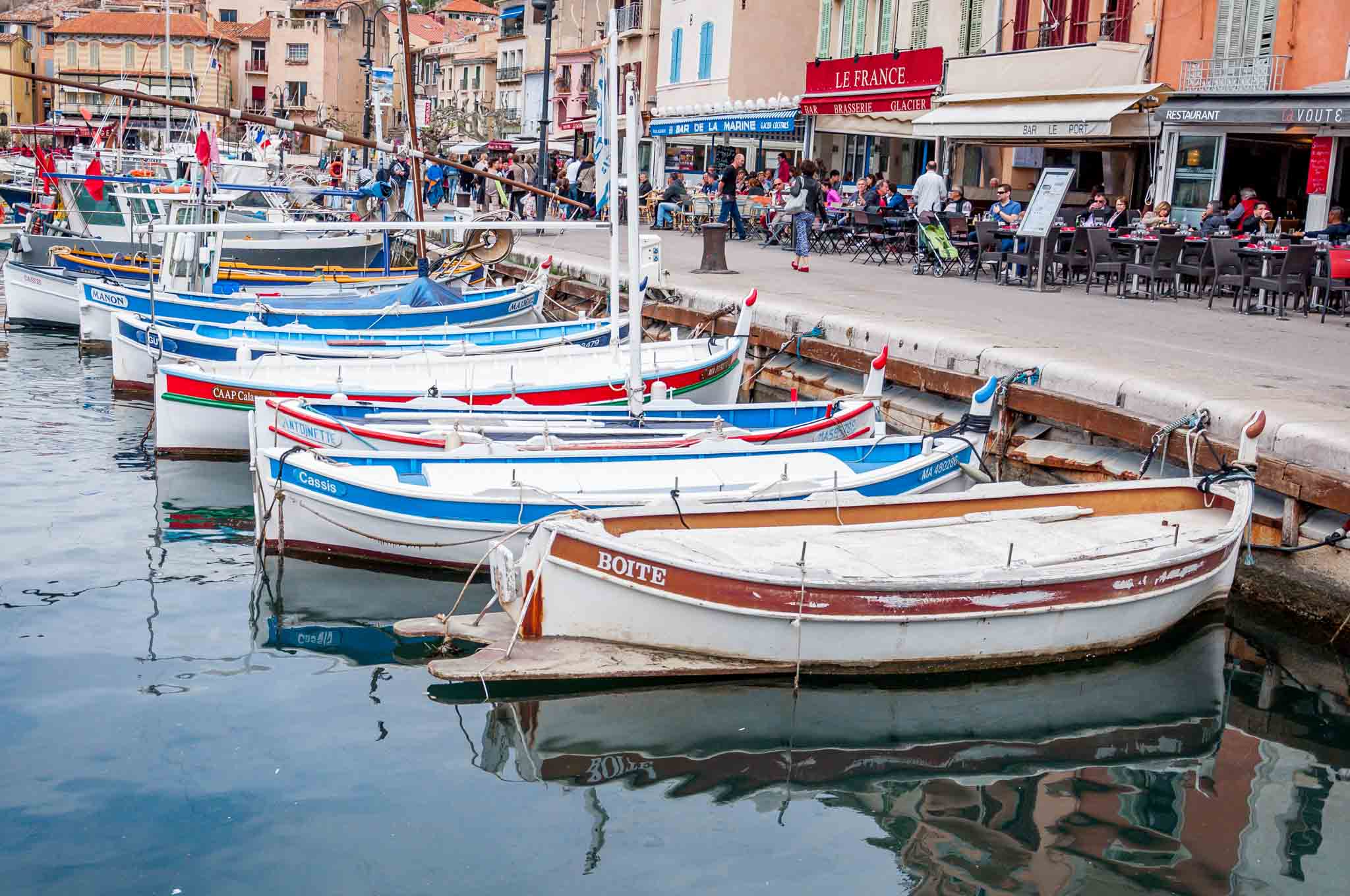
Though it’s impossible to compare all the places we visited, Cassis was certainly one of our favorite stops on our southern France travel itinerary. Not only does Cassis have stunning natural features but its location right on the water couldn’t be more ideal.
From Saint Remy, it’s a bit of a drive on the A7 and A55 that send you through Marseille, so don’t attempt this around rush hour. From there, the A50 will send you into Cassis. The whole drive takes about 1.5 hours, but it’s worth it.
In Cassis, we enjoyed a lunch of fresh fish and local wine while staring out at the boats on the harbor. In the afternoon, we took a boat cruise of the calanques (the area’s amazing limestone cliffs that plunge into the sea), followed by the curvy La Route des Cretes drive, which sends you to a vantage point high above the town.
If you’re coming from Marseille, consider this full-day tour of Marseille, Aix-en-Provence, and Cassis. A half-day tour of Cassis is also available from Aix-en-Provence. If you want to see the calanques up close in a unique way, see reviews and prices for a snorkel tour .
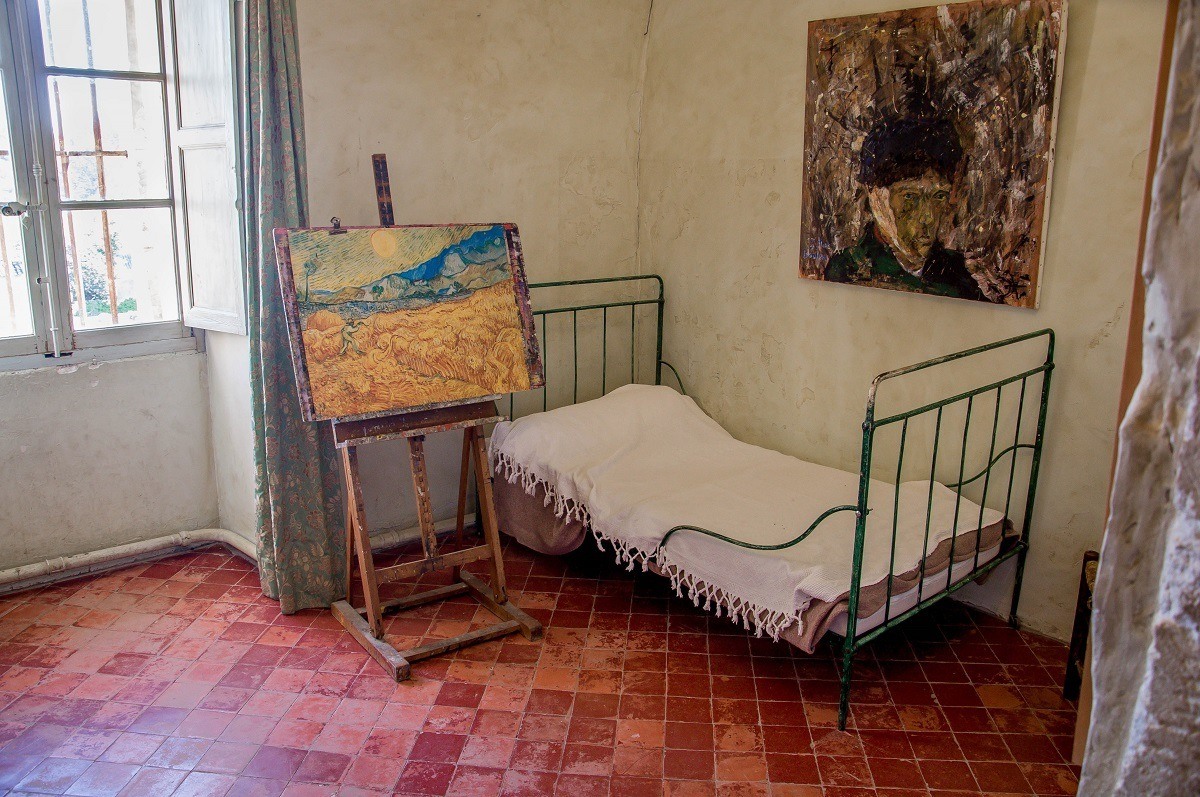
On our last day in town, it was finally time to visit the two main sites of Saint-Remy de Provence – Saint-Paul Asylum and the Glanum ruins. The asylum was home to Vincent van Gogh for a little over a year in 1889 and 1890, shortly before his death. Visitors can see van Gogh’s room and the settings of many of the works he completed while he was a patient here.
Essentially across the street from the asylum are the Roman ruins at Glanum. Over 2000 years old, most of the ruins of the ancient town are foundations of buildings, so a visit here requires a bit of imagination. There are a few great structures, however, including an arch, columns of a temple from 20 BC, and the Mausoleum of the Julii, one of the best-preserved mausoleums of the Roman era.
From Saint Remy, we headed north to Vaison la Romaine where we explored the Roman ruins of the town as well as the market.
Our final stop before returning our rental car in Avignon took us to the town of Orange. As with several of the other stops on our Provence itinerary, Orange is renowned for its Roman architecture. The city’s main site, the Ancient Theater of Orange , is still well-preserved and used for occasional performances. The original statue of the Emperor Augustus still looks down on the crowd from the 2000-year-old stage.
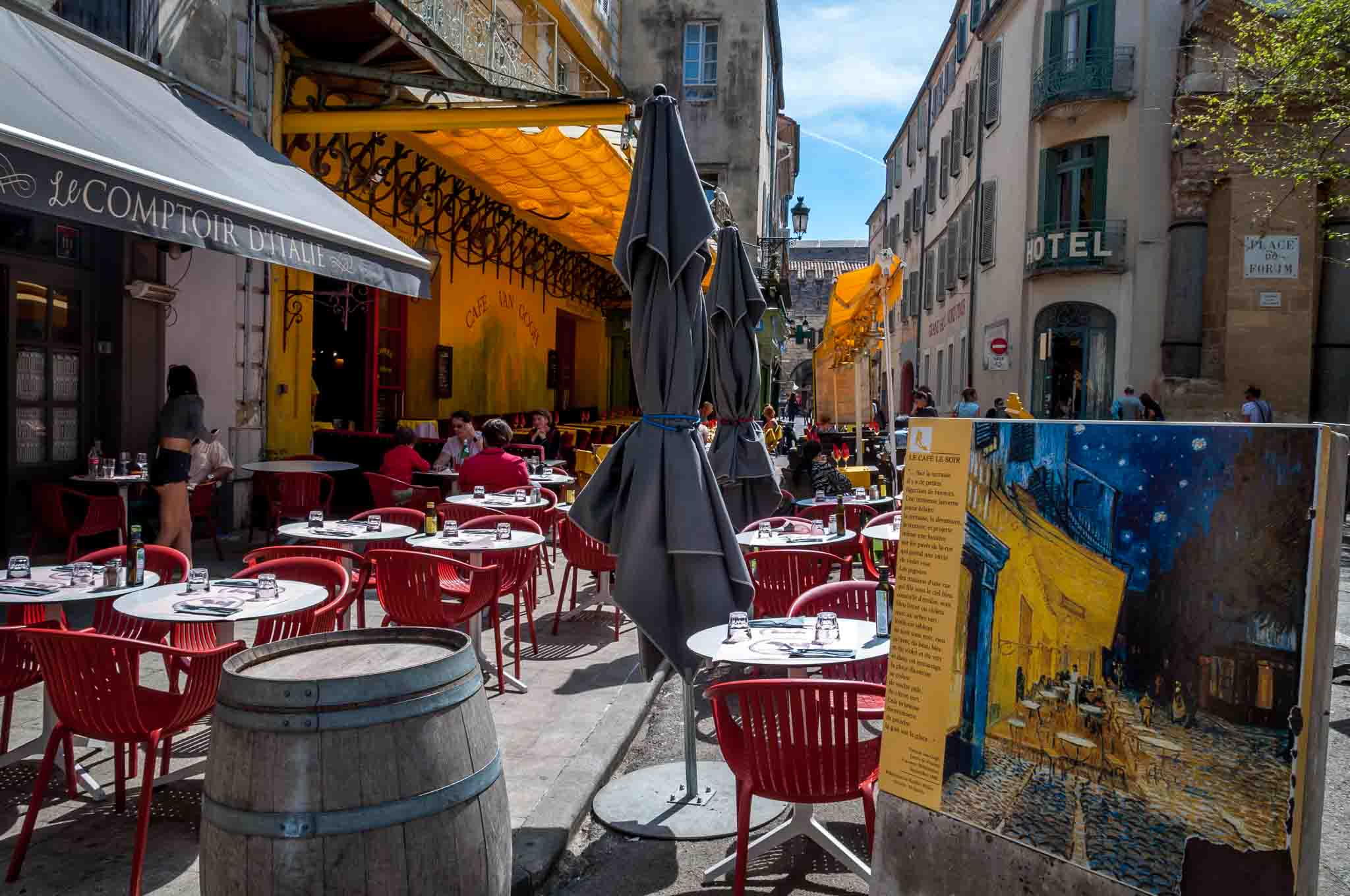
Check prices for hotels in Provence
Driving : Certain places in Provence are easier to see via a rental car than by public transportation. The good news is that—unlike many places in Europe—there is an ample supply of automatic transmission cars at reasonable prices. We’ve rented with many different companies in the past, but we found that Auto Europe’s comparison tool helped us save money in France. Before you go, we recommend getting a copy of our book, The Essential Guide to Driving Abroad , which demystifies and simplifies the process of renting overseas. If you are considering a trip, be sure our check out our French Driving Guide , with lots of practical tips.
Travel insurance : Provence and the South of France is an amazing destination! While the country is extremely safe, car accidents can happen. For this trip, we bought travel insurance from Travel Guard because it’s always good to be prepared.
Pin for later
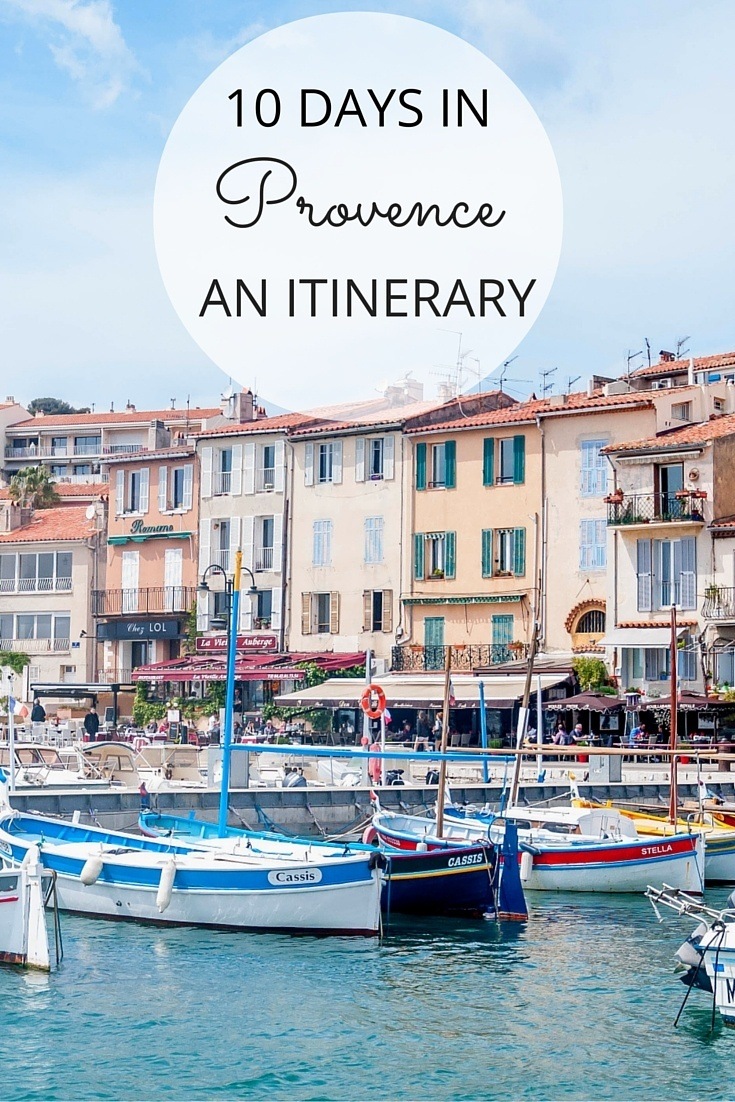
This site uses Akismet to reduce spam. Learn how your comment data is processed .

The Best 10 Day Itinerary For Southern France
Planning a trip to southern France? Welcome to one of Europe’s most famously picturesque regions.
It’s the perfect place to take a road trip. And my recommended 10 day itinerary takes you to the drop dead gorgeous regions of Occitanie and Provence.
This stunning road trip route is dense with amazing must see medieval villages, Roman ruins, UNESCO-listed landmarks, and loads of lavender and old world charm.
Occitanie lies in France’s warm and sensuous southwest corner, a merger of the former regions of Languedoc-Roussillon and the Midi-Pyrenees.
Occitanie is a secret out-of-the-way land of wine and wonder — chock full of art, castles, wine, and cassoulet. There’s a dense mix of architectural beauty and UNESCO sites. And Occitanie is blissfully not chock full of tourists.
Provence is a dreamy, bucolic history book of a land, perfect for a geographical cure. Provence has everything the mind conjures when you think of Provence — medieval lanes, clifftop panoramas, lyrical seascapes, pastel houses with French blue shutters, and a “step back in time” vibe.
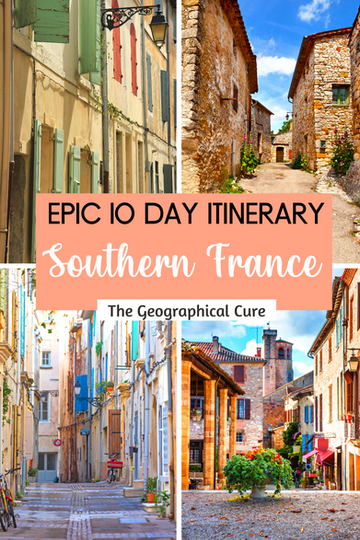
Provence is beguilingly romantic. Everything is sun-kissed and lavender wafts in the air.
Provence is so beautiful that artists like Renoir, Chagall, Cezanne, and Picasso flocked there to paint its landscapes. They adored the sun-drenched light, which Matisse described as “soft and tender, despite its brilliance.”
I think driving in southern France is a breeze for the most part, easier than other European countries. But, if you want some driving tips, here’s my complete guide to rending a car and driving in Europe .
Snapshot Of 10 Days in Southern France Itinerary
Here’s a quick glance of what you’ll see with 10 days in the south of France:
Day 1 : Explore Toulouse
Day 2 : day trip to carcassonne.
- Day 3 : Day Trip To Albi and Cordes-sur-Ciel
- Day 4 : Drive to Arles, stop in Uzes and Pont du Gard on the way
- Day 5 : Explore Arles
- Day 6 : Day trip To Les Baux and Avignon, dinner in St. Remy
- Day 7 : Drive to Lourmarin, stop in L’Isle-sur-la-Sorgue and/or Menerbes on the way
- Day 8 : Explore Lourmarin and Bonnieux or Lacoste
- Day 9 : Day Trip to Gordes and Roussillon
- Day 10 : 3 Options for a Day Trip: Aix-en-Provence, Vaison-la-Romaine, or Moustiers-Sainte-Marie + Verdon Gorge
This itinerary assumes you’ve already flown into Paris and taken the high speed TVG down to Toulouse and are ready to start first thing the next morning.
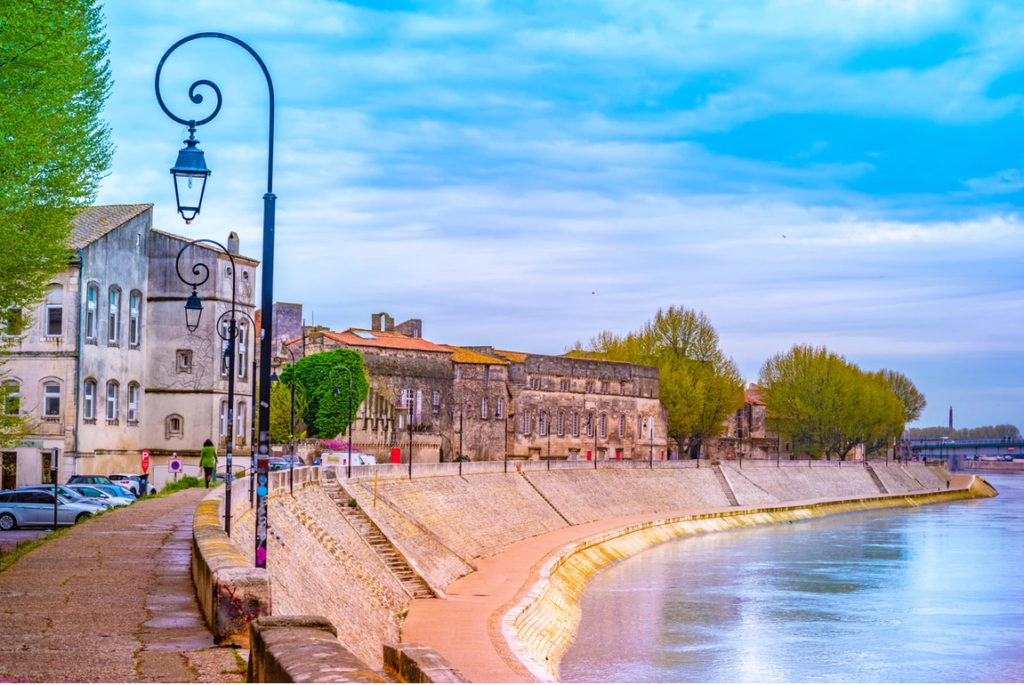
Where To Base & Stay
You’ll have 3 bases in your 10 days in southern France:
- (1) Toulouse (3 nights)
- (2) Arles (3 nights)
- (3) Lourmarin (4 nights)
Toulouse covers the western region of southern France. Arles covers the middle region with access to Provence.
Lourmarin is an adorable village in the Luberon Valley of Provence where you can get away from it all. There many other options in the Luberon. You could also opt to stay in Menerbes, Bonnieux, or Roussillon, for example.
1. Toulouse Hotels
Toulouse has some beautiful hotels, with both luxury and historic places to stay.
La C our de s Consuls Hotel and Spa is a stylish luxury property with a lovely terrace and spa.
Le Grand Ba lcon Hotel is a cool boutique hotel featuring 1930s era decor. Grand Hotel de l’Opera is an elegant boutique hotel with a central location.
Pullman Toulouse Centre Ramblas is a luxury hotel with modern decor.
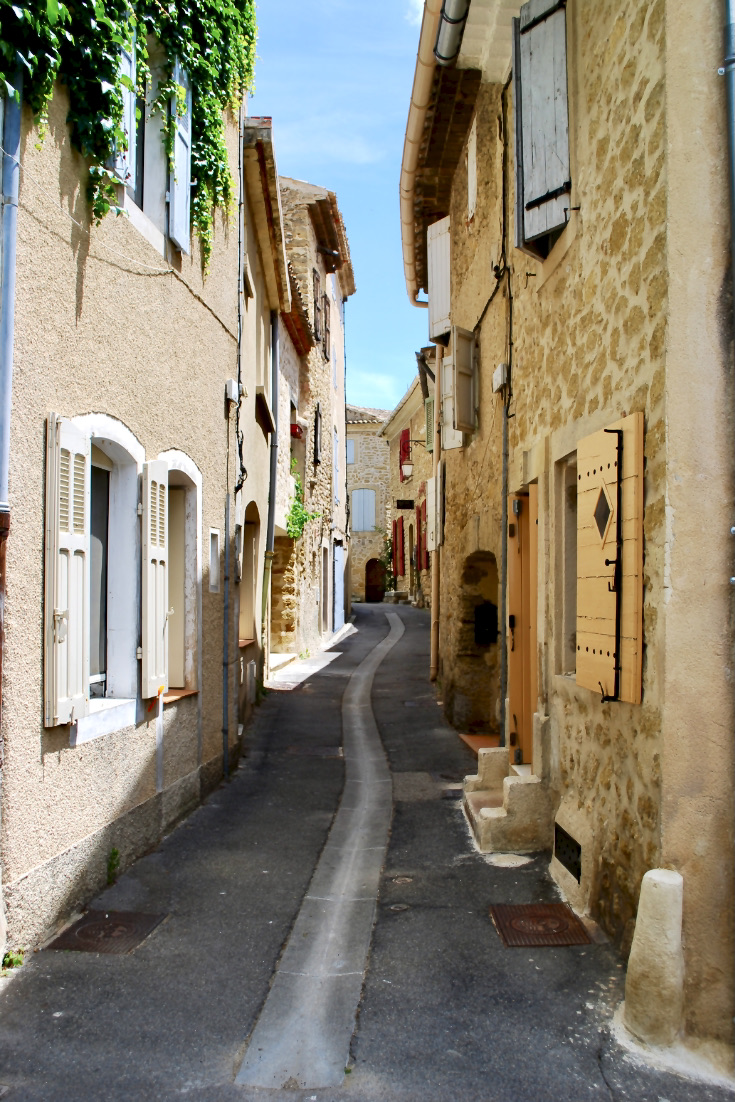
For Arles, look at the Hotel & Spa Jules Cesar Arles (in a former convent) or the Hotel Particular (elegant boutique hotel). There’s also the astoundingly pretty L’Arlatan .
3. Lourmarin
In Lourmarin, check out the Hotel Bastide de Lourmarin , Le Moulin, a Beaumier Hotel ,or Le Galinier (boutique hotel).
The Luberon Valley is also a great place to rent an Air BnB or plac3e on VBRO.
Distances between towns and destinations are close in southern France, so you don’t really have to move around that much. These three bases give you a taste of Occitanie, Provence, and the Luberon Valley in Provence.
10 Days in Southern France Itinerary
Toulouse is an incredibly beautiful and underrated city in southwest France. Toulouse is set ablaze with reds, pinks, and oranges.
Known as La Ville Rose, Toulouse is easy to fall for. It makes the perfect base for day tripping in this area. You’ll be there 3 nights.
You may want to sart off with a walking tour of the cobbled lanes in the historic center to get oriented. You can book a small group sightseeing walk with a local . Or a private walking tour or a private history tour .
Or, if you’re ready to go, in the morning, head to the Place du Capitole, Toulouse’s grand central square. It’s been the seat of government since the 12th century.
Pedestrianized since 1995, the square is lined with lavish red brick buildings. It has a polished marble floor emblazoned with the Occitan cross, a medieval symbol of the region.
The Place du Capitole is where Toulousains and tourists congregate. It’s a central hotspot filled with shops, cafes, and restaurants galore. You can easily wile away time people watching over an espresso.
A popular spot, where you’ll have to vie for a table, is Le Florida . At night, the Capitole is lit up, to stunning effect.
Then, head out to inspect some of Toulouse’s magnificent churches. The Convent of the Jacobins has 14th century frescos.
The adjacent church is exquisite and houses a column that resembles a palm tree called the “Palm of the Jacobins.” It’s an architectural wonder made up of a double nave and star-shaped vault under a massive column.
The Basilica of Saint Sernin is a magnificent well-preserved Romanesque basilica, and one of the greatest churches in France.
It’s Toulouse’s most defining landmark and a must see site. Built between 1080 and 1120, the basilica is now a UNESCO site.
After lunch, head to the best museum in Toulouse, the Musee des Augustins. Musee des Augustins houses a treasure trove of Roman, Gothic, and Renaissance sculpture.
And it has an eclectic cache of paintings from the 17th to 20th centuries, including art by Rubens, Ingres, Delacroix, Courbet, and Rodin.
The medieval cloister and garden are especially magical, surrounded by salons filled with evocative statues, sculptures, and gargoyles.
In the late afternoon, stroll through the Carmes neighborhood. I was absolutely entranced by this neighborhood, where I stayed in a stunning Air Bnb . Carmes feels like a small village with ancient streets and an authentic vibe.
The neighborhood’s colorful architecture is just stunning. Carmes is also home to myriad small organic food markets, restaurants, music shops, and small cafes.
When you’re ready for a pre-dinner cocktail, head to N°5 Wine Bar on Rue de la Bourse. In 2017, N°5 Wine Bar was voted the best wine bar in the world.
It’s a relaxed hipster spot with an expert-level menu for oenophiles. There’s a very small and cozy restaurant downstairs.
I was in Toulouse for four days, so I had plenty of time to sample the carnivore-heavy food. Toulouse is quite the culinary powerhouse.
I can recommend the following restaurants: Michel Sarran, Le Florida, Le Colombier, Le Carpaccio, and Les Jardins del’Opera.
On day 2 of your southern France itinerary, head to the UNESCO-listed town of Carcassonne . The town is just a 1:15 drive from Toulouse, which makes it an easy day trip from Toulouse .
You can go by car or train. Or you could book a guided day tour to the Carcassonne from Toulouse . Or take a half day tour that combines Carcassonne and the Canal du Midi.
Carcassonne is magnificent and will take your breath away. Carcassonne is the middle ages revealed.
It’s a 13th century fantasy world of towers, turrets, walls, winding alleys, and moats set on the Aude River. As historian Anthony Horowitz has said, “In no other city I’ve visited does history feel so alive.”
Carcassonne boasts an almost surreal double row of fortified walls stretching nearly 2 miles with 52 watch towers — each one crowned with fantastical “witch hat” turrets.
The town will appeal to fans of the knight in shining armor era, a group in which I unabashedly include myself. The medieval streets are fairytale perfect.
Not surprisingly, Carcassonne was added to the UNESCO World Heritage List list in 1997. The old town of Carcassonne is free.
But you need a ticket to access the city walls. To avoid queues, pre-purchase a skip the line ticket to access the storied site via Chateau Comtal, the medieval keep.
Because tourists flock in droves to the walled city, you should attack the citadel at off peak hours or off season. You can also cross the Pont Vieux and visit the lower city, the Bastide St.-Louis.
It’s inappropriately named the “new town,” when in fact it was built in the 13th century. It has a magnificent tree-lined square, the Place Carnot, where you can relax and let the world go by over a coffee or glass of wine.
You may want to book a guided walking tour for this historic UNESCO wonder. Here’s one sample walking tour and another 2 hour guided tour with a slightly different emphasis.
Day 3: Day Trip To Albi & Cordes-sur-Ciel
Albi is a serious and ancient town, a wondrous and surprising must see destination in southwest France . Even if you’re a Francophile, you might not have heard of Albi.
In France, though, it’s a favorite among art lovers. If you don’t want to drive you can book a guided day trip tour from Toulouse to Albi. While you’re there, you can go on a guided gourmet food walk .
Albi has been inhabited since the Bronze Age. The town was listed as a UNESCO site in 2010. It’s a strangely affecting place, despite the weight of its past or perhaps because of it.
Situated on the Tarn River, Albi is a perfect combination of medieval architecture and a vibrate urban center. Albi is an episcopal city, clad in orange-red brick and militaristic architecture.
The town symbolizes the Catholic victory over the pesky Cathar rebels, a monkish religious sect that defied accepted convention.
Albi has two truly imposing citadels — Albi Cathedral and the Berbie Palace — that are both UNESCO-listed. The mighty Saint Cecilia Cathedral is a 13th century masterpiece of southern Gothic style.
Built by the Bishop of Albi, it’s a place of superlatives both inside and out. It’s nicknamed the “crucible of faith” and is one of the largest brick structures in the world. Inside, you’re swathed in blue.
Like Albi Cathedral, the 800 year old Berbie Palace is an all brick affair with stout walls of extraordinary height and thickness.
Aside from the Pope’s Palace in Avignon, it’s one of the best preserved castles in France. The palace was formerly the residence of the Albi’s archbishops.
The Berbie Palace also houses a truly amazing single artist museum, which is a French treasure. It’s dedicated to an artist you’ve likely heard of and that the Albigeois adore — Henri Toulouse-Lautrec, one of the founding fathers of Modernism.
The Post-Impressionist artist of exalted birth was born and lived in Albi, before decamping to absinthe-sodden Montmartre in Paris to paint dancers at the Moulin Rouge.
He died at a young age, just 36, of complications of syphilis and alcoholism.
But Toulouse-Lautrec didn’t really leave Albi. Some of his most seminal works are there, in one of the best small museums in Europe.
Sure, there’s great Lautrec works in Paris, especially in the Musee d’Orsay . But, in Albi’s museum, you get a comprehensive picture of his entire life and career, not just a snapshot.
Here’s my guide to visiting Albi .
2. Cordes-sur-Ciel
When you’re done admiring Albi, drive 30 minutes to Cordes-sur-Ciel, which seems to float in the sky. Hence its name, which translates to ropes on the sky.
If you’d like to get the full scoop on these medieval sites, you can take a guided day tour of both Albi and Cordes .
Cordes-sur-Ciel is so ancient, so cobbled, so dreamy that it has a time warp feel. The dawn of modernity seems to have passed it over, exodus style, leaving a sweetbox escape for those who want to step back in time.
The little village began life in 1222, founded by Count Raymond VII of Toulouse.
During the Albigensian Crusade, the 20 year war between the Cathars and the French crown, Cordes-sur-Ceil was prosperous. Its wealth derived from the leather, textile, and silk industries.
Today, Cordes-sur-Ciel is an artsy village, a treasure trove of local art. Its cobbled streets are filled with quaint galleries, ateliers, and cats.
You can find contemporary painting, pottery, sculpture, handmade jewelry, glassware, woodcarvings, and artisanal leather.
You can also visit the Musée de l’Art du Sucre et du Chocolat, dedicated to sugar. As a lover of backed goods, I applaud this kind of museum.
And Cordes boasts the lovely Jardin des Paradis, which is recognized as one of the most “Remarkable Gardens in France.”
If you happen to visit between December and February, don’t miss the town’s annual truffle market, where harvesters come to sell their “black gold.”
If you want to read more about this idyllic hilltop village and how I almost lost my friend’s iPad there, read my story .
If you want to stay in the area for dinner, try Estepona. It’s set in the rolling countryside with a view of Cordes-sur-Ciel.
If not, head back to Toulouse where you have so many foodie options. It’s a 1:20 drive back to Toulouse.
Day 4: Drive to Arles: Stop in Uzes & Pont du Gard
On day 4 of your 10 days in Southern France itinerary, you’ll head to your next base, the wonderful town of Arles in Provence.
On the way, stop in the classic French village of Uzes and the UNESCO-listed Pont du Gard, a well-preserved Roman aqueduct.
Uzès is a honey hued historic town dating back to Roman times. It’s a honeypot of a village with a charming baguette-in-hand-on-the-way-home-from-the-market vibe.
Uzès’ Renaissance architecture is beautiful. Its elegant squares are the perfect place for lunch or espresso. I chose the outdoor patio of Restaurant Ten, with its atmospheric ribbed vaulted ceilings, on the Place Aux Herbes for lunch.
You can also visit Le Duché, the duke’s residence. The dukes of Uzes have lived in this impressive chateau castle on and off for a thousand years.
But, mostly, just stroll the creamy limestone streets and admire the renovated architecture. Along the way, you’ll see the Cathedral of St. Theodorit, the leaning Fenestrelle tower, and the medieval garden.
READ : Guide to Uzes
2. Pont du Gard
Just 20 minutes from Uzes lies the mighty Pont du Gard . It’s a surviving scrap of a Roman aqueduct that’s a UNESCO site. The aqueduct was an engineering marvel that originally took water from Uzes to Nimes.
The aqueduct is massive, despite taking only 5 years to build. The bridge is 48.8 meters high, 275 meters long, and sports 52 arches.
Pont du Gard was the highest aqueduct in the Roman Empire. There are three tiers of arches, one on top of the other. You can only access the upper tier via a guided walk in July and August.
The aqueduct soars over the Gardon River and its dramatic gorge. Don’t hesitate to dip your feet in or indulge in a cooling-off swim.
Then, you’ll leave Occitanie and head into Provence. It’s a 45 minute drive to your next base, Arles.
Day 5: Explore Arles
Arles is a fantastic and underrated UNESCO town in Provence, just brimming with historic treasures. You may want to orient yourself at the outset with a 2 hour walking tour or a half day tour with all the Roman and Van Gogh sites.
Arles might not match the quaint charm of Provence’s small hilltop villages. But it has its own appeal for those eager to dive deeper.
Located by the Rhone River, Arles is rich in sensuality, filled with the scents of rose and lavender, and abundant in Roman history.
This city offers a unique mix of art, Mediterranean influences, and a touch of Italian flavor, making it an ideal spot in Provence.
It’s also a treasure trove for lovers of ancient history, home to the impressive Roman Amphitheater, a well-preserved Roman Theater, and the Baths of Constantine.
After checking out the historic center, take a stroll through Les Alyscamps. This is another one of Arles’ famous Roman attractions.
Les Alyscamps is a tree-lined Roman necropolis a short distance outside the old town walls that dates from 241 B.C.
Arles was also home to Post-Impressionist star Vincent Van Gogh. It was here that Paul Gauguin and Van Gogh formed their “studio in the south,” launching a new movement in art history.
Some of Van Gogh’s best paintings were created in Arles, like Starry Night Over the Rhone, Yellow House, Sunflowers, and Cafe Terrace at Night . Van Gogh claimed that, in Arles, he painted “with the gusto of a Marseillais eating bouillabaisse.”
You can get your Van Gogh fix at the Fondation Vincent Van Gogh. Recently opened in 2014, it’s housed in the beautifully restored Hotel Leautand de Danines, a stone mansion off the Place du Forum.
You can also follow in Van Gogh’s footsteps by walking the Van Gogh Trail in Arles. It’s marked by 10 steel and concrete “easels” with photos of the paintings.
Tip : You can also book a guided walking tour that focuses Arles’ Van Gogh attractions and the Roman sites.
For dinner, head to Rue du Docteur Fanton. Try Gaboulet, Les Filles du 16, or Le Plazza la Paillotte.
Near the Roman Arena, I also loved Le Criquet and Chardon. If you are ready to splash out on a Michelin-starred restaurant, head to L’Atelier.
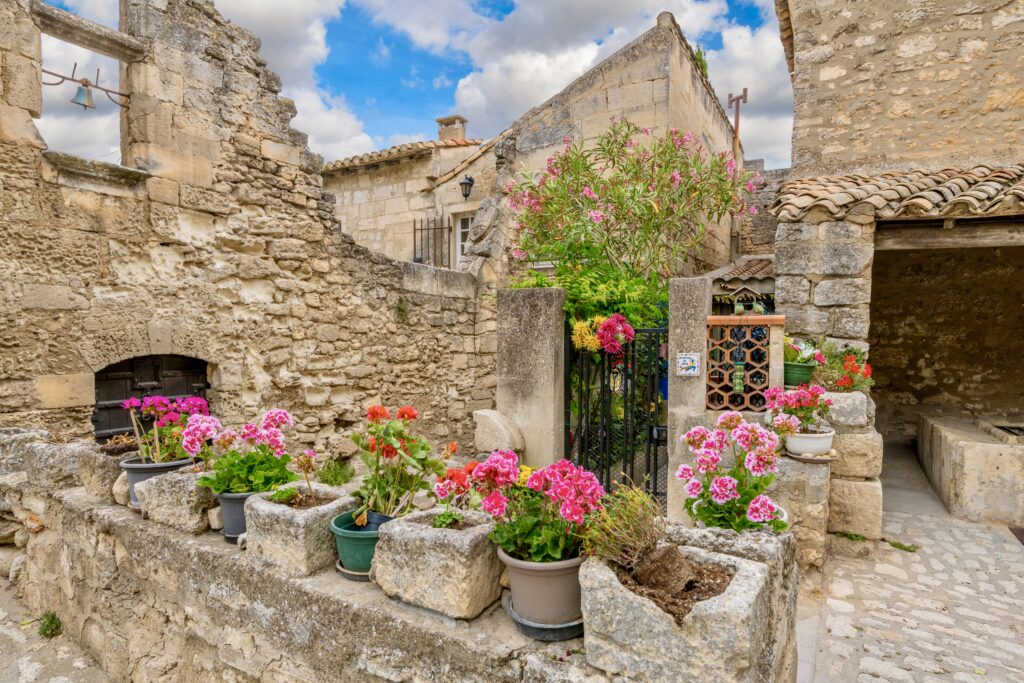
Day 6: Day Trip To Les Baux & Avignon
1. les baux.
On day 6 of your 10 days in southern France, head to the stony hilltop town of Les Beaux. It’s is a popular spot, just 25 minutes down the road from Arles.
Les Baux is the second most visited site in southern France (after the Pope’s Palace). But don’t let that put you off.
If you want to avoid tourist clogged streets, go there in off season and spend a half day. Les Baux is tiny, after all.
Les Baux is home to a great medieval castle. It’s now mostly in ruins, but the stone slabs are very atmospheric.
And they remind you that Les Baux once fended off mauranding bands of medieval villains. It was eventually destroyed by Cardinal Richelieu in the 14th century, when the fortress fell into rebel hands.
Nowadays, Les Baux is just the castle ruins and the lovely cobbled town. There’s only one main street with some side alleyways to meander down.
You won’t get lost and you don’t need a guide.
There are souvenir shops aplenty, the best ones sell beautiful Provencal fabrics. There are also quite a number of good art galleries.
If you want to lunch in Les Baux, try La Cabro d’Or or Le Mas d’Aigret.
It’s just a 45 minute jog north from Les Baux to Avignon. Though famous for its rhyme and medieval bridge, I didn’t find Avignon quite as charming as other towns in Provence.
But Avignon is a must visit for history buffs just for its brooding Popes Palace. And he town is full of trendy outdoor eateries, boutiques, and cobbled lanes.
To get your started, you can book a walking tour of Avignon with skip the line tickets to the palace . There’s also a 3 hour walking tour with wine tastings .
The popes haven’t always lived at the Vatican in Rome . I had long forgotten this little factoid until I was plotting an itinerary for my southern France road trip.
From 1309-77, the popes lived in the enchanting riverside town of Avignon, rather than in Rome. That period was called the “Avignon Papacy.”
Today, you can tour the magnificent Pope’s Palace , where these rebellious French popes once lived. Built in 1335-52, it’s the largest Gothic building in western Europe and Avignon’s main attraction.
The imposing facade resembles medieval fortified churches. You can gasp at the Pope’s private apartments, frescoes, and the soaring chapel. And see what it actually looked like in the 14th century on a histopad.
Be forewarned, parking in Avignon is a nightmare. It’s easiest to head straight to the parking garage in the Pope’s Palace. The entrance is right outside the city walls.
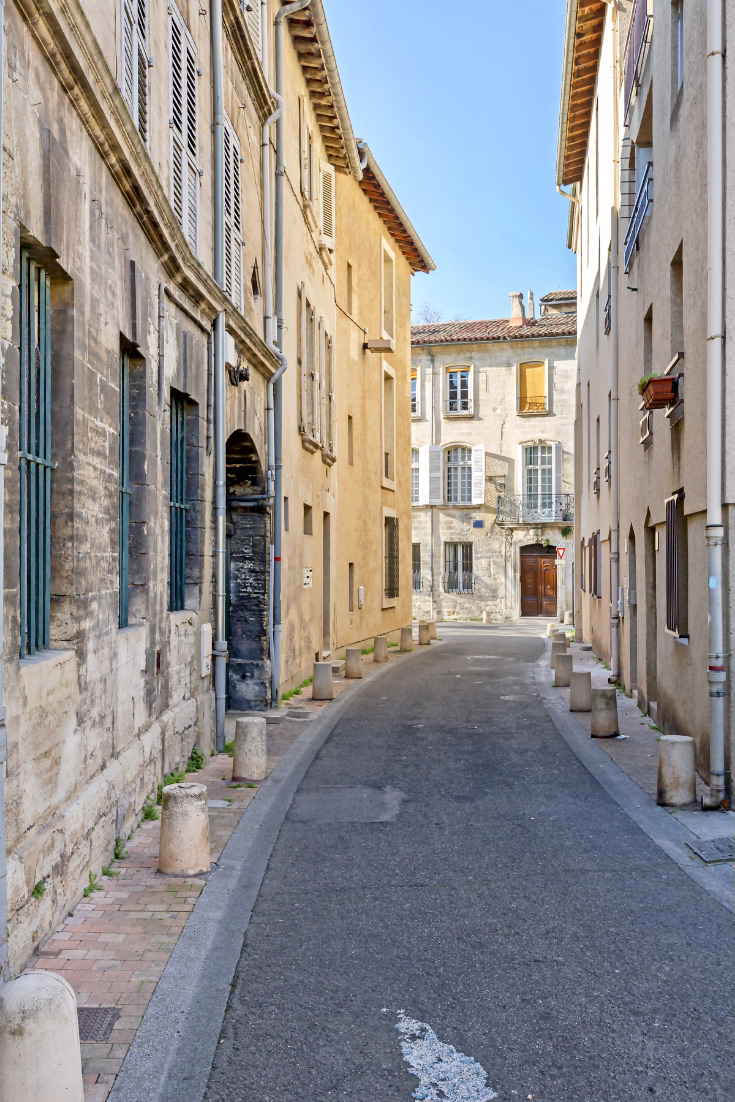
Be sure to enjoy the other splendors of Avignon. Stroll down Rue de Teinturiers. Walk out on the famous bridge that inspired the children’s song, Pont Saint Benezet.
For stunning views, head to the Jardin des Doms. From there, you can even spy Mount Ventoux, of Tour de France fame.
Have dinner in Avignon. If you’re a foodie, Avignon has several Michelin starred restaurants: La Vielle Fontaine, Pollen, and La Mirande.
Alternatively, on your way back to Arles, stop in the immaculate village of Saint-Remy-de-Provence for dinner. That’s what I did.
Popular St. Remy is overflowing with high quality restaurants. We had a wonderful meal at Maison Drouot. In 35 minutes, you’re back in Arles.
Day 7: Drive to Lourmarin, Stop in L’Isle-sur-la Sorgue or Menerbes
On day 7, you’ll drive to your next base, Lourmarin, in Provence’s Luberon Valley. On the way, you can visit L’Isle-sur-la-Sorgue, Menerbes, or both towns.
1. L’Isle-sur-la-Sorgue
L’Isle-sur-la-Sorgue is just an hour from Arles. Dubbed the “Venice of Provence,” L’Isle-sur-la-Sorgue is a lively market town, split in two by the Morgue River.
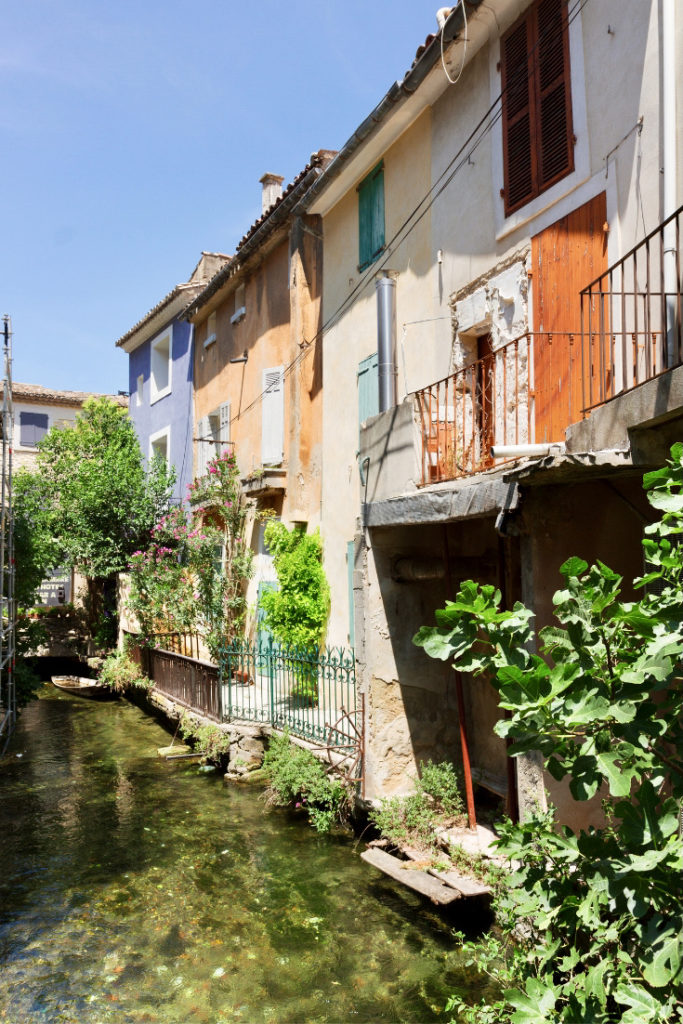
Its crystal clear water babbles under pedestrian bridges adorned with flower boxes. It’s not as adorable as the classic Provencal villages , but still unique with mossy waterwheels and geraniums.
The town revolves around its church square and two pedestrianized streets, Rue de la Republique and Rue Carnot. There are plenty of shops, eateries, and museums to entertain.
The town erupts in a carnival-like market frenzy each Sunday and Thursday. Held along the quay of the Morgue River, the Sunday market is world famous for its antiques.
Outside of the Saint-Ouen in Paris, it’s one of Europe’s largest flea and vintage markets.
2. Menerbes
Pretty Menerbes is just 20 minutes away from L’Isle-sur-la-Sorgue. The town is another one of France’s “les plus beaux villages.”
It was the village that launched a thousand book sales. Menerbes is famous as the setting for Peter Mayle’s book A Year in Provence .
The pretty town is dressed in French blue shutters and pink bougainvillea. It’s fairly upscale with tony shops, wine bars, and chic cafes.
Rue Corneille lead to the town’s cute chateau, which you can admire from the outside. Stop in at the House of Truffles and Wine for lunch/dinner or a tasting. Or try Le 5, a cute outdoor bistro.
Menerbes is also home to the beautiful 18th century Dora Maar House. The lothario Pablo Picasso purchased it in 1944 for his former lover and muse, Dora Maar, a Surrealist photographer.
He did it out of guilt. Maar had a mental breakdown after Picasso dumped her. The house is now an art foundation.
Your next base, Lourmarin, is just 20-25 minutes down the road. I think it makes a perfect base in the Luberon because it’s quieter, less crowded, and less touristy than other uber popular villages in the area.
Day 8: Explore Loumarin & Bonnieux or Lacoste (or both)
On day 8, you can visit Lourmarin, Bonnieux, Lacoste, or all three.
1. Lourmarin
Spend your morning exploring your new base. Lourmarin is a secret Luberon village not too far from tourist-fly Gordes.
Aside from its 15th century castle, there’s delightfully not much to see or do in Lourmarin. Just soak up the quaint town center and views. Its narrow lanes spiral up to the belfry.
After your walkabout, indulge at one of Lourmarin’s chic eateries or boutique stores. The cafe culture clusters around the Place de l’Ormeau.
Lourmarin also has a 15th century Gothic-Renaissance chateau. The chateau decayed into ruin and was scheduled for auction and demolition.
But it was rescued in the nick of time by Robert Laurent-Vibert, a rich industrialist and literary scholar, who restored it. The chateau now hosts wine tasting and performances in the evening.
Lourmarin has some literary cache to boot. Existentialist writer and philosopher Albert Camus lived in Lourmarin in the 1950s and is buried there.
Author Peter Mayle also lived in Lourmarin. Both add to the village’s cachet.
In the afternoon, meander 15 minutes down the road to Lacoste or Bonnieux (or both).
Lacoste is fetchingly perched on a hilltop overlooking the nearby (and much larger) village of Bonnieux. In the sunset glow, Lacoste has a nice rusty coral hue.
Lacoste is paved with stone and is full of cobbled narrow alleyways and picturesque houses. Its oldest building, the Mason Forte, dates from the 9th century. Most other buildings date from the 16th century.
3. Bonnieux
The village-perche of Bonnieux is especially spectacular from a distance. It’s one of the few Luberon towns that isn’t pedestrianized.
Still, it has cobbled film set alleyways for you to wander and artsy galleries for you to explore.
Friday, there’s a local market with the usual tasty produce. If you’re interested in bread, the Boulangerie Museum is housed in an ancient stone building.
But the best reason to visit Bonnieux is for the panoramic views from the church at the town’s tip top, the 12th century Vielle Eglise. You look out over the valley and Mt. Ventoux.
Stay in Bonnieux for dinner. For a splurge, reserve a spot at the two Michelin star Restaurant Edouard Loubet .
Day 9: Day Trip to Gordes and Roussillon
On day 9, you’ll head to two of Provence’s most famous and popular villages, Gordes and Roussillon.
The photogenic village of Gordes is just 40 minutes away from Lourmarin, perched on an escarpement of the Vaucluse Mountains.
Gordes is the Luberon’s most impressively situated hill town and perhaps its crown jewel.
A long winding road takes you there. And you won’t be the only one. Gordes gets crowded during the day.
Though it’s hard to imagine, Gordes was once a ghost town of derelict buildings. It was revivified by Avignon’s theater festival. Directors clamored to find picture-perfect Provencal villages for their films.
Today, Gordes is a beauty, epitomizing rural French charm. Its homes are fully restored and it’s chock full of luxury hotels, like Hotel La Bastide de Voulonne.
Pop into one with a terrace for a goblet of wine and stunning views over the Luberon Valley.
Strolling Gordes’ cobbled streets is a feast for the senses. There’s not much to do, except for its Tuesday market. The 11th century Gordes Castle also houses contemporary art exhibits.
Just outside Gordes lies the remote Abbey Notre-Dame de Senanque, set in a picturesque sea of lavender. It’s long been discovered by tourists just for its bucolic setting. Visit in July or August for the most glorious purple views.
The abbey is still a functioning Cisterian abbey. It was built in 1148 in reaction to the excesses of the Benedictine abbeys and their fat monks.
The utterly simple church is always open. You can tour the abbey and its cloisters.
2. Roussillon
Just 15 minutes from Gordes, Roussillon is easy to fall for. It’s a lovely hilltop village, nicknamed the “Orange Town.” The tiny hamlet is nestled in a striking ochre ridge.
The adorable town gleams with a spectrum of yellow, pink, orange, and red shades. It’s said there are 17 different shades of ochre in the village.
Roussillon has winding streets, pretty squares, and adorable pastel shuttered homes. It attracts an artsy crowd. There are 8 galleries in the tiny town.
While there, you can visit Roussillon’s Sentier des Ocres, the Ochre Trail. It’s a nice hiking trail where you’ll see the colorful rock formations up close.
There’s a 30 minute trail and a 60 minute trail. Don’t wear white!
If you want to combine Lourmarin, Gordes, Roussillon, an Bonnieux on one big trip, you should consider booking this 6 hour guided tour of the Luberon Valley .
If you decided to base in Avignon rather than a small town, there’s also a popular guided day tour of the Luberon from Avignon .
3. Forcalquier
If Gordes and Roussillon are too Disney-fied for your taste and you want to really get off the beaten path, try the ancient village of Forcalquier.
It’s a picturesque town an hour from Lourmarin, but vastly less crowded than showstoppers like Gordes or Roussillon.
Forcalquier dates to Roman times. Its historic streets have plenty of interesting architecture — convents, chapels, bell towers, and Gothic fountains. One 15th century fountain commemorates the wedding of Henry III and Eleanor of Provence.
Forcalquier hosts the biggest market in the area on Monday in the Place du Bourget opposite the Cathedral. Thursday, there’s a farmer’s market.
Day 10: 3 Options for Day Trips
On the final day of your 10 days in southern France, I give you 3 options for day trips from Lourmarin, depending on what you’re in the mood for and how long you want to drive: (1) Aix-en-Provence; (2) Vaison-la-Romaine; or (3) Moustiers-Sainte-Marie.
If you want to laze around a pretty French town, head to Aix-en-Provence. If you want to explore an amazing medieval town with a dollop of Roman ruins, head to Vaison-la-Romaine.
If you want to see one of France’s most beautiful villages , head to Moustiers-Sainte-Marie and take a peak at the Gorges du Verdon.
Here are the estimated driving times:
- Drive from Lourmarin to Aix-en-Provence: 40 minutes
- Drive from Lourmarin to Vaison-la-Romaine: 1:15
- Drive from Lourmarin to Moustiers-Sainte-Marie: 1:30
- Drive from Moustiers-Sainte-Marie to Verdon Gorge: 40 minutes
1. Option 1: Aix-en-Provence
Aix-en-Provence is a chic little university town known as the “city of 1,000 fountains.” It’s full of attractive leafy boulevards, cobblestone lanes, and a fortressed historic center.
The ancient city wall still stands. In contrast to the tiny Luberon villages, Aix almost seems like a big city, reminiscent of the Left Bank of Paris .
The picturesque Le Cours Mirabeau is the central artery, which makes the perfect stroll through the old town. Stop in to inspect Saint Sauveur Cathedral, with Gothic influences, and the 15th century town hall.
There’s also an open air market three times per week. Aix is a great place to take a food tour .
If you’re a fan of the Post-Impressionist artist Paul Cezanne, he was born in Aix and you can visit his studio, the Musee-Atelier Cezanne. The Musee Granet also boasts 9 Cezanne paintings.

2. Option 2: Vaison-la-Romaine
The lovely Vaison-la-Romaine is a hidden gem in northern Provence, away from Provence’s main tourist destinations. Vaison-la-Romaine is an ancient town made almost entirely of stone and dotted with spiky cypress trees.
Seated on the Ouvèze River, the town is dual faceted and split in two, with an upper medieval town and a lower Roman town — an efficient “two for one” dose of history.
Cross the ancient Roman bridge spanning the Ouveze River and hike up through the medieval gate. Then, you’re in Vaison’s car free medieval part.
There’s nothing particular to see there. But it’s so lovely you’ll have trouble ungluing your camera from your face.
Based in the lower city, the Roman part of Vaison-la-Romaine was discovered in 1907. It’s the most important Gallo-Roman site in France.
The luxuriousness of the restored patrician villas, filled with beautiful mosaics, reveal that Vaison was once a prosperous Roman town.
When you’re done admiring the mosaics, head to the 1st century Roman Theater.
No one will be there. Take center stage and sing your own aria.
3. Moustiers-Sainte-Marie + Gorges du Verdon
This would be a busier day trip. But, for the ambitious, Moustiers-Sainte-Marie is a must see authentic medieval village near the ever-so-beautiful Gorges du Verdon.
Dramatically located on the Adou river, this tiny village is one of France’s “les plus beaux villages.”
You can easily see why. Moustiers is encrusted between two limestone cliffs, complete with a cascading stream and waterfall. A golden star, hooked to an iron chain, hangs between the cliffs.
Moustiers is not the easiest place to park. Look for paid lots close to the village.
Then, wander through the knotty narrow streets and browse in Moustiers’ acclaimed pottery shops.
A 17th century monk from Italy introduced the secret of enamel-making and it was revitalized in the 19th century.
Check out the 13th century Notre Dame de Beauvoir, the most significant historic landmark in Moustiers. It’s at the end of a rather steep stone path. But it’s worth the trek for the views.
In the middle ages, the church was a pilgrimage spot. Still born children were brought there and allegedly revivified for a few moments to be properly baptized.
4. Gorges du Verdon
Just 40 minutes from Moustiers is the impressive Verdon Gorge. It’s the most spectacular canyon in France.
Stunning blue-hued water cuts between limestone rock formations. You can hike, kayak, or cliff jump. If you have time, a 2 hour driving circuit takes you on a scenic route from Moustiers to Trigance.
I hope you’ve enjoyed my 10 days in southern France itinerary. You may enjoy these other travel guides and resources for France:
- 20 Beautiful Villages in Brittany
- 25 Secret Towns France
- 5 Day Itinerary for Paris
- Hidden Gems in Paris
- Best Museums in Paris
- Landmarks in France
- The Impressionism trail in Normandy
- 30+ beautiful towns in northern France
- Loire Valley itinerary
- 1 week road trip itinerary for Normandy
Pin it for later.
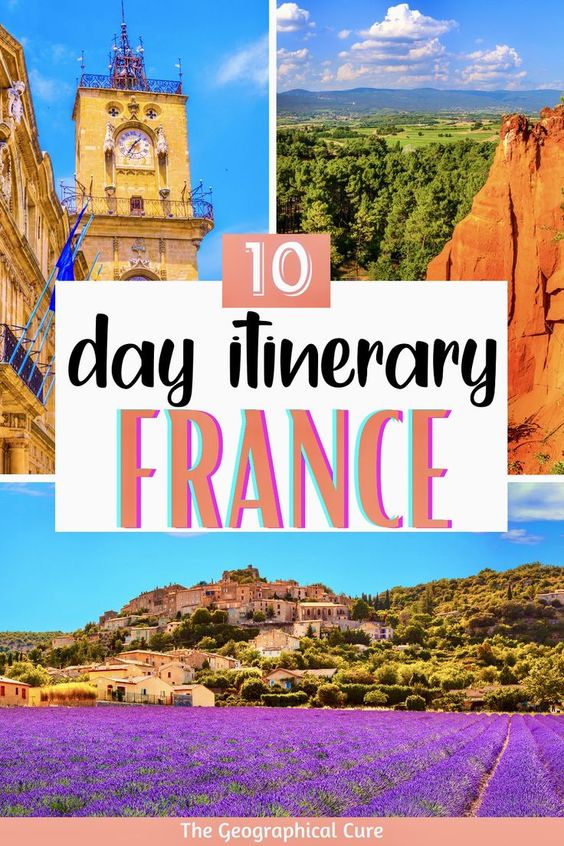
Leave a Comment Cancel reply
Save my name, email, and website in this browser for the next time I comment.
Last Updated on February 25, 2024 by Leslie Livingston
- Search Please fill out this field.
- Manage Your Subscription
- Give a Gift Subscription
- Newsletters
- Sweepstakes
- Destinations
Dreaming of the South of France
It's time to plan your very own French fairy tale in magical le Midi.
Since 1971, Travel + Leisure editors have followed one mission: to inform, inspire, and guide travelers to have deeper, more meaningful experiences. T+L's editors have traveled to countries all over the world, having flown, sailed, road tripped, and taken the train countless miles. They've visited small towns and big cities, hidden gems and popular destinations, beaches and mountains, and everything in between. With a breadth of knowledge about destinations around the globe, air travel, cruises, hotels, food and drinks, outdoor adventure, and more, they are able to take their real-world experience and provide readers with tried-and-tested trip ideas, in-depth intel, and inspiration at every point of a journey.
From the fragrant lavender fields of Provence and the beautiful beaches of the Côte d'Azur to the renowned vineyards of the Rhône Valley, there are endless reasons to visit the South of France. While some travelers arrive looking for flashy five-star hotels, designer shopping, and A-list celebs, others hope to lose themselves in twisting cobblestone streets, sprawling farmlands, and quiet hilltop villages. Whatever your style, you're sure to leave feeling lucky to have experienced this spectacular slice of European paradise.
Related Articles

The Ultimate South of France Itinerary: One Week Road Trip Guide and Map

- Pinterest 361
Trying to plan out your South of France Itinerary? Here’s how to hit the highlights on a one-week road trip.
The South of France is heaven on earth. It smells like fresh lavender, has delicious cheese and boasts pristine nature that inspired some of the world’s most renowned artists.
The ideal time of year to visit is in the summer when the lavender and sunflower fields are in bloom. This is also the most in-demand season but thankfully Provence is filled with wide open spaces so it rarely feels crowded.
The best way to see the region is by renting a car and driving yourself since public transport is sparse between villages and arranged tours don’t allow you to see things at your own schedule. Driving here is easy — you drive on the right side of the road, tolls are automatically billed to your credit card and there’s ample parking outside of the big cities. You can rent a car with just your license and passport.
The following is a schedule I put together for one week in the South of France, allowing you to hit all the major highlights in record time. You can still follow this itinerary if you go during a different season besides summer but the route won’t be as scenic. It will also be significantly harder to drive on narrow mountain roads come winter.
Day 1: Arrive in France
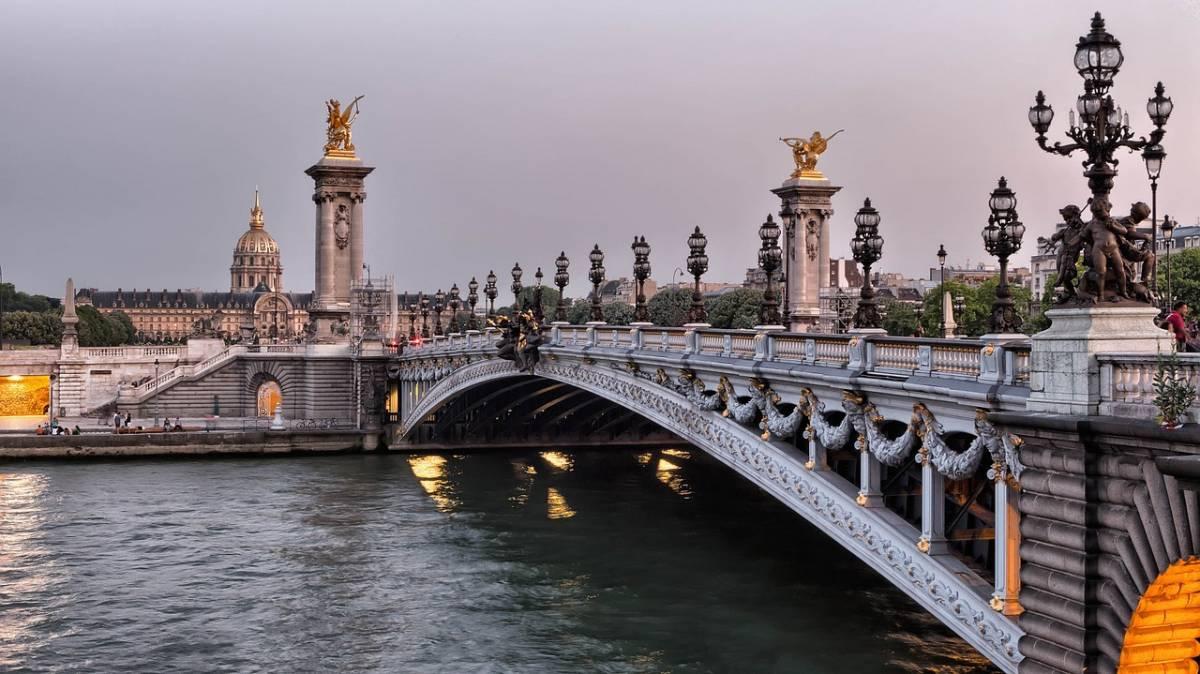
Flying into Paris is likely your most affordable option, so I suggest you start there. You can take a day to acclimate and enjoy the city, perhaps stopping by the Eiffel Tower or going to a museum you haven’t seen before if this is a return visit.
Another option is to fly into Nice or Marseilles. Choose whichever one gets you there the cheapest since you have a long drive ahead of you either way.
No matter where you fly into, take it easy on the first day and make sure you have lots of energy before you hit the road.
Day 2: Head to Provence

From Paris you can catch a high-speed train to Avignon, where you can rent a car. I picked up a car in Avignon and returned it to Nice when the week was over. Avignon is the middle of Provence and makes a great starting point. I passed through the city but you can feel free to explore a little when you arrive.
If you’re not coming from Paris, you can head straight to Saint Remy de Provence . Once there, I recommend that you go for lunch at Da Peppe , they serve pasta in a cheese wheel that’s orgasmic.
Afterwards, head to Monastery Saint-Paul de Mausole , where Vincent Van Gogh was committed and spent his later years. You can see a model of his room there, the same one featured in the famous painting, “The Bedroom.”
When you’re ready, go south towards Arles. On the way, stop by Carrières de Lumières , a former quarry that projects images of art onto the interior walls, played to music. It is absolutely magical, so much so that the popular Atelier des Lumieres was created in Paris in its image.
Day 3: Explore Arles
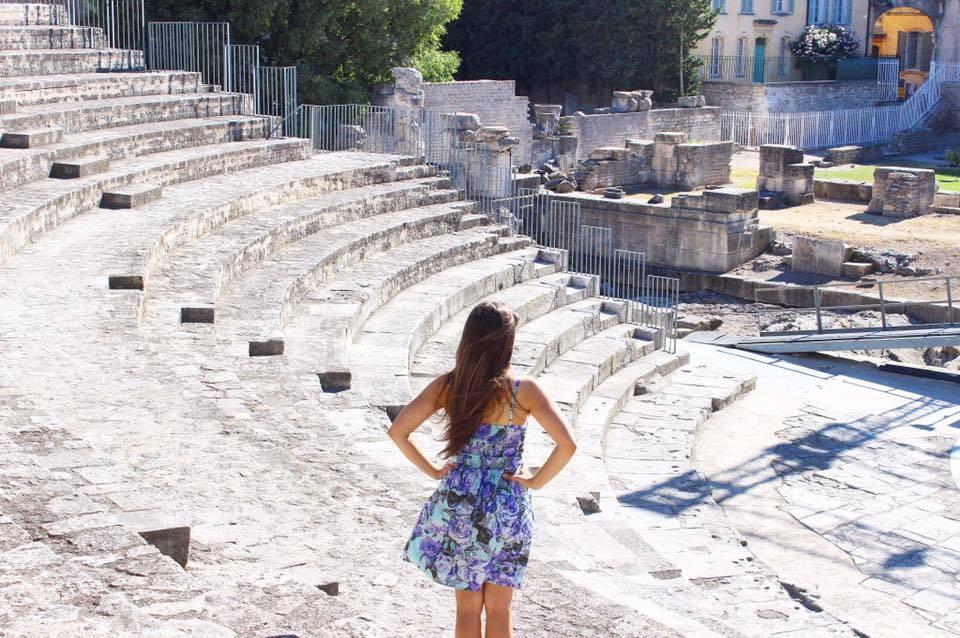
Arles is where Van Gogh lived and worked for many years, creating more than 300 paintings and drawing. The main draw here is the Van Gogh walking trail , which allows you to visit the real-life places featured in his masterpieces, like the view of the Rhone in starry night over the Rhone and the yellow cafe seen in Cafe Terrace at Night.
There’s a visitor’s center where you can get a map to do a self-guided tour on your own for €1. If you go at a leisurely pace, it’ll take you roughly half a day. You can also do a guided tour, offered by the Tourism Office on Wednesdays and Saturdays in the late afternoon or take a bike tour of the city.
RELATED POST: FINDING VAN GOGH IN ARLES ON A SELF-GUIDED ART ROUTE
Day 4: Gordes and Rousillon
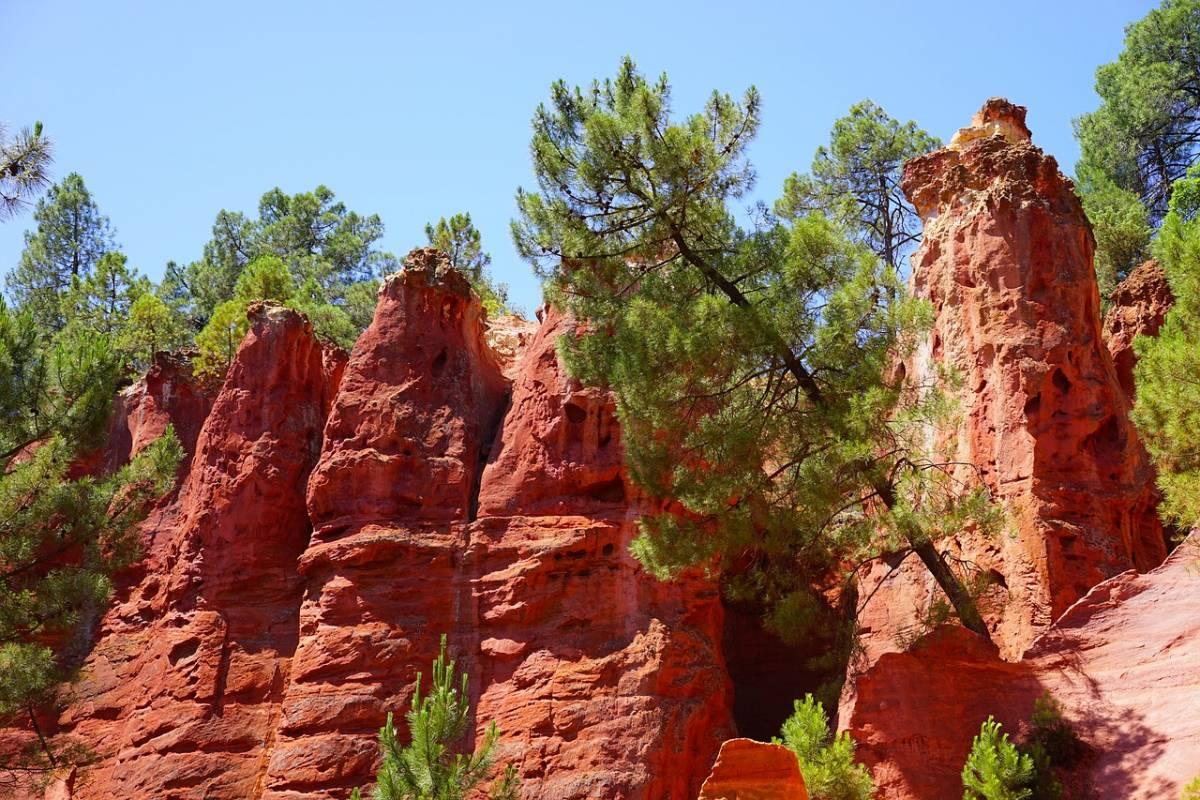
The next morning, head from Arles to Gordes to visit the Senanque Abbey . You’ll need to get an early start as the drive over is filled with magnificent sunflower fields and you’ll be tempted to stop every five minutes.
The Senanque Abbey is one of the most photographed places in Provence and is packed with people who want to capture the lavender fields. Aim to be there before 10 a.m. so you can beat the tour buses.
Next, head to Fontaine-de-Vaucluse . The area is built around a natural spring and is beautiful for just walking around and perusing. When you’re ready, make your way to Rousillon . This is a unique village with red rock formations that are great for hiking. Hit the road by 3-4 p.m. since you have to drive to Castellane and it’s a long, windy mountain road to get there.
If you have time you can stop by the L’Occitane Factory in Manosque on the way, getting fancy hand lotion straight from the source.
RELATED POST: VISITING THE SENANQUE ABBEY IN GORDES, FRANCE
Day 5: Castellane
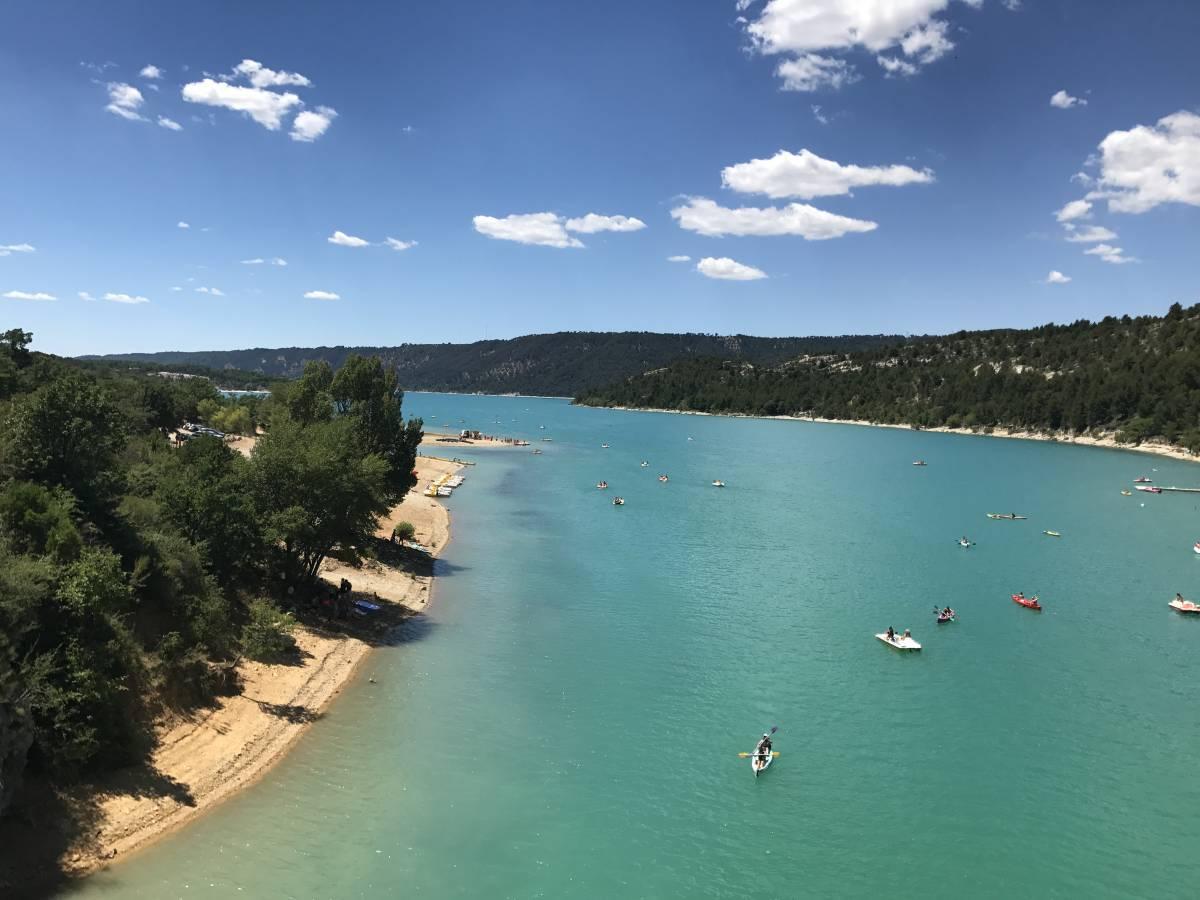
The main reason to go to Castellane is to visit the Gorge du Verdon , widely regarded as the Grand Canyon of Europe. This gorgeous, turquoise river ends in lake called Lac de Sainte Croix . Here, you can rent paddleboat or kayaks and take in the gorgeous setting. This is the perfect activity on a warm summer day.
Those looking for adventure can find different outfitters in Castellane that offer everything from climbing to canyoning. If you visit in the winter, the mountains near the gorge have skiing available.
RELATED POST: HOW TO VISIT LAC DE SAINTE CROIX IN CASTELLANE, FRANCE
Day 6: Cannes
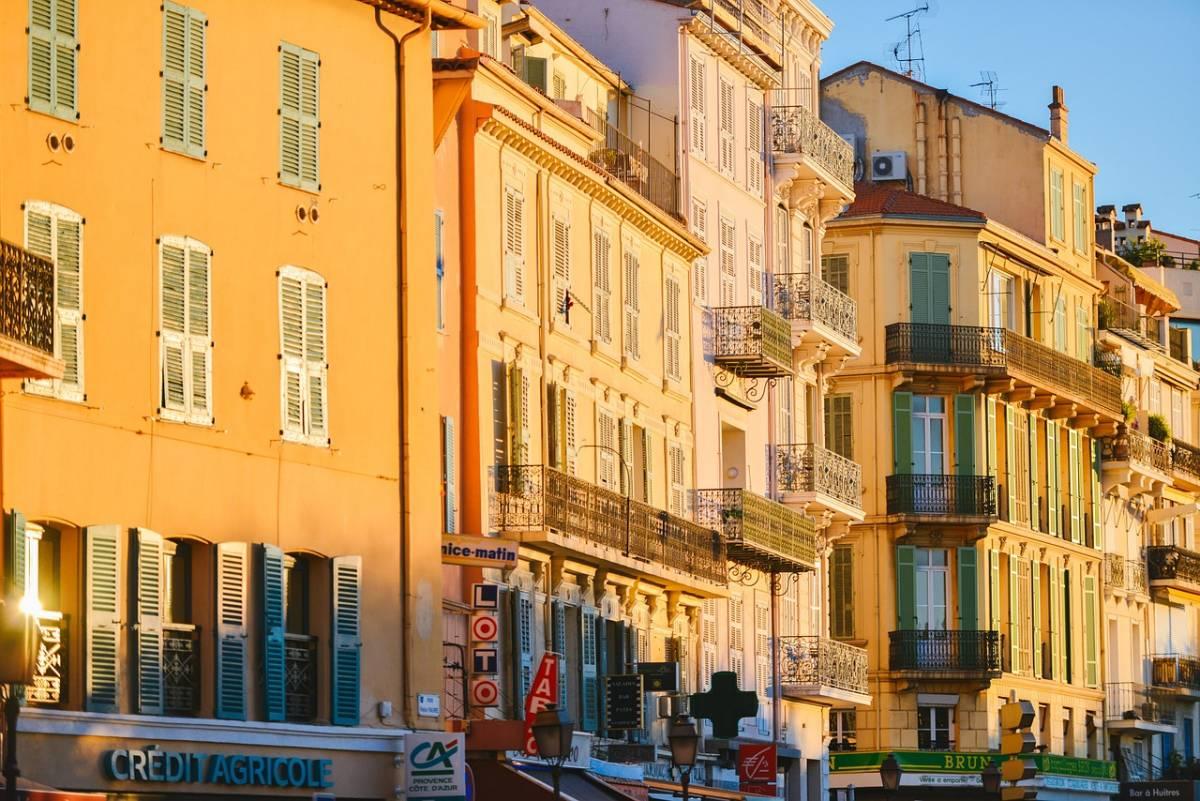
Cannes is a resort town on the French Riviera widely known for its international film festival. This is a place to relax after a long week of sightseeing and is a favorite of the rich and famous. Sit in the sun, have a drink and stroll the Promenade de la Croisette .
If you’re a fan of fine fragrances, visit the Musée International de la Parfumerie to see how perfume is made. Cannes offers more by way of shopping and yachting than arts and culture, so if you’re looking for the latter spend a day in Marseilles after Arles instead.
Day 7: Nice
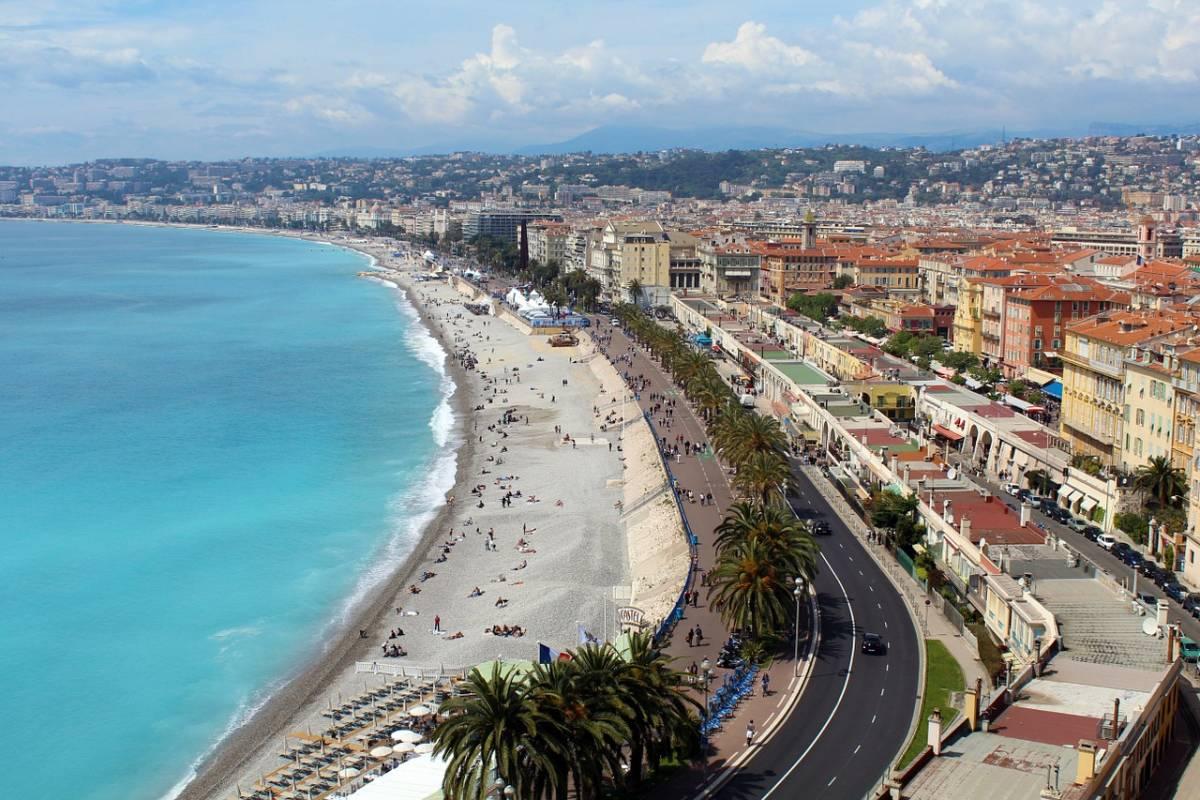
Finish your week-long road trip in Nice. There are several museums here, including the Matisse Museum , but if it’s a sunny day you won’t want to be indoors. Walk throughout old Nice, with cobblestone streets and pastel-colored buildings.
If you want to be transported to a different destination, check out the Saint Nicholas Russian Orthodox Cathedral. It boasts traditional Russian architecture reminiscent of the famous church in Russia and a collection of national artifacts inside.
I always take advantage of the opportunity to see Russian art when available since it’s not allowed to leave the country without permission and, as such, is rarely seen outside of Russian borders.
While there’s no shortage of things to do in Nice , you can also get to Monaco in under an hour by bus or train, knocking out the second smallest country in the world in one afternoon.
There are many ways that you could mold this itinerary to fit your needs. You could start and end in Nice or Marseilles. You could do it backwards, from the French Riviera heading inwards to Provence.
You also have the ability to extend your stay at certain places, or cut out cities and attractions altogether. No matter your preferences, the South of France is always a good idea.
Till next time, safe travels!
My Amazon Picks:
Note, this post contains affiliate links. See my privacy policy for details.
Liked this post? Pin me below:
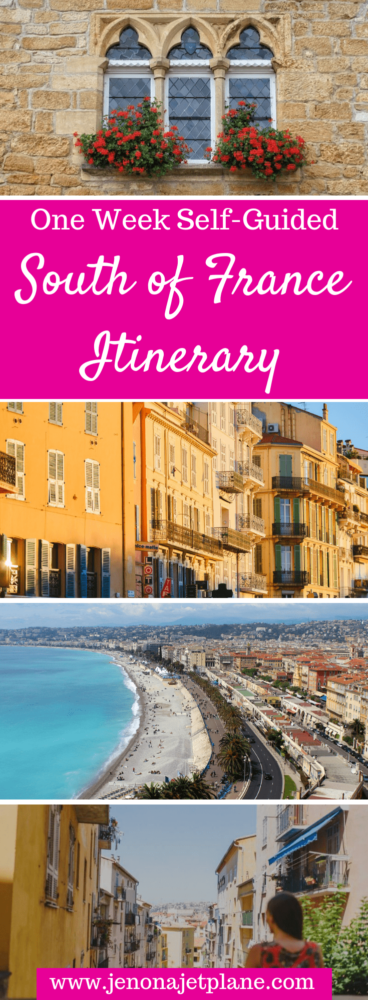
Faith Coates
Wednesday 18th of March 2020
I was headed to France before CV but had to cancel so I get to enjoy it vicariously through your article so I will be prepared for my trip.
Friday 2nd of August 2019
this is very nice and the places are unique from other places most people visit,
Monday 20th of May 2019
As I am French I can confirm that this road trip is very interesting. Thank you for highlighting my beautiful country that is a little tormented now ... Congratulations on this beautiful article!
Jen on a Jet Plane
Saturday 25th of May 2019
I appreciate that Coco, I absolutely fell in love with your country!
Wednesday 27th of March 2019
This is really a great article! I love it when people use Google maps embedded in their blog posts. This makes your blog post such a great ressource when touring around France!
Thursday 28th of March 2019
Thank you Sarah, happy to be of service!
elizabeth everywhere
traveling the world, one post at a time
- South of France Itinerary – The Best Southern France Road Trip

Southern France is a dream. From the rolling lavender fields of Provence, up to the snowy peaks of the French Alps , and down to the pristine blue waters of the Riviera, the South of France is packed with beauty and charm. While living in Paris, I was lucky enough to explore the area on a Southern France road trip, and now, I want to share it with you. This is the perfect 10 day South of France itinerary, complete with amazing day trips and one-of-a-kind experiences you can only have in France .
Check out my guide visiting France for the first time, which includes information about customs, travel, and more, that will be very helpful when following this Southern France itinerary!

10 Day South of France Itinerary Overview
My Southern France itinerary is 10 days long, and it focuses on three main cities- Nice, Avignon, and Annecy. At each of these stops, you’ll find unique experiences that give you a taste of the region. Soak up the sun on the beach in Nice, and enjoy the luxe life with day trips to world-famous Cannes and nearby Monaco. Experience the Provencal countryside on day trips while using Avignon, a historically significant city, as your home base for a few days. Finally, explore the winding streets of Annecy’s quaint old town amidst the backdrop of the French Alps. I fell in love with every village, town, and city we visited on this trip, and I’m sure you will too.
Southern France Road Trip Tips
This itinerary is best experienced as a road trip during the summer. Having a car makes the day trips, especially those throughout the countryside, much easier and more efficient as you can come and go as you please. When my family and I took this trip, we flew in and out of Paris, bookending this trip with a few days in the French capital for a perfect 2-week vacation. We took the train from Paris to Nice and picked up our rental car there, driving from city to city until we went back to Paris. If you don’t want to drive, you can still follow this itinerary, for the most part, using public transportation. However, some of the day trips, like the trip to Les Baux-de-Provence, would be near impossible unless you found a private driver or tour to join.
Southern France Road Trip Itinerary

Days 1-4: Nice, France
Day One: Arrive in Nice
Our train arrived in Nice in the afternoon, so we immediately started our Southern France road trip and picked up our rental car before heading to the hotel. After that, we spent the afternoon wandering along the famous beachfront Promenade des Anglais and exploring the winding streets of the old town, called Vieux Nice . While the promenade is lined with big, beautiful hotels, the old town is full of brightly colored, rustic homes that look like they’ve been there for hundreds of years. Make sure to try some classic southern French cuisin e for dinner!
Day Two: Art and Sun
In the morning of our second day in Nice, we visited the Chapelle du Rosaire , a church designed by famous artist Henri Matisse. The church is located in nearby Vence, and although it appears unassuming from the outside, the inside features art and stained glass windows by the expressionist artist. After that, we headed to one of Nice’s many private beaches for lunch and sunbathing. Nice has a few public beaches, but there are also private beaches where you can rent a chair and get food and drinks delivered to you. Visiting the beach in Nice is a must-do if you’re visiting the Riviera in the summer.
Day Three: Day Trip to Eze and Monaco
On the third day of our Southern France road trip, we visited Eze , a hilltop village located less than a 30-minute drive from Nice. We spent some time wandering the old, cobbled streets of the city before heading to the Jardin Exotique , a garden located at the very top of the village. Through the cacti and succulents, you can find stunning views of the beautiful Mediterranean Sea and nearby towns. After that, we grabbed a quick lunch in Eze before heading to Monaco , located just 20 minutes from Eze.
The Grand Prix course was still up when we visited Monaco, so we spent time checking that out before also visiting the famous Monte Carlo Casino and window shopping at all the nearby designer stores. That evening, we headed back to Nice for dinner and a sunset walk down the Promenade.
Day Four: Day Trip to Cannes
For our final full day in Nice, we took a day trip to Cannes , a city famous for its international film festival! We visited the famous spot where the stars walk the red carpet for the event and then wandered through the city, taking a break to enjoy a few pastries and coffee. In the afternoon, we headed back to Nice, and we visited the Florian Candy Factory , where we found regional sweets like candied clementines.

Days 5-6: Avignon, France
Day Five: Arrive in Avignon
We left Nice in the morning of the fifth day of our trip and headed to Avignon, located about a 3-hour drive away. After arriving in Avignon, we explored the old, walled city. Avignon was home to the papacy during the 1300s, so there are several historically significant structures to visit, including the Papal Palace and the Pont d’Avignon, a 12th-century bridge with remains still standing today. We took a tram ride through the walled city to get a better feel for the town before grabbing dinner in one of the main squares. There’s so much Roman and medieval history in Avignon, so I’d recommend taking a tour if you want to learn more.
Day Six: Day trip to Les Baux and Pont du Gard
Day six was the most surprising day of our Southern France road trip. We considered visiting the Roman ruins in nearby Nimes, but our hotel concierge recommended that we visit Les Baux de Provence during the day and Pont du Gard in the evening. We started our day by driving to Les Baux, a hilltop village dating back hundreds of years in the Provencal countryside. Throughout the village, you can find cute shops and cafes alongside medieval ruins. My favorite attraction in Les Baux isn’t its adorable old town- it’s the immersive art display located below inside of an old quarry. The Carrières de Lumières is a multimedia art show that projects famous works of art set to music on the huge walls of the quarry. Check out my full guide to Les Baux for more information about this amazing art experience.
That evening, we went to Pont du Gard, an ancient Roman aqueduct and UNESCO World Heritage Site. The site itself is impressive to behold as it towers over the river today after being built thousands of years ago. Near the aqueduct, you can also find archeological cave sites that show humans lived in this area tens of thousands of years ago. In addition to these historical sites, the Pont du Gard is also home to the Féeries du Pont, an incredible nighttime show projected on the Pont du Gard. This show combines projections, pyrotechnics, and live actors and acrobats to create a truly incredible show on the ancient structure. This show and the Carrières de Lumières made day six my favorite day of this Southern France itinerary. Unfortunately, this show only occurs a few times during the summer, so check out the website to see if you’ll be able to experience it!

Days 7-10: Annecy, France
Day Seven: Arrive in Annecy
After exploring Avignon, we were excited to head to Annecy, a beautiful town in the French Alps. It takes about three hours to get to Annecy from Avignon by car. After getting to Annecy, we spent some time wandering around Lake Annecy , a stunning blue lake surrounded by mountains. After enjoying the sunset over the lake, we ate dinner at a classic fondue restaurant in the Old Town and wandered through its cobbled streets after dinner. Check out my full list of things to do in Annecy for more trip inspiration!
Day Eight: Day Trip to Chamonix
We woke up early on day eight to get to Chamonix, a skiing town near the Italian border that was about an hour away by car. Chamonix-Mont-Blanc is famous for its winter sports and for having the tallest mountain peak in Europe, Mont Blanc. In Chamonix, you can visit the Mer de Glace , a giant glacier, or take a gondola up to the Aiguille du Midi. Once you’ve taken the gondola up the mountain, you can see amazing views of the Alps, and you can even stand in a glass box thousands of meters in the air! If you’re sensitive to major changes in altitude, you might get a little lightheaded and dizzy, so take a break in the cafe to relax if you need to! I’ve written a full guide to Chamonix , so check it out if you want more information to plan your trip!
Day Nine: Day Trip to Geneva
As if this Southern France itinerary wasn’t full of day trips, here’s one last stop! On the final full day of our Southern France road trip, we drove to Geneva for lunch! We walked along Lake Geneva , through the main streets of the old town, and then grabbed a quick lunch before heading back to Annecy. When we got back to Annecy, we rented a boat and cruised around the lake for a while before enjoying one last dinner in the charming town.
Day Ten: Back to Paris
Enjoy one last breakfast before your Southern France road trip finally comes to an end. We drove back to Paris and spent a few more days there before flying home.

South of France Itinerary: Experience the Best of France
My trip through Southern France was absolutely incredible, and if you follow this itinerary, I’m sure you’ll fall in love with the region just like I did. There’s so much to see, from the ancient Pont du Gard to the iconic beaches of the French Riviera. As I noted before, this South of France itinerary works best as a road trip, but most of the destinations are reachable using public transportation. Are you ready for your Southern France road trip?

3 thoughts on “ South of France Itinerary – The Best Southern France Road Trip ”
This sounds amazing!
Great 10 day itinerary! You could easily spend more time on just the Cote d’Azur, there’s so much to see and do throughout the year. Of course, as it’s my home turf, I am biased.
I would have loved to spend more time in Southern France! Great tips and itinerary!
Leave a Reply Cancel reply
This site uses Akismet to reduce spam. Learn how your comment data is processed .
Recent Posts
- Charleston Food : Where to Eat in Charleston SC
- 10 Best Restaurants in Greenville SC: Places to Eat in Greenville SC
- Best Dessert in Charleston SC, According to a Local
- 8 Best Day Trips from Paris – Disney, Versailles, and More!
Recent Comments
- January 2020
- December 2019
- November 2019
- October 2019
- September 2019
- February 2019
- January 2019
- December 2018
- November 2018
- October 2018
- September 2018
- August 2018
- January 2018
- January 2017
- December 2016
- Food + Drink
- Entries feed
- Comments feed
- WordPress.org
Discover more from elizabeth everywhere
Subscribe now to keep reading and get access to the full archive.
Type your email…
Continue reading
- Family holidays

- Dreaming of Sunset with Oliver’s Travels
- Best Cities in Europe for Remote Working
- 10 Wow-Factor Homes For Your 2024 Reunion Holiday
- Our Top Tour De France Luxury Villas 2023
- The Most Popular Travel-Inspired Interior Trends
- The Best Places to Take a Workation – UK and Abroad
- Oliver’s Vampire Weekender – Only the Undead Should Apply!
- www.oliverstravels.com
- Smart Travel
- Places To Stay
- Travel Guides
South of France Travel Guide
With its balmy summer days, picturesque beaches and rustic countryside, it’s no surprise the South of France is one of the world’s most popular destinations (it’s certainly one of our favourites!) We’ve put together our top tips, some handy blogs and great ideas for things to do in a South of France travel guide – and don’t forget to check out our France travel guide too before you set off.
When is the best time to visit the South of France?
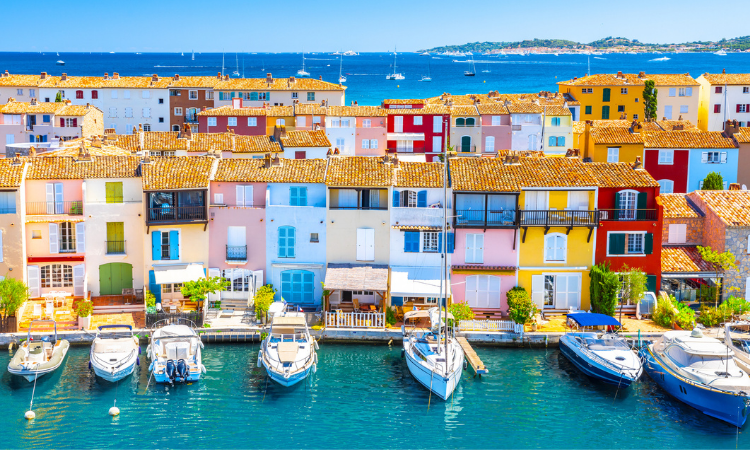
Peak season in France is July and August, so be aware that if you go then, you’ll be one of a huge number of tourists – but that also means it’s prime time for festivals and fairs!
What regions should you visit in the South of France?
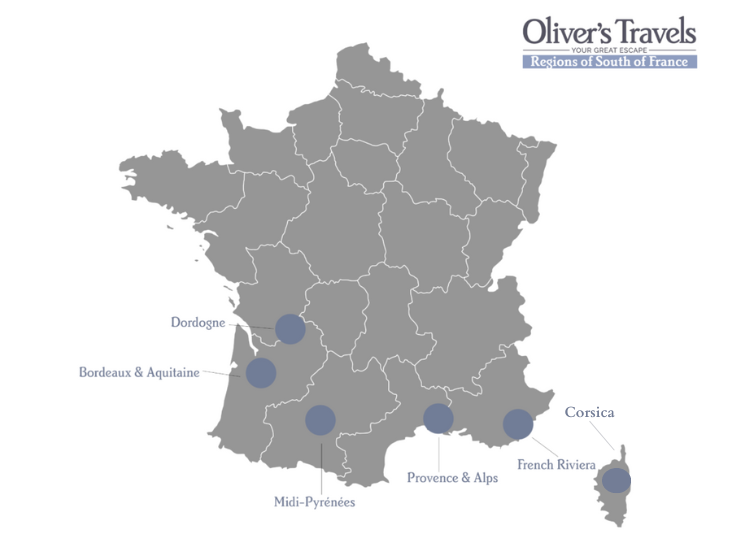
Bordeaux & Aquitaine – Great for: Vineyards, Foie Gras, Duck, Wine Tasting – Read our Aquitaine Travel Guide
Dordogne – Great for: Wine, Foie Gras, Truffles and Market Towns – Read our Dordogne Travel Guide
Midi-Pyrénées – Great for: Skiing, Wine and Festivals – Read our Midi-Pyrénées Travel Guide
French Riviera – Great for: Mediterranean-style beaches, Nice, St. Tropez, Cannes, Yachting and Festivals – Read our Côte d’Azur Travel Guide
Provence-Alpes – Great for: Mountains to the Mediterranean, Bouillabaisse, Provence and Avignon – Read our Provence Travel Guide
How do you get around the South of France?
- Public Transport – One of the world’s fastest trains can be found in France and runs between all of the South of France’s major cities.
- By bike – France is well known for its bike-friendly culture, and you’ll find many good cycling routes here. It’s also a great way to experience the less touristy parts of the region and makes a great alternative to driving everywhere. Most cities have bike-sharing schemes for a reasonable price – Monaco’s even include electric bikes to combat the big hills!
- Hiring a car – If public transport isn’t your thing, hiring a car can be a fantastic way to see another side of the region. We recommend using Avis or Hertz for a reliable and hassle-free experience, taking you straight from the airport to your destination.
What are the best things to see and do in the South of France?
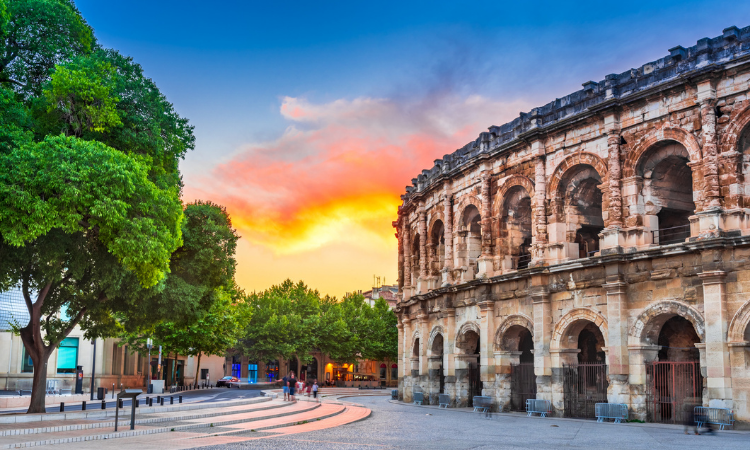
2. How about a palace built by a postman? This is one sight that’s not soon forgotten! Postman Chevel spent 33 years building his Palace Idéal in Hauterives , using stones he’d collected during his rounds. The result is a beautiful and highly eccentric piece of work.
3. Arles is full of incredible Roman history, including an amphitheatre and forum plus some impressive 17th-century mansions. However, Arles is largely known as the place where Van Gough lost his ear, with the Van Gogh Exhibition erected in his honour.
4. Le Palais des Papes in Avignon proudly holds the title of the biggest Gothic palace in Europe. This spectacular 14th-century site is a must-see if you’re a history buff, but you can’t help but be fascinated simply by the sheer size of the place.
5. With origins dating to Julius Ceasar’s defeat of Mark Anthony and Cleopatra in Egypt, this historic Amphitheatre of Nimes is well worth a visit. Once serving as a destination for enjoying epic shows, it’s now one of the most well-preserved spaces from our ancient past.
6. The striking Gorges du Verdon acts as France’s very own Grand Canyon. Make a day of it by enjoying a walk around the spectacular scenery, or hire a canoe and take to the water to fully appreciate the canyon from a whole new angle.
7. If you’re looking to challenge yourself, try hiking the Gorges du Verdon – they’re definitely not for beginners, so make sure you’re confident and kitted up accordingly. Nearby, you can also explore the hilltop village of Moustiers Ste Marie and its fragrant fields of lavender.
If luxury experiences are more your thing, we have you covered with our 10 luxurious experiences in the South of France.
What are the best things to eat in the South of France?
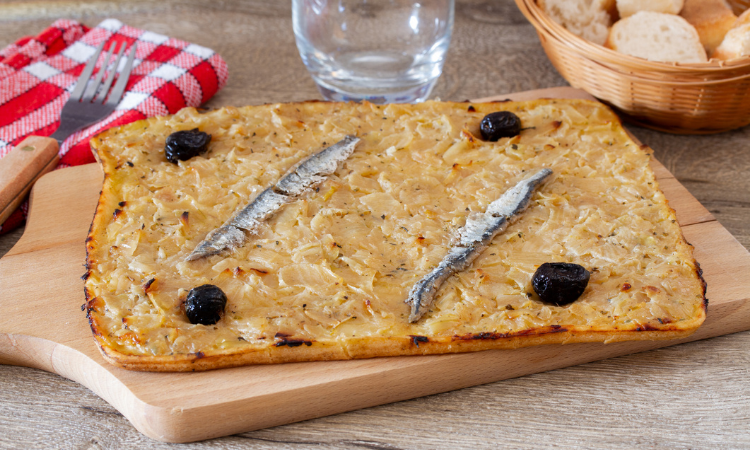
2. Pistou soup is made with a French take on pesto, mixed in with white beans, tomatoes and green beans. It’s traditionally enjoyed in the summer, making use of only the finest fresh ingredients.
3. If you spot it, try a slice of pissaladière . This half-Mediterranean, half-French pizza has a thick, doughy base that’s covered in heaps of sautéed onions, anchovies and olives.
Read about the top five wine and food tours in Bordeaux here , or check out our blog on the Best wine experiences in the South of France .
South of France for families
While the South of France is perhaps best known for its fresh produce , fine wines and ancient sights, it also makes a perfect place for your family holiday – you’ll be surprised by the wealth of things to do with kids all year round!
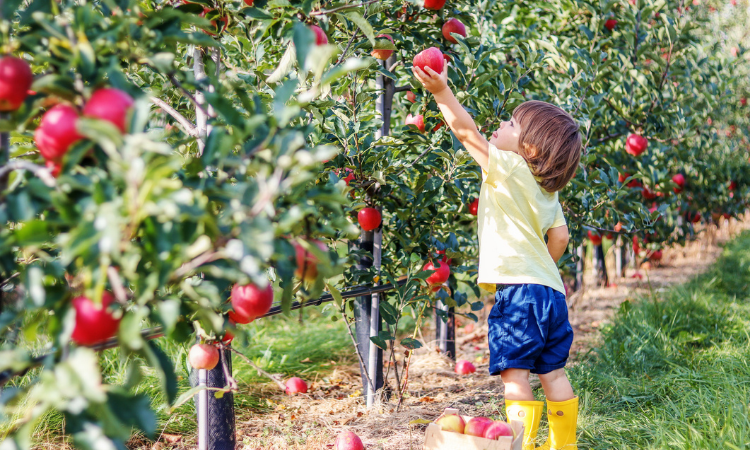
2. Fruit picking at Domaine Natura is a great excuse to get younger kids out in the open air and teach them about where our food comes from in a fun way – not to mention being able to munch on the freshest fruit while you’re at it!
3. What kid doesn’t love to a trip to visit some animals? Parc Zoologique has a relaxed, park-like feel, and with over 90 species of animals, there’s plenty to see. Take a picnic lunch and enjoy some time by the lake in the sunshine.
4. A fantastic, fun way to let off some steam as a family, La Forêt d’Acrobates is full of assault courses, zip wires and climbing walls. It’s a great way to challenge yourselves and the kids while getting fit at the same time.
5. Fancy a blast from the past? Visit Europe’s largest dinosaur museum, Meze Dinosaur Museum . Found in the middle of a paleontological site, the exhibits and museum onsite are great, but nothing compares to the life-size dino replicas that inhabit the park!
Still looking for more ideas? Check out our top things to do with kids in the South of France to get inspired.
Best walks in South of France
These South of France trails are just the ticket if you feel like stretching your legs in the great outdoors. Accessible by amateurs of all ages, they’re ideal for seeing some fantastic sights. Just pack proper footwear – and don’t forget the picnic!
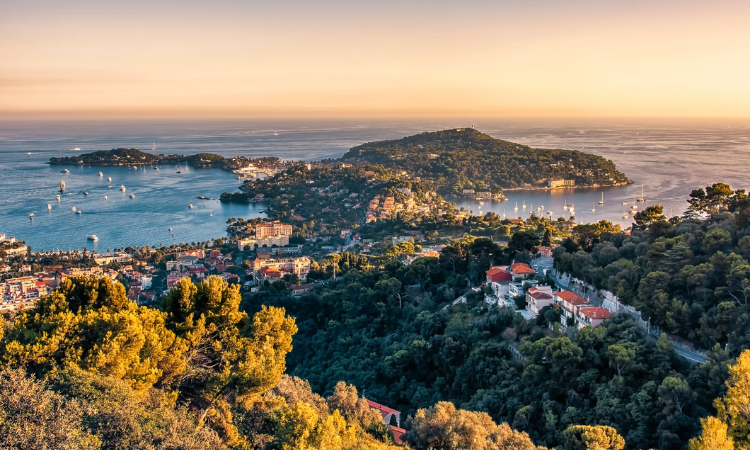
2. Saint Jean-Cap-Ferrat Hike Where: Nice-Côte d’Azur Details: Smelling the fresh sea air and seeing the stunning sea views make this 3-4 hour walking trail a delight for all the senses. Depending on how you’re feeling, you can choose to walk either one or both of the peninsulas. Full information through: www.beyond.fr
3. Via Ferrata Balma Negra Where: Roubion, 70 km north of Nice Details: Climb to great heights on fixed rung systems in the mountains of Provence. Via Ferrata gives you the experience of rock climbing without the risk, with the route itself only covering 300m but still reaching an altitude of 1450m. It’s the perfect activity for adventurous families with no previous experience required. Book through: www.activeazur.com
Best golf courses in South of France
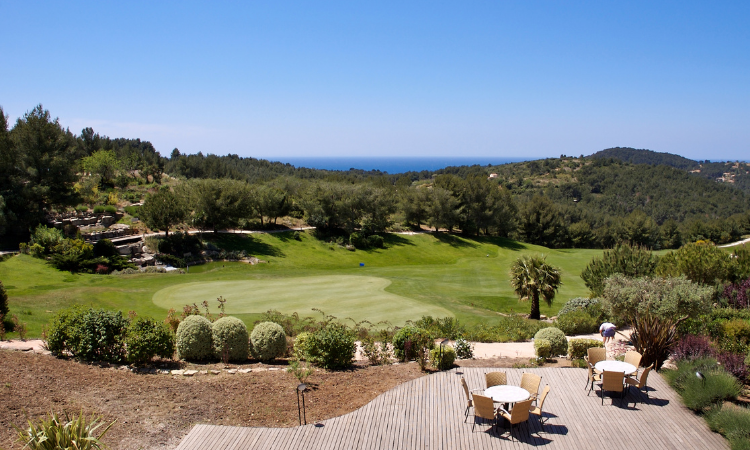
Whether you’re planning an entire golf holiday or just looking to nip out for a quiet couple of rounds, the South of France is home to some top courses. Here are our favourites to try out.
1. Avenue du Golf, La Grande Motte (golf club) Details: 42 holes, large driving range with 50 mats, putting green, golf school, 67 acres of parkland and 20 acres of lakes. Address: 34280 La Grande Motte t: +33 4 67 56 05 00
2. Avenue de Belvedere (golf club) Details: Putting green, no pets allowed. Address: 40510 Seignosse t: 03 35 58 41 68 30
3. Domaine de Falgos (golf club) Details: Par 70, 517 m long, 15 practice stations (with 6 indoors), practice bunker, putting and pitching greens. Address: 66260 Saint Laurent de Cerdans t: +33 4 68 39 51 42
For full information about the best golf courses in the South of France, head to Where2Golf website to find the best spots in Aquitaine , Cote d’Azur and Corsica and South of France .
So there you have it – our South of France travel guide. If you’re now ready to book your very own stay in this beautiful region, check out our range of villas in South of France . Still need a little assistance? Our concierge team are more than happy to help you at every stage of the holiday planning process.
Leave a Reply Cancel Reply
Your email address will not be published.
- Skip to primary navigation
- Skip to main content
- Skip to primary sidebar
- Skip to footer

The Mindful Traveller
Eco Travel Blog & Photography
South of France Road Trip: 1-Week Itinerary
27 October 2022 · In: France , Road Trip , Travel

What could be better than spending a road trip vacation through the South of France?
Here is a complete road trip guide to the South of France, including how to get around, when to visit and an incredible 1-week itinerary that ensures you see the best attractions and sights Provence and the French Riviera offer. From Nice to Marseille and Avignon, this travel guide is perfect for first-timers and will allow you to get to know the country and locals on a deeper level.
The South of France offers plenty of opportunities for an epic road trip . Through Provence and the French Riviera or the Côte d’Azur , you will discover a part of France with its own culture, heritage and way of life. Venture into small picturesque villages, sample local wine on your journey and unwind at pristine beaches – a summer you will never forget.
Even though France is my homeland, I am constantly discovering something new. My trip to Provence was one of those moments when I felt like I was in another country! It is a unique and authentic region where time slows down, a place that will truly leave you speechless.
In this article, I give you the tools you need to have a memorable experience in Southern France. Plus, do not forget to check out the sustainable tips at the end. Enjoy!
Disclosure : Some of the links below are affiliate links, meaning that at no additional cost to you, we will receive a commission if you click through and make a purchase. For more information, read our full affiliate disclosure here .
Saint-Tropez
Moustiers-sainte-marie & verdon gorge, overview: 1-week south of france itinerary.
- Day 1: Nice
- Day 2: Saint Paul de Vence, Grasse & Antibes
- Day 3: Cannes, Port Grimaud & Saint-Tropez
- Day 4: Hyères, Cassis & Marseille
- Day 5: Aix-en-Provence, Arles & Avignon
- Day 6: Lourmarin, Valensole & Moustiers-Sainte-Marie
- Day 7: Nice

free download
South of france itinerary.
Planning your road trip in France and not sure where to start? Here is an outline of an epic 1-week itinerary in the South of France . Enjoy! 🇫🇷

How to get around South of France
There are several ways to explore and get around the South of France. Here are some of your options:
- Rent a car : one of the best ways to explore the South of France is by car. It will allow you to move freely and discover this unique region full of hidden treasures. I recommend using Rentalcars.com to search and compare which car is best for you. From affordable to luxury, they make it easy to choose and have a great selection of rental agents. Eco-tips: try to rent the smallest vehicle possible, or go electric!
- Hop on public transport : if driving is not your thing or you would prefer to discover France from a different perspective, you can travel across the south of the country by public transport, with buses and trains. The area and major cities are well-connected to make things easier for you. And to reach remote places, look at the local buses.
- Explore by bike : biking is an incredible way to discover the South of France. It will allow you to slow travel and immerse yourself in unique culture and scenery and is perfect for reaching secluded areas. You will find many great cycle paths in the region. Plus, you will do our planet a favour!

South of France road trip: map
Click on the top left of the map to display the list of stops and locations.
Detailed South of France 1-week itinerary
This South of France road trip is excellent for a 1-week vacation in Europe . From picturesque villages to lavender fields and pristine beaches, it offers a perfect taste of the unique French culture across the French Riviera and Provence.
On the other hand, this self-drive itinerary is only a guide with recommendations. You are more than welcome to spend more days in one area or add other stops on your way. France has a lot to offer: you will not run out of things to do and see!
Here is my suggestion for where to stop on a road trip across the South of France with an itinerary idea for 7 days.
READ MORE: 20+ Best Places to Visit in The South of France

Day 1 – Welcome to Provence
Your adventure in the South of France begins with the bustling city of Nice .
With an international airport connecting most big cities, Nice is the perfect getaway to the French Riviera or the Côte d’Azur and an excellent starting point for your road trip.
Whether you like exploring, shopping, relaxing or sampling delicious food, Nice has it all. From world-class museums to gorgeous beaches and renowned restaurants, you will have no shortage of ideas for things to do and see. Plus, the buzzing city is an ideal place for families with children or couples on a romantic holiday.
Things to do and see in Nice
- Stroll along the Promenade Des Anglais
- Explore by bike with Vélo Bleu
- Wander the Old Town (Vieille Ville)
- Visit the flower market (Marché aux Fleurs)
- Relax at the Jardin Albert I
- Admire Square (Place) Massena
- Enjoy the view from Castle Hill (La Colline Du Château)
- Walk along the harbour
- Go to the beach
In addition, if you have time, go for a venture around the city and stop at the hilltop village of Èze , located 8.5 km northeast of Nice. Famous for its spectacular views and impressive architecture, this charming village dates back to the Middle Ages and hangs impressively to the mountainside above the Mediterranean Sea.
Unforgettable experiences I recommend
Day 2 – a journey through senses, saint-paul de vence.
Nice – Saint-Paul de Vence: 40 minutes / 21 km
Here you go – your road trip in the South of France begins!
Your first stop will be the hilltop village of Saint-Paul de Vence , a hotspot for artists and art lovers since the 1920s. The town is easily accessible by car from Nice and is an ideal place to discover Provence, especially if it is your first time in the area.
Saint-Paul de Vence is not favoured for its endless tourist attractions but is an attraction in itself. Wander through the village, take in the views and pass by charming galleries, shops, restaurants and art studios – let time slow down and enjoy a one-of-a-kind French experience.
Things to do and see in Saint-Paul de Vence
- Walk along the ramparts
- Admire the views
- Watch the locals play Pétanque
- Stop at the cemetery
- Visit the Chapelle des Pénitents Blancs
Saint-Paul de Vence – Grasse: 40 minutes / 22 km
If you have time, stop at Gourdon (an impressive village perched on a cliff) on your way to Grasse.
Your road trip continues with the gorgeous town of Grasse , well-known for its long-established perfume industry, with a heritage celebrated at the Musée International de la Parfumerie in the town centre.
Today, the town is still home to about 30 makers, including Fragonard, Molinard and Galimard, and a few offer guided tours of their factories, with the chance to sharpen your skills and develop your senses.
Enjoy the unique atmosphere of this small medieval town, get lost in its quaint streets and make your own perfume – there is a vast choice of things to do and see for a stopover in Grasse.
Things to do and see in Grasse
- Visit the Musée International de la Parfumerie
- Tour the Fragonard factory
- Learn & make your own perfume – book your tour
- Get lost in the Old Town
- See Notre Dame De Puy
- Explore the Domaine de la Royrie
- Admire Jean-Honoré Fragonard paintings
Grasse – Antibes: 35 minutes / 27 km
You will end your second day of touring the South of France with the seaside town of Antibes , known for its old centre surrounded by 16th-century ramparts with the star-shaped Fort Carré.
With a rich history and an active harbour, Antibes has a lot to offer and is a perfect way to end your day. The coastal town is a vibrant blend of quaint cobbled old streets and a beach resort that makes for one fascinating and well-earned stopover.
Things to do and see in Antibes
- Wander the Old Town
- Relax at the beach
- Explore Fort Carré
- Hike up the Garoupe Lighthouse
- Visit the Musée Picasso
Day 3 – Glitz & Glam
Cannes .
Antibes – Cannes: 30 minutes / 12 km
It is glitter time! Your third day begins in the luxurious city of Cannes , famous for its international film festival, golden beaches, exclusive boutiques and exquisite hotels. It is also home to the Palais des Festivals et des Congrès, a modern building with red carpet and Allée des Étoiles – the Walk of Fame.
A trip through the French Riviera would not be complete without visiting Cannes. Whether you decide on a short stopover or a day out, there is plenty to do and see in this resort town. Stroll through the old quarter of Le Suquet, enjoy the view from Notre-Dame d’Esperance church or treat yourself to a shopping spree on Rue d’Antibes.
Things to do and see in Cannes
- Stroll along La Croisette
- Sample local produce at Forville Market
- Shop on Rue d’Antibes
- Visit the Vieux Port
- Get lost in Le Suquet (Old Town)
- Go sailing along the French Riviera
- Enjoy the view from Notre-Dame d’Espérance
Port Grimaud
Cannes – Port Grimaud: 1 hour 20 minutes / 67 km

Nicknamed the Little Venice of Provence, the coastal town of Port Grimaud , approved as a 20th Century Heritage site, is a place full of surprises and a fascinating stopover on your route across the South of France. Even though it is small in size, it is a great place to take a break and unwind.
Stroll along the canal, enjoy a boat trip, savour an ice cream or admire the colourful facade; there are many reasons why you should visit this lovely town on your way to Saint-Tropez.
Things to do and see in Grimaud
- Hire a boat and explore the canals
- Relax at Grimaud Beach
- Visit the Église Saint Michel
- Shop at the local market
- Go wine tasting at a nearby winery
- Wander the old centre of the village Grimaud
- Admire the view from Château de Grimaud
Port Grimaud – Saint-Tropez: 15 minutes / 8 km
Another unmissable stop on your journey in Provence: the sunny Saint-Tropez . Long popular with artists, the town attracted the international rich and famous in the 1960s and remains renowned for its beaches, yacht community and nightlife.
From traditional markets to peaceful coastal paths and natural sites steeped in history, Saint-Tropez has plenty to offer visitors seeking local culture, heritage and architecture – with a touch of glamour. In addition, if you are looking for a relaxed night out, you will find plenty of restaurants and bars with a welcoming atmosphere.
Things to do and see in Saint-Tropez
- Walk around the Old Port
- Explore stunning beaches and coastal trails
- Stroll through the Old Quarter of La Ponche
- Go shopping for local gifts
- Visit the Old Market Square (Place des Lices)
- Enjoy panoramic views from the Old Citadel
- Visit the Musée de l’Annonciade
Day 4 – From Islands to Epic Cliffs
This fourth day is quite busy with activities and experiences, as it includes the island of Porquerolles and the Calanques, so it is up to you to decide what you prefer to do or skip.
Hyères & Porquerolles
Saint-Tropez – Hyères: 1 hour / 51 km
On this fourth day of your road trip in the South of France, you will leave Saint-Tropez for the seaside town of Hyères , with its hillside old town housing the remains of a medieval castle and centuries-old ramparts.
Things to do and see in Hyères
- Hike the Sentier du Littoral
- Visit the Old Town
- Sunbathe at the beach
Hyères is a beautiful town to stop and stroll around, but also the perfect place to reach Porquerolles , one of the Golden Islands, a group of isles with some of the best beaches in France , coastal paths and underwater shipwrecks.
The island of Porquerolles is only a short 10-minute boat ride from La Tour Fondue and offers many hidden treasures and exciting activities ideal for a day out with children. Moreover, the best way to discover this gorgeous island is to walk or cycle – you can rent your bike once on the island.
Things to do and see on Porquerolles
- Explore the island by bike
- Hike & immerse yourself in nature
- Enjoy a picnic with a view
- Visit the picturesque town
- Swim in the turquoise water
- Try yourself at water sports
Cassis & the Calanques
Hyères – Cassis: 57 minutes / 63 km

It is impossible not to mention Cassis and the Calanques for this road trip in Provence! Overlooked by a century-old castle, the town of Cassis is a historic fishing port known for its pebble beaches, vineyards and unmissable Calanques – narrow inlets framed by steep limestone cliffs part of a protected national park.
Once in Cassis, enjoy a well-deserved break in its lovely harbour featuring pastel-colours buildings, local cafes and restaurants. And if nature is more your thing, venture along the Calanques trails for panoramic sea views.
Things to do and see in Cassis
- Wander along the harbour
- Take a boat trip
- Hike the Calanques National Park
- Admire the Château de Cassis (now a hotel)
- Sample local wine & cuisine
To get to the Calanques from Cassis, you can walk directly from the village to Port Miou. Or you can drive to Parking de la Presqu’îl e and start the hike from there.
Best Calanques near Cassis:
- Port d’En Vau
Marseille
Cassis – Marseille: 40 minutes / 33 km
Your exciting day ends in Marseille , a port city full of cultural sites, historical landmarks and fun attractions. Being one of the largest cities and the second in population size, you will not run out of ideas for things to do and see in this lively city.
Explore the peaceful Vieux Port, admire Notre Dame de la Garde or take a stroll through the Old Town – many activities to experience for an unforgettable evening in this unique provincial city.
Things to do and see in Marseille
- Explore the Vieux Port
- Enjoy the view from Notre Dame de la Garde Basilica
- Visit Marseille Cathedral (Cathédrale Sainte-Marie-Majeure)
- Wander through the old district of Le Panier
- Visit Palais Longchamp
- Take a boat to the Château d’If
- Discover Fort Saint-Jean
Day 5 – Art, Culture & Heritage
Aix-en-provence.
Marseille – Aix-en-Provence: 40 minutes / 33 km
Not far from Marseille, you will find Aix-en-Provence , known for its university and being the birthplace of post-Impressionist painter Paul Cézanne. The provincial city is the perfect stopover for culture lovers and art enthusiasts on a road trip in the South of France.
Take the time to explore this city full of attractions and stunning architecture. Stroll through the peaceful streets, shop at local markets and attend art exhibitions – there are plenty of activities for everyone to experience the unique richness and heritage of the region. Even for a short break, Aix-en-Provence is a worthwhile detour on your route through Provence.
Things to do and see in Aix-en-Provence
- Stroll around the historic city
- Walk through Cours Mirabeau
- Admire Cathédrale Saint-Sauveur
- Visit the Atelier Cézanne
- Explore the local markets
- Wander in Musée Granet
- Hike up Sainte-Victoire
Arles & Camargue
Aix-en-Provence – Arles: 1 hour 10 minutes / 81 km
You continue your journey with a city that needs to be on your bucket list: the provincial capital of ancient Rome, Arles , famous for housing many ruins and remains of this time, including Arles Amphitheatre, which now hosts plays and concerts.
With a wealth of cultural attractions, the city is another perfect detour for art lovers, as it offers an excellent insight into the Roman heritage and boasts wonderfully preserved ruins. Moreover, between 1888 and 1889, Arles was a place of inspiration for the paintings of Vincent Van Gogh, masterpieces you can visit throughout the city.
Things to do and see in Arles
- Admire the Arles Amphitheatre
- Tour the Ancient Roman Theatre
- Explore the Vincent Van Gogh Foundation
- Walk through Place de la République
- Visit Église St-Trophime
- Wander Place du Forum
- Get inspired at L’espace Van Gogh
And if you love nature and wildlife, discover the Camargue National Park , a sublime marshy region located south of Arles, populated by black bulls, white horses, cowboys, pink flamingos and migratory birds.
Things to do and see in Camargue
- Ride a white horse
- Spot the pink flamingos
- Discover the Musée de la Camargue
- Walk along the walls of a Crusader Town
- Visit a working ranch
- Explore a salt pan
Arles – Avignon: 50 minutes / 39 km
Your fifth day in the South of France ends with Avignon , home of the Catholic popes from 1309 to 1377. Located on the banks of the Rhône and surrounded by medieval stone ramparts, the city is full of cultural riches awaiting exploration.
Whether you are looking for a romantic getaway or a place to have fun with the kids, Avignon has something for everyone. It is a great city to get lost and wander through beautiful quaint streets, famous bridges and market squares.
Things to do and see in Avignon
- Walk on the Pont Saint-Bénézet
- Visit the Palais des Papes
- Wander along the ramparts
- Enjoy artworks in one of its museums
- Stroll down Rue des Teinturiers
- Take a boat trip on the Rhône
- Visit Avignon Cathedral
Day 6 – The Most Idyllic Provence
Avignon – Lourmarin: 1 hour / 70 km
Another day on the road! East of Avignon, listed as one of the most beautiful villages in France, Lourmarin finds home in the middle of vineyards, olive groves and almond trees. With quaint cobbled streets, lovely terrace cafes and a Renaissance-style castle, it is a perfect provincial village with a relaxed atmosphere.
Therefore, you will not regret a stopover in beautiful Lourmarin: charming and captivating, it offers a well-deserved break for solo travellers, couples or families with children on a road trip across Southern France.
Things to do and see in Lourmarin
- Visit the Lourmarin Château
- Explore art galleries and shops
- Enjoy the vibrant Lourmarin market
- Sample local wine
Lourmarin – Valensole: 1 hour / 76 km
Set on a hill overlooking a lavender field, Valensole is a scenic medieval town on the northern edge of the Verdon Regional Nature Park and a must-see on a South of France road trip – a paradise for photographers and nature lovers.
Take a stroll through its historic centre with old colourful houses, allow yourself a peaceful pause in one of its gardens, admire the beauty of the lavender fields or relax at the terrace of a friendly café – the choice is yours! There are plenty of activities and attractions to experience on a short stay in Valensole.
Things to do and see in Valensole
- Get lost in its quiet streets
- Walk up Boulevard Frederic Mistra
- Visit a lavender field
- Tour a Valensole Lavender Distillery
Valensole – Moustiers-Sainte-Marie: 35 minutes / 32 km
Continuing east, your final stop of the day will be Moustiers-Sainte-Marie , a Provencal village set dramatically below two cliffs in the Verdon Natural Regional Park. Perched 100m high limestone ridges, the preserved medieval town offers an impressive and idyllic setting you will not encounter anywhere else.
Although Moustiers-Sainte-Marie is small, there are plenty of things to do and see for all ages. Take advantage of this well-deserved break and immerse yourself in the fascinating atmosphere of this one-of-a-kind village. Wander around the town, explore independent shops and visit the church – and do not forget to capture the moment!
Things to do and see in Moustiers-Sainte-Marie
- Wander around the town
- Visit the Musée de la Faïence
- Admire Notre Dame de l’Assomption Church
- Eat lavender ice cream
- Climb up to Chapelle Notre-Dame-de-Beauvoir

And if you prefer to spend time outdoors and in nature, check out the Verdon Gorge , a stunning river canyon and a must-see natural wonder not far from Moustiers-Sainte-Marie. Whilst there is no road along the gorge, there is a breathtaking circular route around the edge and plenty of boat and kayak rental opportunities on the lower end.
Things to do and see in the Verdon Gorge
- Enjoy the view from Galetas Bridge
- Explore and go hiking
- Paddleboard or kayak the gorge
Day 7 – Finale Day
Moustiers-Sainte-Marie – Nice: 2 hours 35 minutes / 147 km
Finale day on the French road of Provence and back to Nice . The journey can be long, so do not hesitate to stop and take a few detours on your way.
Once in Nice, take advantage of this last day to relax, enjoy the beach or go shopping. And if you have time or did not have the chance on day one, visit Èze or Menton .
I hope you enjoyed this road trip across the South of France!
Hey, are you enjoying this content?
Enjoy reading this article and want to continue learning more about sustainable travel? Support the blog & community by buying me a coffee! ☕
A little goes a long way. And together, we can create a better future for our planet.

Best time to visit the South of France
The best time for a road trip in the South of France is from May to June and from September to October.
Spring and autumn are two beautiful seasons as the roads and towns are less busy, the temperatures are pleasant, and the colours are gorgeous.
Summer is also an excellent period to visit the South of France. However, the temperatures can get extremely high during that season, and the region will be busy, leading to higher prices.
Keep in mind that Provence and the French Riviera enjoy the sunniest climate in France, with over 300 days of sunshine a year, so do not worry too much. The season you choose will mainly depend on the activity you want to do and what you want to experience.

Shop the printable road trip planner
Create your dream adventure & live an unforgettable experience on the road.

Sustainable travel in Southern France
Are you looking forward to your road trip through Southern France? I understand! Road trips are a fantastic way of travelling as they allow us to move freely and discover so many incredible places at our own pace. However, they can also have negative environmental impacts. That is why considering our carbon footprint and adopting eco-responsible habits is essential.
Here are some simple tips for creating an unforgettable adventure in the South of France with less impact.
PREPARE YOUR ROUTE
I know getting lost on a road trip can feel fun and exciting. But when trying to minimise your footprint, it is best to plan your route to avoid unnecessary travel. In addition, the shorter the distance you travel, the less fuel you will use and the less harmful emissions you will produce. Tip: Get offline maps to stay on track even if you lose signal.
PLAN YOUR MEALS
Another great way to reduce your impact on the road is to plan your meals. Throughout your journey, try to find local restaurants or eco-friendly facilities. You can try the local cuisine or wander through local markets and buy fresh produce.
MAKE YOUR TRIP PLASTIC-FREE
As you might know, plastic packaging is a significant environmental issue and causes concerns for wildlife and the preservation of natural landscapes. Therefore, avoid plastic as much as possible and bring reusable items instead. Choose eco-friendly alternatives , like reusable tote bags, cutlery, plates, etc. Tip: you can also buy filtered water bottles to refill your water anywhere.
CHECK YOUR CAR
Make sure your vehicle is in the best possible condition for the road: check the engine, oil level and tyre pressure before your trip. In addition, use the available features in your car, like cruise control, to help you maintain your speed and reduce excess emissions. And even better, drive an electric vehicle if possible! (Or a bike for the most courageous).
LEAVE NO TRACE
Aim to leave a place better than you found it. For example, dispose of your litter appropriately and pick up any trash you encounter. Be respectful of the land and do not drive over protected areas. And finally, stay on the marked trails when hiking, as going off can be dangerous for flora and fauna.
RESPECT WILDLIFE
Be mindful of your surroundings and adopt a responsible attitude towards wildlife, on land and in the sea. Do not come close to, feed or touch animals and corals. Remember that you are only a guest in their home.
USE REEF-SAFE SUNSCREEN
Protecting your skin from the sun during the hottest hours of the day is non-negotiable, especially during outdoor activities. But be careful about the cream you choose. Zero-waste and reef-safe sunscreens are an excellent alternative to chemical creams and are incredibly beneficial for many reasons: they protect the environment by reducing plastic waste and preserve your health by eliminating harmful components.
For more ideas of eco-friendly habits at the beach and near the coast, check out this article: Sustainable Beach Guide: 10 Easy Eco-Tips .
Want more inspiration?
- Sustainable Travel Guide: What, Why & How
- Best Travel Apps for Exploring Sustainably
- 15 Travel Books to Inspire Your Next Eco-Adventure
- Best Sustainable Backpacks for Travel & Hiking
Download your FREE sustainable travel checklist ↓

France travel planning guide
🚑 Should I buy travel insurance to travel to France? Yes, buying insurance is always valuable when travelling abroad. Enjoy your road trip across the South of France stress-free with one of my favourite providers, Nomad Insurance .
💧 Can you drink the water in France? Yes, tap water is safe to drink all over France. However, I also recommend travelling with the UltraPress Purifier Bottle , a lightweight filtered water bottle perfect for reducing plastic and staying hydrated.
🚗 Is it easy to rent a car in France? Yes, renting a car in France is easy and is a great way to explore the country freely. I recommend booking yours with Rentalcars.com – they offer a variety of operators for all budgets.
🏨 H ow to book accommodation in France? The best way to book your accommodation in France is with Booking.com – my favourite platform to compare and reserve places to stay each night, from affordable hotels to luxury resorts with sea views.
✈️ What is the best site to buy a flight to France? I recommend booking your plane with Skyscanner . It has been my favourite platform for years, as it allows me to book the cheapest flights whilst lowering my carbon emissions.
South of France road trip – FAQ
Yes, it is easy to drive in the South of France. However, keep a GPS and map nearby. Most roads are in good condition but drive carefully in remote places. And please, do not go fast!
I recommend spending at least seven days or more in the South of France, as there is so much to do and see. A week will allow you to discover the region and its hidden natural treasures whilst taking the time to relax and enjoy the sunny French weather.
The best time to visit the South of France is from May to June and from September to October. Spring and autumn are two lovely seasons as the roads and towns are less busy, the temperatures are pleasant, and the colours are gorgeous.

And you, have you ever experienced a road trip in the South of France? Let me know in the comments below!
With love ♡ Lucie
- Share on Twitter Share on Twitter
- Share on Facebook Share on Facebook
- Share on Pinterest Share on Pinterest
You will also love

STAY INSPIRED
Join our community today to receive exclusive travel tips & behind-the-scene stories that will inspire your next adventures, directly to your inbox. Can't wait to see you inside ♡
Reader Interactions
Leave a reply cancel reply.
Your email address will not be published. Required fields are marked *
Save my name, email, and website in this browser for the next time I comment.

London to Edinburgh Drive: 20+ Best Stops
Follow the journey.

On the Blog
- Privacy Policy
Become an insider!
And receive exclusive travel tips & behind-the-scene stories ♡
Copyright Lucie Charpentier © 2024 · Theme by 17th Avenue

The South of France
An inside guide to mediterranean france - languedoc and provence.
- Explore France ►
- Where to stay
- Find a hotel
- Climate & weather
- Plan your trip
- France on a budget
- Eating in France
- Camping in France
- Search About-France
- A-Z of French life
- Driving in France
- Motorway services
- Routes from Calais
- Rules of the road
- Driving checklist
- Ferries to France
- Flying to France
- Rail travel in France
- Bus and coach travel
- Other main cities
- Choose a region
- The south of France
- The Dordogne
- The French seaside
- The Loire valley
- The Massif central
- Top attractions
- Best of France
- Heritage cities
- Skiing & wintersports
- Best small towns
- Best of rural France
- Wild France
- Tourist map of France
The south of France from the Riviera to the Pyrenees
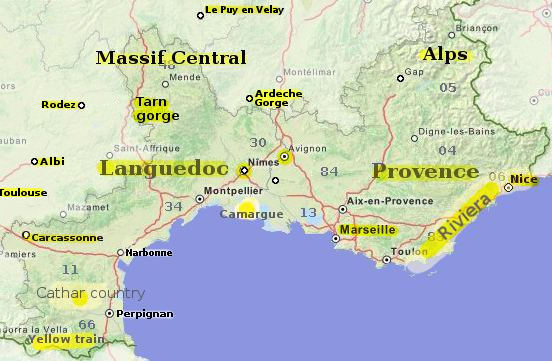
Tourist attractions in the south of France:
- The Languedoc-Roussillon region
- The Provence Alpes Côte-d'Azur region
- Character holiday rentals in Gascony & Pyrenees ,
- Character holiday rentals in Provence ,
- Small campsites in the south of France
- Small independent hotels in the south of France
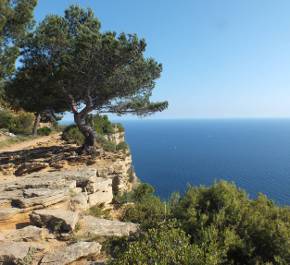

Home » Travel Guides » France » 15 Best Places to Visit in the South of France
15 Best Places to Visit in the South of France
The South of France is the embodiment of style and sophistication, and might make you think of the jazz age, the jet set in the 50s, impressionist painters, ochre-hued Provençal villages or Roman ruins.
It’s all of that and a whole lot more, so we’ve tried to curate a list that ticks all the boxes, with famous cities that make the headlines, and towns forever linked to the artists or writers who were inspired by them.
So whether you’re drawn by the South of France’s history, landscapes, culture, food or beaches there should be a place on this list to tempt you.
Lets explore the best places to visit in the South of France :

For a time in the middle ages this city on the banks of the Rhône was the centre of western Christendom.
Six papal conclaves were held in the spellbinding Palace of the Popes in the 14th century, and the building has fascinating little vestiges from this time, like the invaluable gothic frescoes still on the walls of the papal apartments.
The exalted ruins of Pont Saint-Bénézet are also from this period, poking out half-way across the river, guarded by a gatehouse and boasting the little medieval chapel of Saint Nicholas.
Browse the arty walled town, take a cruise on the Rhône, and see if you can come for the Theatre Festival in July, when Avignon becomes one giant stage.
2. Carcassonne

The Cité de Carcassonne, above the right bank of the Aude is a sight that can you dream: Walls have encircled this part of the city since the 4th century, but they were beefed up in the 13th century to stand as a barrier against the Crown of Aragon to the south.
After the 1600s they were no longer needed and allowed to decay, until the architect Viollet-le-Duc came along and gave them a romantic overhaul in the 1800s.
Carcassonne has much more besides: The Canal du Midi crosses the city and is a mind-blowing accomplishment from the 1600s, while the stained glass windows in the Basilica of Saints Nazarius and Celsus are some of the loveliest you will ever see.
3. Aix-en-Provence

Aix differs from the first two entries in that people visit this town, not so much for sights, but for its less tangible, atmospheric qualities.
On the evocative Cours Mirabeau, with its plane trees, fountains and elegant mansion, you’ll visit the haunts of the many famous personalities connected to Aix, like Paul Cézanne, Ernest Hemingway and Émile Zola.
You can continue the Cézanne theme by making the pilgrimage to Montaigne Saint-Victoire, just to the east of the city.
This jagged limestone ridge was a scene that Paul Cézanne returned to paint time and again in the late-19th century.

Nice is grander, a city of spacious squares and long esplanades.
It was one of the first coastal destinations to attract tourists, furnishing it with imposing 19th-century palaces and hotels on the Promenade des Anglais.
You can duck down the alleys of Vieux Nice to shop at the boutiques and flower market at Cours Selaya, or ascend the Colline du Château for a view that never ceases to delight.
If you don’t mind pebbles you can also join the select few who go down to sun bathe on Nice’s beaches.
Even in July and August it’s never exactly heaving on the shore and most visitors stick to the promenade.
Nice also has a clutch of artists who swore by the city: Marc Chagall and Henri Matisse both have dedicated museums here.

Chances are you’ll know one of Albi’s most famous sons even if you don’t recognise his name: Henri de Toulouse-Lautrec painted those iconic scenes of dancers at the Moulin Rouge, and created the art nouveau posters inextricably associated with the Belle Époque.
The museum in his name at the Albi’s Episcopal Palace has the largest single collection of his work in the world, with more than 1,000 pieces.
Its brick gothic home is also a UNESCO site, part of a group of dominating red brick buildings designed to inspire awe.
None more so than Albi cathedral, which looks like a fortress and was erected in the 13th century as a declaration of Catholic power after the suppression of the Cathar sect in this region.
6. Lourmarin

The little town just to the south of the Luberon Massif is the quintessence of Provence.
All the ingredients are here, particularly the landscape of mountains, orchards and vineyards that frames the Caselas belfry.
Lourmarin is one of France’s “most beautiful” villages, but is much more than an outdoor museum: It’s a lively little place, with 15 cafes and restaurants that make use of what little outdoor space they can find on this tangle of streets.
And, inevitably, there’s a cultural giant linked to the town.
Albert Camus lived and wrote here, and is buried in the town’s cemetery.
7. Biarritz

In the 19th century the European elites “discovered” Biarritz, and turned it from a seaside village into one of Europe’s most luxurious resorts.
Summing up this swift transformation is the Hôtel du Palais, built as a summer getaway in 1855 for Eugénie de Montijo, Empress of the French and wife of Napoleon III. Families flock to the Grand Plage, a broad golden sandy beach in front of regal turn-of-the- century landmarks like the Casino Barrière.
There are also good swells for surfers on the Grand Plage, as well as at Côte des Basques just along the shore.

North of Nîmes, with its profusion of Roman monuments, is the understated town of Uzès.
The nerve centre of this little place is the Place aux Herbes, where in summer the sunlight is scattered by the square’s plane trees, and the arcades on all sides shelter restaurants and cafes.
One of the south’s most celebrated markets is also held in these arches on Saturdays.
The square is the best place to begin a walking tour of this town with its feudal towers and creamy limestone mansions from the 1600s and 1700s.
You can scale the 100 steps of the Royal Tower for the best view of the symbolic Tour Fenestrelle, the romanesque campanile of Uzès Cathedral.
9. Marseille

Chaotic, cosmopolitan and edgy, Marseille challenges all of the stereotypes about Provence and the French Riviera.
It’s France’s second city and the country’s largest port, with a lot of diversity, epitomised by the hectic Nouailles Market.
The colossal Old Port, founded by the Phocaeans 2,600 years ago, is still the best place to see Marseille in action.
And for one of France’s most recognisable landmarks, make your way up to Notre-Dame de la Garde, at the highest point in the city, just to the south of the Old Port.
The new MuCEM is a high-profile attraction devoted to the history of the Mediterranean, while Marseille can also be your gateway to the Calanques, those vast fjord-like cliffs to the south of the city.
10. Pézenas

Up to the late-1700s Pézenas was the seat of the Governors of Languedoc, which has left this town in Hérault with plenty of stately renaissance and baroque architecture for a place with just 8,000 inhabitants.
More than 100 buildings have been listed as “historic” in Pézenas.
You can check in with the tourism office for the locations of all of Pézenas’ “hôtels”, and begin a walking tour you won’t soon forget.
A famous citizen from this period is the revered 17th-century comedy writer Molière, who performed at the theatre here several times in the 1650s and spent time in the court of Armand de Bourbon, the Prince of Conti, inspiring some of his early works.
There’s a small exhibition to the writer at this plush monument.

A UNESCO site for its abundance of Roman and romanesque architecture, Arles has a Roman theatre, amphitheatre, baths, necropolis and aqueduct to discover.
The 12th-century Church of St. Trophime is immensely valuable too, for the peerless romanesque sculptures above the portal.
The city didn’t miss out on impressionist painters either, as van Gogh produced some 300 works in his year in Arles, and shared the “Yellow House” with Gauguin for nine weeks.
Arles is also in the north of the Camargue, a region of salt flats, marshes and meadows where semi-feral white horses roam free, and fighting bulls are bred for export to Spain.
Between April and June the briny lagoons and reedy marshes in the Camargue teem with thousands of flamingos, one of the most amazing natural spectacles in the south.
12. Toulouse

On the Garonne River, the old centre of this university city is replete with stately 18th-century neoclassical buildings all made with a pinkish terracotta.
This has won Toulouse the nickname “La Ville Rose”, exemplified by the glorious facade of the Capitole.
There are older monuments in the city, sure to set historians’ pulses racing.
The Church of the Jacobins is the resting place of Thomas Aquinas, the 12th-century friar with a lasting influence on modern philosophy.
You can spot the World Heritage Basilica of Saint-Sernin by its spired bell-tower, and if you take a close look, you’ll see how the design of the arches changes with phase of construction.

A typical “village perché”, Gordes is a small medieval town on a hilltop in the Luberon range.
Gordes is one of the “most beautiful” villages in France, and you can be sure that it intends to remain so.
Any new buildings in Gordes must be built with limestone and capped with terracotta tiles! Like many of Provence’s rustic settlements, Gorde has attracted celebrities in their droves.
The town’s cobblestone streets coil around the hill, and at the top is a renaissance castle containing the town hall and a small art museum.
Minutes from here is Sénanque Abbey, feted for the image of its walls at the end of a lavender field.
14. Bordeaux

Another of the south of France’s many World Heritage sites is Bordeaux’s historic quarter.
This was mostly planned in the 1700s, when the city became too big to keep within the walls.
So there was a large urban remodel endowing Bordeaux with many of the sights and monuments people adore today.
This goes for Grand Théâtre, Place de la Bourse and the Place du Parlement.
Add these to the list of medieval must-sees, like the Grosse Cloche, the 15th-century belfry of the old town hall, and the ghostly gothic cathedral.
We haven’t even mentioned that Bordeaux is the world capital of wine, or that it’s a fun-loving university town with some of France’s best nightlife outside Paris.
15. Saint-Rémy-de-Provence

The little capital of the Alpilles, a small range of low mountains to the south of Avignon, Saint-Rémy-de-Provence is a medieval town blasted by the legendary mistral in winter and spring.
On clear days this creates that unique light that attracted the impressionists, and van Gogh made 150 paintings in and around this town.
Art lovers will get frissons when they notice a scene or building immortalised by the artist.
Saint-Rémy-de-Provence is adorned with mansions from the 17th and 18th centuries, when it was a prestigious place to be.
This was partly to do with Glanum, the ancient city a few minutes’ walk from the town.
There’s a 2,000 year-old triumphal arch, sacred spring and one of the most intact mausoleums in the former Roman world.
15 Best Places to Visit in the South of France:
- Carcassonne
- Aix-en-Provence
- Saint-Rémy-de-Provence
9 Stop Tour of the South of France
If you follow this 9-stop South of France tour itinerary, you will encounter some of the best stops and sights in all of Europe . The tour goes from Nice to Saint-Paul-de-Vence, Avignon, Montpellier, Rodez, Toulouse, Carcassonne (you have to double back here to take the big roads), Saint-Jean-de-Luz, and ends in Bordeaux.
If possible, it is recommended that you book a multiple-leg itinerary to allow you to fly into Nice Côte d'Azur airport and fly out of Bordeaux, as this eliminates the need to return to Nice at the end of your tour. Alternatively, this itinerary can make a great add-on to a vacation that starts and ends in Paris . With a rail pass, you can simply take the train to Nice (a pleasant way to get there and see the countryside), and return to Paris on the train back from Bordeaux.
Getting around to the various stops is pretty easy. Renting a car will give you the most flexibility of schedule, but you could certainly use a French rail pass to do this itinerary tour.
Nice is one of France's great cities and with its wonderful mix of urban and the seaside, makes a grand introduction to the tour. The city has a delightful old town, one of the best daily markets in the south of France, good art museums in and around the city and very good French (and Italian) cuisine . It's relaxed with an all-year-round events calendar including a superb Carnival , and an annual Jazz Festival. Nice makes a very good center for some excellent day trips out .
St-Paul-de-Vence
St-Paul-de-Vence is one of the most charming small fortified hilltop villages that dot the landscape of Provence . It's not to be missed, particularly for those who like Provencal fabrics, handcrafted jewelry and gifts, and good restaurants. Simone Signoret had a small house here and met her future husband Yves Montand at the famous Colombe d'Or hotel in 1949. Sit in the cafe at the Place de Gaulle and watch the pétanque players, some of whom might just remember Yves Montand trying his hand at the game. Go to the Colombe d'Or for lunch (or stay there) to see the works of art on the walls given by famous guests. But it gets overcrowded in the high season of July and August, so try to visit at another time.
Avignon is one of the most beautiful and gracious cities in the South of France. This ancient place on the banks of the Rhône river is dominated by the warm stone building of the Pope's Palace, the capital of the Catholic Church during the early Middle Ages. Surrounded by old gates and towers, it forms the heart of the old town where lovely side streets fill up with tourists and locals at the pavement cafes and boutiques.
Montpellier
Montpellier in Languedoc-Roussillon is the true Southern France lady. Its attraction lies in its many inviting squares and their sidewalk cafes. This is a gem of the south, sitting at the border of Provence and the less popular Languedoc region. It's been a great trading port for a thousand years and was an important university town in the 1500s. This urban center has a real buzz, rivaling Toulouse for the most exciting southern city. It has a delightful Old Town, a top university which makes it a young city and a great cultural life with festivals all through the year.
Rodez is a true gem hidden away in the rural, mountainous Aveyron department. The route there and the whole surrounding area is countryside and hillsides. Then, Rodez is revealed with its small city verve. It features lovely cafes, good shopping, and beautiful architecture. That's not to mention a breathtaking, red sandstone Gothic cathedral which dominates the Old Town.
Steeped in history, yet hip and lively, the enchanting Toulouse is one of France's most beautiful cities. As an added bonus, the food here and in the rest of the Midi-Pyrénées region, for which Toulouse serves as capital, is among France's most memorable. The shopping options are vast. The extraordinary red cathedral is well worth a visit; go inside for its painted interior and its chilling scenes of hell.
Carcassonne
Carcassonne in Languedoc-Roussillon is a unique split personality of a city. The upper city is the original medieval fortified village that remains intact and atmospheric to this day. The lower city is an urban grid of shops, restaurants, and inviting squares. It's all due to its once bloody history. One of the great Cathar towns, it was split in two when the heretics were expelled and allowed to return only if they built their own city by the River Aude.
Saint-Jean-de-Luz
Easily one of the most attractive cities in the Basque Country , from its cozy beach to its attractive downtown, Saint-Jean-de-Luz is a jewel. This pretty small city in the Pyrenees has real charm, from its port lined with colorful boats to its boutique shops selling surfing gear and lessons year-round.
Bordeaux has had such a resurgence in the last few years that it is now one of France's most dynamic and exciting cities. Its glorious waterfront buildings have been cleaned and renovated, while its latest attraction, the Cité du Vin is getting huge publicity and attendance. This thriving city is filled with shops and historic attractions. It's also the place to explore the Bordeaux wine country , try some vinotherapie (wine therapy) spas and of course, drink the famous wines.
A Tour of West France
A Guide to the Largest Cities in France
Top Hilltop Villages in Provence
Top 20 Most Popular French Cities for International Visitors
Top French Wine Tours, Regions and Wine Routes
From Marseille to Montpellier - Top Mediterranean Cities
Top 15 Destinations in the French Riviera
3-Day tour in and around fabulous Nice
Saint-Paul-de-Vence Guide
10 Top Things to Do on the French Riviera
France Border Travel From the North to Spain
Provence Map and Illustrated Travel Guide
Top French Seaside Resorts from the north to the Riviera
Most Romantic Cities in France
Montpellier Guide: Planning Your Trip
Travel Guide for Provence in Southern France

The Essential South of France Travel Guide
by Dyah | Sep 22, 2022 | Europe , France
This is a travel guide to get the best of South of France!
Looking for both a luxurious and laidback vacation in gorgeous seaside towns? You must check out the South of France or popularly known as the French Riviera. Located on the shores of the Mediterranean Sea and foothills of the great Alps, the South of France presents the best of both worlds. You can find breathtaking nature, dreamy beaches, and pretty cities in the South of France. Looking for a travel guide ? You stumbled upon the right page!
You wouldn’t want to miss a thing as you step onto the destination even a world-class celebrity love. Here is your essential South of France travel guide to get the best from this marvelous region!
Must Visit Destinations
South of France has tons of gorgeous destinations to visit. You can find white-sanded beaches, dreamy seaside esplanades, chic stores, ancient ruins, to mesmerizing natural landmarks. However, these cities are must-visit. Make sure you add them to your bucket list !
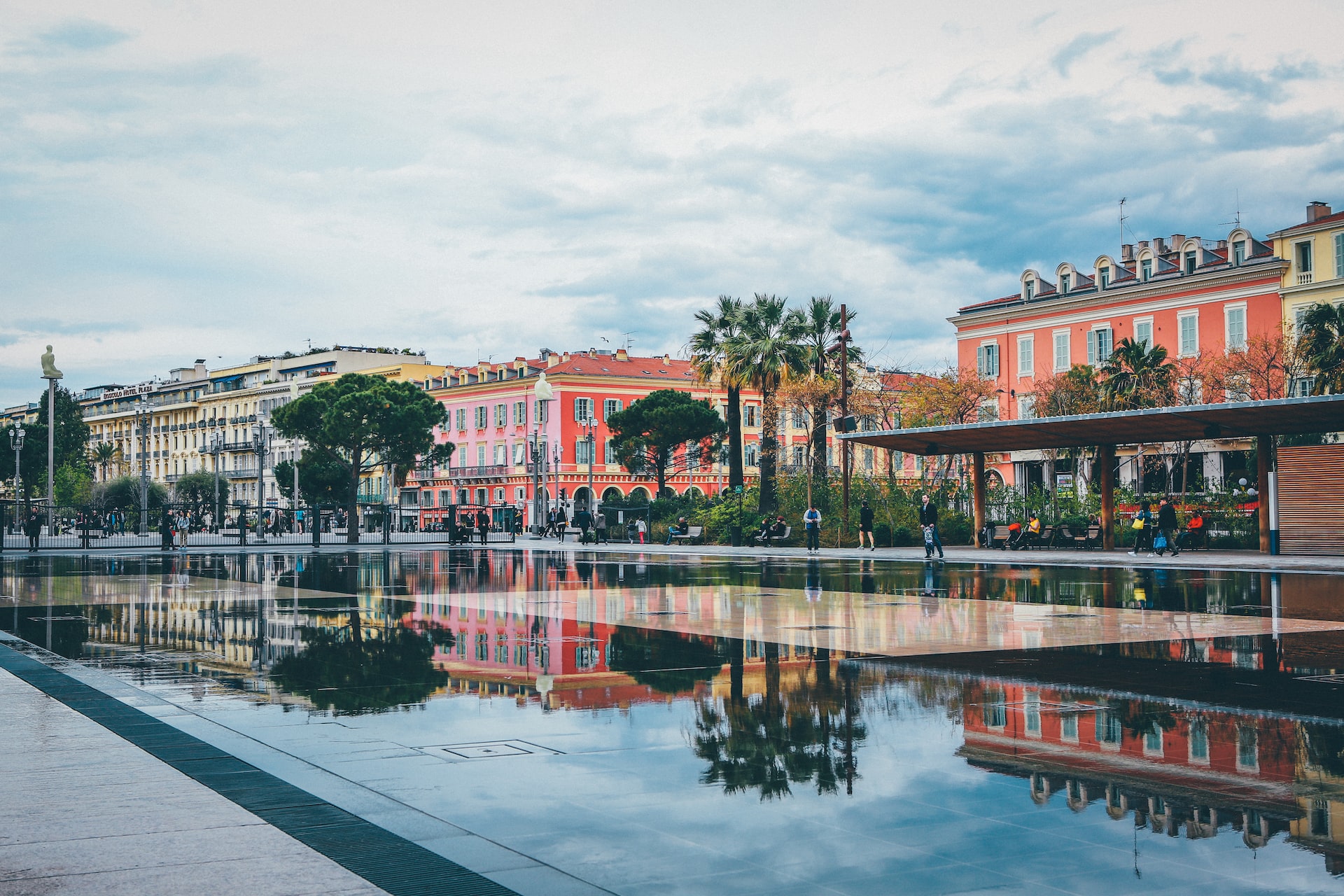
Nice is one of the busiest cities in the South of France. It is a tourist hotspot, with its old town, pristine beaches, and series of gorgeous cafes. One of the most popular spots in Nice is the Promenade des Anglais, where you can take a relaxing stroll along the seaside. You wouldn’t want to miss Nice if you are traveling to the French Riviera!
What to do : Stroll along the Promenade des Anglais, see historical museums and cathedrals, walk by the fancy Place Massena, and go sightseeing in Colline du Château.
Saint Tropez
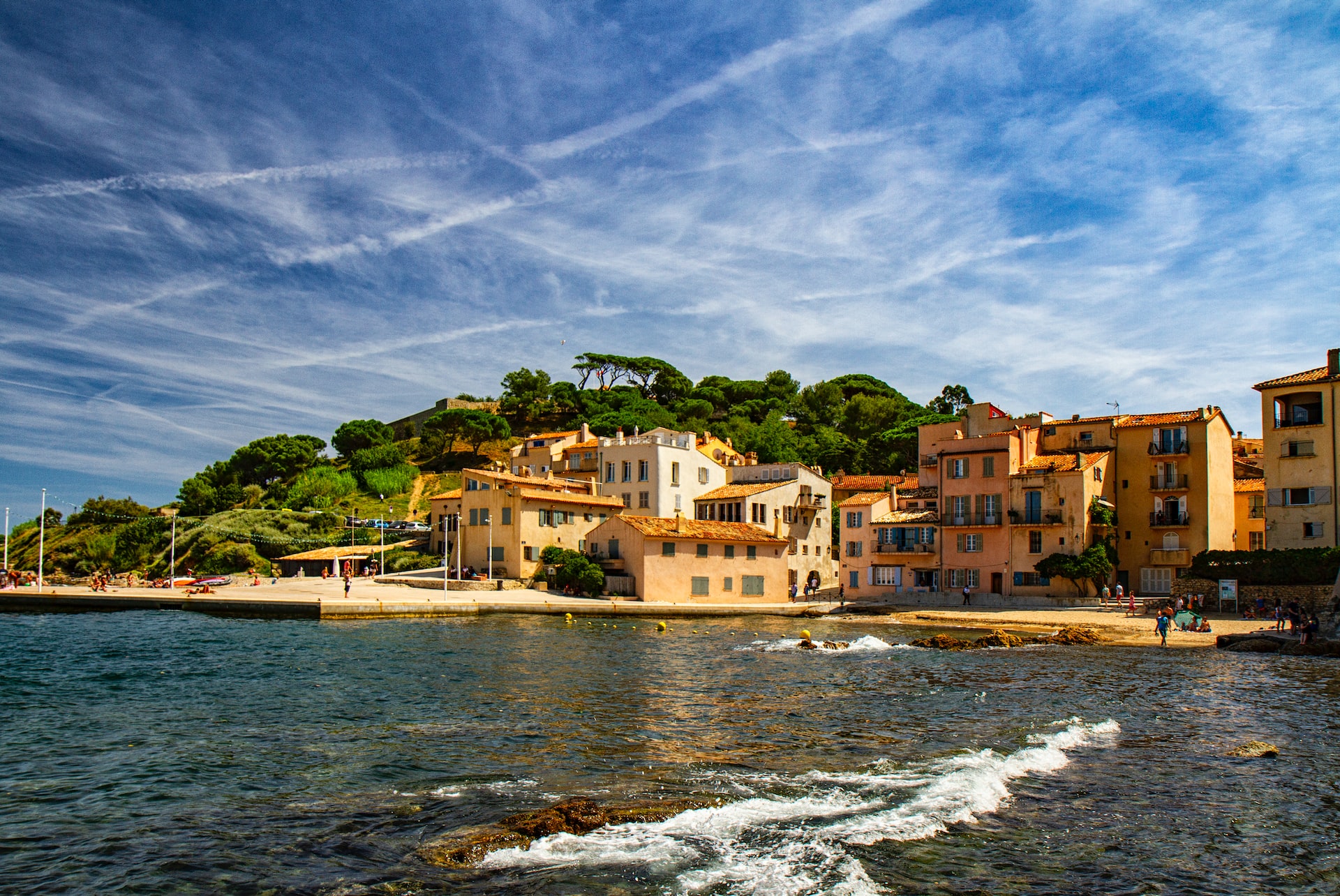
Looking for some lavish vacation ideas? Visit Saint Tropez! This small city is a hotspot for exquisite beach clubs, marvelous yachts, and luxurious resorts. Saint Tropez is also popular among celebrities for its fancy experiences and gorgeous beaches.
The good news is you can be both boujee and simple in this city. You can either drink a glass of fine wine in fancy restaurants or stroll around markets for great French dishes in Saint Tropez.
What to do: Watch awesome yachts and grab some food on the Saint Tropez harbor, visit the legendary Musée de la Gendarmerie et du Cinéma, go to museums, and experience the old French Riviera in Port Grimaud.
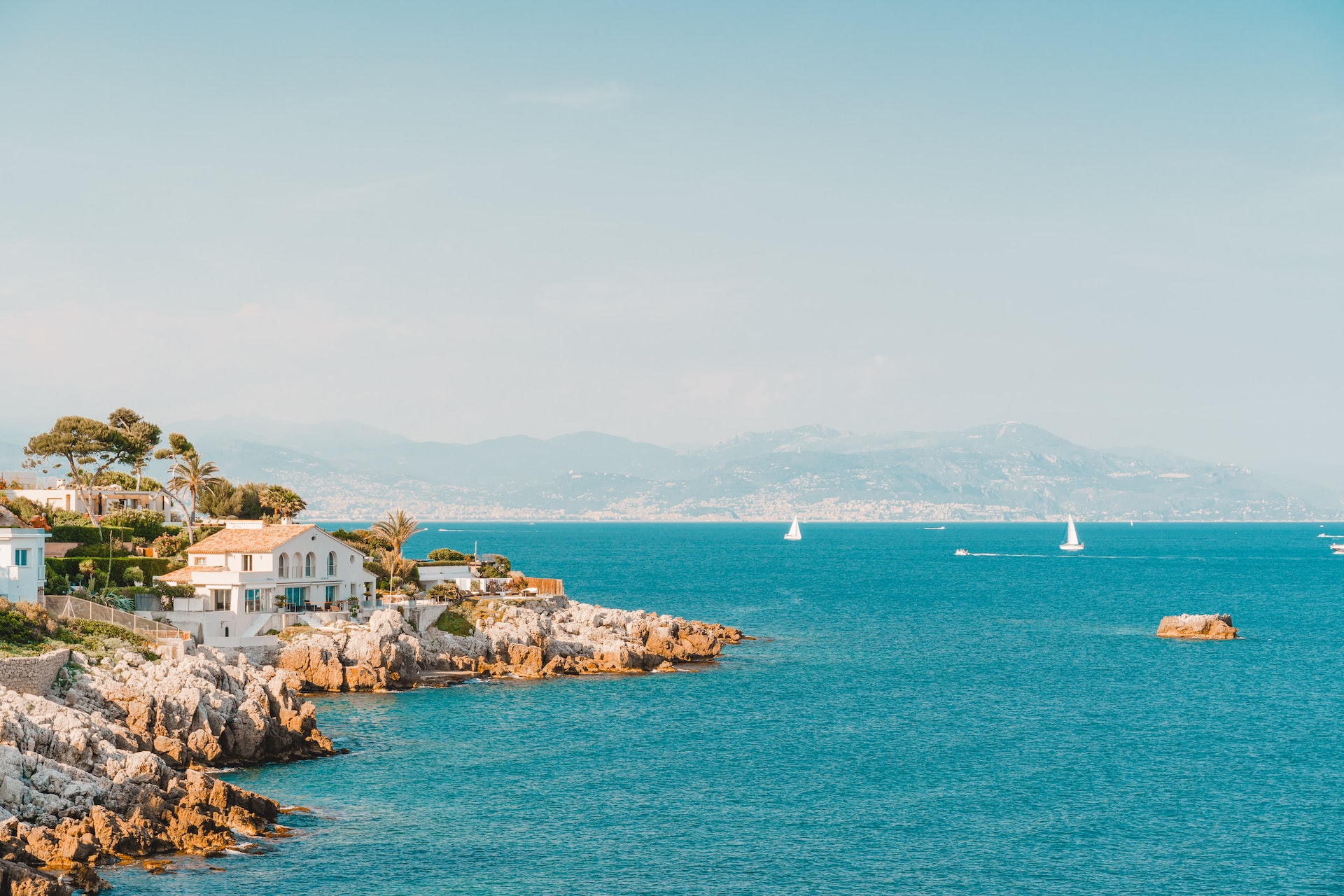
Are you into historical destinations? If the answer is yes, you should check out Antibes. This small port town is home to ancient buildings, walls, and museums. Legend also says that the great painter Picasso spent a lot of time in this city. The large house that once belonged to Picasso is now transformed into a museum. The beautiful collaboration of history, nature, and culture in Antibes will leave you in awe.
What to see: Visit the infamous Picasso Museum, grab a glass of local wine in Château Barbeyrolles vineyard, stroll around the old port of Le Nomade, and see Garoupe Lighthouse.
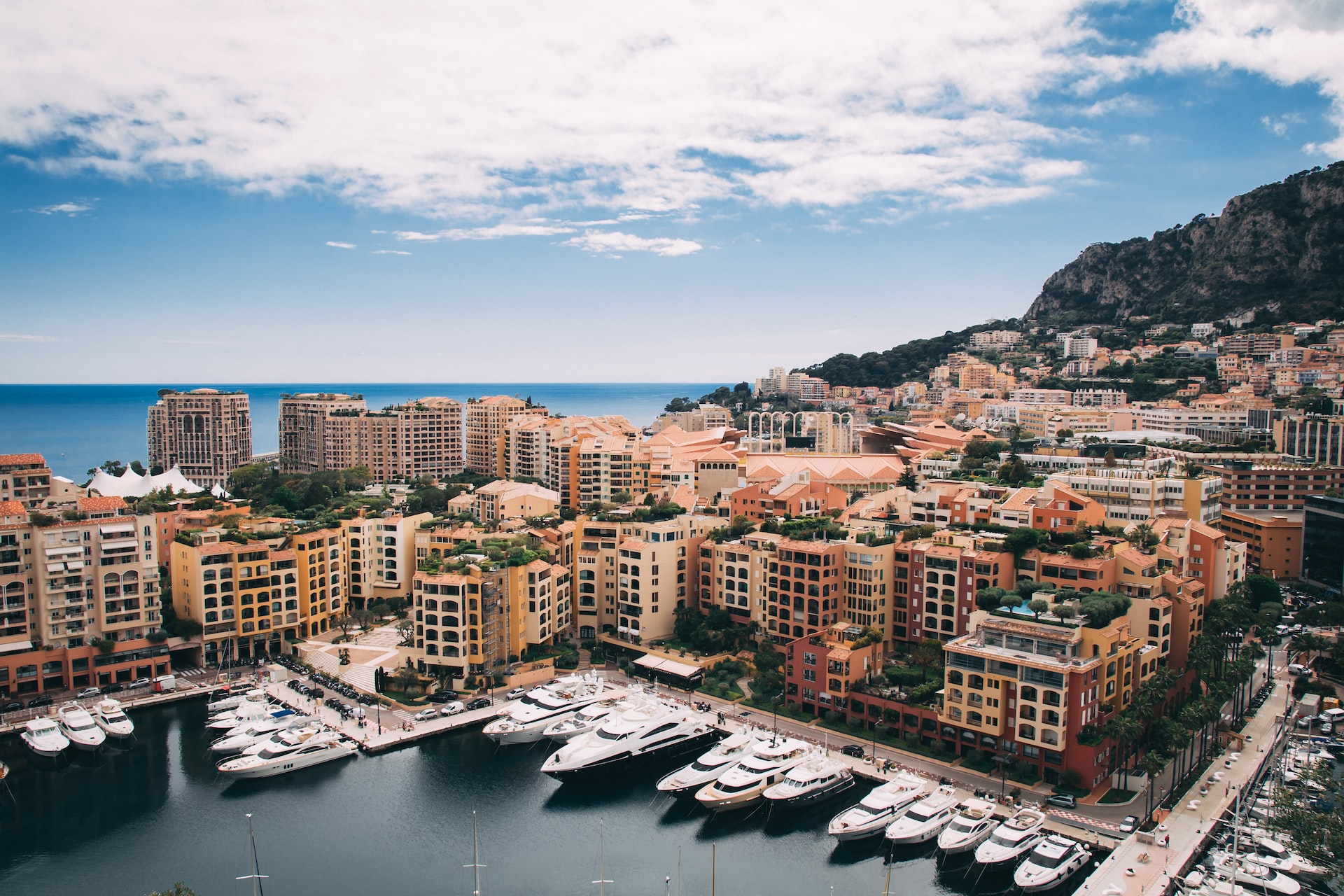
The small city stands between towering hills and gorgeous limestone cliffs, offering an extravagant view of the Mediterranean Sea. Monaco is an independent city-state that is located on the southern coast of France. Monaco is the haven of fancy stores, luxurious restaurants, and the notable Monte Carlo casino.
What to do: See the legendary Oceanographic and Marine Museum, visit Monte Carlo, stroll around the beautiful Princess Grace Rose Garden, and chill on the Larvotto Beach.
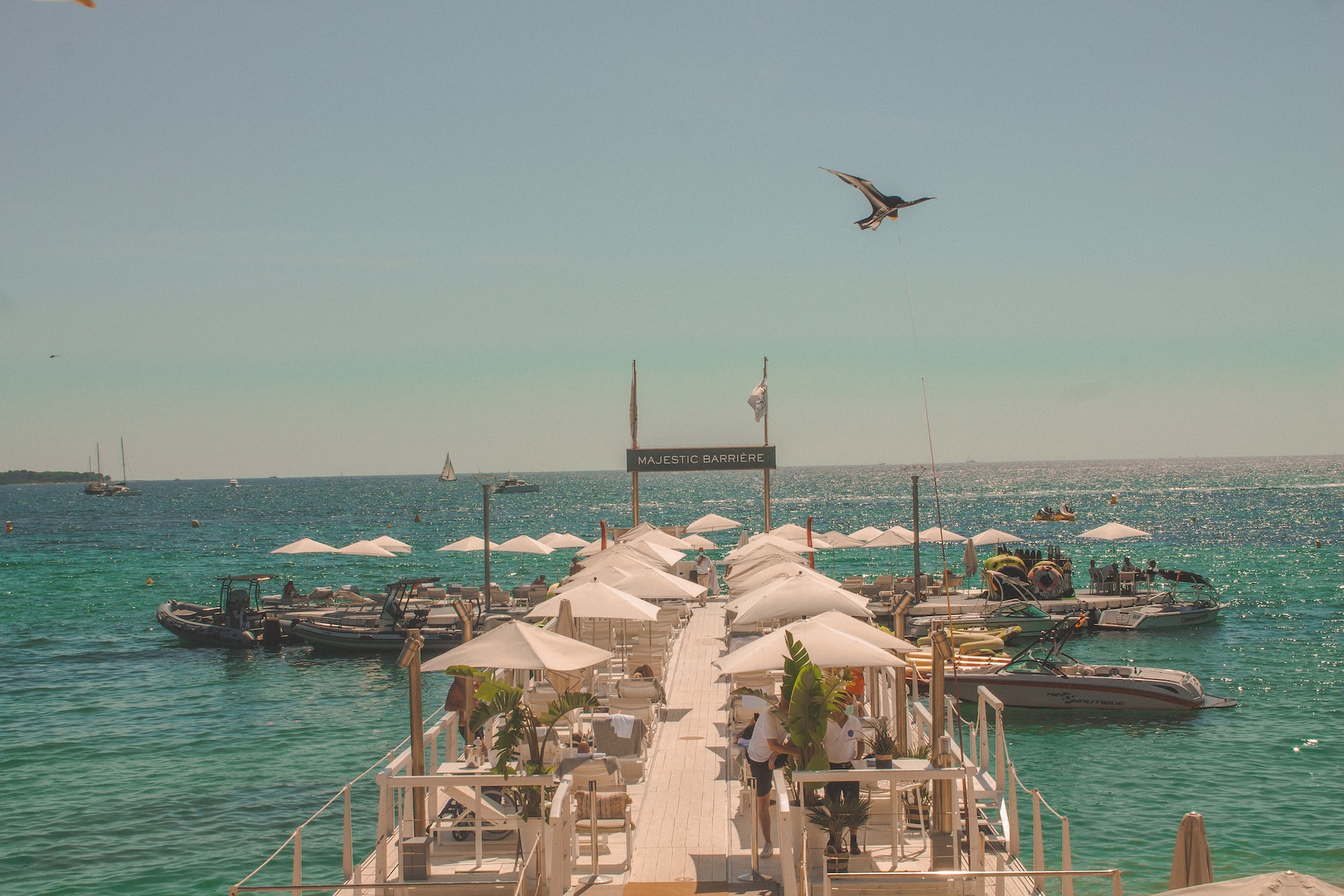
Does this city sound familiar to you? Yeah, this is the venue of the infamous Cannes Film Festival, an annual international event. Besides echoing fame from the festival, Cannes itself is a pretty city. You can see classic buildings and laidback stores standing by the blue sea, along with luxury resorts and high-end restaurants.
What to do: visit the main venue of the Cannes Film Festival, stroll around the glamorous La Croisette, get some French treats in Marche Forville, and sail to the nearby Lérins Islands.
Gorges du Verdon
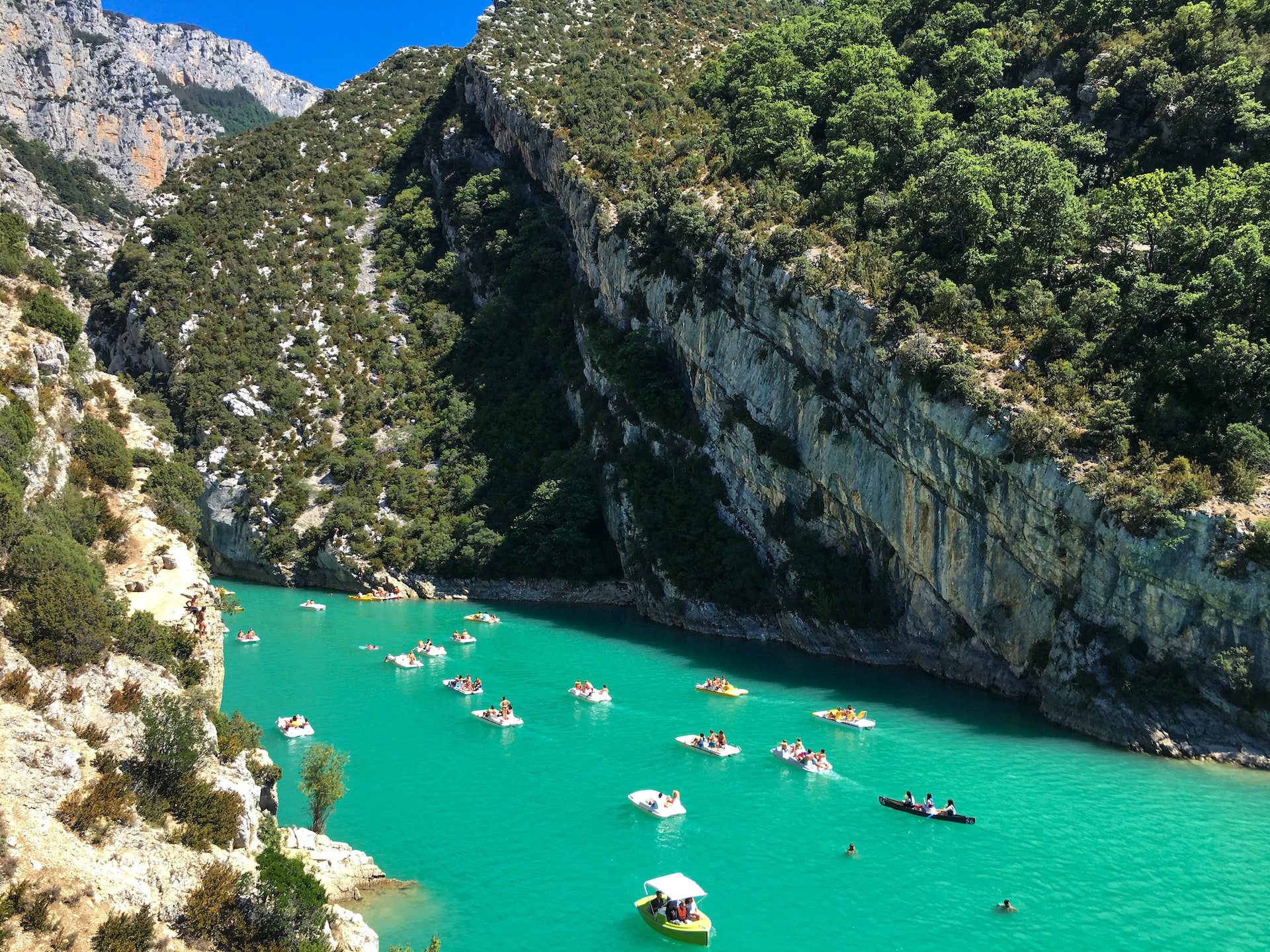
Looking for a mesmerizing natural landmark in the South of France? Check out Gorges du Verdon! You will be marveling at its glimmering turquoise waters and sand-colored canyons. Gorges du Verdon is a river canyon in Alpes-du-Haute-Provence, stretching about 116km from Marseille. This one is for outdoor fans, as it has plenty of adventurous attractions !
What to see : Go bungee jumping from Artuby bridge, raft in the main river of Gorges du Verdon, paddleboard in the nearby Lake Castillon, and hike through the river canyon.
Must Try Foods
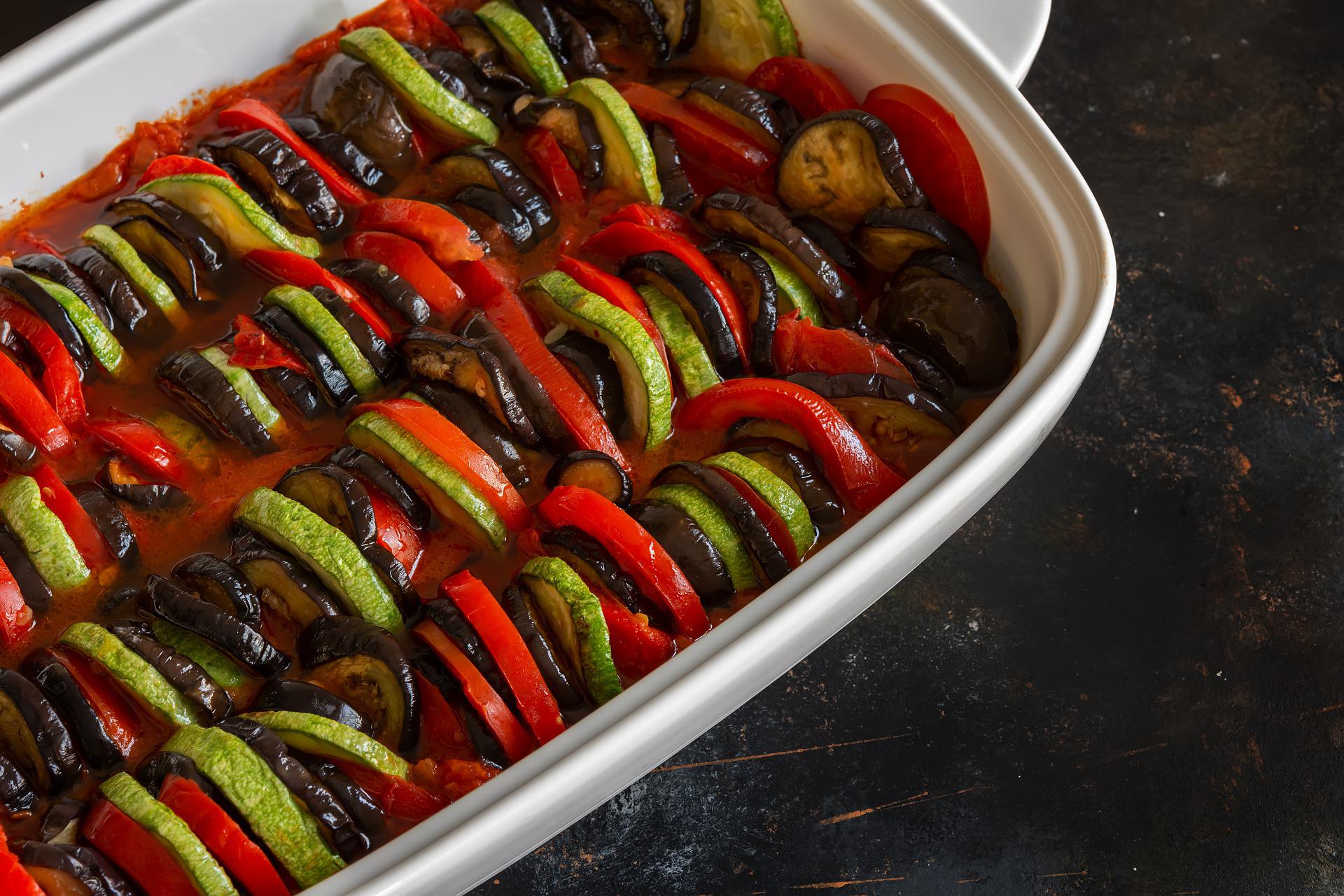
You can’t miss culinary experiences on French Riviera! This southern France region offers the perfect collaboration between the Mediterranean, Provençal, and Italian flavors, presenting a set of mouthwatering cuisines to the table. Here are some of the classics and the best food you should try during your visit to the French Riviera!
Bouillabaisse
This heartful stew is a legendary cuisine of the South of France region. Bouillabaisse is a seafood stew made out of fish stock with orange soup color. The dish has a humble history, in which fishermen boiled unsold fish into a soup. Who has ever thought that simple action can bring a legend to the South of France’s cuisines?
Ratatouille
You might think of Disney’s well-known movie when hearing this dish name, but it is indeed a French classic. Ratatouille is a rich vegetable stew with garlic, herbs, and indulgent olive oil. The dish is both tasty and nutritious, making it one of the region’s favorite dishes.
Pissaladiere
This dish is a classic pizza-like South of France tart. Pissaladiere’s base is an onion tart topped with caramelized onion, anchovies, and olives. You can find Pissaladiere in restaurants or street vendors. If you are thinking about hunting South of France street food, you can search for Pissaladiere.
Aïoli Garni
If you love veggies, this one is for you! Aïoli Garni is a platter of boiled vegetables, boiled eggs, and salted cod served with delicious aïoli sauce. The sauce itself comes from Mediterranean culture and is made from olive oil and garlic. You can share this delightful dish with your travel buddies !
You should grab some socca if you visit Nice! The thin chickpea pancake is the signature of Nice city. Socca has a rich, nutty, and salty flavor as it is made from a mixture of chickpea and olive oil. The dish is great for snacks or appetizers.
Getting Around
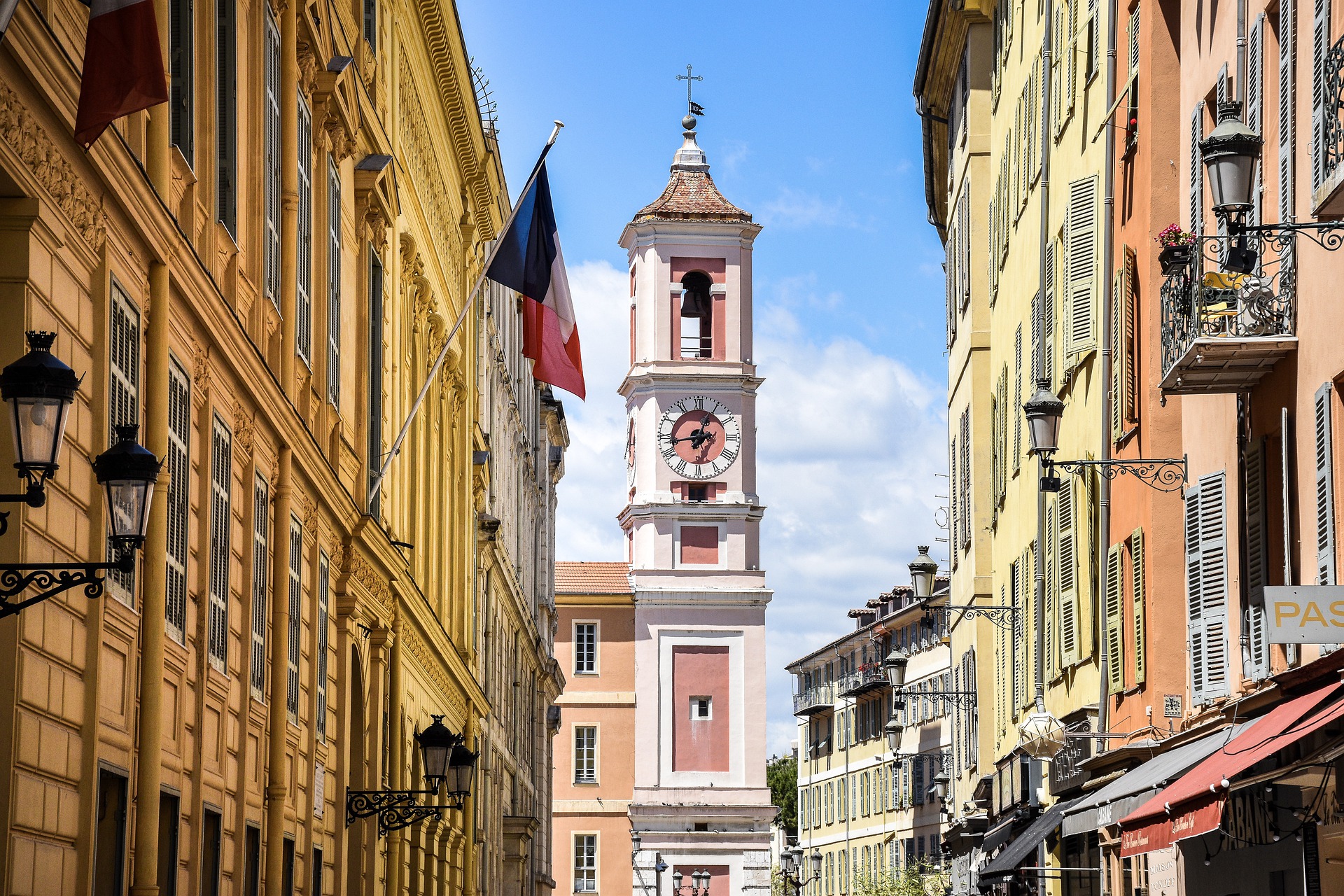
The cities on French Riviera are perfect for relaxing strolls. Cities like Nice, Monaco, and Cannes are relatively small, so it is convenient for you to walk around and explore the city. You can spend a day strolling around the cities and visiting some landmarks or shops. Cycling is also a great choice to explore the city and visit some near-distanced cities, such as Cannes to Antibes or Nice to Monaco.
Public transportation is a great choice to commute fastly and comfortably around the cities of the French Riviera. There is the Express Regional Trains (TER) network that is operated by a national company SNCF , which has several different lines that connect cities like Nice and Marseilles. You can also ride the High-Speed Train (TGV) network that stops by major cities in the South of France, such as Monaco, Cannes, and Nice.
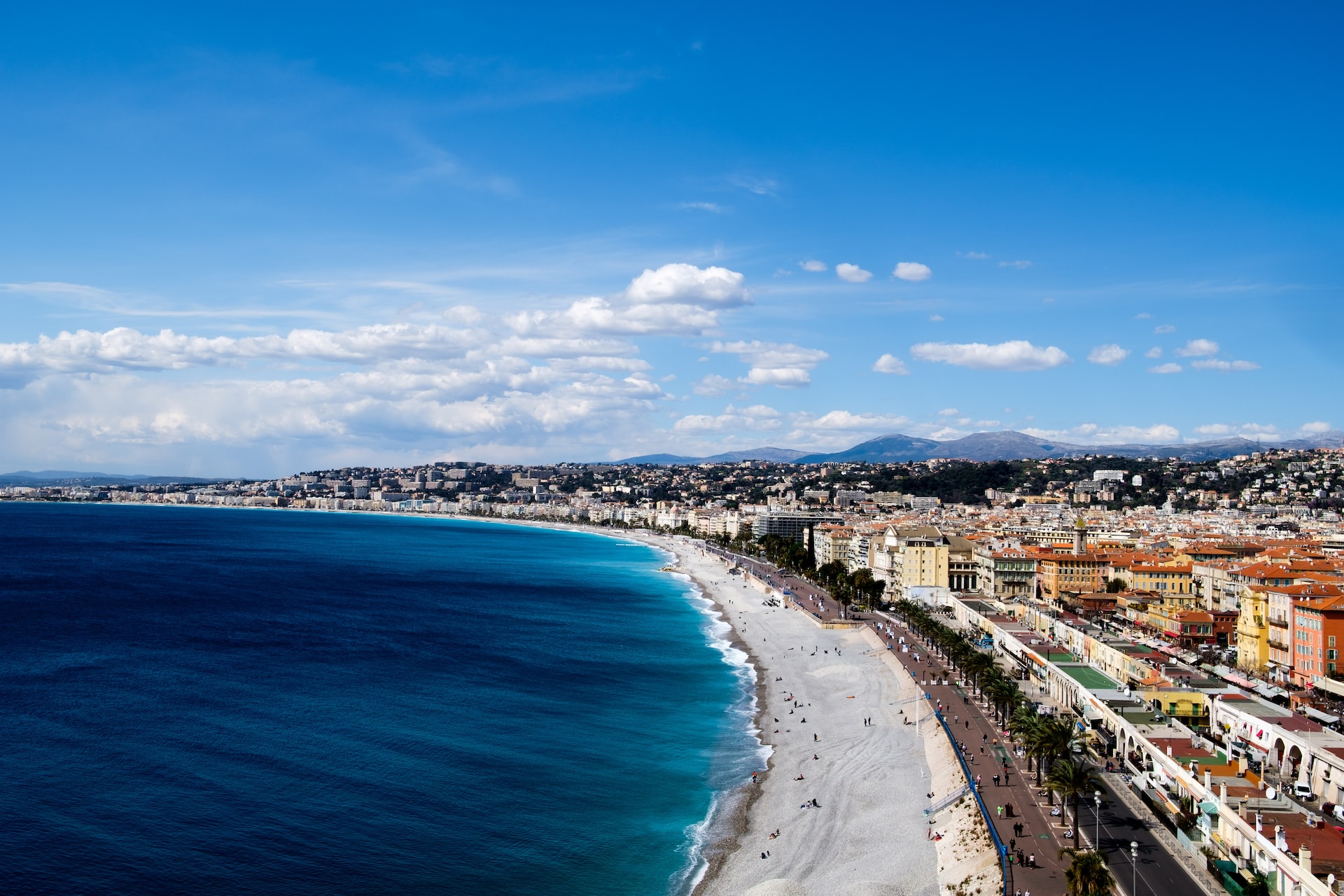
Standing on the Mediterranean coastline, the French Riviera offers all-year-round sunshine and pleasant weather. The region has a temperate climate, meaning that it has relatively mild temperatures throughout the year. You can expect warmer temperatures even during fall, reaching no lower than 55oC (13oF). This southern region of France has four seasons, which are the mild spring, sizzling summer, windy fall, and rarely freezing winter.
- Spring: Expect pleasant spring weather with occasional rainfalls from March to June. The temperatures are usually ranging from 16oC to 24oC (60-75 F). Spring occurs from March to mid-June.
- Summer : Blazing sun and hotter temperatures are what you can expect during summer on French Riviera. The temperatures can reach 29 C (84.2 F) on a sunny day. Summer occurs in June-August .
- Fall: The weather is usually chilly during the fall. You can also expect rainfalls in late October, bringing cooler winds. The temperatures range around 15.5C (60F) on regular days. Fall occurs from September to mid-November .
- Winter: Cool winds and no freezing temperatures describe the winter in French Riviera. Generally, there are no snowfalls in the main cities, but you can expect cold temperatures from the snowy Alps of the region. The temperatures are usually hovering around 14-15C (57-59F) on a sunny day. Winter occurs from November to February .
Best Time to Visit

French Riviera offers 300 days of sunshine, all-year-round mild weather, and timeless attractions, so there is no bad time to visit French Riviera. You can expect blooming lavenders and poppies during spring, an enjoyable time on the beach in summer, fine wines in fall, and feisty Christmas markets during winter.
However, if you are looking for cheaper prices and fewer crowds, you should avoid the high season which usually occurs in summer. Lots of travelers fly to the sunny region in summer to get their lavish getaway. You would also want to avoid late October or November, as fall transitions to the winter. It means cooler temperatures and rainfalls.
One of the best times to visit the French Riviera is in spring. You can expect blooming flowers, lively festivals, and pleasant weather during spring. It is also the time of world-class festivals, like the Cannes Film Festival and the Monaco Grand Prix. You might want to check them out!
It is also recommended to visit in early fall. You can witness the gorgeous view of orange and red leaves covering the cities of Southern France. The weather in early fall is also great, with mild temperatures and cool winds.
How to Get There
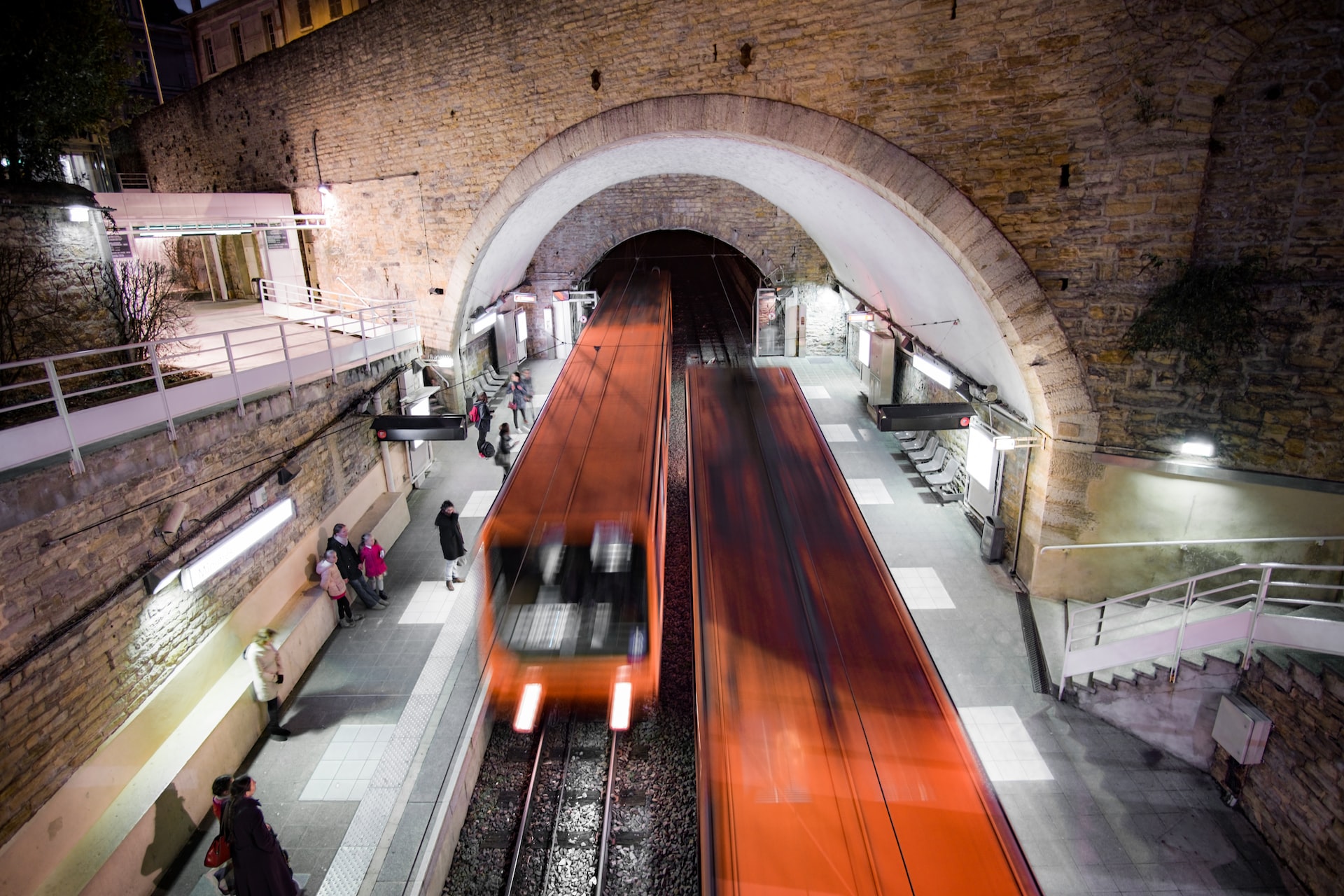
Getting to the South of France is quite a piece of cake as it is a popular tourist destination. There are currently three main alternatives to reaching the South of France.
- Flights: The Nice International Airport is the second busiest airport in France, offering direct international flights from Europe , the UK, and the US. One of the major airlines that have regular flights from European countries is AirFrance. You can also check on Delta Airlines for direct flights from the US.
- Train: Getting on a train is an efficient and affordable way to reach the Mediterranean region. Currently, there is a high-speed train railway operating from Paris and other prominent cities in Europe. You can check out the TGV High-Speed Rail to get to French Riviera. Stop at either Nice or Monaco Station. Domestic route tickets cost around €10-20 .
- Drive: Feeling like going on a road trip? Try driving to French Riviera! The region stretches about 950km from Paris, requiring 8 hours of drive. You can drive through A8 Motorway from Paris to the French Riviera.
Travel Requirements and Restrictions
There are currently no travel restrictions for post-COVID-19 travel to all regions in France. You don’t need COVID certificates or COVID test results to enter France, as the regulation was removed on August 1st, 2022. Mask is no longer required for citizens and travelers in public places and transportation, but you are recommended to wear a mask in enclosed facilities. Get more information about France’s travel restrictions here .
Traveling to France requires a Schengen visa, which allows you to enter the country and other Schengen member countries. The visa is valid for up to 90 days. You can check the requirements of the visa and apply for it here.
South of France is waiting for your visit! You can pack your bags and fly to the South of France for a short, sunny getaway or a long, relaxing vacation. You can also travel around South of France and other sunny countries with JoinMyTrip . With JoinMyTrip, you are not just traveling, but also getting awesome TripMates and unforgettable experiences from the trip!
Welcome to JoinMyTrip
At JoinMyTrip, we bring together travelers from around the world.
Find your next small group travel adventure to unique destinations with JoinMyTrip.

Newest Blogs
- Best Places to Visit in Europe for Group Travel (2024 Edition)
- Which Group Tour Operators: Evaneos vs Journaway vs Tourlane vs JoinMyTrip
- Places and Countries Like Italy: 7 Affordable Destinations
- Which Solo Travel Adventures to Choose: 4 Tours Comparison
- London Secret Restaurants: 8 Foodie Hidden Gems
Meet the Writers
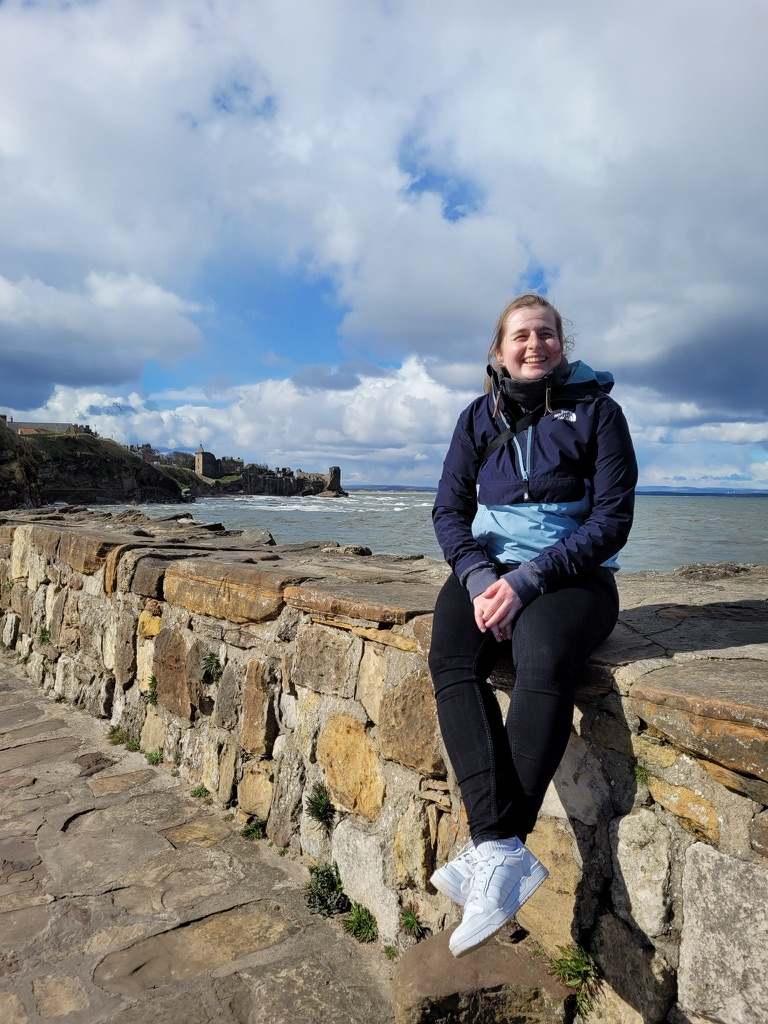
- Central America
- Destinations
- Digital Nomads
- Group Travel
- Hidden Gems
- New Zealand
- Scandinavia
- Solo Travel
- South America
- Tips for Beginners
- Travel Bucket Lists
- Travel Buddies
- Travel Guides
- Travel Tips
- TripLeader Stories
- Uncategorized

Promotions apply when you purchase
These promotions will be applied to this item:
Some promotions may be combined; others are not eligible to be combined with other offers. For details, please see the Terms & Conditions associated with these promotions.
Buy for others
Buying and sending ebooks to others.
- Select quantity
- Buy and send eBooks
- Recipients can read on any device
These ebooks can only be redeemed by recipients in the US. Redemption links and eBooks cannot be resold.

Download the free Kindle app and start reading Kindle books instantly on your smartphone, tablet, or computer - no Kindle device required .
Read instantly on your browser with Kindle for Web.
Using your mobile phone camera - scan the code below and download the Kindle app.

Image Unavailable

- To view this video download Flash Player
Provence Travel Guide 2024: Exploring the Timeless Charm and Treasures of Southern France Kindle Edition
- Print length 111 pages
- Language English
- Sticky notes On Kindle Scribe
- Publication date June 19, 2024
- File size 3722 KB
- Page Flip Enabled
- Word Wise Enabled
- Enhanced typesetting Enabled
- See all details
Customers who viewed this item also viewed

Product details
- ASIN : B0D7ML6Q4S
- Publication date : June 19, 2024
- Language : English
- File size : 3722 KB
- Simultaneous device usage : Unlimited
- Text-to-Speech : Enabled
- Screen Reader : Supported
- Enhanced typesetting : Enabled
- X-Ray : Not Enabled
- Word Wise : Enabled
- Sticky notes : On Kindle Scribe
- Print length : 111 pages
Customer reviews
Our goal is to make sure every review is trustworthy and useful. That's why we use both technology and human investigators to block fake reviews before customers ever see them. Learn more
We block Amazon accounts that violate our community guidelines. We also block sellers who buy reviews and take legal actions against parties who provide these reviews. Learn how to report
No customer reviews
Report an issue.
- Amazon Newsletter
- About Amazon
- Accessibility
- Sustainability
- Press Center
- Investor Relations
- Amazon Devices
- Amazon Science
- Sell on Amazon
- Sell apps on Amazon
- Supply to Amazon
- Protect & Build Your Brand
- Become an Affiliate
- Become a Delivery Driver
- Start a Package Delivery Business
- Advertise Your Products
- Self-Publish with Us
- Become an Amazon Hub Partner
- › See More Ways to Make Money
- Amazon Visa
- Amazon Store Card
- Amazon Secured Card
- Amazon Business Card
- Shop with Points
- Credit Card Marketplace
- Reload Your Balance
- Amazon Currency Converter
- Your Account
- Your Orders
- Shipping Rates & Policies
- Amazon Prime
- Returns & Replacements
- Manage Your Content and Devices
- Recalls and Product Safety Alerts
- Conditions of Use
- Privacy Notice
- Consumer Health Data Privacy Disclosure
- Your Ads Privacy Choices
UEFA EURO 2024 fixtures and results: When and where are the matches?
Monday, June 24, 2024
Article summary
UEFA EURO 2024 kicked off on Friday 14 June and ends with the final in Berlin on Sunday 14 July. See dates, venues and schedule.
Article top media content

Article body
Check out the full UEFA EURO 2024 final tournament schedule below. All kick-off times are CEST.
When are the EURO 2024 matches?
Group stage.
14 Jun e Group A : Germany 5-1 Scotland ( Munich )
15 June A : Hungary 1-3 Switzerland ( Cologne ) B : Spain 3-0 Croatia ( Berlin ) B : Italy 2-1 Albania ( Dortmund )
16 June D : Poland 1-2 Netherlands ( Hamburg ) C : Slovenia 1-1 Denmark ( Stuttgart ) C : Serbia 0-1 England ( Gelsenkirchen )
17 June E : Romania 3-0 Ukraine ( Munich ) E : Belgium 0-1 Slovakia ( Frankfurt ) D : Austria 0-1 France ( Düsseldorf )
18 June F : Türkiye 3-1 Georgia ( Dortmund) F : Portugal 2-1 Czechia ( Leipzig )
19 June B : Croatia 2-2 Albania ( Hamburg ) A : Germany 2-0 Hungary ( Stuttgart ) A : Scotland 1-1 Switzerland ( Cologne )
20 June C : Slovenia 1-1 Serbia ( Munich ) C : Denmark 1-1 England ( Frankfurt ) B : Spain 1-0 Italy ( Gelsenkirchen )
21 June E : Slovakia 1-2 Ukraine ( Düsseldorf ) D : Poland 1-3 Austria ( Berlin ) D : Netherlands 0-0 France ( Leipzig )
22 June F : Georgia 1-1 Czechia ( Hamburg ) F : Türkiye 0-3 Portugal ( Dortmund ) E : Belgium 2-0 Romania ( Cologne )
Did you know...?
As part of UEFA's commitment to making EURO 2024 a reference event for sustainability in sport, venues and matches have been organised in regionalised clusters. This reduces the number of flights taken by teams by 75% compared to EURO 2016, as well as ensuring easier, sustainable transport between matches for supporters.
23 June A : Switzerland 1-1 Germany ( Frankfurt ) A : Scotland 0-1 Hungary ( Stuttgart )
24 June B : Croatia vs Italy ( Leipzig , 21:00) B : Albania vs Spain ( Düsseldorf , 21:00)
25 June D : Netherlands vs Austria ( Berlin , 18:00) D : France vs Poland ( Dortmund , 18:00) C : England vs Slovenia ( Cologne , 21:00) C : Denmark vs Serbia ( Munich , 21:00)
26 June E : Slovakia vs Romania ( Frankfurt , 18:00) E : Ukraine vs Belgium ( Stuttgart , 18:00) F : Czechia vs Türkiye ( Hamburg , 21:00) F : Georgia vs Portugal ( Gelsenkirchen , 21:00)
Rest days on 27 and 28 June
When does the EURO 2024 round of 16 start?
29 June 38 Switzerland vs 2B ( Berlin , 18:00) 37 Germany vs 2C ( Dortmund , 21:00)
30 June 40 1C vs 3D/E/F ( Gelsenkirchen , 18:00) 39 Spain vs 3A/D/E/F ( Cologne , 21:00)
1 July 42 2D vs 2E ( Düsseldorf , 18:00) 41 Portugal vs 3A/B/C ( Frankfurt , 21:00)
2 July 43 1E vs 3A/B/C/D ( Munich , 18:00) 44 1D vs 2F ( Leipzig , 21:00)
Rest days on 3 and 4 July
When do the EURO 2024 quarter-finals start?
5 July 45 W39 vs W37 ( Stuttgart , 18:00) 46 W41 vs W42 ( Hamburg , 21:00)
6 July 48 W40 vs W38 ( Düsseldorf , 18:00) 47 W43 vs W44 ( Berlin , 21:00)
Rest days on 7 and 8 July
When do the EURO 2024 semi-finals start?
9 July 49 W45 vs W46 ( Munich , 21:00)
10 July 50 W47 vs W48 ( Dortmund , 21:00)
Rest days on 11, 12 and 13 July
When is the EURO 2024 final?
14 July W49 vs W50 ( Berlin , 21:00)
Sign up for a free MyUEFA account to watch live streams and on-demand content, play games and challenge your friends, win money-can’t-buy prizes, and apply for tickets to Europe’s biggest games .
Selected for you

EURO 2024: Host cities

EURO 2024 fixtures by team

Your in-depth guide to EURO

EURO 2024 fixtures by venue

IMAGES
VIDEO
COMMENTS
Just outside the tourist-trodden center of Gordes lies Abbaye Notre-Dame de Sénanque, a photogenic monastery founded in 1148 by Cistercians monks. Guided tours of the church and cloisters are ...
Planning a south of France itinerary is one of the highlights of visiting this incredible country. France is one of the most popular tourist destinations in Europe and, although many visitors will stay in Paris, plenty head down to spend 7 to 10 days in the south of France to soak up the sun on the pristine beaches, visit the stunning mountain ranges or learn about French culture on a city break.
Summary of the Ultimate South of France Itinerary in 7 Days. For a quick reference guide, here is a breakdown of where to go during a South of France road trip! Days 1-2: Avignon & Chateaunuef-du-Pape. Day 3: Drive the Villages of the Luberon to Aix-en-Provence. Day 4: Aix-en-Provence and Cassis.
The bulk of this recommended south of France itinerary takes place in what is colloquially known as Provence (the southern and western part of the region). The d estinations mentioned toward the end of the trip like Nice, Cannes, and Saint-Paul-de-Vence are located along the Côte d'Azur-aka the French Riviera-in the eastern part of the ...
Costs of Traveling in France. Travel on a budget in France, from $340 − $670 USD weekly per person, mid-range $980 − $2160 USD, and high-end from $2070 − $3140 USD. However, costs depend on factors like accommodation, transportation, and activities. We did not include flights. Check flight prices here.
Day 3: Take a day trip to Arles. Day 4: Visit Saint Remy de Provence. Day 5: Spend a day in the magical Saint-Maries-Des-La-Mer. Day 6: Board on a train to Marseille & explore the city. Day 7: Day trip to Aix-en-Provence. Day 8: Board a train to Nice & explore the town. Day 9: Explore Èze on a day trip.
Suggested route: Toulouse - Narbonne - Arles - Camargue - Aix-en-Provence - Cassis - Cannes - Nice. Total distance: 751 Km, 8.5 hours drive in total. Region covered: Occitanie and Provence-Alpes-Côte d'Azur. Best for: history, sightseeing, nature, small towns, food & wine. This South of France road trip itinerary starts from ...
Table of Contents. South of France Road Trip Itinerary. Day 1 - Avignon. Avignon at dusk. Avignon, my suggested starting point for this south of France vacation, is one of the best cities in France to visit. It's best known as the City of Popes - six Popes presided from there in the 13 th and 14 th centuries.
The Camargue. 20. Plage de l'Espiguette. Map of Places to Visit in the South of France. 1. French Riviera Seaside Resorts. Beach in Cannes. The sunny weather, mesmerizing deep-blue sea, and leafy palm trees give the French Riviera a dreamy quality. Also known as the "Côte d'Azur," the French Riviera delivers fabulous beach holidays with a ...
Nice. As the biggest city on the French Riviera one of the most iconic beach cities in Europe, glamorous Nice is home to gorgeous markets, an incredible (and incredibly famous!) stretch of curving beach, tasty Nicoise salad, and an excellent location to use as a base for many of the incredible day trips in southern France.. Plenty of trips to the French Riviera start in Nice due to its large ...
Day 7 - Cassis and the Calanques. Stay: Aix-en-Provence. Cassis is a charming portside town tucked in between towering cliffs near Marseille on the Mediterranean coast. It's by far one of the more popular places to visit in the South of France due to its recent reputation as the new St Tropez.
This 10 day South of France itinerary took us through small towns and larger cities, to Roman ruins, lush vineyards, seaside retreats, and to all the local Provence markets we could possibly want. The first five days of the trip were done using Avignon as a base and traveling via public transportation. For the last five days of the trip, we ...
Here's a quick glance of what you'll see with 10 days in the south of France: Day 1: Explore Toulouse. Day 2: Day Trip to Carcassonne. Day 3: Day Trip To Albi and Cordes-sur-Ciel. Day 4: Drive to Arles, stop in Uzes and Pont du Gard on the way. Day 5: Explore Arles.
Dreaming of the South of France. It's time to plan your very own French fairy tale in magical le Midi. From the fragrant lavender fields of Provence and the beautiful beaches of the Côte d'Azur ...
Day 2: Head to Provence. From Paris you can catch a high-speed train to Avignon, where you can rent a car. I picked up a car in Avignon and returned it to Nice when the week was over. Avignon is the middle of Provence and makes a great starting point. I passed through the city but you can feel free to explore a little when you arrive.
Check out my guide visiting France for the first time, which includes information about customs, travel, and more, that will be very helpful when following this Southern France itinerary! 10 Day South of France Itinerary Overview. My Southern France itinerary is 10 days long, and it focuses on three main cities- Nice, Avignon, and Annecy.
Address: 66260 Saint Laurent de Cerdans t: +33 4 68 39 51 42. For full information about the best golf courses in the South of France, head to Where2Golf website to find the best spots in Aquitaine, Cote d'Azur and Corsica and South of France. So there you have it - our South of France travel guide. If you're now ready to book your very ...
Day 1 - Welcome to Provence. Your adventure in the South of France begins with the bustling city of Nice.. With an international airport connecting most big cities, Nice is the perfect getaway to the French Riviera or the Côte d'Azur and an excellent starting point for your road trip.. Whether you like exploring, shopping, relaxing or sampling delicious food, Nice has it all.
The coastal region is very busy in Summer, and travelling to the south of France by car on a summer Saturday can be a nightmare experience; but the region has masses to offer, in terms of climate, history, and landscape. The French Riviera ("la Côte d'Azur") is a small part of the south of France, the thin coastal strip from around Cassis ...
The square is the best place to begin a walking tour of this town with its feudal towers and creamy limestone mansions from the 1600s and 1700s. You can scale the 100 steps of the Royal Tower for the best view of the symbolic Tour Fenestrelle, the romanesque campanile of Uzès Cathedral. 9. Marseille.
Alex Lapuerta / Getty Images. Montpellier in Languedoc-Roussillon is the true Southern France lady. Its attraction lies in its many inviting squares and their sidewalk cafes. This is a gem of the south, sitting at the border of Provence and the less popular Languedoc region. It's been a great trading port for a thousand years and was an important university town in the 1500s.
Here is your essential South of France travel guide to get the best from this marvelous region! Must Visit Destinations. South of France has tons of gorgeous destinations to visit. You can find white-sanded beaches, dreamy seaside esplanades, chic stores, ancient ruins, to mesmerizing natural landmarks. However, these cities are must-visit.
Following are day trip recommendations: • Direct train from Avignon to Nimes Pont du Gard (30-minutes). Visit Pont du Gard and then take a direct train to Nimes (Centre) station (15-minutes) and explore the center. • Direct train to Orange (30-minutes). • Drive to Uzès (1h).
Imagine strolling through fields of lavender, relishing the taste of world-class wines, and touring ancient Roman ruins—all while relaxing in the warm Mediterranean sun. Provence Travel Guide 2024 is your passport to an unforgettable journey through the heart of Southern France.
Marseille is a travel destination pulsating with life in the south of France. Marseille is the heart of the Bouches-du-Rhône department, and a the second-lar...
UEFA EURO 2024 kicked off on Friday 14 June and ends with the final in Berlin on Sunday 14 July. See dates, venues and schedule.